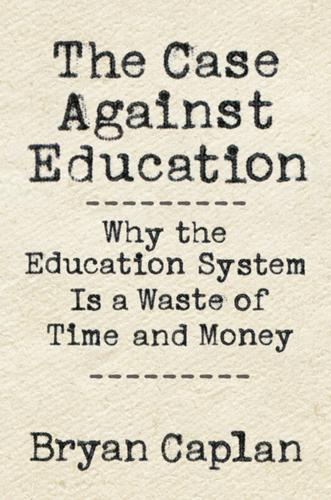
The Case Against Education: Why the Education System Is a Waste of Time and Money
by
Bryan Caplan
Published 16 Jan 2018
When you compare workers with equal incomes but unequal educations, education has no clear effect on job satisfaction.26 Some researchers actually find job satisfaction goes down as education goes up.27 One plausible reason: education raises expectations. College graduates are harder to please because they compare themselves to fellow college grads and feel entitled to a “good job.” But on balance, we should stick to the moderate position that—income aside—education has zero average effect on job satisfaction. Happiness. Better-educated people are, on average, happier.28 Does education really turn you into a happier person?
…
In one way, then, social returns are more straightforward than private returns. The byzantine tax code and patchwork welfare state are distractions from what counts: production.6 Job satisfaction, happiness, and the joy of learning. Though the better-educated have greater job satisfaction and happiness, the reason is largely material: the educated enjoy their jobs and lives more because they make more money, not because their careers feel more fulfilling.7 Does education have any independent impact on job satisfaction or happiness? While some researchers detect mild benefits, others discover that—money aside—the well-educated feel worse about their lives.
…
When average income and education rise, status attainment requires more income and education (Caplan 2014b). 10. Comparisons first regress job satisfaction (SATJOB) and happiness (HAPPY) on a constant, demographics, year, real personal income (log of CONRINC), and education. An extra year of education raises job satisfaction by .007 steps on a 4-point scale, and happiness by .015 steps on a 3-point scale. After adding CLASS to the explanatory variables, however, an extra year of education has .000 effect on job satisfaction, and raises happiness by only .005. 11. See, e.g., Sapolsky 2005, Tamashiro et al. 2005, and Blanchard et al. 1993, and broader discussions in Adler, Boyce, et al. 1994, pp. 20–21, and Smith 1999, pp. 163–65. 12.
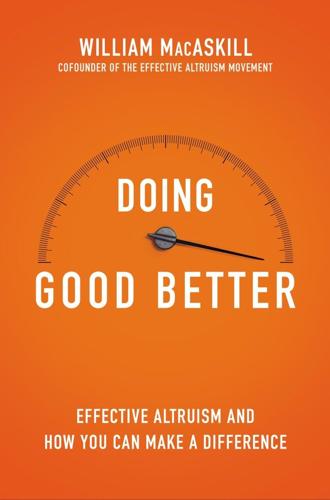
Doing Good Better: How Effective Altruism Can Help You Make a Difference
by
William MacAskill
Published 27 Jul 2015
which some psychologists have argued is the key to having genuinely satisfying experiences: Mihaly Csikszentmihalyi, Flow: The Psychology of Optimal Experience (New York: Harper & Row, 1990). There are other factors that also matter to your job satisfaction: See the information and references cited in “Predictors of Job Satisfaction,” 80,000 Hours, August 28, 2014, https://80000hours.org/career-guide/framework/job-satisfaction/job-satisfaction-research/#predictors-of-job-satisfaction. He traveled in India: See Walter Isaacson, Steve Jobs (New York: Simon & Schuster, 2011), 39–50. while Jobs and Wozniak were trying to sell circuit boards to hobbyists: Jeffrey S.
…
Personal fit Personal fit is about how good you’ll be in a particular job. An important part of this is whether you’ll be happy doing the work. People often want job satisfaction as an end in itself, but it’s also a crucial factor when thinking about impact: if you’re not happy at work, you’ll be less productive and more likely to burn out, resulting in less impact in the long-term. However, we need to be careful when thinking about how to find a job you’ll love. There’s a lot of feel-good misinformation out there, and the real route to job satisfaction is somewhat counterintuitive. On June 12, 2005, Steve Jobs stood in front of the graduating class at Stanford and gave them his advice on what they should do with their lives: You have to trust in something—your gut, destiny, life, karma, whatever—because believing that the dots will connect down the road will give you the confidence to follow your heart, even when it leads you off the well-worn path, and that will make all the difference.
…
If you focus only on what you’re currently passionate about, then you risk committing to projects that you soon find you’re no longer interested in. This takes us to our third point against passion, which is that the best predictors of job satisfaction are features of the job itself, rather than facts about personal passion. Instead of trying to figure out which career to pursue based on whatever you happen to be most interested in today, you should start by looking for work with certain important features. If you find that, passion will follow. Research shows that the most consistent predictor of job satisfaction is engaging work, which can be broken down into five factors (this is known in psychology as the job characteristics theory): Independence—To what extent do you have control over how you go about your work?
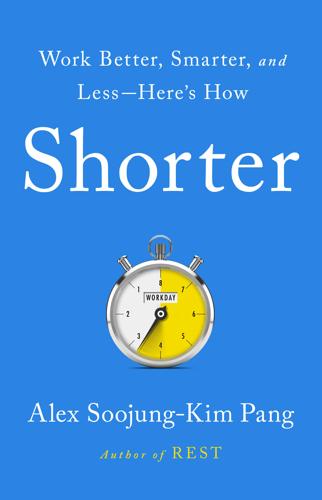
Shorter: Work Better, Smarter, and Less Here's How
by
Alex Soojung-Kim Pang
Published 10 Mar 2020
Giving people more control over the physical design of their workplaces increases their job satisfaction and productivity. In one experiment, researchers put people in one of three offices: a bare-bones minimalist office, an office that had been decorated for them with some plants and pictures, and an office that they could decorate themselves. They found that people who got to decorate their own offices felt better about their employers, said they were more physically comfortable, had higher rates of job satisfaction, and were more productive than the other groups. The presence of decor had a slight positive effect on productivity, but being able to decorate your space had an even bigger effect.
…
Could productivity gains and reports of increased happiness at companies that shorten their workweeks be examples of the Hawthorne effect and thus wear off soon? Fortunately, some of the companies that switched to four-day weeks have actually measured employee happiness and job satisfaction over time. When I visited Synergy Vision in London, managing director Eileen Gallagher had just compiled the results of their latest job satisfaction survey, which they had conducted throughout the company’s six-month trial with four-day weeks. As she pointed out to me, happiness levels started out high, then actually dipped in the second month as people struggled with the reality of figuring out how to make four-day weeks work (something you wouldn’t expect to see with the Hawthorne effect).
…
University of Auckland professor Jarrod Haar surveyed executives and employees before and after the trial. He found that team psychosocial capital and cohesion—both of which predict the ability of groups to work together productively, as well as job satisfaction and well-being—were higher after the four-day-week trial than before, as well as team creativity. Employees reported higher readiness to change, job satisfaction, and engagement, and improved capacity to achieve work-life balance—all of which further boosted workplace happiness. Shortening the workweek can also improve the lives and well-being of entrepreneurs. Entrepreneurship can present substantial mental health challenges.
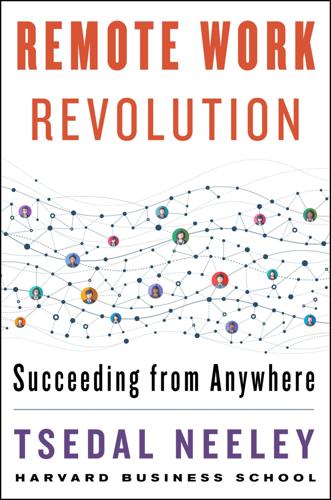
Remote Work Revolution: Succeeding From Anywhere
by
Tsedal Neeley
Published 14 Oct 2021
In successful teams, people learn and feel that other members care about their well-being or individual growth as a function of being on the team. Teamwork, therefore, offers opportunities for each person to expand their knowledge, acquire new skills, and be exposed to new perspectives. Even if these opportunities don’t have a direct effect on the team’s measurable results, individual growth often leads to increased job satisfaction that in turn enhances the team’s productivity. In the absence of this criterion, people can develop negative sentiments. Nearly everyone has at one time or another worked in a situation where they feel that they are not developing and that their emotions are unmet within the team; consequently, their engagement is likely to diminish.
…
These growing trends piqued the interest of management scholars who wanted to figure out whether the lived experience of remote workers was better or worse than that of their on-site colleagues. One study hypothesized that those who worked away from the office would show an increase in measures of productivity because they no longer had to endure the time and stress involved with commutes and that the convenient work arrangements would heighten people’s sense of job satisfaction, provided they had good relationships with their teammates. The study’s hypothesis proved correct. Remote workers loved their logistical conveniences. No more anxiety about getting to early morning meetings on time. No more staring at long traffic lights or dodging impatient drivers recklessly switching lanes in a traffic jam.
…
REMOTE WORKERS NEED AUTONOMY The hallmark of remote work success is the ability to self-direct and capitalize on the gift of managing your own work processes. Hackman’s insight on the importance of individual growth extends to remote workers’ need to choose where and how they work. In fact, a through line across decades of studies into remote work identifies autonomy as pivotal to job satisfaction and performance. By autonomy, I mean the ability to self-govern. In remote work, this translates to flexibility in the timing and location of work. With the exception of periods that call for coordinated efforts with teammates, having control over where, when, and how you work matters a great deal—and for good reason.
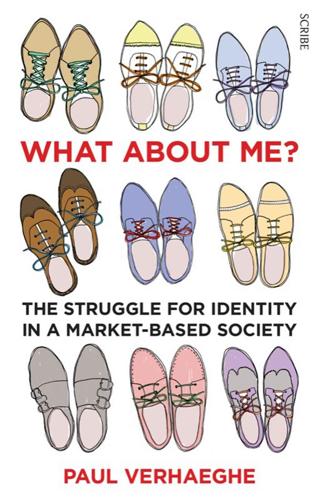
What About Me?: The Struggle for Identity in a Market-Based Society
by
Paul Verhaeghe
Published 26 Mar 2014
The success of the reform wasn’t just due to the fact that hard work ensured relatively rapid promotion and pay rises — because, from a certain level on, salary ceases to be an incentive.7 From a psychological perspective, academics mainly felt good because they finally had control over their own careers, being protected from nepotism, backroom deals, and other shady practices. This did wonders for their self-esteem, which in turn increased their motivation to work, along with their job satisfaction. On top of that, they identified with and felt loyal towards the organisation that made this possible. Within the span of a single generation, however, this situation changed dramatically, with the result that, nowadays, university staff, especially if they are young, feel that they have very little influence over their careers.
…
A meritocratic system is unquestionably beneficial at the outset. As the manager of her own life, the individual obtains more say over her work, and is paid better, too. Her loyalty to the enterprise for which she works and which is offering her these opportunities accordingly grows. Not only does her job satisfaction increase, but also her sense of responsibility, both towards her own work and towards the enterprise as a whole. She is part of it; it is her company, school, or hospital, and she’s happy to work a few extra hours when necessary. Morale improves, and morals are enhanced. Working for an enterprise like this is a pleasant experience.
…
Human-resources policy was rationalised, with individual and quantifiable merits gradually taking centre stage. Responsibility without power is a formula that is bound to create trouble, and that is exactly what has happened. Just about any psychological study of employee motivation shows the negative impact this has on commitment, motivation, and job satisfaction, as well as on the quality of the work done. In the pre-digital age, directors took policy decisions, and plans filtered down from headquarters to the various branches and departments. This process took months, and had the advantage of involving the lower echelons. Very often, modifications to plans were proposed further down, to tie in better with the reality of the work floor, usually without senior management even having to be consulted.
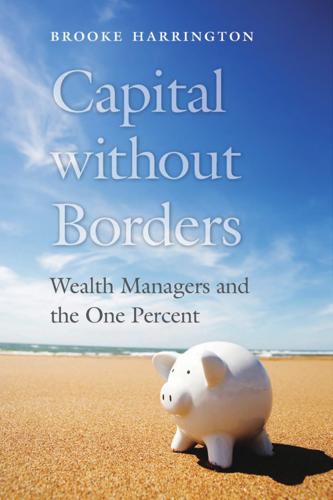
Capital Without Borders
by
Brooke Harrington
Published 11 Sep 2016
the answer is given as follows: “STEP members spend their professional lives working with families and tackling real problems.”101 For professionals whose counterparts in finance and law often spend more time engaging with papers than with people, being face-to-face and solving highly individualized problems (rather than routine or standardized ones) provide important sources of meaning and pleasure to daily work. Research on other occupational groups confirms that job satisfaction is linked to a strong sense of purpose, meaning, and engagement, net of salary levels.102 There are, of course, less noble motives for wealth managers’ job satisfaction. Bruce, the American working in Geneva, said that his primary source of job satisfaction was the “intellectual challenge of playing cat and mouse with tax authorities around the world.” The appeal of this kind of multidimensional international problem solving may be why the profession lures people from academia: of the sixty-five participants in the sample, three were former professors, in the fields of law, literature, and journalism.
…
Defining and defending the boundaries of their expertise, as described above, is a matter not just of capturing fees but of positioning within a hierarchy.76 This competition for rank is one way that professions establish themselves as a field of practice and contribute to “the institutional design of the social order.”77 To explore these dimensions of contemporary wealth management, this section will examine salaries, job satisfaction, and nonmonetary sources of compensation for practitioners. Prestige, pay, and positioning Among all the fields that have emerged in the modern division of labor, finance dominates in many ways, both through its transnational reach and through its command of payment and privilege.78 While salaries are always an important component of professional status, they are accorded particular importance within finance.79 By that measure, wealth management occupies an intermediate space in the field: not the lowest-paid, but nowhere near the high end.
…
Wealth management, while it is a part of the financial services industry, is nevertheless very different from the rest of the field because of its path-dependent ties to the ethic of knightly service, loyalty, and self-effacement. But what was once a masculine ideal linked to the code of chivalry is—somewhat ironically—becoming associated with feminine behavior in contemporary practice. Time and job satisfaction Although wealth managers are paid less than many of their comparably skilled peers in finance, the participants in this study noted many nonmonetary forms of compensation that make the trade-off worthwhile to them. For one thing, most wealth managers work a forty-hour week, which is quite low compared to others in financial services.100 This appeals to men and women alike.
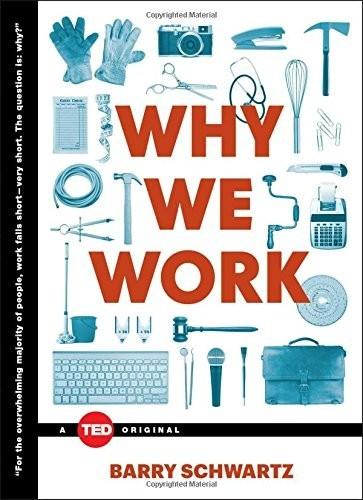
Why We Work
by
Barry Schwartz
Published 31 Aug 2015
So every worker spends half of his or her waking life deprived. Perhaps the pay compensates, but I don’t think so. And existing research bears me out. In a comprehensive article about the significance of salary to job satisfaction, Timothy Judge and colleagues reviewed the results of eighty-six studies that included about fifteen thousand employees. Their analysis of the data from all these studies combined suggested that level of pay had very little effect on either job satisfaction or pay satisfaction. So it is unlikely that pay compensates for routinized, meaningless work. More likely, such workers are resigned to living lives in which their work is nothing but drudgery.
…
A company starts to have trouble, because of low profits, high costs, and poor customer service. This leads to efforts to cut costs and make the company “lean and mean”: less training, salary reductions, layoffs, part-time workers, a freeze on hiring and promotion. These changes lead to decreased worker motivation to excel, decreased effort, even worse customer service, less job satisfaction and more turnover, which in turn leads to more trouble for the business. In short, you take discretion, engagement, and meaning out of work and people get less satisfaction from doing it. As they get less satisfaction from doing it, they do it less well. As they do it less well, their supervisors take even more discretion away.
…
New York Times Magazine, February 23, 1986: 44–47, 58. Hirsch, F. Social Limits to Growth. Cambridge, MA: Harvard Press, 1976.* Hodson, R. Dignity at Work. New York: Cambridge University Press, 2001.* Judge, T. A., R. F. Piccolo, N. P. Podsakoff, J. C. Shaw, and B. L. Rich. “The Relationship Between Pay and Job Satisfaction: A Meta-Analysis of the Literature.” Journal of Vocational Behavior, 77 (2010): 157–67. Jussim, L. “Self-fulfilling Prophecies: A Theoretical and Integrative Review.” Psychological Review, 93 (1986): 429–45. ——. “Teacher Expectations: Self-Fulfilling Prophecies, Perceptual Biases, and Accuracy.”

The Innovation Illusion: How So Little Is Created by So Many Working So Hard
by
Fredrik Erixon
and
Bjorn Weigel
Published 3 Oct 2016
The Conference Board, an economics consultancy, suggests that dissatisfaction with work in the United States has been growing for several decades and that a majority of the workforce is now dissatisfied rather than satisfied with their jobs.3 Academic research confirms that job satisfaction in the US has been on a downward trend since the 1970s.4 This trend challenges the usual perceptions about what drives job satisfaction, such as pay or job security. While they are important, surveys suggest that job satisfaction, in the United States at least, is also linked to economic dynamism and opportunity. Although workers are materially better off today than they were in the 1960s, and have safer working environments, many are afforded fewer economic opportunities and consequently have lower aspirations.
…
Several chapters will discuss developments in other economies than those in the West, but only when it is relevant for our discussion about Western capitalism. In this book, references to the Western world, Western economies, the West, or similar expressions mean North America and Western and Central Europe. 3.Cheng et al., “Job Satisfaction.” 4.Blanchflower and Oswald, “Well-Being, Insecurity, and the Decline of American Job Satisfaction.” 5.Crabtree, “Worldwide, 13% of Employees Are Engaged at Work.” 6.Dreyer and Hindley, “Trade in Information Technology Goods.” 7.The Economist, “Planet of the Phones.” 8.Bogost, “The Secret History of the Robot Car.” 9.The “second half of the chessboard” is an expression by Ray Kurzweil to explain the power of exponential growth.
…
Figure 8.1 Firm entry and exit rates in the United States, 1977–2012 Diminishing turnover rates are an unhealthy sign because, aside from bringing new technologies, new firms are the ones that challenge incumbents, and – usually – create better-paid jobs. Their value for the economy is shown through increasing productivity growth. But, as Western economies mature, people tend to stay hired in old firms. While that might be appealing to some, especially if job satisfaction is good, it is a recipe for a society distancing itself from a dynamic economy. Old firms hired about 80 percent of the total US workforce in 2012 compared to 65 percent in 1987, while the workforce employed by start-ups decreased sharply.24 Entrepreneurship is also on an aging trend. In 1989, almost 11 percent of young households (aged 30 and younger) owned shares in private companies; in 2013 that number was down to less than 4 percent.

The Broken Ladder
by
Keith Payne
Published 8 May 2017
A team of researchers led by economist David Card had the idea to inform some of the university faculty and staff about the website and see how it affected their job satisfaction. They sent thousands of employees in one group an e-mail alerting them to the website and providing a helpful link so they could easily look up salaries themselves. Another group served as the control, and was not sent the e-mail. A few days later both groups were sent a survey about their job satisfaction and how likely they were to change jobs in the upcoming year. Not surprisingly, hits to the salary website spiked. Learning about their colleagues’ pay had a big effect on the employees’ happiness with their own jobs, but it depended on how much money they made.
…
Although I was not rising in any hierarchy—I was on the bottom rung in every position—the reason that each of these successive jobs (even the answering service one) felt increasingly satisfying was that I gained more and more control over my own work and my interactions with my colleagues. Ordinarily, increased control goes hand in hand with higher rank and pay. But the ways that pay inequality affects productivity and job satisfaction are complex and often surprising. Inequalities in pay are supposed to be motivational. If more productive workers are rewarded for their labors, the theory goes, then everyone will work harder to achieve higher wages. This kind of pay-for-performance makes perfect economic sense. Unfortunately, people are not very good at obeying the laws of economics.
…
Others have reanalyzed the data using different statistical techniques and found that the CEO effect might be as high as 22 percent. Other estimates fall somewhere in the middle. Regardless of whether the true number turns out closer to 5 percent or 22 percent, it will be hard to convince workers that the CEO is worth his salary. The extreme inequality seen today in CEO pay is likely to undermine job satisfaction, team performance, and product quality. It may inspire workers to slack off, steal, and sabotage. These tendencies have probably been kept in check, so far, by the general lack of awareness of how unequal the pay scales really are. But as CEO remuneration reaches new heights, it is becoming more and more often a matter of public knowledge.

The Job: The Future of Work in the Modern Era
by
Ellen Ruppel Shell
Published 22 Oct 2018
as many as 92 percent of US workers Robert P. Quinn, Graham L. Staines, and Margaret R. McCullough, “Job Satisfaction: Is There a Trend?,” Manpower Research Monograph No. 30, US Department of Labor, 1974, https://www.psc.isr.umich.edu/dis/infoserv/isrpub/pdf/Jobsatisfaction_3674_.PDF. fewer than half of all Americans “2016 Employee Job Satisfaction and Engagement: Executive Summary,” Society for Human Resource Management, 2016, https://www.shrm.org/hr-today/trends-and-forecasting/research-and-surveys/Documents/2016-Employee-Job-Satisfaction-and-Engagement-Report-Executive-Summary.pdf. The vast majority Amy Adkins, “Employee Engagement in U.S.
…
Surveys show that in the 1950s and 1960s and into the 1970s—when many Americans labored in factories, and when fewer employers offered “meaningful” jobs—as many as 92 percent of US workers reported being satisfied with their jobs. And not all respondents were satisfied for the same reasons. White-collar workers—a small minority at the time—rated challenging work as the most important factor in job satisfaction. Blue-collar workers—who were most workers at the time—prioritized financial reward. Blue-collar workers also assigned greater importance than did white-collar workers to relationships with coworkers, duration of work hours, fringe benefits, and job security. Basically, blue-collar workers were far less concerned with being challenged than they were with job security, working conditions, and relationships.
…
Though not all workers benefited from these policies, and many full-time workers still earned a poverty wage, conditions had improved for millions of American workers. And while many if not most workers might not have felt “self-actualized,” or even challenged by their jobs, they did feel a sense of security and belonging that made them claim to be satisfied with their working lives. In the 1980s, job satisfaction in the United States began the steady decline from which it has yet to recover. Since the turn of the century through this writing, fewer than half of all Americans claim to be satisfied with their jobs—giving low marks to such factors as compensation and benefit levels, opportunity for advancement, treatment by supervisors, training opportunities, and job security, among other things.

Puppet 3 Beginner's Guide
by
John Arundel
Published 16 Apr 2013
ssh module / Time for action – deploying an SSH configuration file STRING argument / Substitutions substitutions / Substitutions substrings, comparisions / Substrings sudoprivileges, managing with / Managing privileges with sudo sudo command / sudo sudoers filedeploying / Time for action – deploying a sudoers file syntax / Time for action – deploying a sudoers file syntaxchecking / Syntax checking sysadmintasks / A day in the life of a sysadmin job satisfaction / Job satisfaction T tasksscheduling / Scheduled tasks templateusing / Using templates Nginx virtual host / Time for action – templating an Nginx virtual host inline templates / Inline templates about / Templates template function / What just happened? text substitution / Text substitution U unless attribute / Running commands selectively unless command / Running commands selectively unless statement / Unless statements usercreating / Time for action – creating a user, What just happened?
…
Introduction to Puppet The problem Configuration management A day in the life of a sysadmin Keeping the configuration synchronized Repeating changes across many servers Self-updating documentation Coping with different platforms Version control and history Solving the problem Reinventing the wheel A waste of effort Transferable skills Configuration management tools Infrastructure as code Dawn of the devop Job satisfaction The Puppet advantage Welcome aboard The Puppet way Growing your network Cloud scaling What is Puppet? The Puppet language Resources and attributes Summary Configuration management What Puppet does The Puppet advantage Scaling The Puppet language 2. First steps with Puppet What you'll need Time for action – preparing for Puppet Time for action – installing Puppet Your first manifest How it works Applying the manifest What just happened?
…
It can mean sysadmins who happily turn their hand to writing code when needed, or developers who don't fear the command line, or it can simply mean the people for whom the distinction is no longer useful. Devops write code, herd servers, build apps, scale systems, analyze outages, and fix bugs. With the advent of CM systems, devs and ops are now all just people who work with code. Job satisfaction Being a sysadmin, in the traditional sense, is not usually a very exciting job. Instead of getting to apply your experience and ingenuity to make things better, faster, and more reliable, you spend a lot of time just fixing problems, and making manual configuration changes that could really be done by a machine.

SEDATED: How Modern Capitalism Created Our Mental Health Crisis
by
James. Davies
Published 15 Nov 2021
See: Chartered Institute of Personnel and Development (2013), ‘Employee Outlook’, http://www.cipd.co.uk/binaries/employee-outlook_2013-autumn.pdf (accessed Oct. 2017). 12 Chartered Institute of Personnel and Development (2018), ‘UK Working Lives: in search of job quality’, https://www.cipd.co.uk/Images/uk-working-livessummary_tcm18-40233.pdf (accessed Dec. 2018). 13 Dahlgreen, W. (2013), ‘37 per cent of British workers Think Their Jobs are Meaningless’, YouGov, https://yougov.co.uk/news/2015/08/12/british-jobs-meaningless/ (accessed Nov. 2018). 14 While changes in rates of satisfaction and engagement fluctuate from year from year, historically job satisfaction and engagement has been trending downwards since the 1970s. In the US, those who were very satisfied with their jobs fell by 8 per cent between the mid 1970s and the mid 1990s – see: Blanchflower, D. G., and Oswald, A. J. (1999), ‘Well-Being, Insecurity and the Decline of American Job Satisfaction’, http://www.dartmouth.edu/~blnchflr/papers/Job Sat.pdf (accessed June 2014) – with a similar trend in the UK. See: Kular, S., et al. (2008), ‘Employee engagement: A literature review’, Working Paper Series No. 19, Kingston Business School, http://eprints.kingston.ac.uk/4192/1/19wempen.pdf, (accessed Jan. 2014).
…
See: Kular, S., et al. (2008), ‘Employee engagement: A literature review’, Working Paper Series No. 19, Kingston Business School, http://eprints.kingston.ac.uk/4192/1/19wempen.pdf, (accessed Jan. 2014). Other studies have put the decline in job satisfaction higher; the Conference Board’s survey showed it has decreased from 61.1 per cent in the mid 1980s (1987) to 42.6 per cent by 2010, thus dropping a full 19 per cent over 25 years. See: Ray, R. L. (2013), ‘Job Satisfaction: 2013 Edition’, Conference Board, https://hcexchange.conferenceboard.org/publications/publicationdetail.cfm?publicatio nid = 2522 (accessed Dec. 2017). 15 Office of National Statistics UK Productivity Introduction, https://www.ons.gov.uk/employmentandlabourmarket/peopleinwork/labourproductivity/articles/ukproductivityintroduction/octobertodecember2017 (accessed Dec 2017). 16 Whitmore, M., et al. (2018), ‘Promising Practices for Health and Wellbeing at Work’, Rand Europe, https://www.rand.org/pubs/research_reports/RR2409.html (accessed Oct. 2017). 17 Some of the data and analysis in this chapter on MHFA, ACAS and CMHA is derived from my article: Davies, J., (2016), ‘Back to balance: labour therapeutics and the depoliticisation of workplace distress’, Palgrave Communications 2 (1):16027. 18 Mental Health First Aid England (MHFAE), 2015, http://mhfaengland.org/ (accessed June 2018). 19 Ibid. 20 Whitmore, M., et al. (2018), ‘Promising Practices for Health and Wellbeing at Work’, Rand Europe, https://www.rand.org/pubs/research_reports/RR2409.html (accessed Oct. 2017). 21 CMHA (2011), ‘Workplace mental health PSA’, https://www.youtube.com/watch?
…
In 2018, a group of education and psychology researchers set out to discover what led teachers to develop mental health problems at work, at rates higher than found in the general population.10 To enable this, they conducted multiple in-depth interviews with a wide range of teachers struggling with mental health issues. The first common problem they identified was unmanageable workloads, which were mostly driven by mounting paperwork, especially in service of satisfying Ofsted inspections. Teachers felt that these bureaucratic demands were eroding their job satisfaction as well as their creativity.11 Many also felt that having to hit highly prescriptive targets was detracting from their expertise accumulated through practice, subtly telling them not to trust their professional experience and judgement. Others reported feeling under constant surveillance by distrustful management.
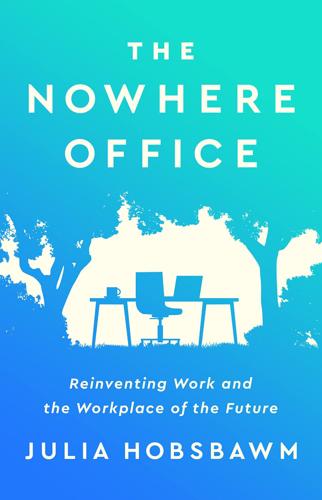
The Nowhere Office: Reinventing Work and the Workplace of the Future
by
Julia Hobsbawm
Published 11 Apr 2022
See also Ria Patel, ‘Arup’s New Hybrid Work Model Allows 6,000 UK Employees to Choose Their Working Days Across a Seven-Day Week in New Era for Flexibly Working’, Arup, 20 May 2021, https://www.arup.com/news-and-events/arups-new-hybrid-work-model-allows-6000-uk-employees-to-choose-their-working-days 7. Sara Bean, ‘Digital Mobility to Work Anytime, Anywhere is Key to Job Satisfaction’, Workplace Insight, 26 May 2016, https://workplaceinsight.net/ability-work-anytime-anywhere-now-key-job-satisfaction/ 8. Mark Bergen, ‘Google Wants People in Office, Despite Productivity Gains at Home’, Bloomberg, 15 July 2021, https://www.bloomberg.com/news/articles/2021-07-15/google-googl-wants-employees-to-return-to-office-despite-productivity-gains 9.
…
Loading people up with impossible deadlines or heavy-handed approaches is wrong and ultimately counter-productive. It creates ill will, toxicity, and often a backlash. Research by leadership academic Amanda Goodall clearly links boss competence with well-being, as does McKinsey research which states: ‘relationships with management are the top factor in employees’ job satisfaction, which in turn is the second most important determinant of employees’ overall wellbeing’.12 An example of where this can all go horribly wrong is Twitter’s appointment of Dantley Davis in 2019 as head of design, which was supposed to shake-up his teams with what the New York Times quoted him as saying was ‘tough love’.13 They reported on the effects of this approach: Mr Davis, the company’s new vice president of design, asked employees to go around the room, complimenting and critiquing one another.
…
World Health Organisation, ‘Occupational Health: Stress at the Workplace’, 19 October 2020, https://www.who.int/news-room/q-a-detail/ccupational-health-stress-at-the-workplace 9. 2021 Edelman Trust Barometer, https://www.edelman.com/trust/2021-trust-barometer 10. ‘Autonomy in the Workplace Has Positive Effects on Well-Being and Job Satisfaction, Study Finds’, University of Birmingham, 24 April 2017, https://www.birmingham.ac.uk/news/latest/2017/04/autonomy-workplace.aspx 11. See ‘The Great Resignation: Why People Are Leaving Their Jobs in Growing Numbers’, NPR, 22 October 2021, https://www.npr.org/2021/10/22/1048332481/the-great-resignation-why-people-are-leaving-their-jobs-in-growing-numbers; EY Study, ‘More Than Half of Employees Globally Would Quit Their Jobs if Not Provided Post-Pandemic Flexibility’, 21 May 2021, https://www.ey.com/en_ro/news/2021/05/ey-study--more-than-half-of-employees-globally-would-quit-their- 12.
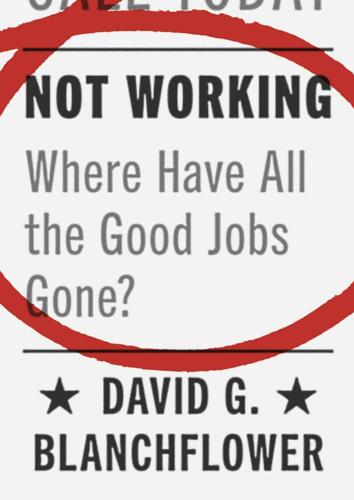
Not Working: Where Have All the Good Jobs Gone?
by
David G. Blanchflower
Published 12 Apr 2021
Thinking about the next twelve months, how likely do you think it is that you will lose your job or be laid off—very likely, fairly likely, not too likely, or not at all likely? (variable = joblose) I simply coded the job satisfaction score from 1 to 4, with 4 = very satisfied. The score varied markedly from those who said job loss was not at all likely (3.42), not too likely (3.21), fairly likely (3.05), and very likely (3.04). Job satisfaction is thus higher if your job is secure. Conversely, job insecurity hurts as it lowers job satisfaction. The decline in income is not the only thing that hurts; having a job conveys higher self-esteem. Insecurity lowers job satisfaction. It is not just the unemployed in the United States who are hurting; prime-age men and women who are labor market non-participants are, too.
…
There is some evidence of an asymmetry or “wage ratchet” in the UK. Workers in expanding plants receive a pay premium while those in contracting plants suffer no pay disadvantage, which is consistent with the claim that wages are more flexible upward than downward. On the same theme, job insecurity lowers job satisfaction.19 We know this from self-reports from workers on how satisfied they are with their jobs and how fearful they are of losing that job. Table 2.1 shows that in France, Italy, and the UK there was a rise in perceptions of job insecurity between 2005 and 2010 as the Great Recession hit. Job insecurity was higher in 2015 than it was in 2005 in these three countries but lower in Germany.
…
Albania; Argentina; Australia; Azerbaijan; Belarus; Belgium; Bosnia; Brazil; Brunei; Bulgaria; Cambodia; Canada; Chile; China; Colombia; Costa Rica; Croatia; Czech Republic; Denmark; Dominican Republic; Ecuador; El Salvador; Estonia; Finland; France; Germany; Greece; Honduras; Hungary; Iceland; Iraq; Ireland; Israel; Italy; Japan; Kyrgyzstan; Laos; Latvia; Lithuania; Luxembourg; Macedonia; Malta; Mexico; Myanmar; Netherlands; Nicaragua; Nigeria; Norway; Paraguay; Peru; Philippines; Poland; Portugal; Puerto Rico; Romania; Russia; Serbia; Singapore; Slovakia; South Africa; South Korea; Spain; Sweden; Switzerland; Tanzania; Turkey; the UK; Ukraine; Uruguay; the United States; Uzbekistan; and Zimbabwe. Blanchflower 2009; Blanchflower and Oswald 2017. 26. The U-shape is confirmed by other studies (Deaton 2008; Stone et al. 2010; Van Landeghem 2012; Wunder et al. 2013; Schwandt 2016). Gazioglu and Tansel (2006) found that job satisfaction in the UK was U-shaped according to age. It even turns out that there is evidence of a midlife crisis in apes (Weiss et al. 2012). Glenn (2009) argued that it was appropriate to only look at patterns without controls; we disagreed (Blanchflower and Oswald 2009). 27. I estimated OLS regressions in every case containing only an age and age-squared terms pooled across countries.
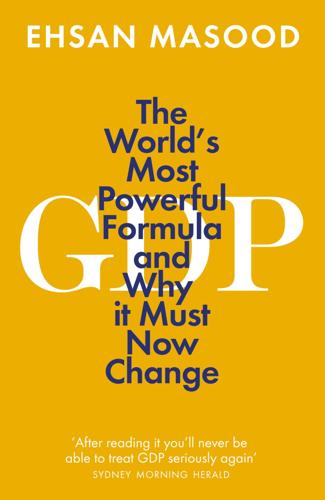
GDP: The World’s Most Powerful Formula and Why It Must Now Change
by
Ehsan Masood
Published 4 Mar 2021
Masood’s book helps raise those questions and others in a thought provoking manner. That’s much needed in every endeavor these days, and needed in few places more than in the economics profession.” — Simon Constable, Forbes “In lively prose, Masood argues that GDP is flawed because it ignores volunteering, housework, environmental degradation, job satisfaction, and income inequality.” — Kirkus Reviews “An interesting book. Masood doesn’t merely criticize the overreliance on GDP: he also explores ongoing efforts to develop a satisfactory substitute or supplement that would yield a more accurate picture of economic activity and its effects.” — Foreign Affairs “Masood contends that GDP is a bill of goods the developed world foisted on emerging nations.
…
That is because it is not set up to recognize important aspects of our lives that are not captured by the acts of spending and investing. There is no room in GDP for volunteering or housework, for example; nor does it recognize that there is value in community or in time spent with families. More measurable things such as damage to our environment are also left out, as is job satisfaction. GDP doesn’t even measure the state of jobs. Greenspan’s was by no means a lone voice cautioning against reading too much into GDP beyond what it says about the state of production, or spending, or incomes. From the earliest days, its inventors, including Simon Kuznets and the British economist John Maynard Keynes, understood that it is not really a measure of prosperity, and Kuznets in particular became skeptical of the way in which his invention was being used as a proxy for this.
…
The New York Times summed up the Census Bureau’s finding with the headline in its September 16, 2014, edition: “You Can’t Feed a Family with G.D.P.” GDP hides other problems too. In spite of repeated criticism and from much earlier times, it has consistently failed to value volunteering. Nor does it value housework, job satisfaction, time with friends and family, or other means through which we experience quality of life. GDP also fails to include any measure of the economic impact of environmental degradation. For example, countries that are poor in an economic sense but rich in other ways, such as an abundance of plant and animal species, known as biodiversity, will rank low in the GDP tables.

Drive: The Surprising Truth About What Motivates Us
by
Daniel H. Pink
Published 1 Jan 2008
In 2004, Deci and Ryan, along with Paul Baard of Fordham University, carried out a study of workers at an American investment bank. The three researchers found greater job satisfaction among employees whose bosses offered autonomy support. These bosses saw issues from the employee's point of view, gave meaningful feedback and information, provided ample choice over what to do and how to do it, and encouraged employees to take on new projects. The resulting enhancement in job satisfaction, in turn, led to higher performance on the job. What's more, the benefits that autonomy confers on individuals extend to their organizations.
…
Yet too many businesses remain woefully behind the science. Most twenty-first-century notions of management presume that, in the end, people are pawns rather than players. British economist Francis Green, to cite just one example, points to the lack of individual discretion at work as the main explanation for declining productivity and job satisfaction in the UK. Management still revolves largely around supervision, if-then rewards, and other forms of control. That's true even of the kinder, gentler Motivation 2.1 approach that whispers sweetly about things like empowerment and flexibility. Indeed, just consider the very notion of empowerment.
…
This cuts commuting time for staff, removes them from physical monitoring, and provides far greater autonomy over how they do their jobs. The American airline JetBlue was one of the first to try this approach. From its launch in 2000, JetBlue has relied on telephone customer service employees who work at home. And from its launch, JetBlue has earned customer service rankings far ahead of its competitors. Productivity and job satisfaction are generally higher in homeshoring than in conventional arrangements in part because employees are more comfortable and less monitored at home. But it's also because this autonomy-centered approach draws from a deeper pool of talent. Many homeshore employees are parents, students, retirees, and people with disabilities those who want to work, but need to do it their own way.

Lab Rats: How Silicon Valley Made Work Miserable for the Rest of Us
by
Dan Lyons
Published 22 Oct 2018
This was taking place not just at start-ups and not just in the tech industry, but in many industries and many countries around the world. Job satisfaction in Britain and Germany has been steadily eroding since the 1980s. In the United States, the percentage of workers who say they are satisfied with their jobs dropped from 61.1 percent in 1987 to 50.8 percent in 2016, according to the Conference Board, a research firm, which adds that it’s “very unlikely” that job satisfaction will ever return to 1980s levels. Worldwide, only 13 percent of workers feel “engaged”—meaning enthusiastic at work and committed to their companies—according to Gallup, which has tracked this since 2000.
…
Curtin, Sally C., Margaret Warner, and Holly Hedegaard. “Increase in Suicide in the United States, 1999-2014.” National Center for Health Statistics Data Brief no. 241, April 2016. https://www.cdc.gov/nchs/products/databriefs/db241.htm. Green, Francis, and Nicholas Tsitsianis. “Can the Changing Nature of Jobs Account for National Trends in Job Satisfaction?” Department of Economics Discussion Paper 04/06 at the University of Kent, Canterbury, England, 2004. https://www.kent.ac.uk/economics/documents/research/papers/2004/0406.pdf. Kellaway, Lucy. “Why Is Work Making Us Miserable?” Financial Times, January 22, 2017. https://www.ft.com/content/98d74346-de67-11e6-9d7c-be108f1c1dce.
…
Financial Times, January 22, 2017. https://www.ft.com/content/98d74346-de67-11e6-9d7c-be108f1c1dce. LaBier, Douglas. “Another Survey Shows the Continuing Toll of Workplace Stress.” Psychology Today, April 23, 2014. https://www.psychologytoday.com/us/blog/the-new-resilience/201404/another-survey-shows-the-continuing-toll-workplace-stress. Levanon, Gad. “Job Satisfaction Keeps Getting Better.” Conference Board, September 6, 2017. https://www.conference-board.org/blog/postdetail.cfm?post=6391. Ma, Alexandra. “A Psychological Ailment Called ‘Hikikomori’ Is Imprisoning 500,000 Japanese People in Their Homes—and It’s More of a Threat than Ever.” Business Insider, January 14, 2018. http://www.businessinsider.com/hikikomori-worrying-mental-health-problem-traps-japanese-at-home-2018-1.

Brave New Work: Are You Ready to Reinvent Your Organization?
by
Aaron Dignan
Published 1 Feb 2019
Talent and skills don’t matter if we don’t have the maturity—the courage and humility—to welcome the conditions for continuous growth. And our ability to do this has a lot to do with what psychologists call the four dimensions of core self-evaluation: locus of control, neuroticism, self-efficacy, and self-esteem. Our self-appraisal across these factors plays a predictive role in areas such as job satisfaction and job performance. Locus of control, though, is of particular interest as we explore mastery. The concept was developed by psychologist Julian B. Rotter to describe the degree to which people think they can control the outcomes of events in their lives. People with an internal locus of control believe that they have a high degree of influence over what happens to them.
…
Management guru W. Edwards Deming had it right when he said, “Pay is not a motivator.” But then what is it? In 1959 psychologist Frederick Herzberg proposed an answer to that very question in what would come to be known as his two-factor theory. In trying to understand the factors that lead to job satisfaction, he discovered that the opposite of satisfaction was not dissatisfaction. Rather, satisfaction and dissatisfaction appeared to be driven by two completely different sets of variables. Motivators included job characteristics such as recognition for achievement, meaningful and interesting work, involvement in decision making, and advancement or personal growth.
…
Hygiene factors, on the other hand, included company policies, job status and security, supervisory practices, and—you guessed it—salary and benefits. Addressing these factors reduced dissatisfaction by improving the job environment. What does this mean for the world of compensation? It means that increasing salaries that are too low can reduce job dissatisfaction, but increasing salaries that are already generous won’t increase job satisfaction in any meaningful or lasting way. It won’t make us any happier either. According to a study published in the Proceedings of the National Academy of Sciences, household income above $75,000 a year doesn’t make us measurably happier. Below that level, increases or decreases in income were correlated with happiness.
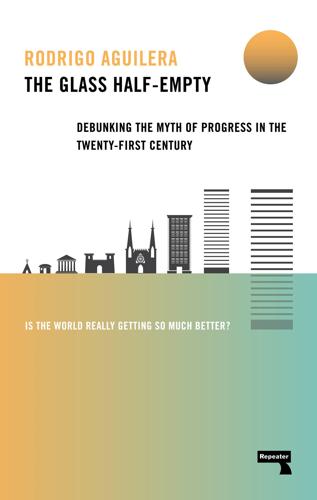
The Glass Half-Empty: Debunking the Myth of Progress in the Twenty-First Century
by
Rodrigo Aguilera
Published 10 Mar 2020
The Spring 2017 survey showed that only a net 35% of employees felt they were satisfied with the amount of influence they had over their jobs and a net 12% of employees felt that the organization that they worked for “inspired the very best in me in the way of job performance”.4 It should come as no surprise that workers don’t feel valued, since the modern corporation isn’t designed to promote job satisfaction but rather to generate profit for its owners — satisfaction is merely a byproduct for the lucky ones that work in a company that adequately rewards effort and provides meaning or purpose to the work being done. Unfortunately, the consequences of this are significant: the absence of job satisfaction is a strong predictor of mental health problems, including anxiety and depression, burnout, and self-esteem issues. One meta-analysis of the relationship between work life and mental health summarized the problem: There is growing evidence that current trends in employment conditions may be eroding levels of job satisfaction — and directly damaging the physical and mental health of employees.
…
This comes despite being a country that waxes lyrical about its Protestant work ethic and which some evidence suggests is actually happier the more it works.2 The British, blessed with EU-mandated labor benefits (that Brexit might very well erode or dismantle), do a bit better: 64% satisfaction according to one recent survey from the Chartered Institute of Personal Development (CIPD).3 It should be mentioned that measuring job satisfaction is no less problematic than measuring life satisfaction (you can be satisfied with a mediocre job) but, thankfully, previous CIPD surveys asked more interesting questions. The Spring 2017 survey showed that only a net 35% of employees felt they were satisfied with the amount of influence they had over their jobs and a net 12% of employees felt that the organization that they worked for “inspired the very best in me in the way of job performance”.4 It should come as no surprise that workers don’t feel valued, since the modern corporation isn’t designed to promote job satisfaction but rather to generate profit for its owners — satisfaction is merely a byproduct for the lucky ones that work in a company that adequately rewards effort and provides meaning or purpose to the work being done.
…
One meta-analysis of the relationship between work life and mental health summarized the problem: There is growing evidence that current trends in employment conditions may be eroding levels of job satisfaction — and directly damaging the physical and mental health of employees. New working practices and rapid technological advances are changing the nature of many jobs. Employees are regularly being required to work well beyond their contracted hours, often unwillingly, as organisations struggle to meet tight deadlines and targets. Work practices are becoming more automated and inflexible, leaving employees with less and less control over their workload.

Competition Overdose: How Free Market Mythology Transformed Us From Citizen Kings to Market Servants
by
Maurice E. Stucke
and
Ariel Ezrachi
Published 14 May 2020
Redefining the Competition Ideal to Reflect Our Values 1.Charles Duhigg, “Wealthy, Successful, and Miserable,” New York Times Magazine, February 21, 2019, https://nyti.ms/2NimgU5. 2.Gad Levanon, “Job Satisfaction Keeps Getting Better,” Conference Board, September 6, 2017, https://www.conference-board.org/blog/postdetail.cfm?post=6391; David Z. Morris, “U.S. Job Satisfaction Hits Its Highest Level Since 2005,” Fortune, September 1, 2017, https://fortune.com/2017/09/01/job-satisfaction-highest-since-2005/. 3.Organisation for Economic Co-operation and Development, “Social and Welfare Issues: Inequality,” accessed May 3, 2019, https://www.oecd.org/social/inequality.htm. 4.Carlotta Balestra and Richard Tonkin, “Inequalities in Household Wealth across OECD Countries: Evidence from the OECD Wealth Distribution Database,” OECD Statistics Working Papers, January 2018, https://read.oecd-ilibrary.org/economics/inequalities-in-household-wealth-across-oecd-countries_7e1bf673-en#page7. 5.United Nations Human Rights Council, “Report of the Special Rapporteur on Extreme Poverty and Human Rights on His Mission to the United States of America,” A/HRC/38/33/Add.1, June–July 2018, https://undocs.org/A/HRC/38/33/ADD.1, 4. 6.Liz Alderman, “Europe’s Middle Class Is Shrinking.
…
Redefining the Competition Ideal to Reflect Our Values When returning to Harvard in 2017 to attend his fifteenth business school reunion, the Pulitzer Prize–winning journalist Charles Duhigg observed that most of his classmates, although doing very well financially, seemed miserable and unfulfilled.1 They were weary of their work, which was insanely stressful; distrustful and wary of coworkers who were so eager for their next promotion that they were constantly undermining each other; and feeling a sense of emptiness when they questioned the meaning of what they were doing in their professional lives. And they were not alone. Though one survey found that job satisfaction levels across the United States had increased very slightly in the last ten years or so, to 51 percent in 2016, in a disturbing conclusion it also noted that they remain well below what they were in 1987, when 61.1 percent of workers reported being satisfied with their jobs—and moreover that it was unlikely that satisfaction would return to that level in the future.2 Duhigg’s classmates are unhappy despite well-paying jobs, but many of us don’t have the luxury of such well-cushioned unhappiness.
…
News & World Report college ranking college rankings‘ intended beneficiaries cheating to move ahead, 30–31 fear of opting out costs, 28–31, 35–36 grooming from a young age, 31–34 harmed by race to the bottom, 9–12 ignoring the value a college delivers, 37–38 median earnings of students ten years later, 36, 299 results of rejection by top universities, 36–37 trapped in an arms race, 27–30, 31 Columbia University 19–20, 296 Commodity Futures Trading Commission (CFTC), 260, 261 Common Application for colleges, 14, 16, 20, 26 competition overview, xii–xiv, 39–40 concept of, 233–34, 254 court ruling on potential for unhealthy effects, 121–22 drip pricing spreading in competitive markets, 79–84 economic efficiency vs. good for all, 125 finding human weaknesses as, 69–70 Gamemakers design competition into apps, 200–202 globalization of, 248 greed-inspired, 235–36, 237, 240 with a higher purpose, xii, xiv kinds of, 255–56, 288–91 on paper vs. in reality, 71–73 as perfect cure, ix–xi, 39–40, 62 positive-sum, 242, 244, 251, 255–56, 257, 289–90 in private prison market, 176–77 rationality and irrationality of, 34–38 scholars‘ fears about examining, xi undermining social, ethical, and moral values, xiii–xiv, 235–36, 237, 245–46, 274 zero-sum, 234, 242–43, 245–51, 252, 255, 289 See also noble competition; toxic competition competition blindness, 39 competition ideal overview, 251–53 conditional cooperation, 240–44 greed-inspired competition vs., 235–36, 237 Smith on, 236–37 squeezed out by bad competition, 230 Ultimatum Game, 237–39, 240 See also noble competition competition ideology, 121–45 overview, xiii, 142–45, 291–92 and bank deregulation, 127–30 belief that competition is necessary and always good, 123–26 cost of competition ideology, 138–40 current oversimplified version, 228 for defusing responsibility, 282 for deregulating, 155–57 eroding social capital, 249–51 federal courts, 125–26 Federal Reserve Chairman, 128 and lobbyists, 152, 155–57 only choices are competition or communism/socialism, 233 and public program spending cuts, 184–85 reductive competition ideology, 126–30, 146–47, 155–57, 176 rise of, without qualifiers, 131, 131–32, 132 safety net for those left behind, 269–72 UK’s privatization of their water supply, 187–89 using to reframe toxic effects of competition, 281 utilizing in the absence of competition, 176–77 competition machine, 41–66 overview, 65–66, 70 and Boeing MAX jets‘ fatal flaw, 264–67 consumers‘ belief in, 47–48, 49 fraud discovery and placing blame, 45–47 government’s responsibility to provide regulatory guardrails, 264–67 horsemeat scandal, xii, 41–42, 45–47 steam engine metaphor, 42 competition machine conditions consumers do not notice quality degradation, 49, 58–62 diminishing profitability, 45, 49, 50–58 intense competitive pressure, 43–45, 44, 49, 50 sellers’ challenged by consumers’ failure to notice quality degradation, 49, 62–65 Competitive Escalation Paradigm, 35–36 competitors alignment of collective and individual interests of, 70 harm from race to the bottom, 4–6, 9–12, 25–27 identifying and exploiting customers’ weaknesses, 73–74, 82–84 limiting customer choices, 102–3 complex pricing, 82 conditional cooperation, 240–44 Consumer Financial Protection Bureau (CFPB), 268–69 consumers belief that high price = quality, 59–60 data on behaviors of, 87–91, 204–5, 207–9 data on emotions of, 205, 218–19, 220 gazelles with trackers metaphor, 92–93 identifying weaknesses of, 199–201 irrationality of, 71–74 job satisfaction levels, 227 life satisfaction levels, 247–49, 252 products with choice overload built in, 103–4 Trump rolling back financial protection for, 268–69, 285–86 See also competition machine conditions Cook, Tim, 221–22 CoreCivic, 166–70, 169, 173, 175, 177 Cornell University rejection rate, 15 corporations.
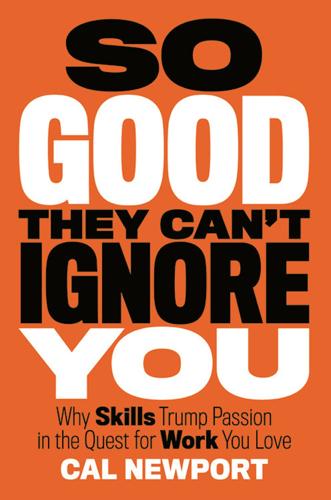
So Good They Can't Ignore You: Why Skills Trump Passion in the Quest for Work You Love
by
Cal Newport
Published 17 Sep 2012
And yet, for all of this increased focus on following our passion and holding out for work we love, we aren’t getting any happier. The 2010 Conference Board survey of U.S. job satisfaction found that only 45 percent of Americans describe themselves as satisfied with their jobs. This number has been steadily decreasing from the mark of 61 percent recorded in 1987, the first year of the survey. As Lynn Franco, the director of the Board’s Consumer Research Center notes, this is not just about a bad business cycle: “Through both economic boom and bust during the past two decades, our job satisfaction numbers have shown a consistent downward trend.” Among young people, the group perhaps most concerned with the role of work in their lives, 64 percent now say that they’re actively unhappy in their jobs.
…
Generational Grumbling and the New Life Stage of Emerging Adulthood—Commentary on Trzesniewski & Donnellan (2010),” Perspectives on Psychological Science 5, no. 1 (2010): 89–92. See section titled “Slackers or Seekers of Identity-Based Work?” for the quote and related discussion. 4. Julianne Pepitone, “U.S. job satisfaction hits 22-year low,” CNNMoney.com, January 5, 2010, http://money.cnn.com/2010/01/05/news/economy/job_satisfaction_report/. 5. Alexandra Robbins and Abby Wilner, Quarterlife Crisis: The Unique Challenges of Life in Your Twenties (New York: Tarcher, 2001). 6. Interview with Peter Travers, Roadtrip Nation Online Video Archive, 2006, http://roadtripnation.com/PeterTravers.

Human + Machine: Reimagining Work in the Age of AI
by
Paul R. Daugherty
and
H. James Wilson
Published 15 Jan 2018
What kind of growth, services, and products become possible? Your Office Robot To answer those questions, let’s start with a familiar process: categorizing and resolving complaints. In the past, much of the process work around sorting through customer complaints was done manually, and the tedium of many of those tasks detracted from people’s job satisfaction. At Virgin Trains, a train-operating company in the UK, for example, a team of customer service reps would manually read, sort, and route complaints. These repetitive activities diverted employees’ time and attention, and it fatigued them more than other work they did, like directly talking to customers.
…
See personalization cybersecurity, 56–58, 59 Darktrace, 58 DARPA Cyber Grand Challenges, 57, 190 Dartmouth College conference, 40–41 dashboards, 169 data, 10 in AI training, 121–122 barriers to flow of, 176–177 customization and, 78–80 discovery with, 178 dynamic, real-time, 175–176 in enterprise processes, 59 exhaust, 15 in factories, 26–27, 29–30 leadership and, 180 in manufacturing, 38–39 in marketing and sales, 92, 98–99, 100 in R&D, 69–72 in reimagining processes, 154 on supply chains, 33–34 supply chains for, 12, 15 velocity of, 177–178 data hygienists, 121–122 data supply-chain officers, 179 data supply chains, 12, 15, 174–179 decision making, 109–110 about brands, 93–94 black box, 106, 125, 169 employee power to modify AI, 172–174 empowerment for, 15 explainers and, 123–126 transparency in, 213 Deep Armor, 58 deep learning, 63, 161–165 deep-learning algorithms, 125 DeepMind, 121 deep neural networks (DNN), 63 deep reinforcement learning, 21–22 demand planning, 33–34 Dennis, Jamie, 158 design at Airbus, 144 AI system, 128–129 Elbo Chair, 135–137 generative, 135–137, 139, 141 product/service, 74–77 Dickey, Roger, 52–54 digital twins, 10 at GE, 27, 29–30, 183–184, 194 disintermediation, brand, 94–95 distributed learning, 22 distribution, 19–39 Ditto Labs, 98 diversity, 52 Doctors Without Borders, 151 DoubleClick Search, 99 Dreamcatcher, 136–137, 141, 144 drones, 28, 150–151 drug interactions, 72–74 Ducati, 175 Echo, 92, 164–165 Echo Voyager, 28 Einstein, 85–86, 196 Elbo Chair, 136–137, 139 “Elephants Don’t Play Chess” (Brooks), 24 Elish, Madeleine Clare, 170–171 Ella, 198–199 embodied intelligence, 206 embodiment, 107, 139–140 in factories, 21–23 of intelligence, 206 interaction agents, 146–151 jobs with, 147–151 See also augmentation; missing middle empathy engines for health care, 97 training, 117–118, 132 employees agency of, 15, 172–174 amplification of, 138–139, 141–143 development of, 14 hiring, 51–52 job satisfaction in, 46–47 marketing and sales, 90, 92, 100–101 on-demand work and, 111 rehumanizing time and, 186–189 routine/repetitive work and, 26–27, 29–30, 46–47 training/retraining, 15 warehouse, 31–33 empowerment, 137 bot-based, 12, 195–196 in decision making, 15 of salespeople, 90, 92 workforce implications of, 137–138 enabling, 7 enterprise processes, 45–66 compliance, 47–48 determining which to change, 52–54 hiring and recruitment, 51–52 how much to change, 54–56 redefining industries with, 56–58 reimagining around people, 58–59 robotic process automation (RPA) in, 50–52 routine/repetitive, 46–47 ergonomics, 149–150 EstherBot, 199 ethical, moral, legal issues, 14–15, 108 Amazon Echo and, 164–165 explainers and, 123–126 in marketing and sales, 90, 100 moral crumple zones and, 169–172 privacy, 90 in R&D, 83 in research, 78–79 ethics compliance managers, 79, 129–130, 132–133 European Union, 124 Ewing, Robyn, 119 exhaust data, 15 definition of, 122 experimentation, 12, 14 cultures of, 161–165 in enterprise processes, 59 leadership and, 180 learning from, 71 in manufacturing, 39 in marketing and sales, 100 in process reimagining, 160–165 in R&D, 83 in reimagining processes, 154 testing and, 74–77 expert systems, 25, 41 definition of, 64 explainability strategists, 126 explaining outcomes, 107, 114–115, 179 black-box concerns and, 106, 125, 169 jobs in, 122–126 sustaining and, 130 See also missing middle extended intelligence, 206 extended reality, 66 Facebook, 78, 79, 95, 177–178 facial recognition, 65, 90 factories, 10 data flow in, 26–27, 29–30 embodiment in, 140 job losses and gains in, 19, 20 robotic arms in, 21–26 self-aware, 19–39 supply chains and, 33–34 third wave in, 38–39 traditional assembly lines and, 1–2, 4 warehouse management and, 30–33 failure, learning from, 71 fairness, 129–130 falling rule list algorithms, 124–125 Fanuc, 21–22, 128 feedback, 171–172 feedforward neural networks (FNN), 63 Feigenbaum, Ed, 41 financial trading, 167 first wave of business transformation, 5 Fletcher, Seth, 49 food production, 34–37 ForAllSecure, 57 forecasts, 33–34 Fortescue Metals Group, 28 Fraunhofer Institute of Material Flow and Logistics (IML), 26 fusion skills, 12, 181, 183–206, 210 bot-based empowerment, 12, 195–196 developing, 15–16 holistic melding, 12, 197, 200–201 intelligent interrogation, 12, 185, 193–195 judgment integration, 12, 191–193 potential of, 209 reciprocal apprenticing, 12, 201–202 rehumanizing time, 12, 186–189 relentless reimagining, 12, 203–205 responsible normalizing, 12, 189–191 training/retraining for, 211–213 Future of Work survey, 184–185 Garage, Capital One, 205 Gaudin, Sharon, 99 GE.
…
See Watson (IBM) “if-then” rules, 25 Illumeo, 142 image recognition, 66 incubators, 162 industries, redefining, 56–58 Inertia Switch, 23 inference systems, 64 information analysis, 10 information technology (IT) cybersecurity and, 56–58, 59 in process automation, 5 Init.ai, 121 innovation, 152 generative design and, 135–137 observation and, 69–72 See also experimentation; research and development (R&D) Institute for the Future, 187 institutional review boards (IRBs), 78 inSTREAM, 47–48 Intel AI Day, 188 intelligence, extended and embodied, 206 intelligent agents, 65 IntelligentX Brewing Company, 76 interaction, 107, 139 jobs with, 143–146 See also augmentation; missing middle interaction agents, 143–146 interaction modelers, 120 internet of things (IoT), 34, 36, 37 interrogation, intelligent, 12, 185, 193–195 intuition, 191–193 inventory management, 30–33 iPhone, 176 IPSoft, 55–56, 139, 164, 201 iRobot, 24 IT security, 56–58, 59 Järborg, Rasmus, 55 job creation, 11, 113–115, 208–211 in data supply chains, 179 education and training for, 132–133 ethics compliance and, 79 explainers, 122–126 in manufacturing, 20 in marketing and sales, 100–101 in sustaining, 126–132 in training, 100, 114–122 See also fusion skills job loss, 19, 20, 209 job satisfaction, 46–47 job searches, 198–199 John Radcliffe Hospital, 197 Johnson & Johnson, 82 judgment integration, 12, 191–193 Kaiser Permanente, 188 Kaplan, Jerry, 60 Kelton, Fraser, 97 Keshavan, Meghana, 82 Kik, 91, 97 Kindred AI, 200 Kiva Robots, 31 knowledge representation, 63–64 Koko, 97, 117–118 Kowalski, Jeff, 137 Kraft Phone Assistant, 91 Lambda Chair, 136–137 Lange, Danny, 43 Las Vegas Sands Corp., 76 Laws of Robotics, 128–129 leadership, 14–15, 153–181, 213 blended culture and, 166–174 data supply chains and, 174–179 in enterprise processes, 58–59 in manufacturing, 38 in marketing and sales, 100 in normalizing AI, 190–191 in R&D, 83 in reimagining processes, 154, 180–181 learning deep reinforcement, 21–22 distributed, 22 reinforcement, 62 in robotic arms, 24–26 semi-supervised, 62 sensors and, 24–26 supervised, 60 unsupervised, 61–62 See also machine-learning technologies Leefeldt, Ed, 99 Lee Hecht Harrison, 199 legal issues.

Your Money or Your Life: 9 Steps to Transforming Your Relationship With Money and Achieving Financial Independence: Revised and Updated for the 21st Century
by
Vicki Robin
,
Joe Dominguez
and
Monique Tilford
Published 31 Aug 1992
LaBier found that focusing on money/position/ success at the expense of personal fulfillment and meaning had led 60 percent of his sample of several hundred to suffer from depression, anxiety and other job-related disorders, including the ubiquitous “stress.”1 Even though the official workweek has been pegged at forty hours for nearly half a century, many professionals believe they must work overtime and weekends to keep up. A 2003 national survey from the Center for a New American Dream found that 3 in 5 Americans feel pressure to work too much.2 In addition, a 2005 Conference Board study revealed that Americans are growing increasingly unhappy with their jobs. The study found widespread declines in job satisfaction among workers of all ages and across all income brackets.3 We are working more, but enjoying life less (and possibly enjoying less life as well). We have developed a national disease based on how we earn money. What Do We Have to Show for It? Even if we aren’t any happier, you’d think that we’d at least have the traditional symbol of success: money in the bank.
…
You aren’t violating your commitment to your profession by asking that question. Nor are you expressing disloyalty to your boss or dissatisfaction with your job by considering how you might spend your money if you were doing something else. If you love your job, the simple monthly exercise of asking this question will only increase your job satisfaction because you will increase your certainty that you are there by choice. IMPLICATIONS OF THIS STEP Step 4 is the heart of this program. Don’t worry if your life purpose or your internal yardstick is not crystal-clear. For some individuals this program has been the process by which they defined their values and purpose.
…
Major pension funds have gone bankrupt, many corporations are shifting saving for retirement back onto the shoulders of workers and some even wonder about the security of our national social security safety net. ◆According to a recent Conference Board report, Americans are growing increasingly unhappy with their jobs. The decline in job satisfaction is widespread among workers of all ages and across all income brackets.13 ◆A poll conducted by the Center for a New American Dream found that more than half of Americans say they would be willing to give up a day’s pay a week for an extra day of free time.14 We’ve had enough, it would seem, of making a dying in such a crazy world.
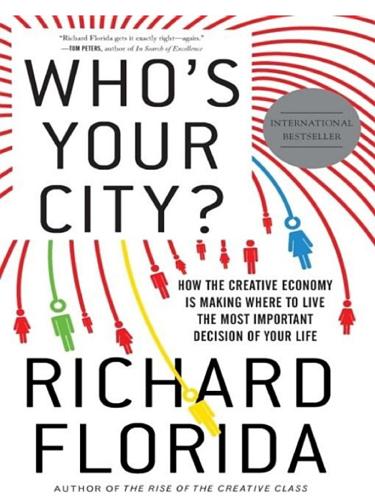
Who's Your City?: How the Creative Economy Is Making Where to Live the Most Important Decision of Your Life
by
Richard Florida
Published 28 Jun 2009
To more accurately gauge how these factors interact, Irene Tinagli of Carnegie Mellon and I conducted a multivariate statistical analysis that included measures of place satisfaction, job satisfaction, financial satisfaction, and a sense of safety and stress, as well as control variables for demographic factors such as age, race, gender, and income. Together, according to Tinagli’s analysis, place, financial, and job satisfaction accounted for a quarter of the total variance in overall life satisfaction—a substantial amount statistically speaking. This becomes even clearer when we consider that all of the demographic factors taken together, including income, account for only 1.2 percent of the variance in overall life satisfaction.6 The place we live is more important to our happiness than education or earnings.
…
Seligman, “Beyond Money: Toward an Economy of Well-Being,” Psychological Science in the Public Interest 5, 1, 2004, pp. 1-31.Betsy Stevenson and Justin Wolfers, “Economic Growth and Subjective Wellbeing: reassessing the Easterlin Paradox,” Wharton School, University of Pennsylvania, May 9, 2008, http://bpp.wharton.upenn.edu/jwolfers/Papers/EasterlinParadox.pdf. 3 Also see Angus Deaton, “Income, Aging, Health, and Wellbeing Around the World: Evidence from the Gallup World Poll,” Center for Health and Wellbeing, Research Program in Development Studies, Princeton University, August 2007. 4 Nick Paumgarten, “There and Back Again,” New Yorker, April 16, 2007. 5 Robert Manchin, “The Emotional Capital and Desirability of European Cities,” Gallup Europe, presented at the European Week of Cities and Regions, Brussels, October 2007. 6 The correlation coefficients between overall happiness and various factors are as follows: financial satisfaction (.369), job satisfaction (.367), place satisfaction (.303). Compare with income (.153), homeownership (.126), and age (.06). The regression coefficients (from an ordered probit regression) are as follows: financial satisfaction (.342), place satisfaction (.254), job satisfaction (.254). Compare with income (.039), age (-.06), and education (-.09). 7 The overall correlation between income and community satisfaction is relatively weak (.15). 8 Veolia Observatory of Urban Lifestyles, Life in the City (Paris), http://www.observatoire.veolia.com/en, 2008. 9 Mihaly Csikszentmihalyi, Flow: The Psychology of Optimal Experience, HarperCollins, 1990; and Csikszentmihalyi, Finding Flow: The Psychology of Engagement with Everyday Life, Basic Books, 1997. 10 See Teresa Amabile et al., “Affect and Creativity at Work,” Administrative Science Quarterly 50, March 2005, pp. 367-403.
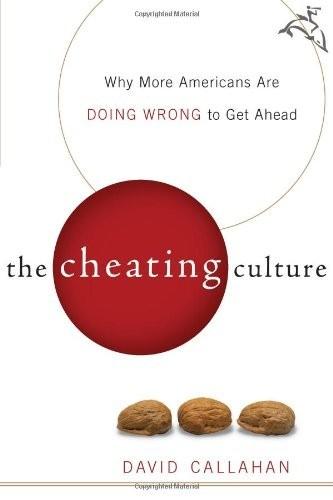
The Cheating Culture: Why More Americans Are Doing Wrong to Get Ahead
by
David Callahan
Published 1 Jan 2004
At the same time, only half of workers say they get a sense of identity from their job, a third say they'd be happier in another job, and nearly half say they are stressed out a great deal of the time at work. Many workers also gripe about how much money they make (not enough), their health insurance benefits (or lack thereof), and their chances for promotion (poor). While job satisfaction is relatively high, it has been declining over the past decade, and loyalty among most workers is paper thin: One 2002 survey found that only a quarter of workers plan to stay at their jobs for at least two years and that half wouldn't recommend their company to someone else. Barely a majority of workers in this survey said their employer treated them fairly and, on balance, the survey classified only 24 percent of workers as "truly loyal."
…
Surveys on the ethics of corporate employees by several organizations, including the Ethics Resource Center, do allow for comparisons over time, but most of these surveys only began a few years ago. Throughout the book, I have mainly used opinion-survey data in an effort to understand the public's views about personal values, job satisfaction, economic security, social trust, perceptions of fairness, and the like. Here and there, I have found surveys on Americans' attitudes toward different forms of cheating, such as auto-insurance fraud, music piracy, or tax evasion. Typically, though, these polls are one-shot deal, and don't allow for serious comparisons over time.
…
Neil Fligstein and Taek-Jin Shin, "The Shareholder Value Society: A Review of the Changes in the Working Conditions and Inequality in the U.S., 1976–2000," unpublished paper. [back] 6. David Brooks, "The Triumph of Hope," New York Times, 12 January 2003. [back] 7. On anxiety, see Robert Putnam's analysis of DDB Needham Life Style Survey data, Bowling Alone: The Collapse and Revival of American Community (New York: Simon & Schuster, 2000), 475. On job satisfaction, see Fligstein and Shin, "The Shareholder Value Society." Evidence of growing insecurity and anxiety is by no means ironclad and this remains a disputed point among scholars. See, for example, Kenneth Deavers, "Downsizing, Job Insecurity, and Wages: No Connection," Employment Policy Foundation, May 1998.
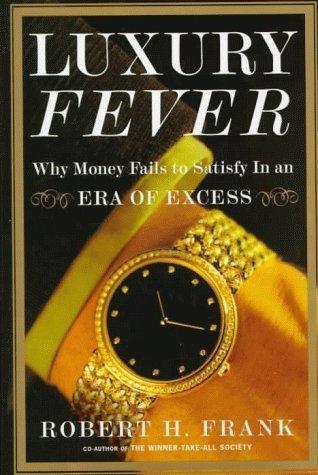
Luxury Fever: Why Money Fails to Satisfy in an Era of Excess
by
Robert H. Frank
Published 15 Jan 1999
Because most of us spend the majority, or at least a large proportion, of our waking hours on the job, our satisfaction with our lives as a whole depends importantly on how satisfied we are with our jobs. A consistent finding in the industrial psychology literature is that job satisfaction increases with the degree to which workers enjoy autonomy and choice with respect to which tasks they do and the manner in which they perform them.48 In laboratory experiments, for example, subjects allowed to choose their own activities spent significantly longer times on a task than did those to whom activities were assigned arbitrarily.49 Autonomy is, of course, not the only factor that influences job satisfaction. For example, workers tend to find greater satisfaction in jobs that provide greater opportunities to make use of their skills.50 And numerous studies have found that job satisfaction increases with the variety of tasks workers are called on to perform.51 The list is endless.
…
For example, workers tend to find greater satisfaction in jobs that provide greater opportunities to make use of their skills.50 And numerous studies have found that job satisfaction increases with the variety of tasks workers are called on to perform.51 The list is endless. For instance, if pay were the same, people would choose safe jobs over risky ones; quiet jobs over noisy ones; jobs with convenient parking over those without; jobs with security over those without; and so on. Giving workers more autonomy sometimes results in greater productivity, sometimes not. When it does, it will of course be in the interests of profit-seeking employers to grant additional autonomy.
…
Cash on the Table 1Raines, 1998. 2Quoted by Pearlstein, 1997, p. A12.d REFERENCES Aaron, Henry J., and William G. Gale . Economic Effects of Fundamental Tax Reform, Washington, DC: Brookings Institution, 1996. Agho, Augustine O.; Charles W. Mueller; and James L. Price . “Determinants of Employee Job Satisfaction,” Human Relations, August, 1993: 1011-19. Ainslie, George. Picoeconomics, New York: Cambridge University Press, 1992. Alesina, Alberto, and Dani Rodrik . “Distribution, Political Conflict, and Economic Growth: A Simple Theory and Some Empirical Evidence,” in Political Economy, Growth, and Business Cycles, ed.
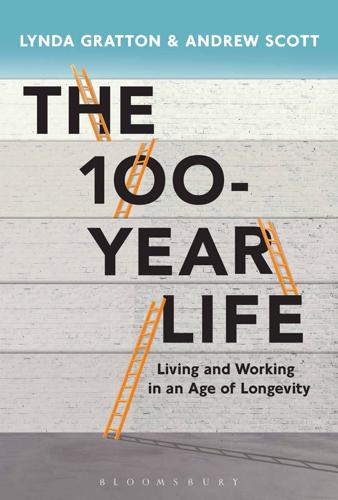
The 100-Year Life: Living and Working in an Age of Longevity
by
Lynda Gratton
and
Andrew Scott
Published 1 Jun 2016
Perhaps even more intriguing is that high wage jobs, and the long hours they demand, may also contain aspects that are enjoyable. This is not to deny the stresses and pressures that come with such positions, but it is striking that studies show that job satisfaction increases with the wage attached to a job.5 It could be that wages are what drive job satisfaction or that the less manual and routine a job, the more enjoyable it is. What seems to be the result is that the more enjoyable a job, the longer hours a person is prepared to work, other things being equal. The enigma of leisure But there are other reasons for feeling time-poor.
…
Chapter 8: Time: From recreation to re-creation 1Ramey, V. and Francis, N., ‘A Century of Work and Leisure’, American Economic Journal: Macroeconomics 1 (2) (2009): 189–224. 2Schor, J., The Overworked American (Basic Books, 1993) and Plenitude: The New Economics of True Wealth (Penguin, 2010). 3Veblen, T., The Theory of the Leisure Class: An Economic Study of Institutions (The Macmillan Company, 1899). 4Costa, D., ‘The Wage and Length of the Work Day: From the 1890s to 1991’, Journal of Labor Economics (1998): 133–59. 5See for instance Grund, C. and Silwka, D., ‘The Impact of Wage Increases on Job Satisfaction – Empirical Evidence and Theoretical Implications’, IZA Discussion Paper 01/2001. 6Ramey, V. A. and Francis, N., ‘A Century of Work and Leisure’ (National Bureau of Economic Research, 2006). 7Aguiar, M. and Hurst, E., ‘Measuring Trends in Leisure: The Allocation of Time Over Five Decades’, Quarterly Journal of Economics 122 (3) (2007). 8Becker, G., ‘A Theory of the Allocation of Time’, Economic Journal (1965): 493–517; Linder, S., The Harried Leisure Class (Columbia University Press, 1970). 9http://www.ft.com/cms/s/0/4899aaf8-0e9f-11e4-ae0e-00144feabdc0.html#axzz3nJ2crVXm 10Goldin, C., ‘A Grand Gender Convergence: Its Last Chapter’, American Economic Review 104 (4) (2014): 1–30. 11Elsbach, K. and Cable, D.
…
Index The letter f following an entry indicates a figure 3.0 scenarios here–here, here, here, here 3.5 scenarios here–here, here, here 4.0 scenarios here–here, here–here, here, here 5.0 scenarios here–here, here, here, here, here, here–here Acorns here activities of daily living (ADL) here adolescence here–here, here adult equivalence scales here age cognition and here–here corporations and here explorers and here–here government policy and here independent producers and here life stages and here–here, here–here portfolios and here predictability of here segregation and here–here, here–here, here, here–here age process algorithms here, here ageing process here, here ageism here, here agency here, here, here finance and here–here agriculture here–here Amazon here anxiety here appearance here Apple iPhone here reputation here Archer, Margaret here Artificial Intelligence (AI) here, here, here, here education and here human skills and here medical diagnoses and here–here, here skills and knowledge and here–here Asia here assets here, here see also intangible assets; tangible assets; transformational assets assortative mating here–here, here Astor, Brooke here Autor, David here–here, here Baby Boomers here–here beauty here Becker, Gary: ‘Treatise on the Family’ here, here–here, here behavioural nudges here Benartzi, Shlomo here benefits here–here see also welfare Bennis, Warren here birth rates, decline in here–here, here brain, the here–here, here–here cognition here Braithwaite, Valerie here Brontë, Charlotte: Jane Eyre here Buffett, Warren here–here Calico (California Life Company) here Calment, Jeanne here careers breaks and here changes and here–here dual careers here, here, here cell aging here centenarians here, here–here change here–here catalysts for here–here corporations and here–here, here education and here–here government policy and here–here, here identity and here–here inequalities and here–here mastery and here–here planning and experimentation and here–here rate of here–here Cherlin, Andrew here chess here children here, here–here, here Christensen, Clayton here Cloud Robotics here cohort estimate of life expectancy here, here, here companies here, here–here, here–here Amazon here Apple here–here change and here–here, here creative clusters here–here economies of scale and here–here Facebook here flexibility here–here, here–here reputation and here–here research and here small business ecosystems here–here technology and here–here Twitter here value creation here–here WhatsApp here compression of morbidity here–here computing power here–here, here–here see also Moore’s Law connectivity here–here consumerism here, here consumption complementarities here–here consumption levels here, here continuums here corporations here–here, here–here see also companies creative clusters here–here independent producers and here–here creativity here cross-age friendships here crucible experiences here–here Deep Learning here dementia here depreciation here developing countries life expectancy and here–here, here state pensions and here Dickens, Charles: Old Curiosity Shop, The here diet here Dimson, Elroy here disabilities here discounting here discretionary time here diverse networks here, here–here Doctorow, Corey: Makers, The here Downton Abbey effect, the here–here Doyle, Arthur Conan here driverless cars here, here dual career households here, here, here Dweck, Carol here–here dynamic/diverse networks here, here–here Easterlin’s Paradox here economy, the here–here agriculture and here–here gig economy here job creation and here–here leisure industry and here service sector and here sharing economy here, here stability and here education here, here–here, here–here see also mastery experiential learning here–here, here, here human skills and judgement and here ideas and creativity and here institutions here–here learning methods here mental flexibility and agility and here–here multi-stage life and here specialization here–here, here, here technology and here, here, here training here efficacy here, here, here–here elasticity here–here emerging markets life expectancy and here state pensions and here emotional spillover here employers here–here, here employment see also companies; employment changes age and here, here–here, here–here changes and here, here, here–here, here–here city migration and here–here creation here–here demographics and here, here–here diverse networks and here–here elasticity and here–here environmental concerns and here–here, here family structures and here–here, here, here–here, here, here, here–here flexibility and here–here, here, here–here, here–here, here–here, here hollowing out of work here–here, here, here home and here job classification here–here knowledge and skills and here levels here, here matches here–here mobility here multi-stage life and here office-based here paid leave here participation rates here–here, here pay here–here, here psychological contract here satisfaction here–here self-employment here–here specialization and here–here statistics here status and here supply and here–here technology and here, here–here, here–here, here, here, here–here, here unique human skills here–here, here vacancies here–here women and here–here working hours here–here, here working week here–here employment changes here, here, here–here companies and here–here industry sectors and here–here, here entrepreneurship here–here see also independent producers equity release schemes here experiential learning here–here, here, here experimentation here, here–here, here–here explorers here–here, here–here adventurers here age and here–here assets and here crucible experiences and here–here options and here–here searchers here, here exponential discounting here exponential growth here–here Facebook here families here, here, here–here, here children here, here–here, here dual career households here, here, here marriage here–here work and here, here finance here, here–here see also pensions age process algorithms here, here agency and here–here automation and here–here costs here–here efficacy and here–here equity release schemes here flexibility here governments and here–here, here, here–here health and here housing and here–here hyperbolic discounting here–here inheritances here–here investment here, here–here, here–here, here, here old age and here–here pay here–here, here pension replacement rates here–here, here, here–here portfolios here–here psychology and here–here retirement and here–here fitness and health here–here see also health Fleming, Ian here flexibility here, here–here, here, here–here, here–here, here corporations and here–here government policy and here–here working patterns and here flexibility stigma here, here Ford, Henry here Foxconn here Frey, Carl here Friedman, Stewart here–here, here Fries, James here, here Future of Work Consortium here future selves here–here future selves case studies Jane here–here, here–here Jimmy here–here, here galumphing here–here gender here, here see also women inequality here–here, here–here, here, here, here specialization of labour here, here–here, here, here, here–here Generation Y here generational attitudes here gerontology here Giddens, Anthony here, here gig economy here–here globalization here Goldin, Claudia here, here Google here governments here, here–here, here inequalities and here–here pensions and here–here rate of change and here–here Gratton, Lynda here Shift, The here growth mindset here–here Groysberg, Boris here Haffenden, Margaret here Hagestad, Gunhild here–here, here Harvard Grant Study here health here, here–here brain, the here–here chronic diseases here–here, here compression of morbidity here–here dementia here diseases of old age here–here finance and here improvements in here–here inequality here, here–here infectious diseases here public health here stress here–here healthy life expectancy here heterogeneity here hollowing out of work here–here, here, here home, work and here household here–here see also home economies of scale and here–here relationships here, here–here, here, here housing here–here imputed rent here, here ownership here HR policies here–here human skills here–here, here, here, here hyperbolic discounting here–here Ibarra, Herminia here identity here–here, here, here–here, here–here see also self-control; self-knowledge improvisation here–here imputed rent here, here income see also welfare distribution here growth and here inequalities here–here, here–here skills and knowledge and here–here income effect here–here independent producers here–here, here–here assets and here case study here–here creative clusters and here–here learning and here–here prototyping here–here reputation and curating and here–here India here–here Individual, the here Industrial Revolution, the here–here, here, here, here inequalities here–here gender and here–here, here–here, here, here, here government policy and here–here health here, here–here income here–here, here–here life expectancy and here–here, here–here, here infant mortality here intangible assets here–here, here–here, here case studies here–here, here–here, here corporations and here–here endowed individual characteristics here, here independent producers and here marriage and here productive assets see productive assets time and here transformational assets see transformational assets transitions and here–here vitality assets see vitality assets International Labour Organization (ILO) here ‘Women and the Future of Work’ here investment here, here–here, here–here, here Japan centenarians here–here life expectancy here, here–here,here–here, here pensions and here population decline and here job classification here–here job creation here–here job satisfaction here–here juvenescence here, here–here, here Kahneman, Daniel here Kegan, Robert here Keynes, John Maynard: Economic Possibilities of Our Grandchildren here knowledge see skills and knowledge Kurzweil, Ray here labour market see employment Lampedusa, Giuseppe : Leopard, The here law (occupation) here–here leadership here learning methods here leisure class here leisure industry here, here, here–here leisure time here, here, here–here, here–here, here–here Keynes, John Maynard and here life expectancy here–here, here see also long life best practice here, here calculating here–here, here chronic diseases and here–here cohort estimate of here, here, here developing countries and here–here diseases of old age and here–here government plans and here healthy life expectancy here historical here, here, here increase in here–here, here India and here–here inequalities in here–here, here–here, here infant mortality and here Japan and here, here–here, here–here, here limit to here–here period life expectancy measure here, here–here public health innovations and here South Korea here US and here–here Western Europe here life stages here–here, here–here age and here–here experiential learning and here explorers and here–here, here–here independent producers and here–here, here–here juvenescence and here, here–here multi-stage model here, here–here, here, here, here–here, here–here, here new stages here, here see also life stages case studies portfolios and here–here, here–here three-stage model here, here–here, here–here, here–here, here–here, here–here, here–here transitions and here life stages case studies diversity and here Jane here–here Jimmy here–here, here lifetime allowances here–here, here, here liminality here Linde, Charlotte here lockstep of action here–here, here London here–here London Business School here long life see also life expectancy as a curse here, here as a gift here, here Luddites, the here machine learning here marriage here–here Marsh, Paul here Marshall, Anthony here mastery here–here matching here–here Millenials here Mirvas, Philip here Modigliani, Franco here MOOCs (Massive Open Online Courses) here, here Moore’s Law here–here, here Moravec’s Paradox here, here morbidity here–here compression of here–here Morrissey, Francis here mortality here mortality risk here multiple selves here–here National Commission on Technology, Automation, and Economic Progress here neighbourhoods here neoplasticity here neoteny here, here new experiences here occupations here–here old age dependency ration here–here, here Ondine, curse of here options here, here–here Osborne, Michael here paid leave here Parfit, Derek here participation rates here–here, here peers here–here pension case studies Jack here, here–here, here, here Jane here, here, here–here, here, here, here, here, here–here Jimmy here–here, here, here–here, here, here, here–here, here three-stage life model here–here, here–here, here–here pension replacement rate here–here, here, here–here pensions here, here–here, here see also pension case studies amount required here–here funded schemes here goals and here government policy and here–here investment and here, here occupational pensions here–here Pay As You Go schemes here–here, here, here pension replacement rate here–here, here, here–here reform and here state pensions here–here, here period life expectancy measure here, here–here personal brands here pharmacy (occupation) here planning here plasticity here–here play here–here politics, engagement with here Polyani’s Paradox here–here, here population here–here, here–here portfolios (financial) here–here portfolios (life stage) here–here, here–here switching costs here transitions and here–here posse here–here, here possible selves here, here–here possible selves case studies Jane here–here Jimmy here–here, here Preston, Samuel here production complementarities here, here–here, here productive assets here–here, here case studies here, here, here–here, here, here, here, here–here, here, here marriage and here transitions and here professional social capital here–here prototyping here–here psychology here, here–here see also self-control age process algorithms here, here automation and here–here behavioural nudges here saving and here–here pure relationships here, here pyramid schemes here re-creation and recreation here–here, here–here recruitment here reflexive project, the here regenerative community here, here, here Relation P here relationships here–here, here, here children and here–here divorce and here–here, here dual career households here families and here–here, here–here friendships here, here–here household here, here–here, here, here marriage and here–here, here–here matches and here–here multi-generational living here–here, here options and here–here pure relationship here switching roles here, here, here, here–here reputation here–here, here–here, here–here retirees here–here retirement see also pensions age of here, here, here, here, here–here, here consumption levels and here corporations and here, here government policy and here–here stimulation in here, here risk here risk pooling here robotics here, here, here, here see also Artificial Intelligence role models here routine here routine activities here routine-busting here routine tasks here–here Rule of here here Sabbath, the here sabbaticals here–here Save More Tomorrow (SMarT plan) here–here Scharmer, Otto here second half of the chessboard here–here segregation of the ages here–here, here–here, here, here–here self-control here–here, here–here age process algorithms here, here automation and here behavioural nudges here self-employment here–here self-knowledge here–here, here finance and here–here service sector here sexuality here–here Shakespeare, William King Lear here sharing economy here–here, here, here short-termism here–here skills and knowledge here, here–here, here see also human skills earning potential and here professional social capital and here–here technology and here–here valuable here–here Slim, Carlos here smart cities here–here independent producers and here–here social media here, here–here society here spare time here see also leisure time standardized practices here–here Staunton, Mike here strategic bequest motive, the here–here substitution effect here switching here, here, here, here–here tangible assets here–here, here, here, here, here see also housing; pensions case studies here, here, here, here, here, here transitions and here taxation here, here–here Teachers Insurance and Annuity Assurance scheme here technology here, here see also Artificial Intelligence computing power here–here, here–here see also Moore’s Law driverless cars here–here, here education and here, here, here employment and here, here–here, here–here, here, here, here–here, here human skills and here, here innovation and here matching and here relationships and here teenagers here–here, here–here, here, here Thaler, Richard here thick market effects here–here Thomas, R. here time here, here–here see also sabbaticals discretionary time here flexibility and here–here, here Industrial Revolution, the here–here, here–here, here intangible assets and here leisure and here, here, here–here, here–here, here–here restructuring here, here spare time here working hours here–here, here, here–here working hours paradox here–here, here working week, the here–here, here time poor here–here trade unions here transformational assets here, here–here, here–here, here, here, here case studies here–here, here–here, here–here, here–here, here, here, here, here crucible experiences and here corporations and here transitions here, here–here, here–here, here corporations and here financing here–here government policy and here, here nature of here–here portfolios and here–here re-creating here recharging here–here tribal rituals here Twitter here Uhlenberg, Peter here–here, here UK, occupational pension schemes and here–here Unilever here universities here US here–here compression of morbidity and here occupational pension schemes and here Valliant, George here value creation here vitality assets here, here–here, here case studies here, here–here, here, here, here–here, here, here, here, here transitions and here–here website here week, the here–here weekend, the here, here weight loss here welfare here–here see also benefits Wharton School of the University of Pennsylvania here–here, here WhatsApp here Wolfran, Hans-Joachim here women see also gender children and here–here relationships and here, here, here work and here–here Women and Love here work see employment working hours here–here, here, here–here working week, the here–here, here Yahoos here–here youthfulness here–here Bloomsbury Information An imprint of Bloomsbury Publishing Plc 50 Bedford Square 1385 Broadway London New York WC1B 3DP NY 10018 UK USA www.bloomsbury.com BLOOMSBURY and the Diana logo are trademarks of Bloomsbury Publishing Plc First published 2016 © Lynda Gratton and Andrew Scott, 2016 Lynda Gratton and Andrew Scott have asserted their right under the Copyright, Designs and Patents Act, 1988, to be identified as Author of this work.

If You're So Smart, Why Aren't You Happy?
by
Raj Raghunathan
Published 25 Apr 2016
GOAL AVERAGE RANK 1 Great/fulfilling relationships 3.19 2 Being happy 3.31 3 Great career success 4.78 4 Being rich 5.46 5 Being a good person; helping others 6.23 6 Being free to do as you please 7.44 7 Job satisfaction 8.12 8 Physical health 8.86 9 Being famous 9.45 10 Respect/admiration of peers 9.56 11 Spiritual growth 10.19 12 Being really good at something/achieving mastery 11.23 13 Figuring out the meaning of life 11.34 14 Finding your purpose in life 11.79 15 Physical attractiveness 12.22 16 Being powerful 12.67 Sixteen “Life Goals” and Their Average Rank Across Respondents As it turns out, there’s an intriguing reason why people don’t ask the Genie for happiness.
…
Getting Flow Back into Your (Work) Life If flow is a critical determinant of both happiness and success, then it follows that finding flow at work is important, as we spend the bulk of our “waking life” at work. However, most of us do not find work to be as meaningful or satisfying as we should—or could. A recent worldwide survey revealed that about twice as many employees are dissatisfied with their jobs as are satisfied. This wasn’t always the case. In the 1970s and 1980s, job satisfaction in the United States was much higher than it currently is. Most people recognize that it’s a shame to find work meaningless and unfulfilling. Which is why, as Herminia Ibarra, author of a book called Working Identity, notes, so many of us dream of quitting our jobs one day and doing something more meaningful.
…
If neediness lowers happiness, one might assume that the opposite of neediness—avoidance—would enhance happiness. But that’s not the case. The discomfort that avoidants feel with intimacy spoils the quality of their relationships. This is a problem that avoidants face both in romantic and in workplace settings. For instance, avoidants experience lower job satisfaction than do either the needy or the secure. Avoidants are also prone to being less satisfied with the help they get from others, and this in turn makes them less likely to engage in healthy collaboration with others. Unsurprisingly, therefore, avoidants aren’t very effective as leaders. A final reason why being avoidant lowers happiness is because, like neediness, it leads to loneliness.
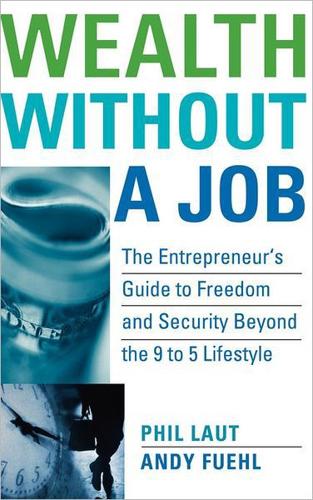
Wealth Without a Job: The Entrepreneur's Guide to Freedom and Security Beyond the 9 to 5 Lifestyle
by
Phil Laut
and
Andy Fuehl
Published 12 Sep 2004
Library of Congress Cataloging-in-Publication Data Laut, Phil. Wealth without a job : the entrepreneur’s guide to freedom and security beyond the 9 to 5 lifestyle / Phil Laut and Andy Fuehl. p. cm. Includes index. ISBN 0-471-65645-3 (cloth) 1. New business enterprises. 2. Entrepreneurship. 3. Job satisfaction. 4. Success in business. I. Fuehl, Andy, 1962– II. Title. HD62.5.L38 2004 658.1'1—dc22 2004002226 Printed in the United States of America. 10 9 8 7 6 5 4 3 2 1 ftoc.qxd 7/9/04 8:20 AM Page vii C O N T E N T S Acknowledgments ix Introduction 1 Earning the Income You Want from Work You Love 11 The Old Methods No Longer Work in Today’s Economy 19 Chapter 3 What the Global Economy Means to You 27 Chapter 4 The Emotional Dynamics of Change 31 Chapter 5 Three Ingredients to Effective Change: Awareness, Acceptance, and Action 61 Chapter 6 Your Recovery from a Good Upbringing 71 Chapter 7 Stop Wasting Your Energy 107 Chapter 8 Your Mind Is Not a Democracy 131 Chapter 9 Mental Flexibility for Peak Performance 159 Chapter 1 Chapter 2 vii ftoc.qxd 7/9/04 8:20 AM Page viii viii Contents Chapter 10 Overall Business Model 179 Chapter 11 Negotiation 185 Chapter 12 Secrets of Compelling Communication 193 Chapter 13 Learning to Sell the Easy Way 209 Chapter 14 Putting It All Together into a Plan 249 Appendix 263 About the Authors 267 Index 273 flast.qxd 7/9/04 8:20 AM Page ix A C K N O W L E D G M E N T S W e extend our heartfelt thanks to the many people who have aided and inspired us in the creation of this book: Linda Konner, our literary agent, for her guidance and wisdom.
…
Then there is the depressing discovery that salary offers are lower than the job that was left, even though pointing this out may not be politically correct. A so-called side business can offer benefits far beyond the income that it produces. Some of these benefits are: • It can be a prudent first step toward a full-time business of your own. ccc_laut_intro_1-10.qxd 7/8/04 12:22 PM Page 9 Introduction • It can increase your job satisfaction by reducing dependency on your job. • It can be a risk-free way to learn a new occupation. • It can be a way to discover if you would enjoy some new occupation. • It can be a way to grow and expand your mind, discover your true potential and who you really are. Additionally, the fact that job security has disappeared means that you are likely to be in the job market several times during a career, sometimes willingly and other times not.
…
Known enemies! This may seem a mere play on words until you consider the sometimes 83 ccc_laut_ch06_71-106.qxd 7/8/04 12:24 PM Page 84 84 Your Recovery from a Good Upbringing suppressed animosity between employers and workers that seems to be expressed only from time to time in labor strife. Job satisfaction is impossible if you view your employer as an adversary. If you follow rule 9, you perform at less than your best or sabotage your success. Why? Excellence always rocks the boat. If you follow rule 10, success does not seem to be worth the price. People try to prove this to be correct by creating endless obstacles and struggles.

Lean In: Women, Work, and the Will to Lead
by
Sheryl Sandberg
Published 11 Mar 2013
Erchull et al., “Well … She Wants It More: Perceptions of Social Norms About Desires for Marriage and Children and Anticipated Chore Participation,” Psychology of Women Quarterly 34, no. 2 (2010): 253–60, which surveyed college students and found no difference between men and women in their self-reported level of desire to marry. 3. For reviews of studies about job satisfaction and turnover, see Petri Böckerman and Pekka Ilmakunnas, “Job Disamenities, Job Satisfaction, Quit Intentions, and Actual Separations: Putting the Pieces Together,” Industrial Relations 48, no. 1 (2009): 73–96; and Brooks et al., “Turnover and Retention Research: A Glance at the Past, a Closer Review of the Present, and a Venture into the Future,” The Academy of Management Annals 2, no. 1 (2008): 231–74. 4.
…
Carter, and Christine Silva, “Why Men Still Get More Promotions than Women,” Harvard Business Review 88, no. 9 (2010): 80–85; and Sylvia Ann Hewlett et al., The Sponsor Effect: Breaking Through the Last Glass Ceiling, a Harvard Business Review Research Report (December 2010): 5–7. 2. Studies have found that people who are mentored and sponsored report having more career success (such as higher compensation, a greater number of promotions, greater career and job satisfaction, and more career commitment). See Tammy D. Allen et al., “Career Benefits Associated with Mentoring for Protégés: A Meta-Analysis,” Journal of Applied Psychology 89, no. 1 (2004): 127–36. A study of several thousand white collar workers with at least a bachelor’s degree found that sponsorship seemed to encourage both men and women to ask for a stretch assignment and a pay increase.

Reinventing Capitalism in the Age of Big Data
by
Viktor Mayer-Schönberger
and
Thomas Ramge
Published 27 Feb 2018
In 2011, a former Amazon engineer named Steve Yegge garnered international attention when he shared his thoughts on his ex-boss in a rant on Google Plus that he had not meant to post publicly. “Bezos is super smart; don’t get me wrong,” Yegge noted. “He just makes ordinary control freaks look like stoned hippies.” On Glassdoor, the website where employees can anonymously rate their employers and managers, Amazon has ranked notoriously low in job satisfaction compared to other darlings of Silicon Valley. Many reviews complain about the demands placed on employees and declare that they have no autonomy. A 2015 New York Times investigation of working conditions among office staff found that employees are “held accountable for a staggering array of metrics” about different aspects of the firm’s operations—running about fifty pages long—and are asked to explain detected inefficiencies in weekly and monthly business review sessions.
…
In part, though, it is also an attempt to refocus those participating in the market on the diversity of preferences that influence job choices. By using salary prominently in internal talent markets, managers and employees would be tempted to optimize largely on price, thereby running the risk that market participants will overlook other dimensions that are important for job satisfaction. Price can be deemphasized in such internal job-matching platforms by mandating that all parties stick to firmwide salary bands, which are not individually negotiable. That way, some flexibility in agreeing on a salary is retained but the emphasis on it is reduced. Talent-matching platforms are an intriguing way to inject markets rich with information into the organizational structure of the firm.
…
INDEX abundance of capital, 142–143, 194 of resources, 220–221 accounting, 90 development of, 91–95 reform of, 172–173 Air France Flight 447, 157–159, 170–171 Airbnb, 70 airline industry, 112 Akerlof, George, 40 Alation, 70 Alexa, 79, 164 Alexandria library, 21 algorithms, 5, 8–9, 71–77, 81, 82, 84, 136, 210 development process for, 71–72 fintechs and, 153 firms and, 128 lack of diversity in, 12 open, call for, 167 opportunities provided by, 74–75 Alibaba, 2, 75, 163, 196, 215 Allende, Salvador, 176, 177 Altman, Sam, 189 Amazon, 9, 30, 52, 68, 69, 74, 75, 76–77, 79, 87–89, 96, 102, 107 annual revenues of, 87 data-rich market structure and, 130 feedback effects and, 164 as a firm, 88–89, 106 low job satisfaction in, 88–89 market concentration in, 161 market model of, 87–88 network effects and, 164 research & development in, 196 scale effects and, 164 American Express, 127 American Research and Development Corporation, 216 Andreesen, Marc, 189 Angkor Wat, 21 animal skins (as currency), 48 antitrust measures, 12, 165 Apollo spacecraft, 22, 159 Apple, 55, 75, 79, 121–122, 169, 196, 215 Apple Music, 74 Apple Pay, 135–136, 146 Arendt, Hannah, 223 Armstrong, Neil, 22 artificial intelligence.

Clear Your Clutter With Feng Shui
by
Karen Kingston
Published 31 Aug 1998
There was once a wonderful book by Declan Treacy with just that title (sadly, it’s no longer in print), in which he described the desks and business practices of some of the top entrepreneurial businesspeople in the world, who all keep paperwork to a minimum. A clear desk means a clear mind, and a clear mind has vision and perspective. If you are bogged down in paperwork, that’s exactly where you’ll stay. Working with a clear desk increases productivity, creativity, and job satisfaction. An excellent habit to acquire is to always leave your desk clear whenever you finish. It is psychologically far more uplifting to start with a clear desk than with mounds of paperwork, which makes you feel defeated before you even begin. So start now by removing from your desk absolutely all paperwork that awaits your attention and all objects that are not absolutely vital.
…
Make it clear when you will be available, and do the same with emails and voice calls (use autoresponders and voicemail messages to inform people). Give an emergency access route when absolutely necessary and you’ll find most people will adapt to your rules. By planning your interruptions instead of having them constantly bombard you without any control, your productivity and job satisfaction will increase, and your immune system will not take such a pounding. In lab experiments, animals given control of their environment live longer, have higher antibody counts, and fewer ulcers. Your choice. One man sent an email to tell me, “I am busy clearing the clutter. Now I see more clutter than ever.

The Personal MBA: A World-Class Business Education in a Single Volume
by
Josh Kaufman
Published 2 Feb 2011
Sometimes that response is well defined—as we discussed earlier, your body knows exactly what it needs to do to regulate blood glucose. Often, however, you don’t know exactly what is wrong—or how to fix it. Think of a perception as abstract as “job satisfaction”—there’s a set point in your mind that stands for “how happy I should be at work,” and your perception of job satisfaction is an average of your actual experiences at work. Pleasant experiences move the average higher, and unpleasant experiences move the average lower. If your perception of “job satisfaction” is lower than you think it should be (your Reference Level), your brain will kick into action—“I’m not as happy as I should be . . . Something needs to change.”
…
This mentality led to the widespread use of financial incentives to influence behavior: salary, bonuses, stock options, and so on, in an effort to encourage business professionals and managers to act in the best interest of corporate shareholders. There’s an enormous (and growing) body of evidence that direct incentives often undermine performance, motivation, and job satisfaction in the real world.13 Despite more useful competing theories of human action, 14 the search for the magic stimulus continues in business school classrooms to this day. In Search of Distribution Any technique, however worthy and desirable, becomes a disease when the mind is obsessed with it.
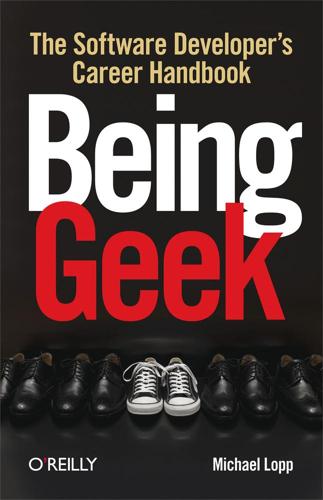
Being Geek: The Software Developer's Career Handbook
by
Michael Lopp
Published 20 Jul 2010
There's a litany of good reasons to be angry with your boss, your company, or your team, but you don't want to start a job change being pissed off. Nothing taints common sense more than being pissed off. Early Warning Signs of Doom Choosing to subject yourself to a recruiting cold call is just one sign that cracks are forming in your job satisfaction. There are others... Engagement How engaged are you in your work? I know you love working on that new feature in the product—you'll always love doing new things—but how about the busy work? How engaged are you in the work that is necessary but tedious? Remember when you joined the company and everyone was bright and you had no clue the boring work was, well, boring?
…
It's an early sign that the core satisfaction in my job has begun to erode when I'm unable to charge through the work I hate. Wanderlust How much are you thinking about your job when you're not working? When you go to sleep? My question is: how much are you thinking about your job when you don't have to? There's a larger job satisfaction analysis going on inside of wanderlust. In hi-tech, 9 to 5 jobs are dead. I'm a fervent supporter of maintaining a work-life balance that allows you to explore as much of the planet Earth as possible, but I'm also the guy who thinks if you're going to do this job, you should be absolutely fucking crazy about it.
…
I don't really build anything, I...do stuff." This made the first engineering gig a revelation. "You. We are building a database application and you own this specific part. It is entirely yours. Don't fuck it up." Delicious, delicious structure. Sweet, sweet definition. These basic and essential elements of job satisfaction are at the root of why many engineers make horrible managers. They are trained as and love to be control freaks. The New Gig Now you have a new job. You have an office and you have a door. On your desk, there's a timer that tracks the number of seconds that it's just you alone in your office.
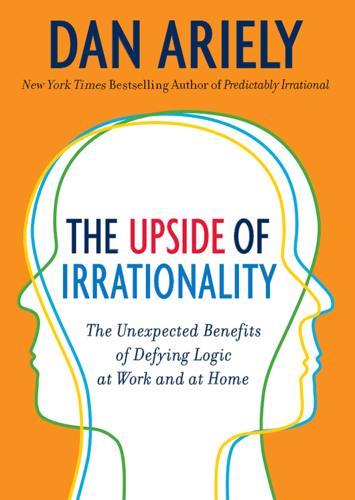
The Upside of Irrationality: The Unexpected Benefits of Defying Logic at Work and at Home
by
Dan Ariely
Published 31 May 2010
A few months later we aren’t as annoyed by the color of the cabinets, but at the same time, we don’t derive as much pleasure from the handsome floors. This type of emotional leveling out—when initial positive and negative perceptions fade—is a process we call hedonic adaptation. Just as our eyes adjust to changes in light and environment, we can adapt to changes in expectation and experience. For example, Andrew Clark showed that job satisfaction among British workers was strongly correlated with changes in workers’ pay rather than the level of pay itself. In other words, people generally grow accustomed to their current pay level, however low or high. A raise is great and a pay cut is very upsetting, regardless of the actual amount of the base salary.
…
A Accessory Transit Company, 154 acknowledging workers, 74–76, 80 acronyms, 120 adaptation, 157–90 assortative mating and, 191–212; see also assortative mating focusing attention on changes and, 159–60 hedonic, 160–84; see also hedonic adaptation nineteenth-century experiments on, 157–58 to pain, 160–67 physical, 157–60, 161n sensory perception and, 158–60 Aesop, 198–99 agriculture, obesity and technological developments in, 8 AIDS, 250, 251 airlines, customer service problems of, 142–43 alienation of labor, 79–80 American Cancer Society (ACS), 241–42, 249–50, 254 Andrade, Eduardo, 262, 265, 267–68, 299 anger, acting on, 257 author��s anecdote of, 258–61 driving and, 261 ultimatum game and, 268, 269–70, 273, 274, 276 animals: empathy for suffering of, 249 generalizing about human behavior from studies on, 63 working for food preferred by, 59–63 annoying experiences: breaking up, 177–79, 180 decisions far into future affected by, 262–64 annuities, 234 anterior insula, 266–67 anticipatory anxiety, 45 Anzio, Italy, battle of (1944), 167 apathy toward large tragedies, 238–39 drop-in-the-bucket effect and, 244–45, 252, 254–55 statistical condition and, 238–41, 242, 246, 247–49, 252–53 apologies, 149–51 for medical errors, 152 Apple, 120n battery replacement issue and, 141–42 art, homemade, 89–90 Asian tsunami, 250, 251 assembly line, 78–79 assortative mating, 191–212 altering aesthetic perception and (sour grapes theory), 198–99, 200, 201, 203 author’s injuries and, 191–96, 210–11 dinner party game and, 198 failure to adapt and, 200–201, 203–5 gender differences and, 209, 211 HOT or NOT study and, 201–5, 208, 211 reconsidering rank of attributes and, 199–200, 201, 205–10 speed-dating experiment and, 205–10 Atchison, Shane, 140–41, 146 attachment: to one’s own ideas, see Not-Invented-Here (NIH) bias to self-made goods, see IKEA effect attractiveness, assortative mating and, 191–212 see also assortative mating auctions, first-price vs. second-price, 98–99 Audi customer service, author’s experience with, 131–36, 137, 149, 153–54 experimental situation analogous to, 135–39 fictional case study for Harvard Business Review based on, 147–49 B bailout, public outrage felt in response to, 128–31 baking mixes, instant, 85–87 bankers: author’s presentation of research findings to, 107–9, 121 bonus experiments and, 38–41, 51 Frank’s address to, 41 public outrage in response to bailout and, 128–31 bankruptcy, 129, 130 Barkan, Racheli, 39, 109–10, 299 basketball, clutch players in, 39–41 beauty: assortative mating and, 196–212; see also assortative mating general agreement on standard of, 203 Becker-DeGroot-Marschak procedure, 91 Beecher, Henry, 167 behavioral economics: goal of, 9–10 human rationality not assumed in, 6–7 revenge as metaphor for, 124n Betty Crocker, 87 Bible, Gideon’s conversation with God in, 288–89 blindness, adaptation to, 172–74 blogging, 65 Blunder (Shore), 117 boiling-frog experiment, 157–58 bonuses, 17–52 bank executives’ responses to research on, 37–39 clutch abilities and, 39–41 for cognitive vs. mechanical tasks, 33–36, 40–41 creativity improvements and, 47–48 experiments testing effectiveness of, 21–36, 44–46 Frank’s remarks on, 41 intuitions about, 36–37 inverse-U relationship between performance and, 20–21, 47 loss aversion and, 32–33 optimizing efficacy of, 51–52 public rage over, 21 rational economists’ view of, 36–37 social pressure and, 44–46 surgery situation and, 48–49 viewed as standard part of compensation, 33 in wake of financial meltdown of 2008, 131 brain: judgments about experiences and, 228–29 punishment and, 126 breaks, in pleasant vs. painful experiences, 177–81 Brickman, Philip, 170 business, experimental approach to, 292–93 C cake mixes, instant, 85–87 California, moving to, 176 Call, Josep, 127 cancer, American Cancer Society fundraising and, 241–42, 249–50, 254 canoeing, romantic relationships and, 278–79 cars, 215–16 designing one’s own, 88, 89 division of labor in manufacture of, 78–79 in early days of automotive industry, 94 hedonic treadmill and, 175 see also driving cell phones, 7 in experiments on customer revenge, 135–39, 145–46, 150–51 see also texting CEOs, very high salaries and bonuses paid to, 21 Chance, Zoë, 220, 300 changes: ability to focus attention on, 159–60 decisions about life’s path and, 287 in future, foreseeing adaptation to, 160, 171–74 status quo bias and, 285, 286 in workers’ pay, job satisfaction and, 169–70 charities: American Cancer Society (ACS), 241–42, 249–50, 254 calculating vs. emotional priming and, 246–48 emotional appeals and, 240–42, 248–50, 253–54, 256 identifiable victim effect and, 239–42, 248, 256 charities (cont.) mismatching of money and need and, 250–51 motivating people to take action and, 252–56 Chat Circles, 225 cheating, 76 childbirth, pain of, 168, 169n children: in growing and preparing of food, 121 parents’ overvaluation of, 97–98 chimpanzees, sense of fairness in, 127 chores, taking breaks in, 177–79, 180 civil liberties, erosion of, 158 Clark, Andrew, 169 climate change, 251–52 closeness, empathy and, 243, 245, 254 clutch abilities, 39–41 CNN, 238 Coates, Dan, 170 cockroaches, social pressure in, 45–46 commercial breaks, enjoyment of television and, 181n comparisons, hedonic adaptation and, 189 compensation, 47 changes in, job satisfaction and, 169–70 see also bonuses completion: employees’ sense of, 77, 79–80 Loewenstein’s analysis of mountaineering and, 80–81 computers, 233 consumer purchases, 185–88 happiness derived from transient experiences vs., 187–88 hedonic treadmill and, 175 placing limits on, 186–87 reducing, 185–86 spacing of, 185, 186 contrafreeloading, 60–63 Jensen’s study of, 60–62, 63 standard economic view at odds with, 62–63 Converse, 95 cooking: children’s involvement in, 121 enjoyment factor and, 62n, 105–6 semi-preprepared food and, 85–88 CO2 emissions, 251–52 counting strategies, 282–83 Count of Monte Cristo, The (Dumas), 123 creation, pride of: ideas and, see Not-Invented-Here (NIH) bias self-made goods and, see IKEA effect creativity, bonuses and improvements in, 47–48 Csíkszentmihályi, Mihály, 49 cultures, organizational: acronyms and, 120 Not-Invented-Here bias and, 119–21 customer revenge, 131–51 against airlines, 142–43 apologies and, 149–51, 152 author’s experience with Audi customer service and, 131–36, 137, 147–49, 153–54 distinction between agents and principals and, 144–47 Farmer and Shane’s “Yours Is a Very Bad Hotel” and, 140–41, 146 fictional case study for Harvard Business Review on, 147–49 increase in, 143 Neistat brothers’ video on Apple’s customer service and, 141–42 passage of time and, 151 phone call interruption experiments on, 135–39, 145–46, 150–51 customization, 94–96 of cars, 88, 89, 94 effort expended in, 89, 95–96 overvaluation despite removing possibility of, 96 of shoes, 95, 96 D Dallaire, Roméo, 255 Darfur, 238, 253 Dart Ball game, 23, 34 Darwin, Charles, 157 dating, 191–235 market failures in, 213–15, 216–17, 220–21, 230–32, 233–35 playing hard to get and, 104 standard practice of, 224–25, 227–28 yentas (matchmakers) and, 213 see also assortative mating; online dating; speed dating decision making: author’s medical care and, 284–88 cooling off before, 257, 279 emotions and, 261–77 gender differences and, 274–76 irreversible decisions and, 285, 286 rationalization of choices in, 287 from rational perspective, 5–6 short-term, long-term decisions affected by, 264–65, 270–74, 276–77 stability of strategies for, 261–65; see also self-herding ultimatum game and, 265–70, 275–76 dentistry, adaptation to pain and, 161–62 design, taking people’s physical limitations into account in, 230–32 destroying work in front of workers, 74–76 Dichter, Ernest, 86 disease: adaptation to pain and, 165, 167 preventative health care and, 251, 256 “survivor” rhetoric and, 241–42 Disney, 154 distraction, performance-based incentives and, 30, 36 division of labor, 77–80 IT infrastructure and, 77, 79–80 Marx’s alienation notion and, 79 Smith’s observations on, 77–78 divorce, foreseeing outcome of, 173 Dodson, John, 18–20, 22, 31, 47 do-it-yourself projects, see IKEA effect Donath, Judith, 225 Dostoyevsky, Fyodor, 157 Doubletree Club, Houston, 140–41, 146 dreams, author’s self-image in, 182–83 DreamWorks SKG, 154 driving: momentary anger during, 261 safety precautions and, 6–7 texting during, 6, 7, 8 see also cars drop-in-the-bucket effect, 244–45, 252, 254–55 Dumas, Alexandre, 123 E Eastwick, Paul, 172–73 Edison, Thomas, 117–19, 122 effort: increase in value related to, 89, 90, 95–96, 105–6; see also IKEA effect joy derived from activity and, 71–72 meaningful work conditions and, 72 ownership of ideas and, 114–16 see also labor egg theory, 86–88 Eisner, Michael, 154 electric chair, 119 electricity, alternating current (AC) vs. direct current (DC), 117–19 emotional cascades, 265–78 gender differences and, 274–76 romantic relationships and, 277–78 ultimatum game and, 265–76 emotional priming: empathy for plight of others and, 246–48 ultimatum game and, 268–70 emotions, 43, 237–79 appeals to, willingness to help others and, 240–42, 248–50, 253–54, 256 decision making and, 261–77; see also decision making in past, humans’ poor memory of, 264 transience of, 257, 261, 270 see also empathy; negative feelings, acting on empathy: animals’ suffering and, 249, 252 apathy toward statistical victims and, 238–41, 242, 246, 247–49, 252–53 Baby Jessica saga and, 237–38 calculating vs. emotional priming and, 246–48 clear moral principles and, 255 closeness and, 243, 245, 254 drop-in-the-bucket effect and, 244–45, 252, 254–55 emotional appeals and, 240���42, 248–50, 253–54, 256 global warming and, 251–52 identifiable victim effect and, 239–42, 248, 256 overcoming barriers to, 252–56 rules to guide our behavior and, 254–55 thought experiment of drowning girl and, 242–43, 245 toward one person vs. many in need, 237–56 vividness and, 24, 243n, 244, 245 endowment effect, 285, 286 Enron, 216 evolution, mismatch between speed of technological development and, 8–9 experiments, 10–11, 288–95 business or public policy and, 292–94, 295 of Gideon, 288–89 medical practice and, 289–92 rational economists’ criticisms of, 49–51 see also specific topics Exxon Valdez oil spill, 249 F fairness, sense of: in chimpanzees, 127 decision making and, 266–67; see also ultimatum game gender differences and, 275–76 Fallows, James, 158 Farmer, Tom, 140–41, 146, 148–49 FedEx, 108–9 feedback, about work, 74–76 Feeks, John, 118–19 Fehr, Ernst, 125–26 financial incentives: meaning of labor and, 72–73, 76 see also bonuses financial markets, safety measures for, 7 financial meltdown of 2008, 7, 21, 216 chronology of events in, 129–30 desire for revenge in wake of, 128–31 lack of experimental approach to, 293 outraged public reaction to bailout in, 128–29, 130 Finkel, Eli, 172–73 First Knight, 50 fixation, pride in creation and ownership and, 89, 122 food: animals’ preference for working for, 59–63 semi-preprepared, 85–88 shortages of, identifiable victim effect and, 239–41 see also cooking Food and Drug Administration (FDA), 292 Ford, Henry, 78–79, 94 Forgea (white terrier), 249 Fox, Michael J., 254 “Fox and the Grapes, The” (Aesop), 198–99 Frank, Barney, 41 Frankl, Viktor, 45 free food, animals’ preference for working for food vs., 60–62 Frenk, Hanan, 161–65, 300 Friends, ultimatum game and, 269, 270–71, 272 frog experiment, 157–58 Frost, Jeana, 219–20, 229, 300 Fryer, Bronwyn, 148 furniture, do-it-yourself, 83–84, 96, 105, 106 future, foreseeing adaptation to changes in, 160, 171–74 G gardening: children growing food and, 121 enjoyment factor and, 105–6 gender differences: assortative mating and, 209, 211 decision making and, 274–76 pain threshold and tolerance and, 168–69 Gideon, 288–89 global warming, 158, 251–52 Gneezy, Ayelet, 135, 144–45, 150, 300–301 Gneezy, Uri, 21, 44, 301 Gore, Al, 158, 252 government policies, experimental approach to, 292–94, 295 H happiness: comparisons to other people and, 189 consumer purchases and, 175, 185–88 inaccurate predictions about, 170–71 return to baseline of, 170 transient vs. constant experiences and, 187–88 Harvard Business Review (HBR), 147–49 health care, see medical care hedonic adaptation, 160–84 to annoying experiences, 177–79, 180 author’s personal history and, 181–84, 189 blindness and, 172–74 breaking up experiences and, 177–81 changes in workers’ pay and, 169–70 comparisons to other people and, 189 consumer purchases and, 175, 185–88 extending pleasurable experiences and, 176–78, 179–81, 185, 186 in future, foreseeing of, 160, 171–74 happiness baseline and, 170 life-altering injuries and, 171–72, 174 moving to California and, 176 new houses and, 168–69 pain and, 160–67 romantic breakups and, 172–73 to transient vs. constant experiences, 187–88 using our understanding of, 176–81, 184–90 hedonic disruptions, 177–81 hedonic treadmill, 175 Heingartner, Alexander, 45–46 Henry, O., 98 herding, 262 see also self-herding Herman, Edward, 45–46 Hippocrates, 82 Hogerty, Megan, 81 homeostatic mechanisms, 81 Hong, James, 201, 203 HOT or NOT study, 201–5, 208 gender differences in, 209, 211 Meet Me feature and, 204–5, 208, 209 humor, sense of, 199, 200, 207, 208, 228 Hurricane Katrina, 250, 251 I ideas: attachment to, see Not-Invented-Here (NIH) bias idiosyncratic fit and, 111–12 identifiable victim effect, 239–42, 248, 256 American Cancer Society and, 241–42 identity, connection between work and, 53–55, 79 idiosyncratic fit, ideas and, 111–12 ignoring workers, 74–76 IKEA, 83–84, 106 IKEA effect, 83–106 author’s creations in rehabilitation center and, 100–101 completion of project and, 101–4, 105 do-it-yourself furniture and, 83–84, 96, 106 effort expended and, 89, 90, 95–96, 105–6 four principles in, 104–5 and lack of awareness of overvaluation, 99 Legos experiment and, 96, 97 Local Motors cars and, 88, 89 Not-Invented-Here (NIH) bias and, 109–10, 121 origami experiments and, 91–94, 97, 98–99, 102–4 parents’ overvaluation of their children and, 97–98 practical implications of, 121–22 relaxation notion and, 105–6 removal of individual customization and, 96 semi-preprepared food and, 85–88 shoe design and, 95, 96 immediate gratification, 5 Inconvenient Truth, An, 252 initiation into social groups, 89 injuries: association of pain with getting better after, 166–67 author’s dating prospects and, 191–96, 210–11 author’s decisions about his medical care and, 284–88 author’s personal history related to, 1–4, 13, 107, 160–62, 166–67, 181–84, 189, 191–96, 210–11, 281–88 battlefield vs. civilian, 167 foreseeing future after, 160 life-altering, adaptation to, 160, 171–72, 174 pain thresholds and tolerance related to severity of, 161–65 Institute for Evolutionary Anthropology, Leipzig, Germany, 126–27 insurance products, 233–34 interruptions: in pleasant vs. painful experiences, 177–81 TV commercials and, 181n see also phone call interruption experiments intuitions: bonuses and, 36–37 received medical wisdom and, 289–92 romantic, 172–73 testing of, 10n, 288–95 inverse-U relationship, defined, 19 iPods and iPhones, battery replacement in, 141–42 irrationality: summary of findings on, 288 upside as well as downside of, 11–12, 294 irreversible decisions, 285, 286 IT infrastructure, division and meaning of labor and, 77, 79–80 J Janoff-Bulman, Ronnie, 170 Jensen, Glen, 60–62, 63 Jensen, Keith, 127 Jewish tradition, 254–55 Johns Hopkins Bloomberg School of Public Health, Baltimore, 152 Joyless Economy, The (Scitovsky), 188 justice, see fairness, sense of K Kahneman, Danny, 32n, 175–76 Kamenica, Emir, 66, 301 Katzenberg, Jeffrey, 154 Kemmler, William, 119 kinship, empathy and, 243 Krishnamurti, Tamar, 172–73 Krzyzewski, Mike, 39 L labor: connection between identity and, 53–55, 79 contrafreeloading and, 60–63 economic model of, 55, 62–63, 105 financial incentives and, see bonuses meaning of, see meaning of labor overvaluation resulting from, see IKEA effect on projects without meaning, 56–57, 63–72 Labyrinth game, 23 Lee, Leonard, 132, 134, 197, 201–2, 301–2 Lee, Sandra, 87–88 leeches, medicinal use of, 290–91 Legos experiments: on IKEA effect, 96, 97 on reducing meaningfulness of work, 66–74, 77, 80 letter-pairs experiment, 74–76, 80 life-altering events, hedonic adaptation and, 170 Life as a House, ultimatum game and, 268, 269, 270, 272, 276 light, adaptation to changes in, 159 Local Motors, Inc., 88, 89 Loewenstein, George, 21, 44, 80–81, 172–73, 197, 201–2, 239–41, 246–48, 302 long-term objectives, short-term enjoyments vs., 4–5 loss aversion, 32–33, 285, 286 lottery winners, hedonic adaptation of, 170, 171 “Love the One You’re With,” 197, 211–12 M malaria, 250, 251 Man’s Search for Meaning (Frankl), 45 marketing, adaptation and, 158 market mechanisms, 215–16 dating and, 213–15, 216–17, 220–21, 230–32, 233–35 Marx, Karl, 79 massages, extending pleasure of, 179–80 matchmakers (yentas), 213 Mazar, Nina, 21, 30, 44, 302 McClure, Jessica (Baby Jessica), 237–38 meals, see cooking meaning of labor, 53–82 in acknowledged, ignored, and shredded conditions, 74–76 animals’ preference for working for food and, 59–63 blogging and, 65 division of labor and, 77–80 draining work of meaning and, 55–57, 63–77 financial incentives and, 72–73, 76 joy derived from activity and, 71–72 labor-identity connection and, 53–55, 79 Legos experiment and, 66–74, 76, 80 lessons for workplace on, 80–82 letter-pairs experiment and, 74–76, 80 “meaning” vs.
…
mismatching of money and need and, 250–51 motivating people to take action and, 252–56 Chat Circles, 225 cheating, 76 childbirth, pain of, 168, 169n children: in growing and preparing of food, 121 parents’ overvaluation of, 97–98 chimpanzees, sense of fairness in, 127 chores, taking breaks in, 177–79, 180 civil liberties, erosion of, 158 Clark, Andrew, 169 climate change, 251–52 closeness, empathy and, 243, 245, 254 clutch abilities, 39–41 CNN, 238 Coates, Dan, 170 cockroaches, social pressure in, 45–46 commercial breaks, enjoyment of television and, 181n comparisons, hedonic adaptation and, 189 compensation, 47 changes in, job satisfaction and, 169–70 see also bonuses completion: employees’ sense of, 77, 79–80 Loewenstein’s analysis of mountaineering and, 80–81 computers, 233 consumer purchases, 185–88 happiness derived from transient experiences vs., 187–88 hedonic treadmill and, 175 placing limits on, 186–87 reducing, 185–86 spacing of, 185, 186 contrafreeloading, 60–63 Jensen’s study of, 60–62, 63 standard economic view at odds with, 62–63 Converse, 95 cooking: children’s involvement in, 121 enjoyment factor and, 62n, 105–6 semi-preprepared food and, 85–88 CO2 emissions, 251–52 counting strategies, 282–83 Count of Monte Cristo, The (Dumas), 123 creation, pride of: ideas and, see Not-Invented-Here (NIH) bias self-made goods and, see IKEA effect creativity, bonuses and improvements in, 47–48 Csíkszentmihályi, Mihály, 49 cultures, organizational: acronyms and, 120 Not-Invented-Here bias and, 119–21 customer revenge, 131–51 against airlines, 142–43 apologies and, 149–51, 152 author’s experience with Audi customer service and, 131–36, 137, 147–49, 153–54 distinction between agents and principals and, 144–47 Farmer and Shane’s “Yours Is a Very Bad Hotel” and, 140–41, 146 fictional case study for Harvard Business Review on, 147–49 increase in, 143 Neistat brothers’ video on Apple’s customer service and, 141–42 passage of time and, 151 phone call interruption experiments on, 135–39, 145–46, 150–51 customization, 94–96 of cars, 88, 89, 94 effort expended in, 89, 95–96 overvaluation despite removing possibility of, 96 of shoes, 95, 96 D Dallaire, Roméo, 255 Darfur, 238, 253 Dart Ball game, 23, 34 Darwin, Charles, 157 dating, 191–235 market failures in, 213–15, 216–17, 220–21, 230–32, 233–35 playing hard to get and, 104 standard practice of, 224–25, 227–28 yentas (matchmakers) and, 213 see also assortative mating; online dating; speed dating decision making: author’s medical care and, 284–88 cooling off before, 257, 279 emotions and, 261–77 gender differences and, 274–76 irreversible decisions and, 285, 286 rationalization of choices in, 287 from rational perspective, 5–6 short-term, long-term decisions affected by, 264–65, 270–74, 276–77 stability of strategies for, 261–65; see also self-herding ultimatum game and, 265–70, 275–76 dentistry, adaptation to pain and, 161–62 design, taking people’s physical limitations into account in, 230–32 destroying work in front of workers, 74–76 Dichter, Ernest, 86 disease: adaptation to pain and, 165, 167 preventative health care and, 251, 256 “survivor” rhetoric and, 241–42 Disney, 154 distraction, performance-based incentives and, 30, 36 division of labor, 77–80 IT infrastructure and, 77, 79–80 Marx’s alienation notion and, 79 Smith’s observations on, 77–78 divorce, foreseeing outcome of, 173 Dodson, John, 18–20, 22, 31, 47 do-it-yourself projects, see IKEA effect Donath, Judith, 225 Dostoyevsky, Fyodor, 157 Doubletree Club, Houston, 140–41, 146 dreams, author’s self-image in, 182–83 DreamWorks SKG, 154 driving: momentary anger during, 261 safety precautions and, 6–7 texting during, 6, 7, 8 see also cars drop-in-the-bucket effect, 244–45, 252, 254–55 Dumas, Alexandre, 123 E Eastwick, Paul, 172–73 Edison, Thomas, 117–19, 122 effort: increase in value related to, 89, 90, 95–96, 105–6; see also IKEA effect joy derived from activity and, 71–72 meaningful work conditions and, 72 ownership of ideas and, 114–16 see also labor egg theory, 86–88 Eisner, Michael, 154 electric chair, 119 electricity, alternating current (AC) vs. direct current (DC), 117–19 emotional cascades, 265–78 gender differences and, 274–76 romantic relationships and, 277–78 ultimatum game and, 265–76 emotional priming: empathy for plight of others and, 246–48 ultimatum game and, 268–70 emotions, 43, 237–79 appeals to, willingness to help others and, 240–42, 248–50, 253–54, 256 decision making and, 261–77; see also decision making in past, humans’ poor memory of, 264 transience of, 257, 261, 270 see also empathy; negative feelings, acting on empathy: animals’ suffering and, 249, 252 apathy toward statistical victims and, 238–41, 242, 246, 247–49, 252–53 Baby Jessica saga and, 237–38 calculating vs. emotional priming and, 246–48 clear moral principles and, 255 closeness and, 243, 245, 254 drop-in-the-bucket effect and, 244–45, 252, 254–55 emotional appeals and, 240���42, 248–50, 253–54, 256 global warming and, 251–52 identifiable victim effect and, 239–42, 248, 256 overcoming barriers to, 252–56 rules to guide our behavior and, 254–55 thought experiment of drowning girl and, 242–43, 245 toward one person vs. many in need, 237–56 vividness and, 24, 243n, 244, 245 endowment effect, 285, 286 Enron, 216 evolution, mismatch between speed of technological development and, 8–9 experiments, 10–11, 288–95 business or public policy and, 292–94, 295 of Gideon, 288–89 medical practice and, 289–92 rational economists’ criticisms of, 49–51 see also specific topics Exxon Valdez oil spill, 249 F fairness, sense of: in chimpanzees, 127 decision making and, 266–67; see also ultimatum game gender differences and, 275–76 Fallows, James, 158 Farmer, Tom, 140–41, 146, 148–49 FedEx, 108–9 feedback, about work, 74–76 Feeks, John, 118–19 Fehr, Ernst, 125–26 financial incentives: meaning of labor and, 72–73, 76 see also bonuses financial markets, safety measures for, 7 financial meltdown of 2008, 7, 21, 216 chronology of events in, 129–30 desire for revenge in wake of, 128–31 lack of experimental approach to, 293 outraged public reaction to bailout in, 128–29, 130 Finkel, Eli, 172–73 First Knight, 50 fixation, pride in creation and ownership and, 89, 122 food: animals’ preference for working for, 59–63 semi-preprepared, 85–88 shortages of, identifiable victim effect and, 239–41 see also cooking Food and Drug Administration (FDA), 292 Ford, Henry, 78–79, 94 Forgea (white terrier), 249 Fox, Michael J., 254 “Fox and the Grapes, The” (Aesop), 198–99 Frank, Barney, 41 Frankl, Viktor, 45 free food, animals’ preference for working for food vs., 60–62 Frenk, Hanan, 161–65, 300 Friends, ultimatum game and, 269, 270–71, 272 frog experiment, 157–58 Frost, Jeana, 219–20, 229, 300 Fryer, Bronwyn, 148 furniture, do-it-yourself, 83–84, 96, 105, 106 future, foreseeing adaptation to changes in, 160, 171–74 G gardening: children growing food and, 121 enjoyment factor and, 105–6 gender differences: assortative mating and, 209, 211 decision making and, 274–76 pain threshold and tolerance and, 168–69 Gideon, 288–89 global warming, 158, 251–52 Gneezy, Ayelet, 135, 144–45, 150, 300–301 Gneezy, Uri, 21, 44, 301 Gore, Al, 158, 252 government policies, experimental approach to, 292–94, 295 H happiness: comparisons to other people and, 189 consumer purchases and, 175, 185–88 inaccurate predictions about, 170–71 return to baseline of, 170 transient vs. constant experiences and, 187–88 Harvard Business Review (HBR), 147–49 health care, see medical care hedonic adaptation, 160–84 to annoying experiences, 177–79, 180 author’s personal history and, 181–84, 189 blindness and, 172–74 breaking up experiences and, 177–81 changes in workers’ pay and, 169–70 comparisons to other people and, 189 consumer purchases and, 175, 185–88 extending pleasurable experiences and, 176–78, 179–81, 185, 186 in future, foreseeing of, 160, 171–74 happiness baseline and, 170 life-altering injuries and, 171–72, 174 moving to California and, 176 new houses and, 168–69 pain and, 160–67 romantic breakups and, 172–73 to transient vs. constant experiences, 187–88 using our understanding of, 176–81, 184–90 hedonic disruptions, 177–81 hedonic treadmill, 175 Heingartner, Alexander, 45–46 Henry, O., 98 herding, 262 see also self-herding Herman, Edward, 45–46 Hippocrates, 82 Hogerty, Megan, 81 homeostatic mechanisms, 81 Hong, James, 201, 203 HOT or NOT study, 201–5, 208 gender differences in, 209, 211 Meet Me feature and, 204–5, 208, 209 humor, sense of, 199, 200, 207, 208, 228 Hurricane Katrina, 250, 251 I ideas: attachment to, see Not-Invented-Here (NIH) bias idiosyncratic fit and, 111–12 identifiable victim effect, 239–42, 248, 256 American Cancer Society and, 241–42 identity, connection between work and, 53–55, 79 idiosyncratic fit, ideas and, 111–12 ignoring workers, 74–76 IKEA, 83–84, 106 IKEA effect, 83–106 author’s creations in rehabilitation center and, 100–101 completion of project and, 101–4, 105 do-it-yourself furniture and, 83–84, 96, 106 effort expended and, 89, 90, 95–96, 105–6 four principles in, 104–5 and lack of awareness of overvaluation, 99 Legos experiment and, 96, 97 Local Motors cars and, 88, 89 Not-Invented-Here (NIH) bias and, 109–10, 121 origami experiments and, 91–94, 97, 98–99, 102–4 parents’ overvaluation of their children and, 97–98 practical implications of, 121–22 relaxation notion and, 105–6 removal of individual customization and, 96 semi-preprepared food and, 85–88 shoe design and, 95, 96 immediate gratification, 5 Inconvenient Truth, An, 252 initiation into social groups, 89 injuries: association of pain with getting better after, 166–67 author’s dating prospects and, 191–96, 210–11 author’s decisions about his medical care and, 284–88 author’s personal history related to, 1–4, 13, 107, 160–62, 166–67, 181–84, 189, 191–96, 210–11, 281–88 battlefield vs. civilian, 167 foreseeing future after, 160 life-altering, adaptation to, 160, 171–72, 174 pain thresholds and tolerance related to severity of, 161–65 Institute for Evolutionary Anthropology, Leipzig, Germany, 126–27 insurance products, 233–34 interruptions: in pleasant vs. painful experiences, 177–81 TV commercials and, 181n see also phone call interruption experiments intuitions: bonuses and, 36–37 received medical wisdom and, 289–92 romantic, 172–73 testing of, 10n, 288–95 inverse-U relationship, defined, 19 iPods and iPhones, battery replacement in, 141–42 irrationality: summary of findings on, 288 upside as well as downside of, 11–12, 294 irreversible decisions, 285, 286 IT infrastructure, division and meaning of labor and, 77, 79–80 J Janoff-Bulman, Ronnie, 170 Jensen, Glen, 60–62, 63 Jensen, Keith, 127 Jewish tradition, 254–55 Johns Hopkins Bloomberg School of Public Health, Baltimore, 152 Joyless Economy, The (Scitovsky), 188 justice, see fairness, sense of K Kahneman, Danny, 32n, 175–76 Kamenica, Emir, 66, 301 Katzenberg, Jeffrey, 154 Kemmler, William, 119 kinship, empathy and, 243 Krishnamurti, Tamar, 172–73 Krzyzewski, Mike, 39 L labor: connection between identity and, 53–55, 79 contrafreeloading and, 60–63 economic model of, 55, 62–63, 105 financial incentives and, see bonuses meaning of, see meaning of labor overvaluation resulting from, see IKEA effect on projects without meaning, 56–57, 63–72 Labyrinth game, 23 Lee, Leonard, 132, 134, 197, 201–2, 301–2 Lee, Sandra, 87–88 leeches, medicinal use of, 290–91 Legos experiments: on IKEA effect, 96, 97 on reducing meaningfulness of work, 66–74, 77, 80 letter-pairs experiment, 74–76, 80 life-altering events, hedonic adaptation and, 170 Life as a House, ultimatum game and, 268, 269, 270, 272, 276 light, adaptation to changes in, 159 Local Motors, Inc., 88, 89 Loewenstein, George, 21, 44, 80–81, 172–73, 197, 201–2, 239–41, 246–48, 302 long-term objectives, short-term enjoyments vs., 4–5 loss aversion, 32–33, 285, 286 lottery winners, hedonic adaptation of, 170, 171 “Love the One You’re With,” 197, 211–12 M malaria, 250, 251 Man’s Search for Meaning (Frankl), 45 marketing, adaptation and, 158 market mechanisms, 215–16 dating and, 213–15, 216–17, 220–21, 230–32, 233–35 Marx, Karl, 79 massages, extending pleasure of, 179–80 matchmakers (yentas), 213 Mazar, Nina, 21, 30, 44, 302 McClure, Jessica (Baby Jessica), 237–38 meals, see cooking meaning of labor, 53–82 in acknowledged, ignored, and shredded conditions, 74–76 animals’ preference for working for food and, 59–63 blogging and, 65 division of labor and, 77–80 draining work of meaning and, 55–57, 63–77 financial incentives and, 72–73, 76 joy derived from activity and, 71–72 labor-identity connection and, 53–55, 79 Legos experiment and, 66–74, 76, 80 lessons for workplace on, 80–82 letter-pairs experiment and, 74–76, 80 “meaning” vs.

Laziness Does Not Exist
by
Devon Price
Published 5 Jan 2021
These tips are designed to focus on the choices you have control over as an employee, a freelancer, or a hustling victim of the gig economy. They have everything to do with how you schedule your day, how you set goals, and what your mindset about work is. Advocate for Your Autonomy One of the greatest predictors of both job satisfaction and employee motivation is how much freedom a person has.66 Contrary to every micromanager’s worst fears, it’s not the case that an unwatched, unbothered employee is a nonproductive one.67 Most people thrive when given a little autonomy to set their own priorities and work at their own pace.68 One person I spoke to about this was Markus Nini, a manager and mechanical engineer whose business operates out of Germany.
…
In the psychological literature, this is sometimes called the “overjustification effect.”70 Basically, if you take a job that a person naturally likes doing and then start tying that pleasant activity to rewards or punishment, such as their level of pay or whether they get reprimanded, you’ll actually make the task less pleasant for them.71 Suddenly, they’re not doing their job because they like it but because they have to. That creates a tendency toward overwork, stress, and misery. Annette Towler also brought up the importance of autonomy. She says, “When people feel autonomy, when they feel like they’re accomplishing something, that gives them a sense of control over their work, and it leads to higher job satisfaction. And generally, what’s good for an employee’s well-being is good for the quality of their output and productivity.” On a more personal level, this research means that we don’t have to push and pressure ourselves to overcome our “lazy” side. Our motivation will come naturally, so long as we avoid pushing ourselves past a healthy work-life balance.
…
Eva Blix, Aleksander Perski, Hans Berglund, and Ivanka Savic, “Long-Term Occupational Stress Is Associated with Regional Reductions in Brain Tissue Volumes,” PLoS One 8, no. 6 (2013): e64065, doi:10.1371/journal.pone.0064065. 65. Kaitlin Smith, “Some Thoughts on Lifestyle Design for Wild Minds,” Wild Mind Collective, August 30, 2017, https://www.wildmindcollective.com/483-2/. 66. Elnar M. Skaalvik and Sidsel Skaalvik, “Teacher Self-Efficacy and Perceived Autonomy: Relations with Teacher Engagement, Job Satisfaction, and Emotional Exhaustion,” Psychological Reports 114, no. 1 (February 2014): 68–77. 67. Anders Dysvik and Bård Kuvaas, “Intrinsic Motivation as a Moderator on the Relationship between Perceived Job Autonomy and Work Performance,” European Journal of Work and Organizational Psychology 20, no. 3 (June 2011): 367–87. 68.

Unsustainable Inequalities: Social Justice and the Environment
by
Lucas Chancel
Published 15 Jan 2020
From this it may be concluded that inequalities can cause productivity losses among disfavored workers that outweigh the gains produced among workers who are favored by these inequalities. Very comparable results have been obtained by a similar experiment in India, suggesting that this aversion to inequality extends across cultures.34 Another study of the same type was made by economists at the University of California, Berkeley, showing that job satisfaction is partly determined by relative wages (rather than the level of pay).35 They too found that earning more than the baseline wage for a given job does not increase workers’ satisfaction, whereas earning less has a negative effect, prompting underpaid workers to change employers. We are therefore far from Okun’s hypothetical world in which inequality stimulates innovation and encourages workers to work harder.
…
abstract_id=1778894. 34. Emily Breza, Supreet Kaur, and Yogita Shamdasani, “The Morale Effects of Pay Inequality” (working paper no. 22491, National Bureau of Economic Research, August 2016), https://www.nber.org/papers/w22491. 35. David Card et al., “Inequality at Work: The Effect of Peer Salaries on Job Satisfaction,” American Economic Review 102, no. 6 (2012): 2981–3003. 36. Cingano, “Trends in Income Inequality and Its Impact on Economic Growth.” The implications of a study of this kind are nonetheless limited to the data it relies on. Cingano does not carefully measure income inequality at the summit of the pyramid, which is not really due to educational disadvantages. 37.
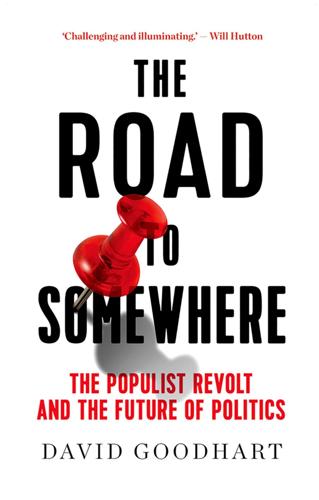
The Road to Somewhere: The Populist Revolt and the Future of Politics
by
David Goodhart
Published 7 Jan 2017
Notwithstanding all these depressing statistics about ‘bad jobs’ it is also worth noting that 71 per cent of workers think they have a good job, according to that 2015 British Social Attitudes survey.46 And Andrew Oswald of Warwick University has found no correlation at all between levels of education and job satisfaction.47 Quite a few people in low-skill jobs have high satisfaction and some people with advanced degrees who are paid £200,000 have low satisfaction. The disappearing middle income/middle status jobs must also be kept in perspective. Even allowing for 40 per cent of high-skill jobs and 30 per cent of low-skill jobs that still leaves 30 per cent for middling ones, and although the ‘hollowing out’ of skill levels is well established there seems to have been much less hollowing out of incomes, with no significant reduction in the number of people in the middle income deciles.
…
See Figure 1 in Katie Schmuecker, ‘Future of the UK Labour Market’, Joseph Rowntree Foundation, February 2014, https://www.jrf.org.uk/report/future-uk-labour-market 4.http://www.centreforcities.org/press/nearly-a-million-new-jobs-created-in-british-cities-since-2010-but-average-salary-drops-by-1300-per-city-resident/ 5.See Theodore Dalrymple’s observation about the erosion of the distinction between service to others and servitude to others: Theodore Dalrymple, ‘Why Britain (and Europe) depends on migrants’, The Spectator, 26 March 2016, http://www.spectator.co.uk/2016/03/why-britain-and-europe-depends-on-migrants/ 6.A YouGov poll found 37 per cent of workers, around 11.5 million people, felt their job is not making a meaningful contribution to society. Tom W. Smith, ‘Job satisfaction in the United States’, University of Chicago, 17 April 2007, www-news.uchicago.edu/releases/07/pdf/070417.jobs.pdf and ‘Work’, British Social Attitudes 33, 2016, http://bsa.natcen.ac.uk/media/39061/bsa33_work.pdf 7.Sammy Rashid and Greg Brooks, ‘The levels of attainment in literacy and numeracy of 13- to 19-year-olds in England, 1948–2009’, University of Sheffield, 2010. 8.Brendan Cole, ‘Young people in England have “lowest literacy levels” in developed world says OECD’, International Business Times, http://www.ibtimes.co.uk/young-people-england-have-lowest-literacy-levels-developed-world-says-oecd-1540711 9.See the work of behavioural geneticists such as Robert Plomin and Rosalind Arden. 10.
…
‘National Minimum Wage: Low Pay Commission Report Spring 2016’, Gov.uk, March 2016, https://www.gov.uk/government/uploads/system/uploads/attachment_data/file/571631/LPC_spring_report_2016.pdf 43.Cameron Tait, ‘March of the Waiters’, Fabian Society, 29 October 2016, www.fabians.org.uk/march-of-the-waiters/ 44.Adam Corlett and David Finch, ‘Double take: workers with multiple jobs and reforms to National Insurance’, Resolution Foundation, November 2016, www.resolutionfoundation.org/app/uploads/2016/11/Double-take.pdf 45.Jonathan Ashworth et. al., ‘The UK’s self-employment phenomenon: why the labour market isn’t so strong after all’, Morgan Stanley Research, 2014. 46.‘Work’, British Social Attitudes 33, 2016, http://bsa.natcen.ac.uk/media/39061/bsa33_work.pdf 47.Jonathan Gardner and Andrew Oswald, ‘How does education affect mental well-being and job satisfaction?’, Warwick University, June 2002, www2.warwick.ac.uk/fac/soc/economics/staff/ajoswald/reveducationgardneroswaldjune2002.pdf 48.Julie Froud et al, ‘Rebalanching the Economy (Or Buyer’s Remorse’, CRESC Working Paper Series, No. 87, January, 2011, https://www.searchlock.com/search?q=cresc+rebalancing+the+economy 49.Alex Brummer, Britain For Sale: British Companies in Foreign Hands, The Hidden Threat to Our Economy, London: Random House, 2013. 50.Julie Froud et al, ‘Rebalanching the Economy (Or Buyer’s Remorse’, CRESC Working Paper Series, No. 87, January, 2011, https://www.searchlock.com/search?
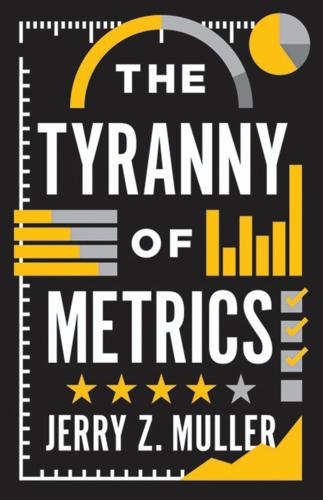
The Tyranny of Metrics
by
Jerry Z. Muller
Published 23 Jan 2018
There are indeed circumstances when pay for measured performance fulfills that promise: when the work to be done is repetitive, uncreative, and involves the production or sale of standardized commodities or services; when there is little possibility of exercising choice over what one does; when there is little intrinsic satisfaction in it; when performance is based almost exclusively on individual effort, rather than that of a team; and when aiding, encouraging, and mentoring others is not an important part of the job. For sales forces,1 or for routinized, individualized, highly focused jobs involving standardized outputs and without broader responsibilities, rewarding measured performance may well pay off. In short, as one sociologist has put it, “Extrinsic rewards become an important determinant of job satisfaction only among workers for whom intrinsic rewards are relatively unavailable.”2 These are the sort of tasks for which Taylorism (see chapter 3) was designed. There are many such jobs in any society, including a modern, technologically advanced one. But in our time, as the technologies of robotics and artificial intelligence advance, such jobs are becoming fewer and far between.3 But the salient fact is that most private-sector jobs do not match these criteria.
…
Jan Osborg et al., Assessing Locally Focused Stability Operations (Rand Corporation, 2014), p. 9. 9. Connable, Embracing the Fog of War, p. 29. CHAPTER 12. BUSINESS AND FINANCE 1. http://www.simon.rochester.edu/fac/misra/mkt_salesforce.pdf. 2. Barry Gruenberg, “The Happy Worker: An Analysis of Educational and Occupational Differences in Determinants of Job Satisfaction,” American Journal of Sociology 86 (1980), pp. 247–71, esp. pp. 267–68, quoted in Kohn, Punishment by Rewards, p. 131. 3. Erik Brynjolfsson and Andrew McAfee, The Second Machine Age: Work, Progress, and Prosperity in a Time of Brilliant Technologies (New York, 2014). 4. Dan Cable and Freck Vermeulen, “Why CEO Pay Should Be 100% Fixed,” Harvard Business Review (February 23, 2016). 5.

How Will You Measure Your Life?
by
Christensen, Clayton M.
,
Dillon, Karen
and
Allworth, James
Published 15 May 2012
Frederick Herzberg, probably one of the most incisive writers on the topic of motivation theory, published a breakthrough article in the Harvard Business Review, focusing on exactly this. He was writing for a business audience, but what he discovered about motivation applies equally to us all. Herzberg notes the common assumption that job satisfaction is one big continuous spectrum—starting with very happy on one end and reaching all the way down to absolutely miserable on the other—is not actually the way the mind works. Instead, satisfaction and dissatisfaction are separate, independent measures. This means, for example, that it’s possible to love your job and hate it at the same time.
…
But all you can aspire to is that employees will not be mad at each other and the company because of compensation. This is an important insight from Herzberg’s research: if you instantly improve the hygiene factors of your job, you’re not going to suddenly love it. At best, you just won’t hate it anymore. The opposite of job dissatisfaction isn’t job satisfaction, but rather an absence of job dissatisfaction. They’re not the same thing at all. It is important to address hygiene factors such as a safe and comfortable working environment, relationship with managers and colleagues, enough money to look after your family—if you don’t have these things, you’ll experience dissatisfaction with your work.
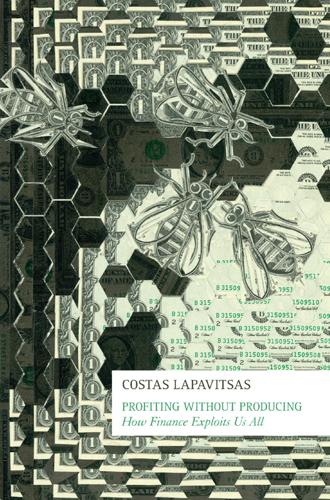
Profiting Without Producing: How Finance Exploits Us All
by
Costas Lapavitsas
Published 14 Aug 2013
See Juliet Schor, The Overworked American: The Unexpected Decline of Leisure, New York: Basic Books, 1992. 9 Francis Green, Demanding Work: The Paradox of Job Quality in the Affluent Economy, Princeton: Princeton University Press, 2006; Francis Green and Nicholas Tsitsianis, ‘Can the Changing Nature of Jobs Account for National Trends in Job Satisfaction?’, Studies in Economics no. 0406, Department of Economics, University of Kent, 2004; and Francis Green and Nicholas Tsitsianis, ‘An Investigation of National Trends in Job Satisfaction’, British Journal of Industrial Relations 43:3, 2005. 10 This statement refers more accurately to Japan and Germany which have had high rates of growth of productivity historically, rather than to the UK which has generally been a laggard.
…
Green, Francis, Demanding Work: The Paradox of Job Quality in the Affluent Economy, Princeton: Princeton University Press, 2006. Green, Francis, and Nicholas Tsitsianis, ‘Can the Changing Nature of Jobs Account for National Trends in Job Satisfaction?’, Studies in Economics No. 0406, Department of Economics, University of Kent, 2004. Green, Francis, and Nicholas Tsitsianis, ‘An Investigation of National Trends in Job Satisfaction’, British Journal of Industrial Relations 43:3, 2005, pp. 401–29. Greenspan, Alan, ‘Currency Reserves and Debt’, Remarks Before the World Bank Conference on Recent Trends in Reserves Management, Washington, DC, 29 April 1999.
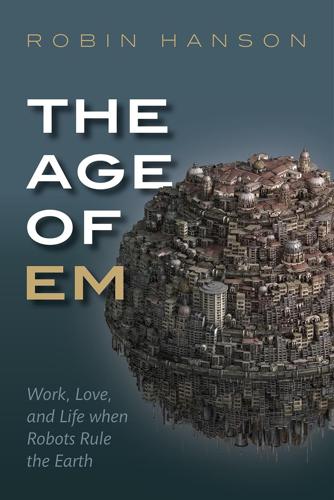
The Age of Em: Work, Love and Life When Robots Rule the Earth
by
Robin Hanson
Published 31 Mar 2016
For example, today as they get older people tend to be less neurotic, and more agreeable, conscientiousness, and open to experience (Soto et al. 2011), although these trends reverse after the age of 65 (Kandler et al. 2015). Older people have weaker differences between genders in their roles and attitudes (Hofstede et al. 2010), they are more trusting (Robinson and Jackson 2001), they have less regret about missed life opportunities (Brassen et al. 2012), and they have more job satisfaction and less stress and negative emotions (Tay et al. 2014). Older people (and males) are more influential in social networks, and influential people are more clustered in their associations, and less susceptible to social influence by others (Aral and Walker 2012). For older people, happiness tends to increase with age, controlling for health, and older people tend to associate happiness more with peacefulness, as opposed to excitement, in part because they focus more on the present as opposed to the future (Mogilner et al. 2011).
…
Iannaccone, Laurence. 1994. “Why Strict Churches Are Strong.” American Journal of Sociology 99(5): 1180–1211. Ichniowski, Casey, and Anne Preston. 2014. “Do Star Performers Produce More Stars? Peer Effects and Learning in Elite Teams.” NBER Working Paper No. 20478, September. Idson, Todd. 1990. “Establishment Size, Job Satisfaction and the Structure of Work.” Applied Economics 22(8): 1007–1018. Inglehart, Ronald, and Christian Welzel. 2010. “Changing Mass Priorities: The Link Between Modernization and Democracy.” Perspectives on Politics 8(2): 554. 2012. “International Labour Organization Global Estimate of Forced Labour 2012: Results and Methodology.”
…
November. https://bitcoin.org/bitcoin.pdf. Navarrete, C. David, Robert Kurzban, Daniel Fessler, and Lee Kirkpatrick 2004. “Anxiety and Intergroup Bias: Terror Management or Coalitional Psychology?” Group Processes & Intergroup Relations 7(4): 370–397. Nguyen, Anh Ngoc, Jim Taylor, and Steve Bradley. 2003. “Job Autonomy and Job Satisfaction: New Evidence.” Doctoral dissertation, University of Lancaster, Lancaster. Niederle, Muriel. 2014. “Gender.” NBER Working Paper No. 20788, December. Nitsch, Volker. 2005. “Zipf Zipped.” Journal of Urban Economics 57(1): 86–100. Nordhaus, William. 2015. “Are We Approaching an Economic Singularity?
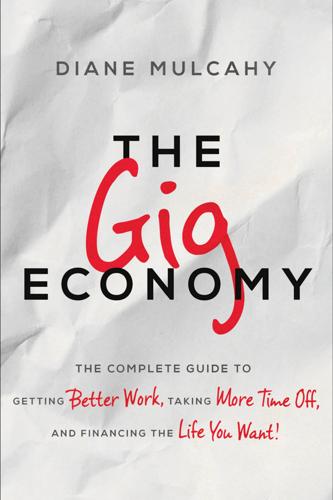
The Gig Economy: The Complete Guide to Getting Better Work, Taking More Time Off, and Financing the Life You Want
by
Diane Mulcahy
Published 8 Nov 2016
Gould, Elise, Economic Policy Institute, “2014 continues a 35-year trend of broad-base wage stagnation,” February 19, 2015. www.epi.org/publication/stagnant-wages-in-2014/ 3. Adkins, Amy, “Majority of U.S. Employees Not Engaged Despite Gains in 2014,” Gallup, January 28, 2015, www.gallup.com/poll/181289/majority-employees-not-engaged-despite-gains-2014.aspx 4. The Conference Board, “Surge in Hiring Lifts Outlook for Workers But Overall Job Satisfaction Remains Below 50%,” September 8, 2015. www.conference-board.org/press/pressdetail.cfm?pressid=5545 5. Freelancers Union, Freelancing in America: 2015, An independent study commissioned by the Freelancers Union and Upwork. Also, Rasch, Rena, “Your Best Workers May Not Be Your Employees: A Global Study of Independent Workers,” IBM Smarter Work-force Institute, October 2014. public.dhe.ibm.com/common/ssi/ecm/lo/en/lol14027usen/LOL14027USEN.PDF?
…
University of Pennsylvania, Knowledge@Wharton, “Underfunded Pensions: Tackling an ‘Invisible’ Crisis,” January 26,2015. knowledge.wharton.upenn.edu/article/underfunded-pensions-tackling-an-invisible-crisis/ 12. Glassdoor, Q3 2015 US Employment Confidence Survey. press-content.glassdoor.com/app/uploads/sites/2/2015/10/ECS-Q32015-Supplement.pdf 13. “Employee Job Satisfaction and Engagement,” SHRM, Society for Human Resource Management, 2015. www.shrm.org/Research/SurveyFindings/Documents/14-0028%20JobSatEngage_Report_FULL_FNL.pdf 14. www.coursera.org, www.edcast.com, www.edx.com, www.novoed.com, www.udemy.com 15. Clark, Dorie, “Reinventing You: Define Your Brand, Imagine Your Future,” Harvard Business Review Press, Boston, April 9, 2013. 16.
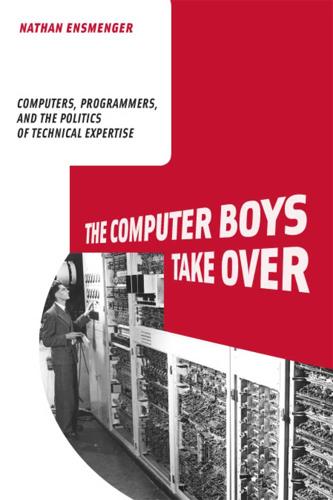
The Computer Boys Take Over: Computers, Programmers, and the Politics of Technical Expertise
by
Nathan L. Ensmenger
Published 31 Jul 2010
By the 1960s, more than fifty statistically significant collections of preferences (“keys”) had been developed for such occupations as artist, mathematician, police officer, and airplane pilot. Perry and Cannon were attempting to develop a similar interest key for programmer. They hoped to use this key to correlate a unique programmer personality profile with self-reported levels of job satisfaction. In the absence of direct measures of job performance, such as supervisors’ evaluations, it was assumed that satisfaction tracked closely with performance. The larger assumption behind the use of the SVIB profiles was that candidates who had interests in common with those individuals who were successful in a given occupation were themselves also likely to achieve similar success.
…
,” Monthly Review 50, no. 8 (1999). 31. Wanda Orlikowski, “The DP Occupation: Professionalization or Proletarianization?” Research in the Sociology of Work 4 (1988): 95–124. 32. Brian Rothery, Installing and Managing a Computer (London: Business Books, 1968), 152. 33. Kraft, Programmers and Managers, 26. 34. Enid Mumford, Job Satisfaction: A Study of Computer Specialists (London: Longman Group Limited, 1972), 175. 35. Robert Head, “Controlling Programming Costs,” Datamation 13, no. 7 (1967): 141. 36. Andrew Friedman and Dominic Cornford, Computer Systems Development: History, Organization, and Implementation (Chichester, UK: Wiley, 1989); M.
…
Software Engineering Notes 17 (4) (1992): 19–21. Moore, Gordon. “Cramming More Components onto Integrated Circuits.” Electronics 38 (8) (1965): 114–117. Morgan, H. L., and J. V. Soden. “Understanding MIS Failures.” Database 5 (2) (1973): 157–171. Morrison, David. “Software Crisis.” Defense 21 (2) (1989): 72. Mumford, Enid. Job Satisfaction: A Study of Computer Specialists. London: Longman Group Limited, 1972. Mumford, Enid, and Thomas Ward. Computers: Planning for People. London: B. T. Batsford, 1968. Murray, Fergus, and David Knights. “Inter-managerial Competition and Capital Accumulation: IT Specialists, Accountants, and Executive Control.”
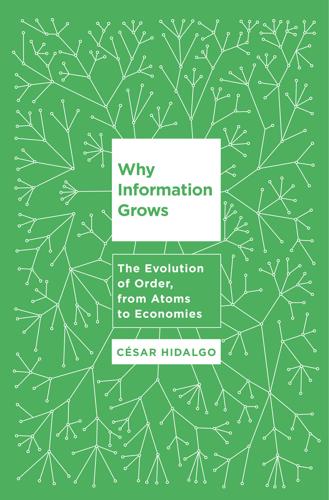
Why Information Grows: The Evolution of Order, From Atoms to Economies
by
Cesar Hidalgo
Published 1 Jun 2015
For instance, he found that people who got their jobs through personal contacts had better-paying jobs than those who got them through direct applications or professional recruiting agencies. Also, people who found their jobs through personal contacts were more likely to have a new job cut out for them and they reported higher levels of job satisfaction.4 In short, he found not only that social networks were the main determinant of information about job availability, which is crucial for job seekers, but also that these networks were correlated with important job characteristics such as wages and job satisfaction. The allocation of the best jobs, just like that of the best apartments, tends to piggyback social networks. Granovetter’s findings, which applied to white-collar workers, showed that personal contacts were the main way these workers found jobs.

Effective Programming: More Than Writing Code
by
Jeff Atwood
Published 3 Jul 2012
Are there any people on your team you’d “vote off the island” if you could? It may sound trivial to focus on the people you work with over more tangible things like, say, the actual work, or the particular technology you’re using to do that work. But it isn’t. The people you choose to work with are the most accurate predictor of job satisfaction I’ve ever found. And job satisfaction, based on my work experience to date, correlates perfectly with success. I have never seen a happy, healthy, gelled, socially functional software development team fail. It’s a shame such teams are so rare. As Weinberg said, it’s always a people problem. If you aren’t working with people you like, people you respect, people that challenge and inspire you — then why not?
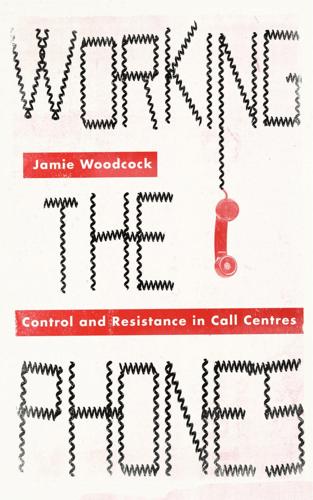
Working the Phones: Control and Resistance in Call Centres
by
Jamie Woodcock
Published 20 Nov 2016
Taylor and Bain, ‘“An Assembly Line in the Head”’ (1999), p. 103. 18. The Call Centre (2013). 19. Franco Berardi, The Soul at Work: From Alienation to Autonomy (Los Angeles: Semiotext(e), 2009) p. 21. 20. Ibid., p. 84. 21. Ibid., p. 85. 22. Kerry A. Lewig and Maureen F. Dollard, ‘Emotional Dissonance, Emotional Exhaustion and Job Satisfaction in Call Centre Workers’, European Journal of Work and Organizational Psychology, Vol. 12, No. 4 (2003), pp. 366–92. 23. Karl Marx, Economic and Philosophic Manuscripts of 1844 (1844), Marxists.org/archive/marx/works/1844/manuscripts/labour.htm 24. Marx, Capital ([1867] 1976), p. 614. 171 Working the Phones 25.
…
Lebowitz, M. (2009) Following Marx: Method, Critique and Crisis, Boston: Brill. Lefort, C. (1952) ‘Proletarian Experience’, Socialisme ou Barbarie, No. 11. trans. Viewpoint Magazine, available at: http://viewpointmag. com/2013/09/26/proletarian-experience Lewig, K. A. and Dollard, M. F. (2003) ‘Emotional Dissonance, Emotional Exhaustion and Job Satisfaction in Call Centre Workers’, European Journal of Work and Organizational Psychology, Vol. 12, No. 4, pp. 366–92. Lewis, J. S. (1948) Partnership for All: A Thirty Four Year Old Experiment in Industrial Democracy, London: Kerr-Cross Publishing. Linhart, R. (1981) The Assembly Line, Amherst: University of Massachusetts Press.

Apollo's Arrow: The Profound and Enduring Impact of Coronavirus on the Way We Live
by
Nicholas A. Christakis
Published 27 Oct 2020
We can’t go back in part because some organizations have offered to let people work remotely permanently.”81 Indeed, early studies revealed that the transition was unexpectedly smooth. Office workers’ job satisfaction and engagement fell dramatically in the first two weeks of working from home in the United States when the lockdowns were initiated, one study found, but once people adjusted, eight weeks into the experience, their job satisfaction recovered rapidly. One employee observed, “I think it’s weird how normal everything has become—the virtual meetings, the emails, everyone looking grungy.” And a CEO noted that he felt this experience “put an end to the ‘fly across the country for a one-hour meeting’ expectation forever.”82 Because of the positive experience, many of the changes are likely to be permanent.
…
One of the longest-lasting economic effects concerns the cohort of students graduating from college into a recession. They are unlikely to catch up economically; they are predicted to endure lower wages for at least twenty years.87 Ironically, however, such people in prior recessions have reported more job satisfaction, even fifteen years later and even after accounting for occupation, income, and industry. When people begin their jobs during a recession, they appear to feel more fortunate about having a job in the first place.88 Psychologist Adam Grant has argued that the ripple effects of the pandemic may even include more ethical leadership of our major corporations.

Peopleware: Productive Projects and Teams
by
Tom Demarco
and
Timothy Lister
Published 2 Jan 1987
In such an environment, the argument that more time or money is needed to produce a high-quality product is generally not heard. The result is that developers know they are part of a culture that delivers quality beyond what the marketplace requires. Their sense of quality identification works for increased job satisfaction and some of the lowest turnover figures seen anywhere in the industry. Power of Veto In some Japanese companies, notably Hitachi Software and parts of Fujitsu, the project team has an effective power of veto over delivery of what they believe to be a not-yet-ready product. No matter that the client would be willing to accept even a substandard product, the team can insist that delivery wait until its own standards are achieved.
…
If you don’t know it, you can’t begin to do something about it. Only the market will understand. It will take steps of its own to rectify the situation, steps that do not bode well for you. Measuring with Your Eyes Closed Work measurement can be a useful tool for method improvement, motivation, and enhanced job satisfaction, but it is almost never used for these purposes. Measurement schemes tend to become threatening and burdensome. In order to make the concept deliver on its potential, management has to be perceptive and secure enough to cut itself out of the loop. That means the data on individuals is not passed up to management, and everybody in the organization knows it.
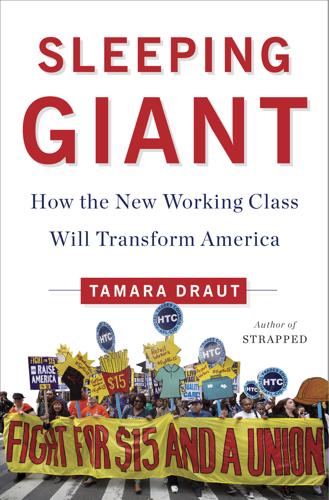
Sleeping Giant: How the New Working Class Will Transform America
by
Tamara Draut
Published 4 Apr 2016
Arlene, who marched with Martin Luther King Jr. in Chicago at the age of seventeen, today works in a job where she compares the way she’s treated to our nation’s greatest moral stain. Arlene isn’t alone in her dissatisfaction. Various surveys find that jobs in retail and food service rank very low in terms of job satisfaction.12 The Blue-Collar Jobs In the top-ten list of occupations providing the largest number of jobs in our country, two of the ten (laborers/material movers and janitors) could be described as traditional blue-collar work, that is, physical labor done overwhelmingly by men. But unlike four decades ago, these jobs aren’t on the assembly line or factory floor.
…
Janelle Jones and John Schmitt, “Slow Progress for Fast-Food Workers,” Center for Economic and Policy Research, August 6, 2013, at http://www.cepr.net/index.php/blogs/cepr-blog/slow-progress-for-fast-food-workers. 10. Ibid. 11. “The Demographics of the Retail Work Force,” Demos, November, 18, 2012, at http://www.demos.org/sites/default/files/data_bytes/demographics.png. 12. Tom W. Smith, “Job Satisfaction in America,” NORC/University of Chicago, April 17, 2007 at http://www-news.uchicago.edu/releases/07/pdf/070417.jobs.pdf; CareerBliss survey available online at http://www.careerbliss.com/facts-and-figures/careerbliss-happiest-and-unhappiest-jobs-in-america-2015/. 13. U.S.
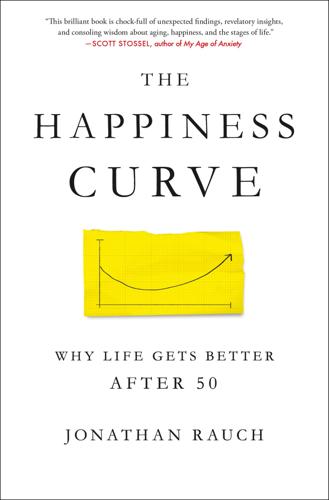
The Happiness Curve: Why Life Gets Better After 50
by
Jonathan Rauch
Published 30 Apr 2018
A 1994 paper by Oswald and Andrew Clark (published in the Royal Economic Society’s Economic Journal), on whether unemployment causes unhappiness (answer: yes, and powerfully), contained the sentence: “There is a U shape in mental wellbeing with respect to age.” In a 1996 paper (in the Journal of Occupational and Organizational Psychology), Oswald, Clark, and a psychologist named Peter Warr found that job satisfaction is “U-shaped in age.” At that point, the result seemed an intriguing oddity. There was no particularly good theory to explain it and not much by way of confirmation, and so the researchers did not pay much attention to it. “We did what people do, which is just proceed,” Oswald told me. “You’re in the fog of research.
…
Herodotus Hirsch, Jerry HIV Holmes, Jamie homosexuality Hong Kong iconography, midlife crisis impostor syndrome “In Defense of the Practical Politician” (Winter) income comparing others’ growth relative study on life satisfaction and growth of national incomes, of others Individual Purpose Accounts inequality, visibility of infancy, Cole on ingratitude Institute on Aging internal critics International Journal of Psychoanalysis The Interpretation of Dreams (Freud) interviews and interviewees career change to philanthropy on disappointment on expectations gap on job switch letter from first on moving abroad neighbor Nora (ninety-four-year-old) now what question and resignation feeling sixties and seventies scores on social connection and sharing trust and wisdom implied in intuition “Is Wellbeing U-Shaped over the Life Cycle?” (Blanchflower/Oswald) Isaacowitz, Derek M. Japan Jaques, Elliott Jefferson, Thomas Jeste, Dilip positive psychiatry and wisdom studied by job satisfaction, U curve in age and job switch, during midlife crisis Jobs, Steve Jones, Dan L. Journal of Economic Behavior and Organization Journal of Occupational and Organizational Psychology Journal of Public Economics journalism award Kahneman, Daniel Kenya Kilgallon, Anne Marie King, James Kipling, Rudyard Knetsch, Jack Kojola, Erik Kunzmann, Ute Lacey, Heather P.

Pedigree: How Elite Students Get Elite Jobs
by
Lauren A. Rivera
Published 3 May 2015
“Part of being successful,” asserted Parker, a crisply dressed Eastmore student who was interviewing simultaneously for banking and consulting, “is being well compensated.” Indeed, research shows that elite college graduates tend to place greater stress on material rewards in jobs than do students from other types of schools and rate high salaries as being more important to their overall job satisfaction.7 For other students, a focus on money was driven by necessity. Undergraduate college tuition has exploded.8 As of 2014, at many elite colleges it approached $60,000 annually, including room, board, and fees.9 Although the most elite core campuses offer substantial financial aid to many students, not all who need it qualify.10 Many still emerge with significant debt.
…
High levels of attrition, although costly in the short run, could benefit firms in the long term by increasing the range of their future client base. Having large numbers of former employees in a wide variety of organizations and industries might assist firms in acquiring new business. Furthermore, selecting new hires based on cultural similarity could enhance cohesion and job satisfaction among employees. Creating a group of close-knit coworkers who have the potential to become instant friends and playmates could foster motivation and organizational commitment among junior employees; this might compensate for the grueling hours and mundane tasks required of these workers. As my study participants also made clear, having a strong social network of like-minded others is a critical marketing tool that firms use to attract new applicants year after year despite the difficult lifestyle associated with these jobs.
…
Strategic Management Journal 18:187–206. Ostrander, Susan. 1993. “Surely You’re Not in This Just to Be Helpful: Access, Rapport, and Interviews in Three Studies of Elites.” Journal of Contemporary Ethnography 22:7–27. Owens, Jayanti, and Lauren Rivera. 2012. “Recasting the Value of an Elite Education: Institutional Prestige, Job Satisfaction, and Turnover.” Presentation at Academy of Management annual meeting, Boston, August. Pager, Devah. 2003. “The Mark of Criminal Record.” American Journal of Sociology 108:937–75. Pager, Devah, and Diana Karafin. 2009. “Bayesian Bigot? Statistical Discrimination, Stereotypes, and Employer Decision-Making.”
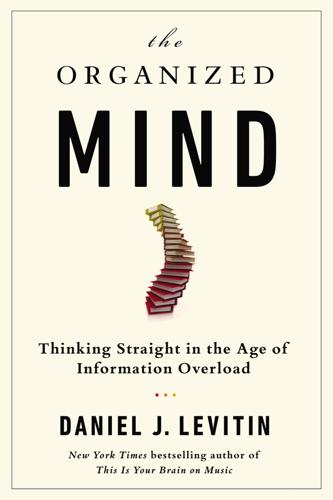
The Organized Mind: Thinking Straight in the Age of Information Overload
by
Daniel J. Levitin
Published 18 Aug 2014
Some of these are obvious and well known, such as setting clear goals and providing high-quality, immediate feedback. Expectations need to be reasonable or employees feel overwhelmed, and if they fall behind, they feel they can never catch up. Employee productivity is directly related to job satisfaction, and job satisfaction in turn is related to whether employees experience that they are doing a good job in terms of both quality and quantity of output. There’s a part of the brain called Area 47 in the lateral prefrontal cortex that my colleague Vinod Menon and I have been closely studying for the last fifteen years.
…
Army have justly identified as components to finding one’s work meaningful and satisfying. If some but not too many aspects of the job are surprising in interesting ways, this can lead to a sense of discovery and self-growth. Finding the right balance to keep Area 47 happy is tricky, but the most job satisfaction comes from a combination of these two: We function best when we are under some constraints and are allowed to exercise individual creativity within those constraints. In fact, this is posited to be the driving force in many forms of creativity, including literary and musical. Musicians work under the very tight constraints of a tonal system—Western music uses only twelve different notes—and yet within that system, there is great flexibility.
…
Again, this may seem counterintuitive, but a business has a greater degree of structural organization if its org chart can be described in a simple rule containing few words, and there are no exceptions to the rule. Whether the degree of structure of a company predicts efficiency, profitability, or job satisfaction remains an empirical question, one that has not been investigated. On the one hand, individuals clearly differ in their ability to supervise others, and so, naturally, some bosses will have more employees simply because they are adept at handling more. Individuals also differ widely in their skills, and a nimble and efficient organization should allow employees to use their strengths for the good of the company.

This Chair Rocks: A Manifiesto Against Ageism
by
Ashton Applewhite
Published 10 Feb 2016
Atul Gawande points out in his book Being Mortal, “requires each of us to contemplate the unfixables in our life, the decline we will unavoidably face, in order to make the small changes necessary to reshape it. When the prevailing fantasy is that we can be ageless, the geriatrician’s uncomfortable demand is that we accept we are not.”19 Medical students also assume, wrongly, that practicing geriatrics will be depressing. Guess what kind of doctors report the highest job satisfaction, over and over? Geriatricians. And the happiest geriatricians have lots of patients over seventy-five and accept Medicare.20 To what did the authors of a UC Davis study of more than 6,500 physicians attribute this? “In addition to the steady hours, encounters with inspirational seniors, and enduring relationships, this specialty is enjoying increasing demand as baby boomers retire.”
…
“In addition to the steady hours, encounters with inspirational seniors, and enduring relationships, this specialty is enjoying increasing demand as baby boomers retire.” They then note, without irony, that “relatively poor Medicare reimbursements have led to shortages of geriatricians nationwide.”21 How about improving those Medicare reimbursement rates? How about using those job satisfaction numbers to address the image problem? How about debt forgiveness for geriatricians in training? We’re not just living longer, we’re staying healthy longer Sixty isn’t the new sixty, but it is a new sixty. More active lifestyles, healthier diets, hip and hormone replacements, all forestall or prevent the loss of function that was once an inescapable aspect of making it past middle age.

Never Enough: When Achievement Culture Becomes Toxic-And What We Can Do About It
by
Jennifer Breheny Wallace
Published 21 Aug 2023
The researchers found that the prestige of the college they had attended—whether it was highly selective or not selective, public or private, small or large—“hardly mattered at all to their current well-being and their work lives.” However, what did impact later-life success was a student’s experience while they were at that school, particularly the quality of their relationships and their level of engagement on campus. Graduates who reported higher well-being and job satisfaction tended to have had highly engaging experiences at college. The study singled out six key types of college experiences that had an outsized positive influence on future success. Taking a course with a professor who made learning exciting; Having a professor who cared about the student personally; Having a mentor who encouraged the student to pursue personal goals; Working on a meaningful project across semesters; Participating in an internship; Being active in extracurricular activities.
…
One interesting finding was that a strong work ethic in the teen years, such as one developed by chores, was an important predictor of midlife happiness. The psychiatrist George Vaillant, the study’s former lead researcher, found that hardworking teens went on to have warmer marriages and stronger friendships, greater job satisfaction, and overall happier lives than their peers. Vaillant told me in a phone interview years ago, for an article I was writing, that “it makes sense”—these men valued hard work, the same ingredient that goes into building successful marriages, careers, families, and friendships. Chores aren’t just a way to teach responsibility and work ethic.
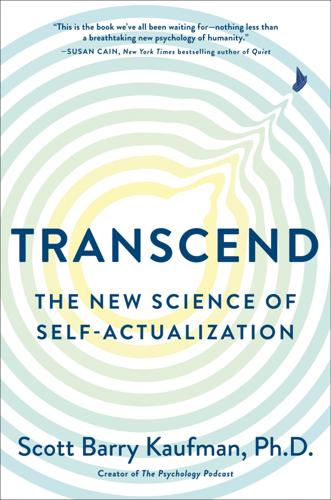
Transcend: The New Science of Self-Actualization
by
Scott Barry Kaufman
Published 6 Apr 2020
Self-actualization scores were associated with multiple indicators of well-being, including greater life satisfaction, curiosity, self-acceptance, positive relationships, environmental mastery, personal growth, autonomy, and purpose in life. Self-actualization also predicted job performance, job satisfaction, and reports of greater talent, skill, and creative ability across a wide range of fields, from the arts and sciences to business and sports. The characteristics of self-actualization can conceptually be grouped into four categories, which will form the remainder of this book: exploration, love, purpose, and transcendence.
…
Organizational psychologist Amy Wrzesniewski and her colleagues found that it’s easy for most people to assign themselves to one of these dimensions (in fact, the researchers were surprised just how easily people were able to do so!).29 They found that people who viewed their job as a calling reported greater levels of life satisfaction and job satisfaction and missed fewer days at work compared to those who viewed their job as just a job or as a career. The findings hold even when you control for income, education, and occupation, suggesting that satisfaction with life and with work may depend more on how you see your work than on income or occupational prestige.
…
People aren’t interacting with others only to get something from them, but they truly admire others and care for their growth, development, and freedom. Finally, autonomy-supportive organizational cultures allow for a certain degree of job-crafting, whereby employees have some say in designing their job to allow growth, engagement, job satisfaction, resilience, purpose, and well-being.103 Job crafters can redesign how they perform tasks, increasing social connection while engaging in their task, and reframe their task as something more meaningful and beneficial to society. The restaurant chef can become an artist. The nurse can become a therapist.

Immigration and Ethnic Formation in a Deeply Divided Society: The Case of the 1990s Immigrants From the Former Soviet Union in Israel
by
Majid Al Haj
Published 20 Nov 2003
However, there was a significant negative relationship between immigrants’ residential concentration, on the one hand, and their actual knowledge of Hebrew (r = –0.183) and satisfaction with their command of Hebrew (r = –.0163), on the other hand. In other words, living in an “immigrant” neighborhood is a voluntary act stemming from the immigrants’ free choice, which is facilitated by the very fact that immigrants form a sizable group in most urban communities in Israel. The positive relationship between demographic concentration and job satisfaction may be explained by the fact that living in a predominantly immigrant neighborhood puts one in contact with immigrant networks that facilitate finding an appropriate job. This issue was raised in our immigrant focus groups. When asked about the process of finding their first job in Israel, immigrants repeatedly said that immigrant networks (neighbors and friends) played an important role in their entry to the labor market, mainly in the initial stage after arrival.
…
In a study of the occupational adjustment of FSU physicians who immigrated to Israel in the 1990s wave, Bernstein and Shuval concluded that only 25% of those who arrived in 1989–1993 found employment in the health-care system. They also found a strong relationship between occupational-status persistence, on the one hand, and job satisfaction and identification with the host society, on the other (Bernstein and Shuval 1995). In any event, most studies agree that despite the job mismatch experienced by many FSU immigrants in Israel, their economic integration can be considered a success story (see, for example, Beenstock and Menahem 1997; Raijman and Semyonov 1998).
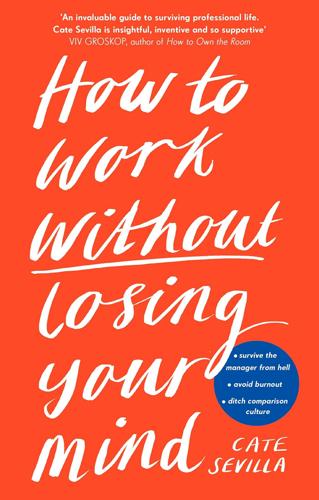
How to Work Without Losing Your Mind
by
Cate Sevilla
Published 14 Jan 2021
It’s up to us as individuals to define what ambition is, what it feels like for us personally, and to explore what we’re willing to pay for the achievements that this ambition is meant to propel us towards. Is success actually a job title or a pay raise? Or is it figuring out the sweet spot between job satisfaction, good-enough pay and the enrichment of your personal life? At the risk of sounding mega-corny, surely it is the quality of the journey, rather than the destination? Harvard psychologist Dr Tal Ben-Shahar actually coined a term for having false expectations about reaching a goal: ‘arrival fallacy’.
…
All the signs were there, in big bold capital letters, but I was so desperate to be wanted by Google, and to get out of my current situation, that I ignored them all. I never asked myself what I wanted from my new role, I only ever thought about what I was ‘good enough’ for, whether I could technically be good in that role, and whether it was going to pay well. I never considered job satisfaction, or the importance of things like flexible working, or if my role would be creative or simply task based. I never thought about what I wanted, or what I needed. I was actually feeling rather broken at the time – and if Google said that they wanted me, then maybe I would finally be good enough.

You Are Here: Why We Can Find Our Way to the Moon, but Get Lost in the Mall
by
Colin Ellard
Published 6 Jul 2009
MAKING WORKSPACE WORK In addition to the time we spend in large buildings to shop, for entertainment, or perhaps to interact with government officials, most of us spend many hours in such larger inner spaces because of our occupations. The many ways in which the design and configuration of space can influence worker behavior, productivity, and job satisfaction are both fascinating and complex. At a basic level, the organization of space can be used to control access and regulate privacy within the workspace. One simple example can be found in many office buildings, where there is a correlation between the position of an executive in the power hierarchy and his or her spatial position in a building.
…
The basic cubicle design is still often a mainstay, though the manner in which its enclosing walls encourage or inhibit interactivity, and the effects of cubicle organization on workflow management, are garnering more attention than in previous times. Yet there is much work to be done to understand how space can be utilized to maximize productivity, economy, and job satisfaction. Some offices have tried moving to completely open designs in which employees are not provided with dedicated workspaces at all but are left to organize their own spaces using open tables and mobile technologies, perhaps with a few specialized walled areas to enhance privacy for smaller face-to-face meetings.
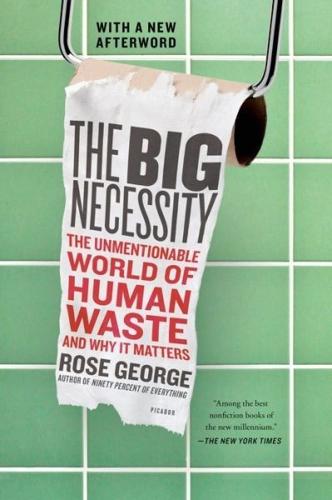
The Big Necessity: The Unmentionable World of Human Waste and Why It Matters
by
Rose George
Published 13 Oct 2008
I suspect they’d earn more cleaning toilets. More attractive are stability and benefits, crucial in a country where the only health care on offer has to be paid for. That’s what attracted Buckley, when he got off the plane from London in the 1970s and didn’t want to be “the stereotypical Irish navvy.” The only thing lacking for job satisfaction is a proper New York nickname. At a manhole in La Guardia Airport, Buckley is showing me another tide gate, shining light into the hole with a mirror and sunlight (“better than any flashlight”) when a Port Authority cop stops by. He asks what we’re doing, and when Buckley replies, “Looking for alligators,” nods with no apparent disbelief before moving in for a peer.
…
See public toilets Public Toilet (Chan) public toilets in Bangkok in Beijing in Dewsbury as good economic management historical rise of illicit activities in innovation and invention in lawsuits over in Mumbai as a sign of civilization SPARC toilet blocks in the United States purity rituals Qi Furen Rakesh, Sanjay Kumar Rampton, Sheldon rape of Dalit women rats in sewers Razak, Sheikh Reilly, Maureen religion, hygiene and ringworm Rockefeller, Abby Romans, communal latrines of Roosevelt, Teddy Rose, Gregory Rubin, Alan Samiapalli sanitation as a central feature of cities in Dar es Salaam disease toll from lack of ecological economic savings from number of U.S. people without prioritization of water over school attendance and in South Africa spread of, in India in Tanzania sanitation marketing Sanjour, William SARS Satis Satou, Tomohiko Sattar, Rayeen Abdul Saywell, Darren Scheduled Castes. See Dalits schistosomiasis school attendance and sanitation Seabrook, Jeremy self-restraint separate sewer systems Severn Trent classroom sewage effluent, reuse of sewage sludge. See biosolids sewage treatment plants sewage treatment ponds sewer workers dangers for duties of job satisfaction of marginalization of salaries of sewers of ancient societies hazards in in India inspection of in Japan in London (see London sewers) in New York City rats in security issues with simplified systems sex in public facilities Shaanxi Mothers Environmental Protection Volunteer Association Shambahaji Nagar Shankar, Mr.
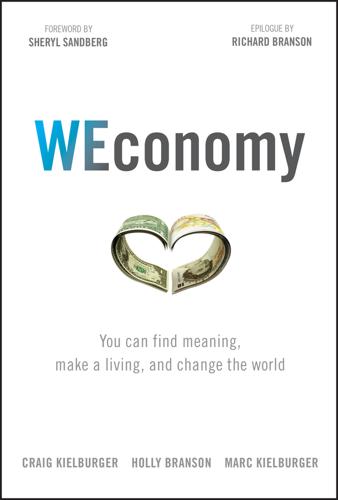
WEconomy: You Can Find Meaning, Make a Living, and Change the World
by
Craig Kielburger
,
Holly Branson
,
Marc Kielburger
,
Sir Richard Branson
and
Sheryl Sandberg
Published 7 Mar 2018
Purpose must be factored into the economy to account for our changing attitudes and expectations of companies. What Does It All Add Up To? So we can afford to care more than ever, we want our voices to be heard more than ever, and we live in the most connected era in human history. How do we leverage this knowledge to improve our lives, improve our job satisfaction, get promoted, and make our businesses more profitable—all while contributing to the greater good? Those are the questions we're going to answer here, in Part Two. In the chapters ahead, we'll show you how world-leading companies have used purpose as a launch pad to build new products, differentiate in a competitive market, increase employee engagement, and secure more loyal brand ambassadors.
…
Co-chaired by my dad and Jochen Zeitz, former CEO of Puma, this global group of 24 leaders are working together to accelerate Plan B. What Millennials Want3 Millennials want a purpose, they don't just work for a paycheck. Of course they want fair compensation but beyond that, they want to work for a company that has purpose baked into its culture. Millennials are pursuing development, they are not simply pursuing job satisfaction. They want to be involved in decision making. They want to learn what makes a business tick and not be treated as cogs in the wheel. Millennials want coaches, they don't want bosses.Without doubt, if you don't provide mentorship programs, you should. It's also worth exploring the idea of reverse mentoring: pair the CEO with a more junior employee, who will have much to teach about day-to-day work on the frontlines.
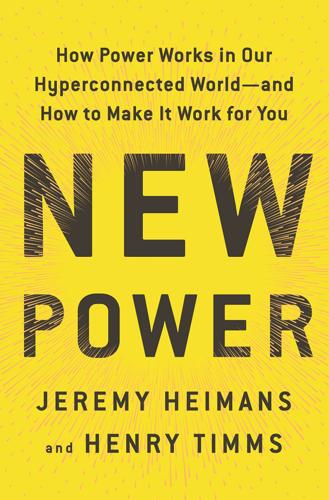
New Power: How Power Works in Our Hyperconnected World--And How to Make It Work for You
by
Jeremy Heimans
and
Henry Timms
Published 2 Apr 2018
We’ll consider how TED grew from an exclusive conference into one of the biggest ideas communities in the world. We’ll look at how Pope Francis is trying to shift the nature of his church by empowering his flock. We’ll introduce some lesser-known examples, too: nurses banding together to cut down on bureaucracy and improve patients’ lives (and their own job satisfaction); a car company that turns to its customers to design its vehicles; a successful media company built, funded, and shaped by its readers. Whether you are a historian yearning to share your knowledge in a post-truth world, a determined parent running for your local school board, or a creator wanting to get a new product off the ground, there are a range of distinctive new capabilities that people and businesses need to discover.
…
Every member of the team can freely view its budget and billable hours (with help from Buurtzorg’s own “nurse-friendly” software, which makes this transparent across the whole network). No one can question the motives of the boss, because management in each team is a shared responsibility. The teams are deliberately small enough that consensus-based decision-making is workable. The deep sense of ownership and collegiality Madelon feels produces the kind of job satisfaction that even the fanciest all-you-can-eat Google cafeteria lunch spread cannot buy. It also provides a foundation, based in trust, transparency, and mutual accountability, that enables her to focus on outcomes, rather than just manage workplace politics or hit corporate targets imposed from the top down.
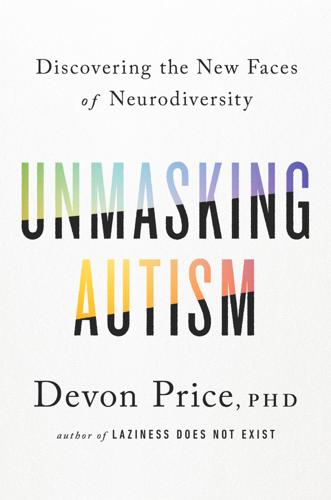
Unmasking Autism: Discovering the New Faces of Neurodiversity
by
Devon Price
Published 4 Apr 2022
Of course, industrial-organizational research suggests that actually very few people thrive in a rigidly structured eight-hour work environment, regardless of disability status. Most workers are only capable of truly focusing and being “productive” for about four hours per day.[15] Long workdays and long commutes erode a person’s life satisfaction,[16] job satisfaction,[17] and their physical and mental health.[18] In addition, many of the features of the neurotypical workplace are distracting and anxiety-provoking for allistics as well as Autistics. Allistics just tend to be better positioned to push through the discomfort of bright fluorescent lights or a coworker’s pungent cologne.
…
E., Gärling, T., Ettema, D., Friman, M., & Fujii, S. (2013). Happiness and satisfaction with work commute. Social Indicators Research, 111(1), 255–263. BACK TO NOTE REFERENCE 16 Su, J. (2019). Working Hard and Work Outcomes: The Relationship of Workaholism and Work Engagement with Job Satisfaction, Burnout, and Work Hours. Normal: Illinois State University. BACK TO NOTE REFERENCE 17 Sato, K., Kuroda, S., & Owan, H. (2020). Mental health effects of long work hours, night and weekend work, and short rest periods. Social Science & Medicine, 246, 112774. BACK TO NOTE REFERENCE 18 https://www.instagram.com/_steviewrites/?

Remote: Office Not Required
by
Jason Fried
and
David Heinemeier Hansson
Published 29 Oct 2013
We’ll draw on this rich experience to show how remote work has opened the door to a new era of freedom and luxury. A brave new world beyond the industrial-age belief in The Office. A world where we leave behind the dusty old notion of outsourcing as a way to increase work output at the lowest cost and replace it with a new ideal—one in which remote work increases both quality of work and job satisfaction. “Office not required” isn’t just the future—it’s the present. Now is your chance to catch up. CHAPTER THE TIME IS RIGHT FOR REMOTE WORK Why work doesn’t happen at work If you ask people where they go when they really need to get work done, very few will respond “the office.” If they do say the office, they’ll include a qualifier such as “super early in the morning before anyone gets in” or “I stay late at night after everyone’s left” or “I sneak in on the weekend.”

Bosnia & Herzegovina--Culture Smart
by
Elizabeth Hammond
Published 11 Jan 2011
Bosnians want to embrace capitalism, but at the same time they resist how it changes their daily lives. There is no doubt that they will continue to make progress in this area as they push for EU candidacy, as a strong private sector is a requirement for EU membership in accordance with the Copenhagen criteria. Unemployment is a major issue in the country, and for people who have work, job satisfaction tends to be low. They may endure poor working conditions simply for the paycheck, meager as it might be. Young people don’t dream of the perfect job, but rather of whatever job they can get. Although wages are low, the cost of living is still high in comparison to other countries in the region, so paychecks must stretch very far.
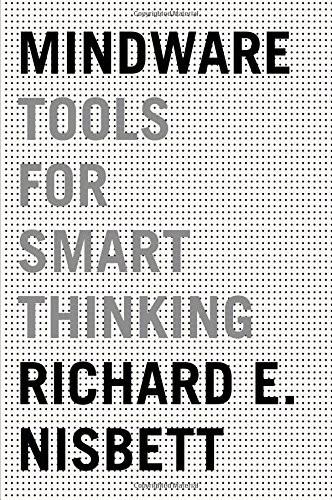
Mindware: Tools for Smart Thinking
by
Richard E. Nisbett
Published 17 Aug 2015
There are three problems with this kind of analysis. First, a limited number of variables will have been measured, and if one or more have been poorly measured, or if there are other variables not examined by investigators that are correlated both with generosity of parental leave policy and job satisfaction, it may be those associations that account for job satisfaction, not leave policy. Second, it really makes no sense to pull parental leave policy out of the total picture of the employee’s experience with a company. Generosity of the company in that respect is likely to be bound up with all kinds of other positive qualities of the company.
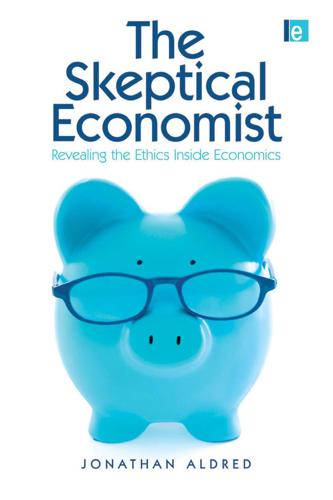
The Skeptical Economist: Revealing the Ethics Inside Economics
by
Jonathan Aldred
Published 1 Jan 2009
But if people are regularly unselfish, then these policies will backfire, having the opposite effect to that intended, as we will see below. And there are many other examples of government policies which are inefficient: they lead to an unnecessary waste of resources because of the presumption that everyone is selfish. For example: setting income tax rates without allowing for intrinsic job satisfaction excessive enforcement of fare-paying on public transport heavy use of targets and audits in the management of schools, hospitals and universities. With this much at stake, how can we convince the economists that we are not always selfish? The story of the lost wallets seems a good place to start.
…
Life is probably more complicated than in Aristotle’s time; certainly the citizens of modern developed nations hold a much wider range of views about the good life than the citizens of ancient Greece. My objective list might not suit you. To take just one example, consider the difficult choices almost all of us face in dividing time between our working and private lives. If Ann seeks a promotion, this may bring increased job satisfaction and greater financial security, but it reduces the time Ann has available for friends and family, and she may be more tired and stressed during these periods. Ann decides not to pursue the promotion, because the quality and depth of her personal relationships is central to her idea of a good life.
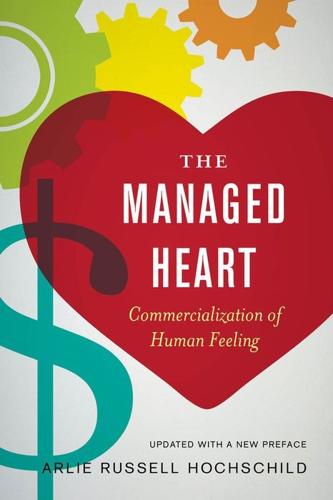
The Managed Heart: Commercialization of Human Feeling
by
Arlie Russell Hochschild
Published 1 Nov 1983
They promise on-time service, even though planes are late from 10 to 50 percent of the time, industrywide. Their pictures of half-empty planes promise space and leisurely service, which are seldom available (and certainly not desired by the company). They promise service from happy workers, even though the industry speedup has reduced job satisfaction. By creating a discrepancy between promise and fact, they force workers in all capacities to cope with the disappointed expectations of customers. The ads promise service that is "human" and personal. The omnipresent smile suggests, first of all, that the flight attendant is friendly, helpful, and open to requests.
…
Pierce,Jennifer L. 1995 Gender Trials: Emotional Lives in Contemporary Law Firms. Berkeley: University of California Press. 1999 "Emotional Labor Among Paralegals," Annals of the American Academy of Political and Social Science V561:127-142. Pugliesi, K "The Consequences of Emotional Labor: Effects 1999 on Work Stress, Job Satisfaction, and Well-Being," Motivation and Emotion V23 (N2): 125-154. Rafaeli, Anat 1989 "When Cashiers Meet Customers: An Analysis of the Role of Supermarket Cashiers," Academy of Management Journal 32 (2) :245-73. 284 Bibliography to the Twentieth Anniversary Edition Rafaeli, Anat and Robert Sutton 1987 "Expression of Emotion as Part of the Work Role," Academy of Management Review 12 (1) :23-37. 1989 "The Expression of Emotion in Organizational Life," in Barry M.
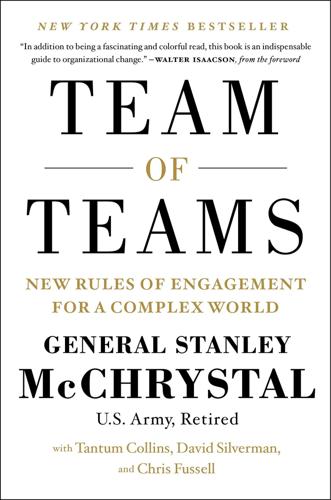
Team of Teams: New Rules of Engagement for a Complex World
by
General Stanley McChrystal
,
Tantum Collins
,
David Silverman
and
Chris Fussell
Published 11 May 2015
Velthouse, “Cognitive Elements of Empowerment: An ‘Interpretive’ Model of Intrinsic Task Motivation,” Academy of Management Review 15, no. 4 (October 1990): 666. nursing in China . . . S. Ning, H. Zhong, W. Libo, and L. Qiujie, “The Impact of Nurse Empowerment on Job Satisfaction,” Journal of Advanced Nursing 65, issue 12 (December 2009), http://www.ncbi.nlm.nih.gov/pubmed/19941547. five-star hotels in Turkey . . . Elbeyi Pelit, Yüksel Öztürk, and Yalçın Arslantürk, “The Effects of Employee Empowerment on Employee Job Satisfaction: A Study on Hotels in Turkey,” International Journal of Contemporary Hospitality Management 23, no. 6 (2011), http://www.emeraldinsight.com/journals.htm?articleid=1944210.
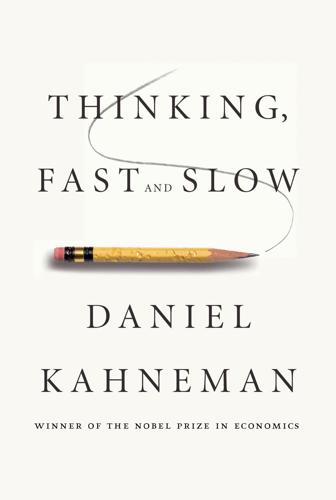
Thinking, Fast and Slow
by
Daniel Kahneman
Published 24 Oct 2011
An individual’s mood at any moment depends on her temperament and overall happiness, but emotional well-being also fluctuates considerably over the day and the week. The mood of the moment depends primarily on the current situation. Mood at work, for example, is largely unaffected by the factors that influence general job satisfaction, including benefits and status. More important are situational factors such as an opportunity to socialize with coworkers, exposure to loud noise, time pressure (a significant source of negative affect), and the immediate presence of a boss (in our first study, the only thing that was worse than being alone).
…
Sometimes scientific progress leaves us more puzzled than we were before. Speaking of Thinking About Life “She thought that buying a fancy car would make her happier, but it turned out to be an error of affective forecasting.” “His car broke down on the way to work this morning and he’s in a foul mood. This is not a good day to ask him about his job satisfaction!” “She looks quite cheerful most of the time, but when she is asked she says she is very unhappy. The question must make her think of her recent divorce.” “Buying a larger house may not make us happier in the long term. We could be suffering from a focusing illusion.” “He has chosen to split his time between two cities.
…
Martin, and Norbert Schwarz, “Priming and Communication: Social Determinants of Information Use in Judgments of Life Satisfaction,” European Journal of Social Psychology 18 (1988): 429–42. correlations between psychological measures: The correlation was .66. dominates happiness reports: Other substitution topics include marital satisfaction, job satisfaction, and leisure time satisfaction: Norbert Schwarz, Fritz Strack, and Hans-Peter Mai, “Assimilation and Contrast Effects in Part-Whole Question Sequences: A Conversational Logic Analysis,” Public Opinion Quarterly 55 (1991): 3–23. evaluate their happiness: A telephone survey conducted in Germany included a question about general happiness.
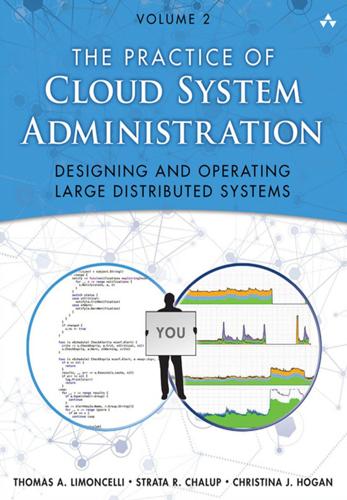
The Practice of Cloud System Administration: DevOps and SRE Practices for Web Services, Volume 2
by
Thomas A. Limoncelli
,
Strata R. Chalup
and
Christina J. Hogan
Published 27 Aug 2014
With metrics we can make data-driven improvements. For a process to be continuously improved, we not only need the right technology but also need a culture that embraces change. • Improved Job Satisfaction: It is exciting and highly motivating to see our changes rapidly put into production. When the interval between doing work and receiving the reward is small enough, we associate the two. Our job satisfaction improves because we get instant gratification from the work we do. Rather than focusing purely on cycle time, a team should have metrics that balance the velocity of individual aspects of the software delivery platform.
…
continuous delivery, 190, 223 DevOps Cafe Podcast, 188, 200 HVMs (hardware virtual machines), 58 Hybrid load balancing strategy, 75 Hyper-Text Transfer Protocol (HTTP) load balancing, 75 overview, 69 IaaS (Infrastructure as a Service), 51–54 IAPs (Incident Action Plans), 326–327 Ideals for KPIs, 390 Image method of OS installation, 219–220 Impact focus for feature requests, 46 Implementation of disaster preparedness, 318–320 Import controls, 41–42 Improvement levels in operational excellence, 412–413 Improving models in design for operations, 48–49 In-house service provider factor in service platform selection, 67 Incident Action Plans (IAPs), 326–327 “Incident Command for IT: What We Can Learn from the Fire Department” talk, 323 Incident Command System, 323–324 best practices, 327–328 example use, 328–329 Incident Action Plan, 326–327 IT operations arena, 326 public safety arena, 325 Incident Commanders, 324–325, 328 Index lookup speed, 28 Individual training for disaster preparedness, 311–312 Informal review workflows, 280 Infrastructure automation strategies, 217–220 DevOps, 185 service platform selection, 67 Infrastructure as a Service (IaaS), 51–54 Infrastructure as code, 221–222 Inhibiting alert messages, 356–357 Initial level in CMM, 405 Innovating, 148 Input/output (I/O) overload, 13 virtual environments, 58–59 Installation in deployment phase, 212–213 OS and services, 219–220 Integration in DevOps, 182 Intel OKR system, 389 Intentional delays in continuous deployment, 238 Intermodal shipping, 62 Internal backbones in cloud-scale service, 83–85 Internet Protocol (IP) addresses deployment phase, 222 load balancers, 72–73 restrictions on, 40 Introducing new features, flag flips for, 232 Introspection, 10 Invalidation of cache entry, 108 Involvement in DevOps, 183 IP (Internet Protocol) addresses deployment phase, 222 load balancers, 72–73 restrictions on, 40 Isolation in ACID term, 24 ISPs for cloud-scale service, 83 Issues naming standards, 264 tracking systems, 263–265 IT operations arena in Incident Command System, 326 ITIL recommended reading, 488 j-SOX requirements, 43 Jacob, Adam, 173 Jails containers, 60 processes, 55 Java counters, 350 JCS (joint cognitive system), 248 Jenkins CI tool, 205 Job satisfaction in service delivery, 201 Joint cognitive system (JCS), 248 JSON transmitted over HTTP, 351 Kamp, P.-H., 478–479 Kartar, J., 183 Keeven, T., 99 Kejariwal, A., 371 Kernighan, B., 11 Key indicators in capacity planning, 380–381 Key performance indicators (KPIs), 387–388 creating, 389–390 Error Budget case study, 396–399 evaluating, 396 exercises, 399–400 machine allocation example, 393–396 monitoring example, 336–337 overview, 388–389 summary, 399 Keywords in alerts, 304 Kim, Gene, 171–172 Klau, Rick, 389 Kotler, Philip, 365 KPIs.
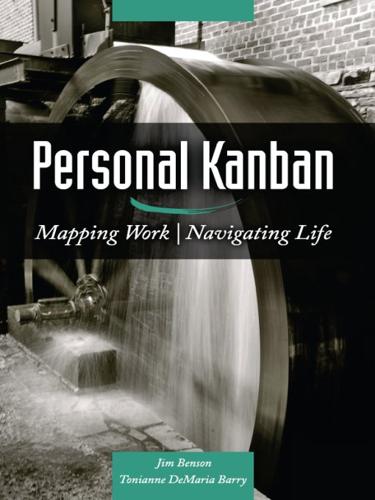
Personal Kanban: Mapping Work, Navigating Life
by
Jim Benson
and
Tonianne Demaria Barry
Published 2 Feb 2011
Case in point, this new “Lean” workforce was permitted to “stop the line.” If line-workers detected a critical error, they could halt production and bring together a team to immediately correct the problem. Increased access to information coupled with the ability to improve the company’s processes led to marked increases in productivity, effectiveness, and job satisfaction. As a result, Toyota was able to reap significant benefits by respecting the line workers they had historically undervalued. Intrinsic to Ohno’s success was the kanban. While Toyota’s organizational kanban doesn’t quite resemble Personal Kanban, it has the same fundamental features: it visualizes work and tracks its flow, it allows line-workers to pull work when they have the capacity for it, and it highlights areas where improvements are needed.

The Global Citizen: A Guide to Creating an International Life and Career
by
Elizabeth Kruempelmann
Published 14 Jul 2002
Well, I am perhaps the only student in the history of Duke Law School who smuggled a book on Portuguese history (in Portuguese) to class to escape the grinding boredom of criminal law. I gave my parents’ goals more than a fair shot, and the effort ended up displacing all of my other interests in life. Now that I have decided to leave law, I am reevaluating whether or not to pick up where I left off before law school. I decided that for me, job satisfaction would be found with a job that connects to my own interests and talents, but first I had to reconnect with those interests and talents— they had remained unused and unexamined for about five years. I went through my belongings and discarded about one-third of all my stuff. Organizing photos was very instructive.
…
It all comes down to having realistic expectations, maintaining a positive attitude, and learning to make the most out of your experiences. K E E P Y O U R E X P E C TA T I O N S R E A L I S T I C One of the most common first mistakes I see job hunters make is to expect a fulltime job overseas that is comparable in salary, benefits, and job satisfaction to similar jobs at home. Although it is possible to be sent abroad with a fabulous relocation package full of perks (and you’ll know if you qualify for this), the number of international job seekers out there far outweighs the number of cushy expat opportunities overseas. Having said that, if you do get an offer (or even multiple offers) to work overseas, you might encounter salaries that are substantially higher or lower than what you are used to.

Deep Medicine: How Artificial Intelligence Can Make Healthcare Human Again
by
Eric Topol
Published 1 Jan 2019
That is completely counter to the productivity push in healthcare, where clinicians are squeezed to see more patients in less time. Of course, saving that money takes the doctor’s time. One study, called the Healthy Work Place, of 168 clinicians in thirty-four clinics, demonstrated that pace of work was one of the most important determinants of job satisfaction.9 A fascinating 2017 paper by psychologist Ashley Whillans and her colleagues, titled “Buying Time Promotes Happiness,” showed that time saving resulted in greater life satisfaction. The people studied were diverse, drawn from representative populations of the United States, Canada, Denmark, and the Netherlands, as well as a separate group of more than eight hundred Dutch millionaires.
…
The increased happiness derived from purchasing time was across the board, independent of income or socioeconomic status, defying the old adage that money can’t buy happiness.10 The ongoing Time Bank project at Stanford University’s medical school shows how this works. The Time Bank is set up to reward doctors for their time spent on underappreciated work like mentoring, serving on committees, and covering for colleagues. In return, doctors get vouchers for time-saving services like housecleaning or meal delivery, leading to better job satisfaction, work-life balance, and retention rates.11 Like my classmates back in 1975, most people who have gone into the medical profession are motivated by, and feel privileged to have, the ability to care for patients. To a large degree, the rampant disenchantment is the result of not being able to execute our charge in a humanistic way.
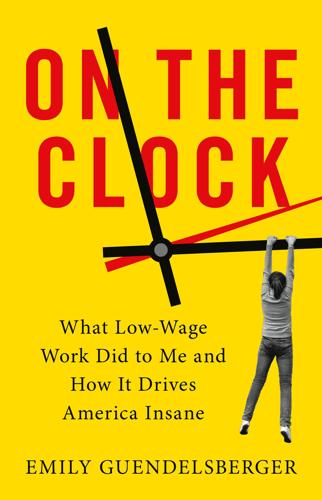
On the Clock: What Low-Wage Work Did to Me and How It Drives America Insane
by
Emily Guendelsberger
Published 15 Jul 2019
All these oh-please-my-job-is-way-worse Stockholm syndrome posts are surprisingly common for a society where work has only been getting better and better. And more than anecdotal evidence suggests that, though American jobs have gotten safer, people’s experience of them is at an all-time low. We’re less likely to get killed or maimed at work than ever before, true. But we’re also at record lows for job satisfaction, job security, free time, and feeling in control of our lives. For just one example, a recent study by the Harvard Business Review and the Energy Project surveyed twenty thousand workers across twenty-five industries and found that American workers have never felt unhappier or less secure at work, with only 37 percent satisfied with their jobs.
…
We role-play some ways that won’t make Sarah feel like a bad person. Finally, I check the clock. It’s 4:45 p.m. “Okay, Ash—it’s my last day of work, and my shift’s over in fifteen minutes. Let’s settle your overages before I have to go.” When Ash finally hangs up ten minutes later, I’m aglow with job satisfaction. I helped, I think, though I know it’s dumb. I don’t feel like Russian rouletting whether one last call will take five minutes or ninety, so I log out of my phone. I type cx very enthusiastic about Pokémon Go, cutting ties with Sarah for a while into Ash’s notations, save and quit, clock out in e-start, close the sedimentary layer of windows covering my desktop, shut down my computer, and exit the building for the last time.
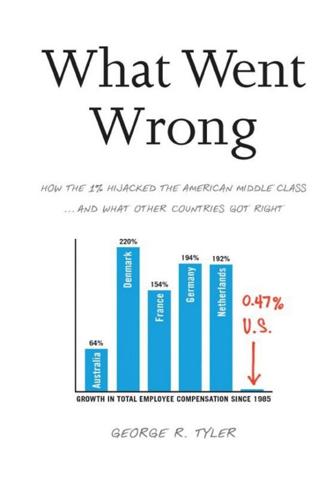
What Went Wrong: How the 1% Hijacked the American Middle Class . . . And What Other Countries Got Right
by
George R. Tyler
Published 15 Jul 2013
In 2007, for example, a survey of employee retention programs by the US staffing firm Spherion found that workers predictably prioritized issues like growth and earning potential, higher salaries, and better health insurance. Yet American managers didn’t even rank wages among their top five retention tools; instead, they prioritize ephemeral steps such as enriched “supervisor relationships” and improved “workplace culture.”15Similar findings are noted in the Society for Human Resource Management’s 2007 Job Satisfaction Survey Report.16 The American judiciary has added to the downward spiral of wages, indifferent to enforcing employee protections or the right to organize and refusing even to establish guidelines on burgeoning issues including independent contractors. Among others, Nissan and SuperShuttle exploit the resulting gray area to routinely misclassify employees as contractors or franchisees.
…
The reality is that too many American firms have simply been indifferent to the issue even though US economists readily parsed the collaborative Japanese and family capitalism models and determined why they produce superior worksite outcomes. Bradley Staats, Francesca Gino, and Gary Pisano, for example, documented in 2010 that job satisfaction and respect from supervisors willing to accept criticism are vital for firms hoping to maximize employee contributions to productivity. The psychological security associated with genuine team spirit and a two-way information flow causes employees to be more willing to introduce their own ideas and spar with colleagues and supervisors, elements simply indispensable in maximizing productivity.50 One way that collaboration enhances productivity is by incentivizing work effort.
…
500 Sign Up, 1 Wins a Job,” New York Times, October 21, 2009. 13 Associated Press, “Union drive at IKEA plant in US takes aim at Swedish furniture giant’s worker-friendly rep,” Washington Post, July 23, 2011. 14 Bernard Simon and Matt Kennard, “Two-tier system divides US carmaker workers,” Financial Times, December 14, 2011. 15 Vickie Elmer, “Show them the money,” Washington Post, October 24, 2007. 16 “2007 Job Satisfaction: A survey report by the Society for Human Resource Management,” Society for Human Resource Management, June 2007, http://www.workplacesolutionspros.com/resources/Job%20Satisfaction%20Survey%20Report.pdf. 17 Emma Schwartz, “How a good job hit a dead end,” Washington Post, April 22, 2012. 18 Woodall, Klayman, and Schwartz, “U.A.W. takes aim at foreign automakers.” 19 Vlasic and Bunkley, “U.A.W.

The Fourth Industrial Revolution
by
Klaus Schwab
Published 11 Jan 2016
And because they’re not employees you don’t have to deal with employment hassles and regulations.”28 For the people who are in the cloud, the main advantages reside in the freedom (to work or not) and the unrivalled mobility that they enjoy by belonging to a global virtual network. Some independent workers see this as offering the ideal combination of a lot of freedom, less stress and greater job satisfaction. Although the human cloud is in its infancy, there is already substantial anecdotal evidence that it entails silent offshoring (silent because human cloud platforms are not listed and do not have to disclose their data). Is this the beginning of a new and flexible work revolution that will empower any individual who has an internet connection and that will eliminate the shortage of skills?
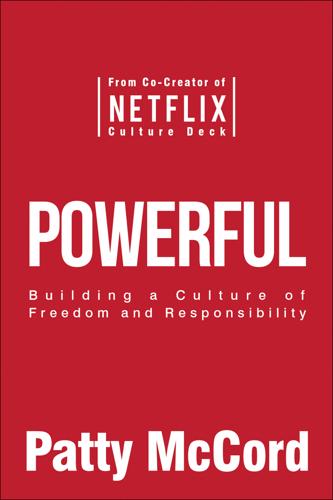
Powerful: Teams, Leaders and the Culture of Freedom and Responsibility
by
Patty McCord
Published 9 Jan 2018
Compelling but misguided ideas about “best practices” prevail: bonuses and pay tied to annual performance reviews; big HR initiatives like the recent craze for lifelong learning programs; celebrations to build camaraderie and make sure people have some fun; and, for employees who are struggling, performance improvement plans. These foster empowerment, and with that comes engagement, which leads to job satisfaction and employee happiness, and that leads to high performance, or so the thinking goes. I used to believe this too. I started my career in HR at Sun Microsystems and then Borland Software, implementing the whole gamut of conventional practices. I negotiated all kinds of tantalizing bonuses. I dutifully rallied my teams for the dreaded performance review season and coached managers through the performance improvement process.

In the Company of Heroes
by
Michael J. Durant
and
Steven Hartov
Published 1 Dec 2006
But you very rarely shut a helicopter down on a medevac, because starting it up again takes time and always has inherent dangers, system failures and the like. Their buddies loaded them onto litters in the back of our chopper and we flew them down to Yong San and the hospital at Seoul. The impact of my job satisfaction really hit me that first night. After we shut it down, debriefed, wrote up our reports, and turned in, I kept thinking about those injured soldiers who’d ridden in the back of our chopper and I couldn’t sleep, wondering about how they were. The next morning, I called the hospital and found out they were all going to make it just fine.
…
Chapter 6 JUNGLES AND DESERTS August 1988 To an army helicopter pilot, the 160th Special Operations Aviation Regiment (Airborne) was the top of the food chain. Now, there was nothing wrong with being a medevac pilot. I had been doing it for quite a while and I enjoyed it. There was great job satisfaction, and if you got hooked on being a first responder, you could serve out your twenty years in units like the 377th Med and retire after a fine career. There were plenty of other good slots for army pilots as well. If you liked multiple-ship missions, ferrying infantry or flying gunship support for massive armor formations, then the 101st Airborne was also a fine place to be.

River Out of Eden: A Darwinian View of Life
by
Richard Dawkins
Published 28 Feb 1995
Utilitarians strive to maximize "the greatest happiness for the greatest number" (a phrase that sounds more intelligent than it is, by the way). Under this umbrella, the utilitarian may give long-term stability more or less priority at the expense of short-term happiness, and utilitarians differ over whether they measure "happiness" by monetary wealth, job satisfaction, cultural fulfillment or personal relationships. Others avowedly maximize their own happiness at the expense of the common welfare, and they may dignify their egoism by a philosophy that states that general happiness will be maximized if one takes care of oneself. By watching the behavior of individuals throughout their lives, you should be able to reverseengineer their utility functions.

Don't Make Me Think, Revisited: A Common Sense Approach to Web Usability
by
Steve Krug
Published 1 Jan 2000
Being a consultant, I get to work on interesting projects with a lot of nice, smart people. I get to work at home most of the time and I don’t have to sit in mind-numbing meetings every day or deal with office politics. I get to say what I think, and people usually appreciate it. And I get paid well. On top of all that, I get a lot of job satisfaction, because when we’re finished, the things they’re building are almost always much better than when we started.1 1 Almost always. Even when people know about usability problems, they can’t always fix them completely, as I’ll explain in Chapter 9. The bad news: You probably don’t have a usability professional Almost every development team could use somebody like me to help them build usability into their products.

Living Well on the Spectrum
by
Valerie L. Gaus
Published 4 Feb 2011
Unfortunately, too many adults on the autism spectrum are unemployed or “underemployed,” which means working at jobs that don’t take advantage of their training, experience, or talent in a given field or specialty. Research in the science of happiness (subjective well-being) has repeatedly shown a strong correlation between job satisfaction and overall life satisfaction; that is, the higher one’s job satisfaction, the higher the overall satisfaction with life is likely to be and vice versa. So problems in this area of life are likely to be associated with poor quality of life in other areas as well. Henry, for example, is having problems at home, in terms of personal contentment and also his relationship with his father, that can be traced to his being unemployed.

The Art of Corporate Success: The Story of Schlumberger
by
Ken Auletta
Published 28 Sep 2015
Asked in a subsequent interview what he thought of his job, Blake said that when he graduated from Clarkson College two years ago he had never heard of “Schlumberger,” as he first called it. Now this native of Hudson Falls, New York, was earning $50,000 a year, not including a bonus, traveling all over the world on vacations, and getting job satisfaction that money alone can’t buy: “It really feels good that they put so much faith in you. I’ve been thinking of writing out a résumé if I ever wanted to leave the company, and there is no way I could make the same money. And no way I could put down on a résumé that I was responsible for the company making two to three million last year.
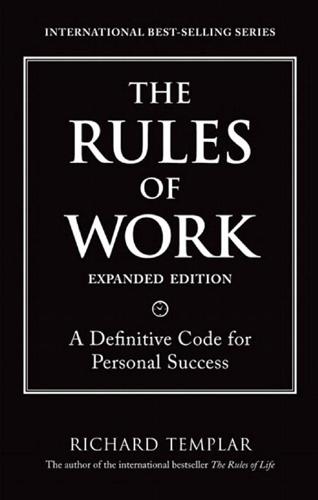
The Rules of Work, Expanded Edition: A Definitive Code for Personal Success (The Rules by Richard Templar)
by
Richard Templar
Published 26 Sep 2002
The right attitude is being good but quick, kind but observant, considerate but successful. YO U W I L L TA K E T H E MORAL HIGH GROUND AND B E B L A M E L E SS . W A L K Y O U R TA L K 23 RULE 11 Be Passionate but Don’t Kill Yourself I hope you’re very passionate about your job. Whether your job satisfaction comes from the people you work with, the sense of achievement, a deep belief in what you’re doing, the recognition you get, the money you earn, or anything else—I hope you get enough out of the job to feel very passionate about doing it. But don’t fall into the trap of thinking that if you’re passionate you have to work long hours and jump through countless hoops to prove it.
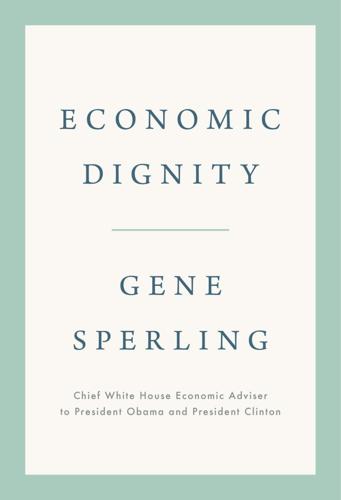
Economic Dignity
by
Gene Sperling
Published 14 Sep 2020
When home care workers were integrated into the health-care delivery team for patients, the results were impressive: one cohort saw a 41 percent decline in the average rate of repeat ER visits and a 43 percent decline in the average rate of rehospitalizations by the second year after the training.64 According to the authors of the study, the savings from reduced repeat ER visits and rehospitalizations could be as high as $12,000 per patient.65 In New York City, a pilot demonstration created an opportunity for home care workers to obtain an advanced role in their profession, termed a Care Connections Senior Aide (CCSA), creating precisely the kind of professional, valued job that could be scaled. With an advanced title in the field, CCSAs received two hundred hours of training and coaching, were integrated into the health-care delivery team, and earned a salary 60 percent higher than the average for entry-level home care workers.66 The result: improved job satisfaction, improved relations with clients and communication with clinical managers, plus a decline in emergency department visits.67 I distinctly remember an on-the-ball caregiver who stayed overnight for my father, who was dealing with congestive heart failure. This person, still in college, had the training to spot a pattern in my father’s breathing that led her to wake him up and alert a nurse.
…
She and her coauthors interviewed twenty-eight janitorial staff at a hospital and found striking differences in how they defined the tasks and overall mission of their work. Some described their work as pure cleaning, involving few skills, and thus found their job unsatisfying. Yet others defined the range of their tasks and goals in ways that went far beyond the technical description and added higher meaning, skills, and job satisfaction. This latter group performed tasks outside their job description that created more meaning in their work. One janitor changed the paintings in the rooms of comatose patients, hoping that the change in visual stimulation might help the patients’ healing. Another worker took care to clean anything on the ceiling, where many patients lying in bed would look but the average healthy person would not.20 These workers saw themselves as part of the broader service mission of the organization itself, saying, “I’m an ambassador for the hospital,” and “I’m a healer.
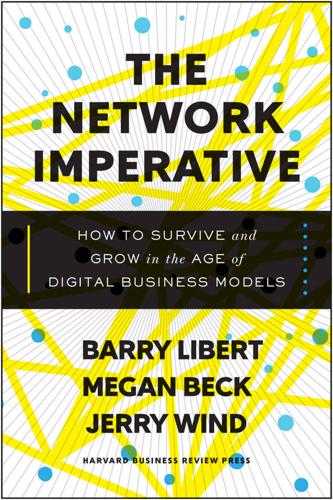
The Network Imperative: How to Survive and Grow in the Age of Digital Business Models
by
Barry Libert
and
Megan Beck
Published 6 Jun 2016
Obviously that’s a bit tongue-in-cheek, but a recent study by IBM on independent workers, including contractors, freelancers, and consultants, found that these nonemployees were significantly more engaged than average workers, and nearly at the level of companies’ highest performers. On the dimensions of job satisfaction and pride, independent workers actually gave consistently higher ratings than high performers.3 In short, the relationship between organizations and their workers is changing. Increasingly, leaders see the benefit of what has been called the Hollywood model of employment. Taken from the way teams of specialized individuals come together to work on movie productions, the Hollywood model of employment is short-term, project-based work, where each individual is brought on with targeted expertise to fulfill a specific role.
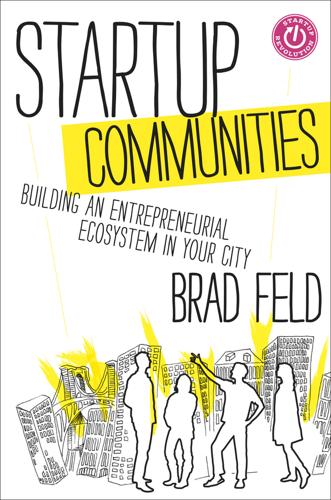
Startup Communities: Building an Entrepreneurial Ecosystem in Your City
by
Brad Feld
Published 8 Oct 2012
Many large companies are standoffish to the startup community. They worry that if they engage, the startups they interact with will recruit their employees. Although this can happen, having the opportunity to interact with startups enhances the quality of the employee’s job. This often increases job satisfaction and long-term employee retention. THE IMPORTANCE OF BOTH LEADERS AND FEEDERS Startup communities need both leaders and feeders. The problem comes when the feeders try to lead or when there is an absence of leaders. If the startup community has a culture of inclusiveness, it will constantly have entrepreneurs step up into leadership positions.

Playing With FIRE (Financial Independence Retire Early): How Far Would You Go for Financial Freedom?
by
Scott Rieckens
and
Mr. Money Mustache
Published 1 Jan 2019
See Above the Clouds FIRE retreat (Ibarra, Ecuador) income level: FIRE and, 6–7, 102–3; increasing, 189; keeping expenses less than, 126–29; “lifestyle creep” and, 9 Inconvenient Truth, An (documentary film; 2006), 78 index funds, 3, 19, 111–15, 128, 148, 189 inflation, 22, 41, 149 intention, 67, 70, 108, 121, 169 interest, compound, 115–16, 145 Internal Revenue Service (IRS), 129 internet, 50, 52, 119–20 Inventing to Nowhere (documentary film; 2014), 78 investments, 3, 99; author’s experience, 16; compound interest on, 115–16, 145; DCA for, 128; drawdown strategies for, 173; FIRE-approved, 111–16, 128; FIRE community literature on, 110–11; importance of, 127–29; market timing and, 128; retirement calculator using, 39–41; savings vs., 126; stock market crashes and, 41–42, 149; withdrawing income from, 21–22 Iowa. See Bellevue (IA) IRAs, 102, 129 Jacobsen, Jeremy, 25–26 Jared (author’s cousin), 137–38 Jensen, Carl, 125 job opportunities, 95 job satisfaction, 3 Joe (author’s friend), 29–30 Kitces, Michael, 163 “Latte Factor Calculator,” 56 leases, 82 lifestyle: FIRE as choice of, 125; homeownership and, 131; inflated, 103; paycheck-topaycheck, 127 “lifestyle creep,” 9 Longmont (CO), 106–8 lost-wages flaw, 149–50 “lottery mentality,” 13 low-cost living, 110 lunches, 56–57 Mad Fientist (blog), 25, 34, 109, 125; author’s attempts to persuade spouse using, 31; Kitces interview on, 163; Playing with FIRE documentary and, 78; popularity of, 26.

Willful: How We Choose What We Do
by
Richard Robb
Published 12 Nov 2019
See also mercy ambiguity effect, 24 American Work-Sports (Zarnowski), 191 Anaximander, 190 anchoring, 168 angel investors, 212–213n1 “animal spirits,” 169 Antipater of Tarsus, 134–135, 137 “anxious vigilance,” 73, 82 arbitrage, 70, 78 Aristotle, 200, 220n24 Asian financial crisis (1997–1998), 13 asset-backed securities, 93–95 asset classes, 75 astrology, 67 asymmetric information, 96, 210n2 authenticity, 32–37, 114 of challenges, 176–179 autism, 58, 59 auto safety, 139 Bank of New York Mellon, 61 Battle of Waterloo, 71, 205 Bear Stearns, 85 Becker, Gary, 33, 108–109 behavioral economics, 4, 10, 198–199 assumptions underlying, 24 insights of, 24–25 rational choice complemented by, 6 Belgium, 191 beliefs: attachment to, 51 defined, 50 evidence inconsistent with, 54, 57–58 formation of, 53, 92 persistence of, 26–28, 54 transmissibility of, 92–93, 95–96 Bentham, Jeremy, 127, 197–198 “black swans,” 62–64 blame aversion, 57, 72 brain hemispheres, 161 Brexit, 181–185 “bull markets,” 78 capital asset pricing model, 64 care altruism, 38, 104, 108–114, 115, 120, 135, 201 Casablanca (film), 120, 125 The Cask of Amontillado (Poe), 126–127 challenges, 202–203 authenticity of, 176–179 staying in the game linked to, 179–181 changes of mind, 147–164 charity, 40, 45–46, 119, 128 choice: abundance of, 172–174 intertemporal, 149–158, 166 purposeful vs. rational, 22–23 Christofferson, Johan, 83, 86, 87, 88 Cicero, 133–134 Clark, John Bates, 167 cognitive bias, 6, 23, 51, 147–148, 167, 198–199 confirmation bias, 200 experimental evidence of, 10–11, 24 for-itself behavior disguised as, 200–201 gain-loss asymmetry, 10–11 hostile attribution bias, 59 hyperbolic discounting as, 158 lawn-mowing paradox and, 33–34 obstinacy linked to, 57 omission bias, 200 rational choice disguised as, 10–11, 33–34, 199–200 salience and, 29, 147 survivor bias, 180 zero risk bias, 24 Colbert, Claudette, 7 Columbia University, 17 commitment devices, 149–151 commodities, 80, 86, 89 commuting, 26, 38–39 competitiveness, 11, 31, 41, 149, 189 complementary skills, 71–72 compound interest, 79 confirmation bias, 57, 200 conspicuous consumption, 31 consumption planning, 151–159 contrarian strategy, 78 cooperation, 104, 105 coordination, 216n15 corner solutions, 214n8 cost-benefit analysis: disregard of, in military campaigns, 117 of human life, 138–143 credit risk, 11 crime, 208 Dai-Ichi Kangyo Bank (DKB), 12–14, 15, 17, 87, 192–193 Darwin, Charles, 62–63 depression, psychological, 62 de Waal, Frans, 118 Diogenes of Seleucia, 134–135, 137 discounting of the future, 10, 162–164 hyperbolic, 158, 201 disjunction effect, 174–176 diversification, 64–65 divestment, 65–66 Dostoevsky, Fyodor, 18 drowning husband problem, 6–7, 110, 116, 123–125 effective altruism, 110–112, 126, 130, 135–136 efficient market hypothesis, 69–74, 81–82, 96 Empire State Building, 211–212n12 endowment effect, 4 endowments, of universities, 74 entrepreneurism, 27, 90, 91–92 Eratosthenes, 190 ethics, 6, 104, 106–108, 116, 125 European Union, 181–182 experiential knowledge, 59–61 expert opinion, 27–28, 53, 54, 56–57 extreme unexpected events, 61–64 fairness, 108, 179 family offices, 94 Fear and Trembling (Kierkegaard), 53–54 “felicific calculus,” 197–198 financial crisis of 2007–2009, 61, 76, 85, 93–94, 95 firemen’s muster, 191 flow, and well-being, 201–202 Foot, Philippa, 133–134, 135 for-itself behavior, 6–7, 19, 21, 27, 36, 116, 133–134, 204–205, 207–208 acting in character as, 51–53, 55–56, 94–95, 203 acting out of character as, 69, 72 analyzing, 20 authenticity and, 33–35 charity as, 39–40, 45–46 comparison and ranking lacking from, 19, 24, 181 consequences of, 55–64 constituents of, 26–31 defined, 23–24 difficulty of modeling, 204 expert opinion and, 57 extreme unexpected events and, 63–64 flow of time and, 30 free choice linked to, 169–172 in groups, 91–100 incommensurability of, 140–143 in individual investing, 77–78 in institutional investing, 76 intertemporal choice and, 168, 175, 176 job satisfaction as, 189 mercy as, 114 misclassification of, 42, 44, 200–201 out-of-character trading as, 68–69 purposeful choice commingled with, 40–43, 129, 171 rationalizations for, 194–195 in trolley problem, 137 unemployment and, 186 France, 191 Fuji Bank, 14 futures, 80–81 gain-loss asymmetry, 10–11 Galperti, Simone, 217n1 gambler’s fallacy, 199 gamifying, 177 Garber, Peter, 212n1 Germany, 191 global equity, 75 Good Samaritan (biblical figure), 103, 129–130, 206 governance, of institutional investors, 74 Great Britain, 191 Great Depression, 94 Greek antiquity, 190 guilt, 127 habituation, 201 happiness research (positive psychology), 25–26, 201–202 Hayek, Friedrich, 61, 70 hedge funds, 15–17, 65, 75, 78–79, 93, 95 herd mentality, 96 heroism, 6–7, 19–20 hindsight effect, 199 holding, of investments, 79–80 home country bias, 64–65 Homer, 149 Homo ludens, 167–168 hostile attribution bias, 59 housing market, 94 Huizinga, Johan, 167–168 human life, valuation of, 138–143 Hume, David, 62, 209n5 hyperbolic discounting, 158, 201 illiquid markets, 74, 94 index funds, 75 individual investing, 76–82 Industrial Bank of Japan, 14 information asymmetry, 96, 210n2 innovation, 190 institutional investing, 74–76, 82, 93–95, 205 intergenerational transfers, 217n1, 218n4 interlocking utility, 108 intertemporal choice, 149–159, 166 investing: personal beliefs and, 52–53 in start-ups, 27 Joseph (biblical figure), 97–99 Kahneman, Daniel, 168 Kantianism, 135–136 Keynes, John Maynard, 12, 58, 167, 169, 188–189 Kierkegaard, Søren, 30, 53, 65, 88 Knight, Frank, 145, 187 Kranton, Rachel E., 210–211n2 labor supply, 185–189 Lake Wobegon effect, 4 lawn-mowing paradox, 33–34, 206 Lehman Brothers, 61, 86, 89, 184 leisure, 14, 17, 41, 154, 187 Libet, Benjamin, 161 life, valuation of, 138–143 Life of Alexander (Plutarch), 180–181 Locher, Roger, 117, 124 long-term vs. short-term planning, 148–149 loss aversion, 70, 199 lottery: as rational choice, 199–200 Winner’s Curse, 34–36 love altruism, 104, 116, 123–125, 126, 203 lying, vs. omitting, 134 Macbeth (Shakespeare), 63 MacFarquhar, Larissa, 214n6 Madoff, Bernard, 170 malevolence, 125–127 Malthus, Thomas, 212n2 manners, in social interactions, 104, 106, 107, 116, 125 market equilibrium, 33 Markowitz, Harry, 65 Marshall, Alfred, 41, 167 Mass Flourishing (Phelps), 189–191 materialism, 5 merchant’s choice, 133–134, 137–138 mercy, 104, 114–116, 203 examples of, 116–120 inexplicable, 45–46, 120–122 uniqueness of, 119, 129 mergers and acquisitions, 192 “money pump,” 159 monks’ parable, 114, 124 Montaigne, Michel de, 114, 118 mortgage-backed securities, 93 Nagel, Thomas, 161 Napoleon I, emperor of the French, 71 neoclassical economics, 8, 10, 11, 22, 33 Nietzsche, Friedrich, 21, 43, 209n5 norms, 104, 106–108, 123 Norway, 66 Nozick, Robert, 162 observed care altruism, 108–112 Odyssey (Homer), 149–150 omission bias, 200 On the Fourfold Root of the Principle of Sufficient Reason (Schopenhauer), 209n5 “on the spot” knowledge, 61, 70, 80, 94, 205 Orico, 13 overconfidence, 57, 200 “overearning,” 44–45 The Palm Beach Story (film), 7 The Paradox of Choice (Schwartz), 172 parenting, 108, 141, 170–171 Pareto efficiency, 132–133, 136, 139–140 Peirce, Charles Sanders, 53–54, 67, 94 pension funds, 66, 74–75, 93, 95 permanent income hypothesis, 179 Pharaoh (biblical figure), 97–99 Phelps, Edmund, 17, 189–191 Philip II, king of Macedonia, 181 planning, 149–151 for consumption, 154–157 long-term vs. short-term, 148–149 rational choice applied to, 152–158, 162 play, 44–45, 167, 202 pleasure-pain principle, 18 Plutarch, 180–181 Poe, Edgar Allan, 126 pollution, 132–133 Popeye the Sailor Man, 19 portfolio theory, 64–65 positive psychology (happiness research), 25–26, 201–202 preferences, 18–19, 198 aggregating, 38–39, 132, 164 altruism and, 28, 38, 45, 104, 110, 111, 116 in behavioral economics, 24, 168 beliefs’ feedback into, 51, 55 defined, 23 intransitive, 158–159 in purposeful behavior, 25, 36 risk aversion and, 51 stability of, 33, 115, 147, 207, 208 “time-inconsistent,” 158, 159, 166, 203 present value, 7, 139 principal-agent problem, 72 Principles of Economics (Marshall), 41 prisoner’s dilemma, 105 private equity, 75 procrastination, 3, 4, 19, 177–178 prospect theory, 168 protectionism, 185–187 Prussia, 191 public equities, 75 punishment, 109 purposeful choice, 22–26, 27, 34, 36, 56, 133–134, 204–205 altruism compatible with, 104, 113–114, 115–116 commensurability and, 153–154 as default rule, 43–46 expert opinion and, 57 extreme unexpected events and, 62–63 flow of time and, 30 for-itself behavior commingled with, 40–43, 129, 171 mechanistic quality of, 68 in merchant’s choice, 135, 137–138 Pareto efficiency linked to, 132 rational choice distinguished from, 22–23 regret linked to, 128 social relations linked to, 28 stable preferences linked to, 33 in trolley problem, 135–136 vaccination and, 58–59 wage increases and, 187.

Austerity Britain: 1945-51
by
David Kynaston
Published 12 May 2008
A worker who complained about a monotonous job was usually unhappy in his home life; most male jobs were not monotonous; and even if up to a third of the male working-class population did ‘dull, repetitive, and uninteresting jobs’, that did not mean that they were all bored stiff with them, given the twin observed facts of the sociability of the workplace and that ‘machines are often very interesting and many people like handling them.’ Yet as Zweig fully conceded, the question of job satisfaction depended on a range of variables, even within the same grade of the same industry in the same region: Cleanliness, the right temperature, good air, light, private lockers, good washing facilities, good canteens, the good repute of a firm, a genial atmosphere, friendly relations on the floor, fairness in dealing with the worker, a good foreman, and a good boss, may turn even a distasteful job into an attractive one.
…
An important shift, it can only be understood against the background of full employment and rising real wages. Even so, for the workforce as a whole, it did not alter the dominant priorities identified by Zweig. Early in 1953, Research Services Ltd, the organisation run by Mark Abrams, interviewed 1,079 people who worked for a living across the country. They were shown a list of ten possible job satisfactions – nearness to your home; friendly people to work with; good wages or earnings; security of employment; opportunity to use your own ideas; good holidays; opportunities to get on; adequate pension; good training facilities; reasonably short hours – and asked to name which three they considered most important.
…
But it just didn’t work out like that, because you felt you were working and sweating hard enough as it was . . . Over the years, observers of the industrial scene (such as Graham Turner) tended to find the factory and its environs a sullen, dispiriting sort of place. The work itself was so intensely narrow and repetitive that the concept of any intrinsic job satisfaction was unimaginable; a high proportion of the workforce, going back to the 1930s, were incomers to the area attracted solely by the material rewards of the work – men characterised by Turner as often ‘at odds with their particular situation or with society in general, the misfits, the dissatisfied and the restless’.
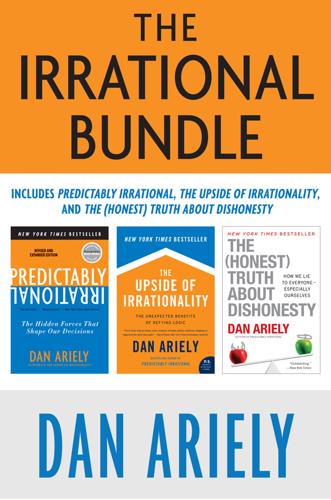
The Irrational Bundle
by
Dan Ariely
Published 3 Apr 2013
A few months later we aren’t as annoyed by the color of the cabinets, but at the same time, we don’t derive as much pleasure from the handsome floors. This type of emotional leveling out—when initial positive and negative perceptions fade—is a process we call hedonic adaptation. Just as our eyes adjust to changes in light and environment, we can adapt to changes in expectation and experience. For example, Andrew Clark showed that job satisfaction among British workers was strongly correlated with changes in workers’ pay rather than the level of pay itself. In other words, people generally grow accustomed to their current pay level, however low or high. A raise is great and a pay cut is very upsetting, regardless of the actual amount of the base salary.
…
A Accessory Transit Company, 154 acknowledging workers, 74–76, 80 acronyms, 120 adaptation, 157–90 assortative mating and, 191–212; see also assortative mating focusing attention on changes and, 159–60 hedonic, 160–84; see also hedonic adaptation nineteenth-century experiments on, 157–58 to pain, 160–67 physical, 157–60, 161n sensory perception and, 158–60 Aesop, 198–99 agriculture, obesity and technological developments in, 8 AIDS, 250, 251 airlines, customer service problems of, 142–43 alienation of labor, 79–80 American Cancer Society (ACS), 241–42, 249–50, 254 Andrade, Eduardo, 262, 265, 267–68, 299 anger, acting on, 257 author’s anecdote of, 258–61 driving and, 261 ultimatum game and, 268, 269–70, 273, 274, 276 animals: empathy for suffering of, 249 generalizing about human behavior from studies on, 63 working for food preferred by, 59–63 annoying experiences: breaking up, 177–79, 180 decisions far into future affected by, 262–64 annuities, 234 anterior insula, 266–67 anticipatory anxiety, 45 Anzio, Italy, battle of (1944), 167 apathy toward large tragedies, 238–39 drop-in-the-bucket effect and, 244–45, 252, 254–55 statistical condition and, 238–41, 242, 246, 247–49, 252–53 apologies, 149–51 for medical errors, 152 Apple, 120n battery replacement issue and, 141–42 art, homemade, 89–90 Asian tsunami, 250, 251 assembly line, 78–79 assortative mating, 191–212 altering aesthetic perception and (sour grapes theory), 198–99, 200, 201, 203 author’s injuries and, 191–96, 210–11 dinner party game and, 198 failure to adapt and, 200–201, 203–5 gender differences and, 209, 211 HOT or NOT study and, 201–5, 208, 211 reconsidering rank of attributes and, 199–200, 201, 205–10 speed-dating experiment and, 205–10 Atchison, Shane, 140–41, 146 attachment: to one’s own ideas, see Not-Invented-Here (NIH) bias to self-made goods, see IKEA effect attractiveness, assortative mating and, 191–212 see also assortative mating auctions, first-price vs. second-price, 98–99 Audi customer service, author’s experience with, 131–36, 137, 149, 153–54 experimental situation analogous to, 135–39 fictional case study for Harvard Business Review based on, 147–49 B bailout, public outrage felt in response to, 128–31 baking mixes, instant, 85–87 bankers: author’s presentation of research findings to, 107–9, 121 bonus experiments and, 38–41, 51 Frank’s address to, 41 public outrage in response to bailout and, 128–31 bankruptcy, 129, 130 Barkan, Racheli, 39, 109–10, 299 basketball, clutch players in, 39–41 beauty: assortative mating and, 196–212; see also assortative mating general agreement on standard of, 203 Becker-DeGroot-Marschak procedure, 91 Beecher, Henry, 167 behavioral economics: goal of, 9–10 human rationality not assumed in, 6–7 revenge as metaphor for, 124n Betty Crocker, 87 Bible, Gideon’s conversation with God in, 288–89 blindness, adaptation to, 172–74 blogging, 65 Blunder (Shore), 117 boiling-frog experiment, 157–58 bonuses, 17–52 bank executives’ responses to research on, 37–39 clutch abilities and, 39–41 for cognitive vs. mechanical tasks, 33–36, 40–41 creativity improvements and, 47–48 experiments testing effectiveness of, 21–36, 44–46 Frank’s remarks on, 41 intuitions about, 36–37 inverse-U relationship between performance and, 20–21, 47 loss aversion and, 32–33 optimizing efficacy of, 51–52 public rage over, 21 rational economists’ view of, 36–37 social pressure and, 44–46 surgery situation and, 48–49 viewed as standard part of compensation, 33 in wake of financial meltdown of 2008, 131 brain: judgments about experiences and, 228–29 punishment and, 126 breaks, in pleasant vs. painful experiences, 177–81 Brickman, Philip, 170 business, experimental approach to, 292–93 C cake mixes, instant, 85–87 California, moving to, 176 Call, Josep, 127 cancer, American Cancer Society fundraising and, 241–42, 249–50, 254 canoeing, romantic relationships and, 278–79 cars, 215–16 designing one’s own, 88, 89 division of labor in manufacture of, 78–79 in early days of automotive industry, 94 hedonic treadmill and, 175 see also driving cell phones, 7 in experiments on customer revenge, 135–39, 145–46, 150–51 see also texting CEOs, very high salaries and bonuses paid to, 21 Chance, Zoë, 220, 300 changes: ability to focus attention on, 159–60 decisions about life’s path and, 287 in future, foreseeing adaptation to, 160, 171–74 status quo bias and, 285, 286 in workers’ pay, job satisfaction and, 169–70 charities: American Cancer Society (ACS), 241–42, 249–50, 254 calculating vs. emotional priming and, 246–48 emotional appeals and, 240–42, 248–50, 253–54, 256 identifiable victim effect and, 239–42, 248, 256 charities (cont.) mismatching of money and need and, 250–51 motivating people to take action and, 252–56 Chat Circles, 225 cheating, 76 childbirth, pain of, 168, 169n children: in growing and preparing of food, 121 parents’ overvaluation of, 97–98 chimpanzees, sense of fairness in, 127 chores, taking breaks in, 177–79, 180 civil liberties, erosion of, 158 Clark, Andrew, 169 climate change, 251–52 closeness, empathy and, 243, 245, 254 clutch abilities, 39–41 CNN, 238 Coates, Dan, 170 cockroaches, social pressure in, 45–46 commercial breaks, enjoyment of television and, 181n comparisons, hedonic adaptation and, 189 compensation, 47 changes in, job satisfaction and, 169–70 see also bonuses completion: employees’ sense of, 77, 79–80 Loewenstein’s analysis of mountaineering and, 80–81 computers, 233 consumer purchases, 185–88 happiness derived from transient experiences vs., 187–88 hedonic treadmill and, 175 placing limits on, 186–87 reducing, 185–86 spacing of, 185, 186 contrafreeloading, 60–63 Jensen’s study of, 60–62, 63 standard economic view at odds with, 62–63 Converse, 95 cooking: children’s involvement in, 121 enjoyment factor and, 62n, 105–6 semi-preprepared food and, 85–88 CO2 emissions, 251–52 counting strategies, 282–83 Count of Monte Cristo, The (Dumas), 123 creation, pride of: ideas and, see Not-Invented-Here (NIH) bias self-made goods and, see IKEA effect creativity, bonuses and improvements in, 47–48 Csíkszentmihályi, Mihály, 49 cultures, organizational: acronyms and, 120 Not-Invented-Here bias and, 119–21 customer revenge, 131–51 against airlines, 142–43 apologies and, 149–51, 152 author’s experience with Audi customer service and, 131–36, 137, 147–49, 153–54 distinction between agents and principals and, 144–47 Farmer and Shane’s “Yours Is a Very Bad Hotel” and, 140–41, 146 fictional case study for Harvard Business Review on, 147–49 increase in, 143 Neistat brothers’ video on Apple’s customer service and, 141–42 passage of time and, 151 phone call interruption experiments on, 135–39, 145–46, 150–51 customization, 94–96 of cars, 88, 89, 94 effort expended in, 89, 95–96 overvaluation despite removing possibility of, 96 of shoes, 95, 96 D Dallaire, Roméo, 255 Darfur, 238, 253 Dart Ball game, 23, 34 Darwin, Charles, 157 dating, 191–235 market failures in, 213–15, 216–17, 220–21, 230–32, 233–35 playing hard to get and, 104 standard practice of, 224–25, 227–28 yentas (matchmakers) and, 213 see also assortative mating; online dating; speed dating decision making: author’s medical care and, 284–88 cooling off before, 257, 279 emotions and, 261–77 gender differences and, 274–76 irreversible decisions and, 285, 286 rationalization of choices in, 287 from rational perspective, 5–6 short-term, long-term decisions affected by, 264–65, 270–74, 276–77 stability of strategies for, 261–65; see also self-herding ultimatum game and, 265–70, 275–76 dentistry, adaptation to pain and, 161–62 design, taking people’s physical limitations into account in, 230–32 destroying work in front of workers, 74–76 Dichter, Ernest, 86 disease: adaptation to pain and, 165, 167 preventative health care and, 251, 256 “survivor” rhetoric and, 241–42 Disney, 154 distraction, performance-based incentives and, 30, 36 division of labor, 77–80 IT infrastructure and, 77, 79–80 Marx’s alienation notion and, 79 Smith’s observations on, 77–78 divorce, foreseeing outcome of, 173 Dodson, John, 18–20, 22, 31, 47 do-it-yourself projects, see IKEA effect Donath, Judith, 225 Dostoyevsky, Fyodor, 157 Doubletree Club, Houston, 140–41, 146 dreams, author’s self-image in, 182–83 DreamWorks SKG, 154 driving: momentary anger during, 261 safety precautions and, 6–7 texting during, 6, 7, 8 see also cars drop-in-the-bucket effect, 244–45, 252, 254–55 Dumas, Alexandre, 123 E Eastwick, Paul, 172–73 Edison, Thomas, 117–19, 122 effort: increase in value related to, 89, 90, 95–96, 105–6; see also IKEA effect joy derived from activity and, 71–72 meaningful work conditions and, 72 ownership of ideas and, 114–16 see also labor egg theory, 86–88 Eisner, Michael, 154 electric chair, 119 electricity, alternating current (AC) vs. direct current (DC), 117–19 emotional cascades, 265–78 gender differences and, 274–76 romantic relationships and, 277–78 ultimatum game and, 265–76 emotional priming: empathy for plight of others and, 246–48 ultimatum game and, 268–70 emotions, 43, 237–79 appeals to, willingness to help others and, 240–42, 248–50, 253–54, 256 decision making and, 261–77; see also decision making in past, humans’ poor memory of, 264 transience of, 257, 261, 270 see also empathy; negative feelings, acting on empathy: animals’ suffering and, 249, 252 apathy toward statistical victims and, 238–41, 242, 246, 247–49, 252–53 Baby Jessica saga and, 237–38 calculating vs. emotional priming and, 246–48 clear moral principles and, 255 closeness and, 243, 245, 254 drop-in-the-bucket effect and, 244–45, 252, 254–55 emotional appeals and, 240–42, 248–50, 253–54, 256 global warming and, 251–52 identifiable victim effect and, 239–42, 248, 256 overcoming barriers to, 252–56 rules to guide our behavior and, 254–55 thought experiment of drowning girl and, 242–43, 245 toward one person vs. many in need, 237–56 vividness and, 24, 243n, 244, 245 endowment effect, 285, 286 Enron, 216 evolution, mismatch between speed of technological development and, 8–9 experiments, 10–11, 288–95 business or public policy and, 292–94, 295 of Gideon, 288–89 medical practice and, 289–92 rational economists’ criticisms of, 49–51 see also specific topics Exxon Valdez oil spill, 249 F fairness, sense of: in chimpanzees, 127 decision making and, 266–67; see also ultimatum game gender differences and, 275–76 Fallows, James, 158 Farmer, Tom, 140–41, 146, 148–49 FedEx, 108–9 feedback, about work, 74–76 Feeks, John, 118–19 Fehr, Ernst, 125–26 financial incentives: meaning of labor and, 72–73, 76 see also bonuses financial markets, safety measures for, 7 financial meltdown of 2008, 7, 21, 216 chronology of events in, 129–30 desire for revenge in wake of, 128–31 lack of experimental approach to, 293 outraged public reaction to bailout in, 128–29, 130 Finkel, Eli, 172–73 First Knight, 50 fixation, pride in creation and ownership and, 89, 122 food: animals’ preference for working for, 59–63 semi-preprepared, 85–88 shortages of, identifiable victim effect and, 239–41 see also cooking Food and Drug Administration (FDA), 292 Ford, Henry, 78–79, 94 Forgea (white terrier), 249 Fox, Michael J., 254 “Fox and the Grapes, The” (Aesop), 198–99 Frank, Barney, 41 Frankl, Viktor, 45 free food, animals’ preference for working for food vs., 60–62 Frenk, Hanan, 161–65, 300 Friends, ultimatum game and, 269, 270–71, 272 frog experiment, 157–58 Frost, Jeana, 219–20, 229, 300 Fryer, Bronwyn, 148 furniture, do-it-yourself, 83–84, 96, 105, 106 future, foreseeing adaptation to changes in, 160, 171–74 G gardening: children growing food and, 121 enjoyment factor and, 105–6 gender differences: assortative mating and, 209, 211 decision making and, 274–76 pain threshold and tolerance and, 168–69 Gideon, 288–89 global warming, 158, 251–52 Gneezy, Ayelet, 135, 144–45, 150, 300–301 Gneezy, Uri, 21, 44, 301 Gore, Al, 158, 252 government policies, experimental approach to, 292–94, 295 H happiness: comparisons to other people and, 189 consumer purchases and, 175, 185–88 inaccurate predictions about, 170–71 return to baseline of, 170 transient vs. constant experiences and, 187–88 Harvard Business Review (HBR), 147–49 health care, see medical care hedonic adaptation, 160–84 to annoying experiences, 177–79, 180 author’s personal history and, 181–84, 189 blindness and, 172–74 breaking up experiences and, 177–81 changes in workers’ pay and, 169–70 comparisons to other people and, 189 consumer purchases and, 175, 185–88 extending pleasurable experiences and, 176–78, 179–81, 185, 186 in future, foreseeing of, 160, 171–74 happiness baseline and, 170 life-altering injuries and, 171–72, 174 moving to California and, 176 new houses and, 168–69 pain and, 160–67 romantic breakups and, 172–73 to transient vs. constant experiences, 187–88 using our understanding of, 176–81, 184–90 hedonic disruptions, 177–81 hedonic treadmill, 175 Heingartner, Alexander, 45–46 Henry, O., 98 herding, 262 see also self-herding Herman, Edward, 45–46 Hippocrates, 82 Hogerty, Megan, 81 homeostatic mechanisms, 81 Hong, James, 201, 203 HOT or NOT study, 201–5, 208 gender differences in, 209, 211 Meet Me feature and, 204–5, 208, 209 humor, sense of, 199, 200, 207, 208, 228 Hurricane Katrina, 250, 251 I ideas: attachment to, see Not-Invented-Here (NIH) bias idiosyncratic fit and, 111–12 identifiable victim effect, 239–42, 248, 256 American Cancer Society and, 241–42 identity, connection between work and, 53–55, 79 idiosyncratic fit, ideas and, 111–12 ignoring workers, 74–76 IKEA, 83–84, 106 IKEA effect, 83–106 author’s creations in rehabilitation center and, 100–101 completion of project and, 101–4, 105 do-it-yourself furniture and, 83–84, 96, 106 effort expended and, 89, 90, 95–96, 105–6 four principles in, 104–5 and lack of awareness of overvaluation, 99 Legos experiment and, 96, 97 Local Motors cars and, 88, 89 Not-Invented-Here (NIH) bias and, 109–10, 121 origami experiments and, 91–94, 97, 98–99, 102–4 parents’ overvaluation of their children and, 97–98 practical implications of, 121–22 relaxation notion and, 105–6 removal of individual customization and, 96 semi-preprepared food and, 85–88 shoe design and, 95, 96 immediate gratification, 5 Inconvenient Truth, An, 252 initiation into social groups, 89 injuries: association of pain with getting better after, 166–67 author’s dating prospects and, 191–96, 210–11 author’s decisions about his medical care and, 284–88 author’s personal history related to, 1–4, 13, 107, 160–62, 166–67, 181–84, 189, 191–96, 210–11, 281–88 battlefield vs. civilian, 167 foreseeing future after, 160 life-altering, adaptation to, 160, 171–72, 174 pain thresholds and tolerance related to severity of, 161–65 Institute for Evolutionary Anthropology, Leipzig, Germany, 126–27 insurance products, 233–34 interruptions: in pleasant vs. painful experiences, 177–81 TV commercials and, 181n see also phone call interruption experiments intuitions: bonuses and, 36–37 received medical wisdom and, 289–92 romantic, 172–73 testing of, 10n, 288–95 inverse-U relationship, defined, 19 iPods and iPhones, battery replacement in, 141–42 irrationality: summary of findings on, 288 upside as well as downside of, 11–12, 294 irreversible decisions, 285, 286 IT infrastructure, division and meaning of labor and, 77, 79–80 J Janoff-Bulman, Ronnie, 170 Jensen, Glen, 60–62, 63 Jensen, Keith, 127 Jewish tradition, 254–55 Johns Hopkins Bloomberg School of Public Health, Baltimore, 152 Joyless Economy, The (Scitovsky), 188 justice, see fairness, sense of K Kahneman, Danny, 32n, 175–76 Kamenica, Emir, 66, 301 Katzenberg, Jeffrey, 154 Kemmler, William, 119 kinship, empathy and, 243 Krishnamurti, Tamar, 172–73 Krzyzewski, Mike, 39 L labor: connection between identity and, 53–55, 79 contrafreeloading and, 60–63 economic model of, 55, 62–63, 105 financial incentives and, see bonuses meaning of, see meaning of labor overvaluation resulting from, see IKEA effect on projects without meaning, 56–57, 63–72 Labyrinth game, 23 Lee, Leonard, 132, 134, 197, 201–2, 301–2 Lee, Sandra, 87–88 leeches, medicinal use of, 290–91 Legos experiments: on IKEA effect, 96, 97 on reducing meaningfulness of work, 66–74, 77, 80 letter-pairs experiment, 74–76, 80 life-altering events, hedonic adaptation and, 170 Life as a House, ultimatum game and, 268, 269, 270, 272, 276 light, adaptation to changes in, 159 Local Motors, Inc., 88, 89 Loewenstein, George, 21, 44, 80–81, 172–73, 197, 201–2, 239–41, 246–48, 302 long-term objectives, short-term enjoyments vs., 4–5 loss aversion, 32–33, 285, 286 lottery winners, hedonic adaptation of, 170, 171 “Love the One You’re With,” 197, 211–12 M malaria, 250, 251 Man’s Search for Meaning (Frankl), 45 marketing, adaptation and, 158 market mechanisms, 215–16 dating and, 213–15, 216–17, 220–21, 230–32, 233–35 Marx, Karl, 79 massages, extending pleasure of, 179–80 matchmakers (yentas), 213 Mazar, Nina, 21, 30, 44, 302 McClure, Jessica (Baby Jessica), 237–38 meals, see cooking meaning of labor, 53–82 in acknowledged, ignored, and shredded conditions, 74–76 animals’ preference for working for food and, 59–63 blogging and, 65 division of labor and, 77–80 draining work of meaning and, 55–57, 63–77 financial incentives and, 72–73, 76 joy derived from activity and, 71–72 labor-identity connection and, 53–55, 79 Legos experiment and, 66–74, 76, 80 lessons for workplace on, 80–82 letter-pairs experiment and, 74–76, 80 “meaning” vs.
…
mismatching of money and need and, 250–51 motivating people to take action and, 252–56 Chat Circles, 225 cheating, 76 childbirth, pain of, 168, 169n children: in growing and preparing of food, 121 parents’ overvaluation of, 97–98 chimpanzees, sense of fairness in, 127 chores, taking breaks in, 177–79, 180 civil liberties, erosion of, 158 Clark, Andrew, 169 climate change, 251–52 closeness, empathy and, 243, 245, 254 clutch abilities, 39–41 CNN, 238 Coates, Dan, 170 cockroaches, social pressure in, 45–46 commercial breaks, enjoyment of television and, 181n comparisons, hedonic adaptation and, 189 compensation, 47 changes in, job satisfaction and, 169–70 see also bonuses completion: employees’ sense of, 77, 79–80 Loewenstein’s analysis of mountaineering and, 80–81 computers, 233 consumer purchases, 185–88 happiness derived from transient experiences vs., 187–88 hedonic treadmill and, 175 placing limits on, 186–87 reducing, 185–86 spacing of, 185, 186 contrafreeloading, 60–63 Jensen’s study of, 60–62, 63 standard economic view at odds with, 62–63 Converse, 95 cooking: children’s involvement in, 121 enjoyment factor and, 62n, 105–6 semi-preprepared food and, 85–88 CO2 emissions, 251–52 counting strategies, 282–83 Count of Monte Cristo, The (Dumas), 123 creation, pride of: ideas and, see Not-Invented-Here (NIH) bias self-made goods and, see IKEA effect creativity, bonuses and improvements in, 47–48 Csíkszentmihályi, Mihály, 49 cultures, organizational: acronyms and, 120 Not-Invented-Here bias and, 119–21 customer revenge, 131–51 against airlines, 142–43 apologies and, 149–51, 152 author’s experience with Audi customer service and, 131–36, 137, 147–49, 153–54 distinction between agents and principals and, 144–47 Farmer and Shane’s “Yours Is a Very Bad Hotel” and, 140–41, 146 fictional case study for Harvard Business Review on, 147–49 increase in, 143 Neistat brothers’ video on Apple’s customer service and, 141–42 passage of time and, 151 phone call interruption experiments on, 135–39, 145–46, 150–51 customization, 94–96 of cars, 88, 89, 94 effort expended in, 89, 95–96 overvaluation despite removing possibility of, 96 of shoes, 95, 96 D Dallaire, Roméo, 255 Darfur, 238, 253 Dart Ball game, 23, 34 Darwin, Charles, 157 dating, 191–235 market failures in, 213–15, 216–17, 220–21, 230–32, 233–35 playing hard to get and, 104 standard practice of, 224–25, 227–28 yentas (matchmakers) and, 213 see also assortative mating; online dating; speed dating decision making: author’s medical care and, 284–88 cooling off before, 257, 279 emotions and, 261–77 gender differences and, 274–76 irreversible decisions and, 285, 286 rationalization of choices in, 287 from rational perspective, 5–6 short-term, long-term decisions affected by, 264–65, 270–74, 276–77 stability of strategies for, 261–65; see also self-herding ultimatum game and, 265–70, 275–76 dentistry, adaptation to pain and, 161–62 design, taking people’s physical limitations into account in, 230–32 destroying work in front of workers, 74–76 Dichter, Ernest, 86 disease: adaptation to pain and, 165, 167 preventative health care and, 251, 256 “survivor” rhetoric and, 241–42 Disney, 154 distraction, performance-based incentives and, 30, 36 division of labor, 77–80 IT infrastructure and, 77, 79–80 Marx’s alienation notion and, 79 Smith’s observations on, 77–78 divorce, foreseeing outcome of, 173 Dodson, John, 18–20, 22, 31, 47 do-it-yourself projects, see IKEA effect Donath, Judith, 225 Dostoyevsky, Fyodor, 157 Doubletree Club, Houston, 140–41, 146 dreams, author’s self-image in, 182–83 DreamWorks SKG, 154 driving: momentary anger during, 261 safety precautions and, 6–7 texting during, 6, 7, 8 see also cars drop-in-the-bucket effect, 244–45, 252, 254–55 Dumas, Alexandre, 123 E Eastwick, Paul, 172–73 Edison, Thomas, 117–19, 122 effort: increase in value related to, 89, 90, 95–96, 105–6; see also IKEA effect joy derived from activity and, 71–72 meaningful work conditions and, 72 ownership of ideas and, 114–16 see also labor egg theory, 86–88 Eisner, Michael, 154 electric chair, 119 electricity, alternating current (AC) vs. direct current (DC), 117–19 emotional cascades, 265–78 gender differences and, 274–76 romantic relationships and, 277–78 ultimatum game and, 265–76 emotional priming: empathy for plight of others and, 246–48 ultimatum game and, 268–70 emotions, 43, 237–79 appeals to, willingness to help others and, 240–42, 248–50, 253–54, 256 decision making and, 261–77; see also decision making in past, humans’ poor memory of, 264 transience of, 257, 261, 270 see also empathy; negative feelings, acting on empathy: animals’ suffering and, 249, 252 apathy toward statistical victims and, 238–41, 242, 246, 247–49, 252–53 Baby Jessica saga and, 237–38 calculating vs. emotional priming and, 246–48 clear moral principles and, 255 closeness and, 243, 245, 254 drop-in-the-bucket effect and, 244–45, 252, 254–55 emotional appeals and, 240–42, 248–50, 253–54, 256 global warming and, 251–52 identifiable victim effect and, 239–42, 248, 256 overcoming barriers to, 252–56 rules to guide our behavior and, 254–55 thought experiment of drowning girl and, 242–43, 245 toward one person vs. many in need, 237–56 vividness and, 24, 243n, 244, 245 endowment effect, 285, 286 Enron, 216 evolution, mismatch between speed of technological development and, 8–9 experiments, 10–11, 288–95 business or public policy and, 292–94, 295 of Gideon, 288–89 medical practice and, 289–92 rational economists’ criticisms of, 49–51 see also specific topics Exxon Valdez oil spill, 249 F fairness, sense of: in chimpanzees, 127 decision making and, 266–67; see also ultimatum game gender differences and, 275–76 Fallows, James, 158 Farmer, Tom, 140–41, 146, 148–49 FedEx, 108–9 feedback, about work, 74–76 Feeks, John, 118–19 Fehr, Ernst, 125–26 financial incentives: meaning of labor and, 72–73, 76 see also bonuses financial markets, safety measures for, 7 financial meltdown of 2008, 7, 21, 216 chronology of events in, 129–30 desire for revenge in wake of, 128–31 lack of experimental approach to, 293 outraged public reaction to bailout in, 128–29, 130 Finkel, Eli, 172–73 First Knight, 50 fixation, pride in creation and ownership and, 89, 122 food: animals’ preference for working for, 59–63 semi-preprepared, 85–88 shortages of, identifiable victim effect and, 239–41 see also cooking Food and Drug Administration (FDA), 292 Ford, Henry, 78–79, 94 Forgea (white terrier), 249 Fox, Michael J., 254 “Fox and the Grapes, The” (Aesop), 198–99 Frank, Barney, 41 Frankl, Viktor, 45 free food, animals’ preference for working for food vs., 60–62 Frenk, Hanan, 161–65, 300 Friends, ultimatum game and, 269, 270–71, 272 frog experiment, 157–58 Frost, Jeana, 219–20, 229, 300 Fryer, Bronwyn, 148 furniture, do-it-yourself, 83–84, 96, 105, 106 future, foreseeing adaptation to changes in, 160, 171–74 G gardening: children growing food and, 121 enjoyment factor and, 105–6 gender differences: assortative mating and, 209, 211 decision making and, 274–76 pain threshold and tolerance and, 168–69 Gideon, 288–89 global warming, 158, 251–52 Gneezy, Ayelet, 135, 144–45, 150, 300–301 Gneezy, Uri, 21, 44, 301 Gore, Al, 158, 252 government policies, experimental approach to, 292–94, 295 H happiness: comparisons to other people and, 189 consumer purchases and, 175, 185–88 inaccurate predictions about, 170–71 return to baseline of, 170 transient vs. constant experiences and, 187–88 Harvard Business Review (HBR), 147–49 health care, see medical care hedonic adaptation, 160–84 to annoying experiences, 177–79, 180 author’s personal history and, 181–84, 189 blindness and, 172–74 breaking up experiences and, 177–81 changes in workers’ pay and, 169–70 comparisons to other people and, 189 consumer purchases and, 175, 185–88 extending pleasurable experiences and, 176–78, 179–81, 185, 186 in future, foreseeing of, 160, 171–74 happiness baseline and, 170 life-altering injuries and, 171–72, 174 moving to California and, 176 new houses and, 168–69 pain and, 160–67 romantic breakups and, 172–73 to transient vs. constant experiences, 187–88 using our understanding of, 176–81, 184–90 hedonic disruptions, 177–81 hedonic treadmill, 175 Heingartner, Alexander, 45–46 Henry, O., 98 herding, 262 see also self-herding Herman, Edward, 45–46 Hippocrates, 82 Hogerty, Megan, 81 homeostatic mechanisms, 81 Hong, James, 201, 203 HOT or NOT study, 201–5, 208 gender differences in, 209, 211 Meet Me feature and, 204–5, 208, 209 humor, sense of, 199, 200, 207, 208, 228 Hurricane Katrina, 250, 251 I ideas: attachment to, see Not-Invented-Here (NIH) bias idiosyncratic fit and, 111–12 identifiable victim effect, 239–42, 248, 256 American Cancer Society and, 241–42 identity, connection between work and, 53–55, 79 idiosyncratic fit, ideas and, 111–12 ignoring workers, 74–76 IKEA, 83–84, 106 IKEA effect, 83–106 author’s creations in rehabilitation center and, 100–101 completion of project and, 101–4, 105 do-it-yourself furniture and, 83–84, 96, 106 effort expended and, 89, 90, 95–96, 105–6 four principles in, 104–5 and lack of awareness of overvaluation, 99 Legos experiment and, 96, 97 Local Motors cars and, 88, 89 Not-Invented-Here (NIH) bias and, 109–10, 121 origami experiments and, 91–94, 97, 98–99, 102–4 parents’ overvaluation of their children and, 97–98 practical implications of, 121–22 relaxation notion and, 105–6 removal of individual customization and, 96 semi-preprepared food and, 85–88 shoe design and, 95, 96 immediate gratification, 5 Inconvenient Truth, An, 252 initiation into social groups, 89 injuries: association of pain with getting better after, 166–67 author’s dating prospects and, 191–96, 210–11 author’s decisions about his medical care and, 284–88 author’s personal history related to, 1–4, 13, 107, 160–62, 166–67, 181–84, 189, 191–96, 210–11, 281–88 battlefield vs. civilian, 167 foreseeing future after, 160 life-altering, adaptation to, 160, 171–72, 174 pain thresholds and tolerance related to severity of, 161–65 Institute for Evolutionary Anthropology, Leipzig, Germany, 126–27 insurance products, 233–34 interruptions: in pleasant vs. painful experiences, 177–81 TV commercials and, 181n see also phone call interruption experiments intuitions: bonuses and, 36–37 received medical wisdom and, 289–92 romantic, 172–73 testing of, 10n, 288–95 inverse-U relationship, defined, 19 iPods and iPhones, battery replacement in, 141–42 irrationality: summary of findings on, 288 upside as well as downside of, 11–12, 294 irreversible decisions, 285, 286 IT infrastructure, division and meaning of labor and, 77, 79–80 J Janoff-Bulman, Ronnie, 170 Jensen, Glen, 60–62, 63 Jensen, Keith, 127 Jewish tradition, 254–55 Johns Hopkins Bloomberg School of Public Health, Baltimore, 152 Joyless Economy, The (Scitovsky), 188 justice, see fairness, sense of K Kahneman, Danny, 32n, 175–76 Kamenica, Emir, 66, 301 Katzenberg, Jeffrey, 154 Kemmler, William, 119 kinship, empathy and, 243 Krishnamurti, Tamar, 172–73 Krzyzewski, Mike, 39 L labor: connection between identity and, 53–55, 79 contrafreeloading and, 60–63 economic model of, 55, 62–63, 105 financial incentives and, see bonuses meaning of, see meaning of labor overvaluation resulting from, see IKEA effect on projects without meaning, 56–57, 63–72 Labyrinth game, 23 Lee, Leonard, 132, 134, 197, 201–2, 301–2 Lee, Sandra, 87–88 leeches, medicinal use of, 290–91 Legos experiments: on IKEA effect, 96, 97 on reducing meaningfulness of work, 66–74, 77, 80 letter-pairs experiment, 74–76, 80 life-altering events, hedonic adaptation and, 170 Life as a House, ultimatum game and, 268, 269, 270, 272, 276 light, adaptation to changes in, 159 Local Motors, Inc., 88, 89 Loewenstein, George, 21, 44, 80–81, 172–73, 197, 201–2, 239–41, 246–48, 302 long-term objectives, short-term enjoyments vs., 4–5 loss aversion, 32–33, 285, 286 lottery winners, hedonic adaptation of, 170, 171 “Love the One You’re With,” 197, 211–12 M malaria, 250, 251 Man’s Search for Meaning (Frankl), 45 marketing, adaptation and, 158 market mechanisms, 215–16 dating and, 213–15, 216–17, 220–21, 230–32, 233–35 Marx, Karl, 79 massages, extending pleasure of, 179–80 matchmakers (yentas), 213 Mazar, Nina, 21, 30, 44, 302 McClure, Jessica (Baby Jessica), 237–38 meals, see cooking meaning of labor, 53–82 in acknowledged, ignored, and shredded conditions, 74–76 animals’ preference for working for food and, 59–63 blogging and, 65 division of labor and, 77–80 draining work of meaning and, 55–57, 63–77 financial incentives and, 72–73, 76 joy derived from activity and, 71–72 labor-identity connection and, 53–55, 79 Legos experiment and, 66–74, 76, 80 lessons for workplace on, 80–82 letter-pairs experiment and, 74–76, 80 “meaning” vs.
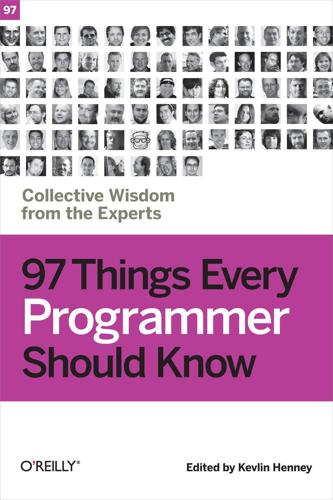
97 Things Every Programmer Should Know
by
Kevlin Henney
Published 5 Feb 2010
Two Heads Are Often Better Than One Adrian Wible PROGRAMMING REQUIRES DEEP THOUGHT, and deep thought requires solitude. So goes the programmer stereotype. This "lone wolf" approach to programming has been giving way to a more collaborative approach, which, I would argue, improves quality, productivity, and job satisfaction for programmers. This approach has developers working more closely with one another and also with nondevelopers—business and systems analysts, quality assurance professionals, and users. What does this mean for developers? Being the expert technologist is no longer sufficient. You must become effective at working with others.
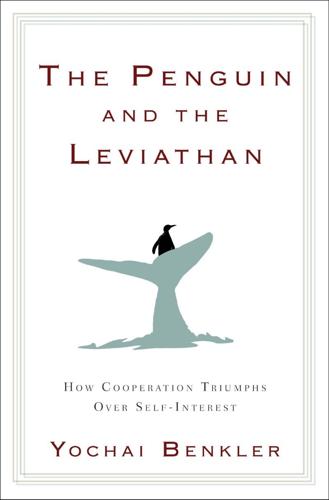
The Penguin and the Leviathan: How Cooperation Triumphs Over Self-Interest
by
Yochai Benkler
Published 8 Aug 2011
The workforce was largely unchanged: 99 percent of the assembly line workers in the new workforce, and three quarters of the skilled workers, were UAW members who had worked at the original Fremont plant. Yet within two years the new plant had far surpassed any other GM plant in productivity and had the highest quality ratings of any automobile plant in the United States. Confidential employee surveys show that job satisfaction levels rose from 60 percent when the plant reopened in 1985 to more than 90 percent by the 1990s. The effects were lasting. Despite Toyota’s recent woes, for more than twenty-five years NUMMI continued to be one of the top plants in the United States in terms of productivity and product quality.

The Prison Doctor
by
Dr Amanda Brown
Published 12 Jun 2019
I had over a year to help Trudy wean herself off methadone and, combined with the counselling, there was every chance she could leave Bronzefield with no drugs in her system, and no desire to go back on them when she returned to society. It was my goal to make her dream become a reality. It was at that moment, that very second, that I realised I had reached my happy place. I had never had so much job satisfaction in all of my life. My journey to get there had been colourful, but I couldn’t have been more fulfilled. I felt and hoped that I was making a difference to these women’s lives, which gave me joy and a sense of purpose. And as long as I was needed, and I was making a difference, I would carry on working as doctor, as a counsellor and also, hopefully, as a friend to these women.

Having and Being Had
by
Eula Biss
Published 15 Jan 2020
Among the people Terkel interviews, the farmer and the flight attendant and the prostitute and the stockbroker, there are some who take deep pleasure in their work—the stonemason, the piano tuner, the bookbinder, the carpenter who is also a poet. The janitor doesn’t mind being a janitor. He doesn’t want to be called a building engineer. “You can call me a janitor,” he says. “There’s nothing wrong with a janitor.” But he does mind the pain in his back when he shovels snow and when he uses a mop. A study of job satisfaction among hospital janitors found that the janitors who reported the greatest satisfaction were the ones who thought of their work as caring for the sick, though their job description was a list of duties like “collect and dispose of soiled linens” and “stock restroom supplies.” When these janitors described their work, they talked of visiting the patients who had the least visitors, joking with patients to cheer them up, writing letters to patients who had gone home and might be lonely, and carefully cleaning the rooms of the patients who were most vulnerable to infection.
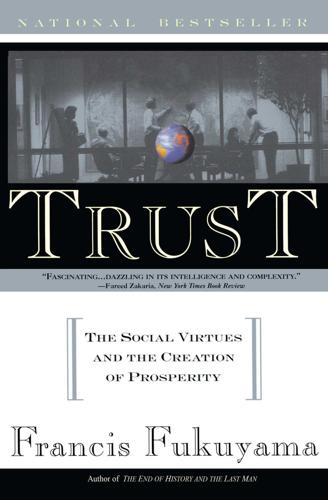
Trust: The Social Virtue and the Creation of Prosperity
by
Francis Fukuyama
Published 1 Jan 1995
In this view, the Italian family firm combines unalienating small size, craft skills, and respect for family traditions with efficiency, technological sophistication, and other benefits usually associated with large scale. Robert Putnam portrays economic activity in these regions as the epitome of civic-minded cooperativeness, where business networks dovetail with local government to provide job satisfaction and prosperity for everyone.33 But is this network organization of small-scale firms the wave of the future, a New Age form of industrial organization that combines economies of scale with the intimacy of small workplaces and the reunion of ownership and management?34 It is certainly not the case that Italy has had to pay an economic price for the relatively small scale of its businesses.
…
One study that surveyed the views of workers in four countries found that skilled workers were concerned with having jobs that were intrinsically interesting or fulfilling, while unskilled workers were more interested in income. Many new entrants and low-skill workers, moreover, believed that having a factory job in the first place conferred significant social status. William H. Form, “Auto Workers and Their Machines: A Study of Work, Factory, and Job Satisfaction in Four Countries,” Social Forces 52 (1973): 1-15. 27On the Hawthorne experiments, see Hirszowicz (1982), pp. 52-54. 28See Elton Mayo, The Human Problems of an Industrial Civilization (New York: Macmillan, 1933), and The Social Problems of an Industrialized Civilization (London: Routledge and Kegan Paul, 1962). 29Ian Jamieson, “Some Observations on Socio-Cultural Explanations of Economic Behavior,” Sociological Review 26 (1978): 777-805.

Order Without Design: How Markets Shape Cities
by
Alain Bertaud
Published 9 Nov 2018
A firm that would be satisfied to restrict the selection of its employees to the vicinity of its factory or office would not need to locate in a large metropolis where rents and salaries are higher. This firm could locate in a small town where the unspecialized workers it seeks could be recruited for a lower salary. In the same way, a worker living in a large city and looking for a new job would try to maximize job satisfaction measured in part through salary, level of interest in the work and its compatibility with skillset, attractiveness of the work environment, and so forth. The time spent commuting might certainly be a consideration in seeking a job, but if the commuting time were less than 1 hour, it would likely not be a determining factor.
…
Cities thrive on changes, possibilities, and innovations. Therefore, an urban transport system that would solely minimize travel time between home and current jobs for all workers would result in poor mobility, as in the future, workers might not be able to reach many alternative jobs that would improve their job satisfaction or salary. Mobility and Recent Immigrants During a recent visit to the Tenement Museum in New York, a docent told us that in the 1850s, immigrants who were “fresh off the boat” would typically stay only a few months in a tenement; they would then keep moving as their employment and financial circumstances changed.

The Technology Trap: Capital, Labor, and Power in the Age of Automation
by
Carl Benedikt Frey
Published 17 Jun 2019
In a study of an automated steel mill, Charles Walker found that job satisfaction varied significantly throughout the process of adjustment: “The same job characteristics, all stemming from the automatic or semiautomatic operations of the mill which had at first been feared and hated, were later the source of satisfaction.”42 Once the new became the familiar, attitudes shifted. Thus, in a review of the literature, Faunce and coauthors aptly summarize the matter as follows: Field research suggests that the impact of office automation upon job satisfaction varies depending on … whether the employees are in electronic data-processing departments which gain work tasks or in other affected departments that lose tasks, whether the computer is of large or medium size, and on several other circumstances.
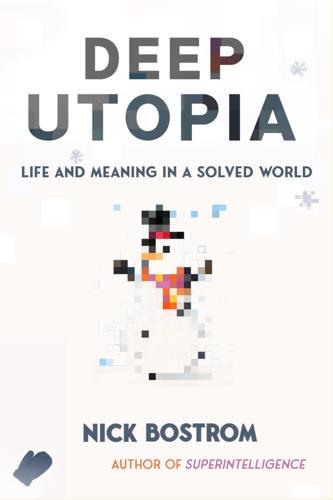
Deep Utopia: Life and Meaning in a Solved World
by
Nick Bostrom
Published 26 Mar 2024
Fox (2005). 88 Catalano et al. (2011) 89 Hetschko et al. (2014) 90 See, e.g., Leino-Arjas et al. (1999). 91 Holder (2012): “Whether based on self-reports or estimates from their parents, 90% or more of the children are typically rated as happy [in Canada and India]”. 92 Artists, despite having low average income and high unemployment, report significantly higher job satisfaction compared to other professions (Bille et al., 2013). 93 Janotík (2016) 94 E.g. Blanchflower (2020). For a critique of the claim that happiness follows a U-shaped trajectory across the lifecycle, see Kratz & Brüderl (2021). 95 Illustration by Elena Samokysh-Sudkovskaya. From Eugene Onegin (p. 7) by A.
…
“Genetics of Wellbeing and Its Components Satisfaction with Life, Happiness, and Quality of Life: A Review and Meta-analysis of Heritability Studies”. Behavior Genetics, 45(2), 137–156. Bergeaud, A., Cette, G., & Lecat, R. 2016. “Productivity Trends in Advanced Countries between 1890 and 2012”. Review of Income and Wealth, 62(3), 420–444. Bille, T., et al. 2013. “Happiness in the arts—International evidence on artists’ job satisfaction.” Economics Letters, 121(1), 15–18. Blanchflower, D. G. 2021. “Is Happiness U-shaped Everywhere? Age and Subjective Well-Being in 145 Countries”. Journal of Population Economics, 34(2), 575–624. Bostrom, N. 1997. “Predictions from Philosophy?”. Unpublished manuscript. https://nickbostrom.com/old/predict Bostrom, N. 2002.
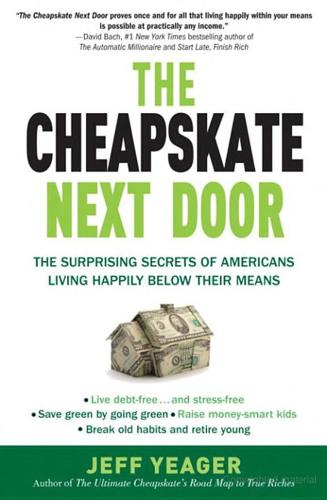
The Cheapskate Next Door: The Surprising Secrets of Americans Living Happily Below Their Means
by
Jeff Yeager
Published 8 Jun 2010
,” more than two-thirds of the cheapskates polled responded with seven or higher. At the same time, nearly 40 percent of all respondents said that they are dissatisfied with the amount of money they currently earn, although they frequently commented that their dissatisfaction with a lower salary was more than compensated for by increased job satisfaction. These cheapskates often have careers in the nonprofit sector or are “selfishly employed.” I defined “selfish employment” in my first book as “having the financial security to pursue your interests and passions as employment without undue risk or concern over income.” As a selfishly employed individual myself, when people ask me what I do for a living, I usually reply, “I just do my own thing, and sometimes somebody pays me money because of it.”
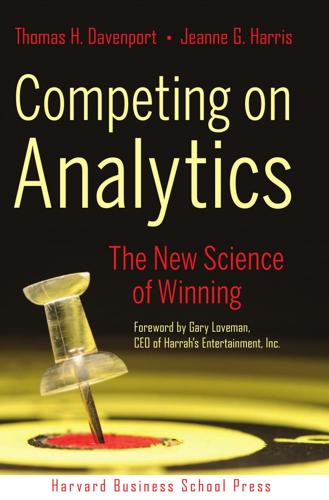
Competing on Analytics: The New Science of Winning
by
Thomas H. Davenport
and
Jeanne G. Harris
Published 6 Mar 2007
As a company becomes more serious about enterprise-wide analytics, it often draws together the most advanced analysts into a single group to focus on strategic issues. This provides the organization with a critical mass of analysts to focus on the most strategic issues, and provides the analysts with greater job satisfaction and opportunity to develop their skills. Once an organization has an outstanding analytical capability combined with strategically differentiating analytics embedded into its most critical business processes and has achieved major improvements to its business performance and competitiveness, it has reached the final stage.
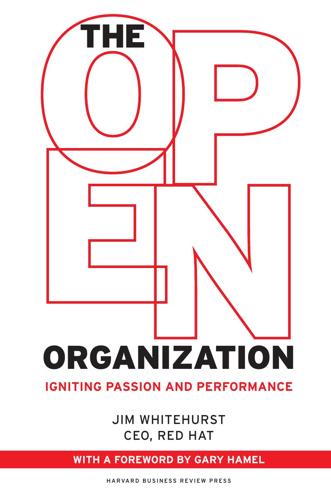
The Open Organization: Igniting Passion and Performance
by
Jim Whitehurst
Published 1 Jun 2015
The leadership team and I must ensure that happens. Many executives with whom I speak also confuse engagement with happiness or employee morale. Engagement isn’t about being happy. Happy people may or may not be engaged in the business. According to Sue Moynihan, a director on the People team at Red Hat, companies tend to confuse “job satisfaction” levels among their associates with engagement. So rather than ask associates about how they feel about their compensation or benefits package—which are more closely tied to satisfaction—Moynihan’s team measures associate engagement levels by tracking how many people react affirmatively to statements such as: The people I work with are passionate about Red Hat’s mission.

Cartesian Linguistics
by
Noam Chomsky
Published 1 Jan 1966
Assuming, furthermore, the empirical principle that organisms thrive (get satisfaction) when they fulfill their natures and the moral/ethical principle that they should be given opportunities to do so, it is reasonable to assume that a form of social organization giving them these opportunities is better than one that does not. There is plenty of evidence that people thrive when they exercise their freedom and autonomy – for instance, job satisfaction is a good predictor of longer life, and correlates strongly with exercise of autonomy and self-expression. The moral principle seems to be as obvious as any can be. It might justifiably be overridden in certain cases – for example, where there is genuine reason to think that survival is at stake – but no one except for moral monsters will simply deny the principle.

Critical: Science and Stories From the Brink of Human Life
by
Matt Morgan
Published 29 May 2019
If you take part in a clinical trial, you are more likely to survive even if you only receive the placebo. If you are treated in a hospital that does research, you too are more likely to live than to die. The environments that nurture good research are also more likely to have good communication between staff, fewer vacancies and higher job satisfaction. Bringing the heads of different hospital experts together in a collaborative way can stop them from banging together in conflict. Washing hands and teaching others form core parts of working in a hospital. So too should research. It is the scaffolding onto which we can safely climb to search for better ways to help patients.

Confessions of a Crypto Millionaire: My Unlikely Escape From Corporate America
by
Dan Conway
Published 8 Sep 2019
But the stats show that for many of us, it is. According to a 2016 Society for Human Resource Management study, fewer than one-third of employees are very satisfied with the teamwork at their companies. We’ve become so used to the misery of modern work that we accept it like a sliver deep in our heel. Despite low levels of job satisfaction, most economists would say the firm remains the best way to organize humans for work. Which reminds me of what Winston Churchill said about modern government: “Democracy is the worst form of government, except for all of the others.” The same could have been said of the modern firm. Until it wasn’t.

McMindfulness: How Mindfulness Became the New Capitalist Spirituality
by
Ronald Purser
Published 8 Jul 2019
When pitching programs, consultants actually downplay the benefits to individual workers, focusing instead on “work-related outcomes,” such as better productivity, task performance, and decision-making. “Results-focused mindfulness training for your company,” is the tag line for Whil, a market-savvy online provider of “on demand” corporate mindfulness programs.4 Their website vows to “increase job satisfaction and productivity while decreasing stress.” Would it be possible for mindfulness to thrive in companies if the practice dented profits? There seems little danger of that if it is pitched as performance enhancement. Even if accompanied by some woolly implications about change scaling up to make companies mindful, the exclusion of structural critiques of corporate policies undermines this.

Adaptive Markets: Financial Evolution at the Speed of Thought
by
Andrew W. Lo
Published 3 Apr 2017
Without reasonably accurate numbers, behavioral risk management is more aspirational than operational. Financial risk management has an enormous analytic base, up to and including million-dollar software platforms and real-time data vendors. There’s nothing comparable to support behavioral risk managers … yet. Psychological profiles, social network maps, and job satisfaction surveys are currently assigned to human resources departments, not risk committees or corporate boards. Nevertheless, the starting point for any scientific endeavor is always measurement. While quantitative behavioral risk models are under construction, the Adaptive Markets Hypothesis suggests one thing we can do in the meantime: develop an integrated view of the corporate ecosystem.
…
These changes seem to be having an impact. The SEC’s score on the Office of Personnel Management’s Global Satisfaction Index—based on the same survey cited in the GAO’s quoted report—improved from 59 in 2012 to 65 in 2014 (Office of Personnel Management, 2014). For comparison, in 2014 the agency with the highest job satisfaction rating was the National Aeronautics and Space Administration (an index value of 74), the agency with the lowest rating was the Department of Homeland Security (an index value of 48), and the governmentwide index value was 59. 40. Cohn, Fehr, and Maréchal (2014). 41. Ibid., 86. 42. Gibson, Tanner, and Wagner (2016). 43.

The Numerati
by
Stephen Baker
Published 11 Aug 2008
"That's what we call it," he says. "I think the term comes from sports." The question, of course, is how long IBM wants to have that high-priced talent sitting on the bench. If there isn't any work to justify his immense talents, shouldn't they put him on something else, just to keep him busy? Not necessarily, says Takriti. Job satisfaction is one of his system's constraints. If workers get angry or bored to tears, their productivity is bound to plummet. The automatic manager keeps this in mind (in a manner of speaking). As you might expect, it deals very gently with superstars. Since they make lots of money for the company during short bursts of activity, they get plenty of time on the bench.
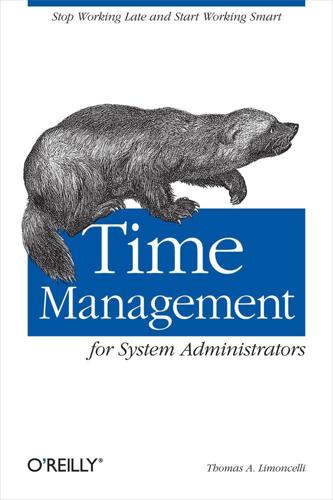
Time Management for System Administrators
by
Thomas A.Limoncelli
Published 1 Jan 2005
Management is a relationship, and you share influence in how the relationship evolves. It is difficult to get anything done, or to have a satisfying career, if you do not have a good relationship with your manager. Alternatively, with a good relationship you can get more done, have increased job satisfaction, and accelerate your career. If you do a web search for "manage your boss," you will find many excellent articles. This is a sign that many people feel the need to have a better relationship with their boss. Schedule some time to read a few of them. I think the three most important keys to managing your boss are to use him to help advance your career, to know when to use upward delegation , and to understand and contribute to his goals.

After the New Economy: The Binge . . . And the Hangover That Won't Go Away
by
Doug Henwood
Published 9 May 2005
BoysWill Be Boys: Gender, Overconfidence,and Common Stock Investment," Quarterly Journal of Economics, October, pp. 261-292 (also at <faculty.gsm.ucdavis.edu/ ~bmbarber/BoysWillBeBoys.pdf>). Barko, Naomi (2000). "The Other Gender Gap," The American Prospect, June 19-July 3, pp. 61-63 <www.prospect.oi^/archives/Vl l-15/barko-n.html>. Barrington, Linda (2000). Does a Rising Tide Lift All Boats? (New York: The Conference Board). Bateman, Thomas S., and Dennis W. Organ (1983). "Job Satisfaction and the Good Soldier: The Rebtionship Between Affect and Employee 'Citizenship,"Mai</emy of Management Journal 26, pp. 587-95. Baudrillard,Jean (1993). The Tranparency of Evil, translated by James Benedict (New York and London: Verso). Bayard, Kimberly, Judith Hellentein, David Neumark, and Kenneth Troske (1999).
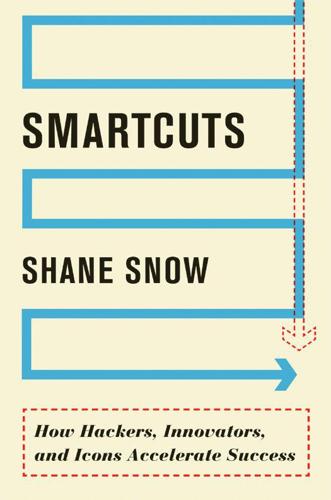
Smartcuts: How Hackers, Innovators, and Icons Accelerate Success
by
Shane Snow
Published 8 Sep 2014
In fact, one-on-one mentoring in which an organization formally matched people proved to be nearly as worthless as a person having not been mentored at all. However, when students and mentors came together on their own and formed personal relationships, the mentored did significantly better, as measured by future income, tenure, number of promotions, job satisfaction, work stress, and self-esteem. This is why Sheryl Sandberg, the COO of Facebook and the author of Lean In, dedicates a chapter in her book to this concept, arguing that asking someone to formally mentor you is like asking a celebrity for an autograph; it’s stiff, inorganic, and often doesn’t work out.
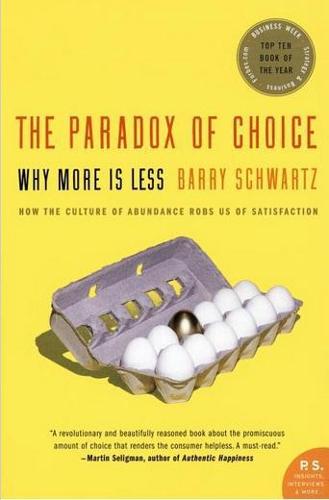
The Paradox of Choice: Why More Is Less
by
Barry Schwartz
Published 1 Jan 2004
McCullough, “Counting Blessings Versus Burdens: An Experimental Investigation of Gratitude and Subjective Well-Being,” Journal of Personality and Social Psychology, 2003, 84, 377–389. Chapter 9 Comparisons are R.E. Lane discusses the relative nature of evaluation in The Loss of Happiness in Market Democracies (New Haven, CT: Yale University Press, 2000). Michalos found that A. Michalos, “Job Satisfaction, Marital Satisfaction, and the Quality of Life,” in F.M. Andrews (ed.), Research on the Quality of Life (Ann Arbor, MI: Institute for Social Research, 1986), p. 75. What the theory claims The classic paper on framing is D. Kahneman and A. Tversky, “Choices, Values, and Frames,” American Psychologist, 1984, 39, 341–350.

The Year Without Pants: Wordpress.com and the Future of Work
by
Scott Berkun
Published 9 Sep 2013
See Team Social meet-up (Athens, Greece) Automattic: acquisition offer for; atmosphere of constant change at; attitude toward safeguards at; author hired at; board of directors meeting; continued growth and success of; creativity not infringed upon by support at; as data-influenced company; description of headquarters in San Francisco; distinction between WordPress, WordPress.com, and; employees split into teams; founding and early history of; hiring procedure; long-term view at; marketing by; minimal friction at; problem management at; promoted free expression; returning meaning to work; view of big projects at; work flow at; work location irrelevant to Automattic culture Automatticians: background and skills of; collaboration tools used by; commonly moving between projects; compensation of; defined; description of, at work; job satisfaction of; new, adjusting to working remotely; quality assurance responsibility of; self-sufficiency and passion of; turnover rate for; work location of B b2 Bachhuber, Daniel Bachiyski, Nikolay Baeta, Hugo: about; acclimated to Automattic way of working; joined Team Social; at Lisbon team meet-up; at Portland meet-up; reworked NASCAR feature Bar-Cohen, Raanan Basecamp Belfiore, Joe Berkun, Scott: about; arrival in Athens for team meet-up; assets and liabilities of, at Automattic; assigned to Team Post Postmodernism at Budapest company meeting; “Big Talk” to team by; e-mailed observations about company to Mullenweg; exit from Automattic; gave presentations on leading Team Social; hired at Automattic; lack of safety measures in India experienced by; on managing programmers without having programming skills; at Microsoft; monitoring of customer support work by; and P2s; in San Francisco headquarters for face-to-face interactions; at Seaside company meeting; training work in customer support; use of WordPress by; at work; work on Highlander; work on Hovercards project; on working remotely vs. face-to-face interactions Bernal, Jorge Bigelow, Sheri Bikeshed problem Black, Phillip Blacksmith Capital Blogger (software) Blogs: features to decrease abandonment of Bluehost Boren, Ryan Broken window theory Bubel, Anthony Budapest.

Confessions of a Surgeon: The Good, the Bad, and the Complicated...Life Behind the O.R. Doors
by
Paul A. Ruggieri
Published 3 Jan 2012
I continued to methodically cut through scar tissue, untwisting intestine while thinking about breakfast. There is something erotic about eating two eggs over easy, sausage, home fries, and toast after staying up all night. The American College of Surgeons Committee on Physician Competency and Health surveyed close to eight thousand surgeons about their job satisfaction and mental state. The results revealed that 40 percent of those who answered the survey met the criteria for “burnout.” The publishers of the study attributed this burnout to increased working hours, being on call, and the job’s effect on home life. In addition, some studies have suggested burnout to be predictive of future mistakes made by surgeons.

Marriage and Lasting Relationships With Asperger's Syndrome: Successful Strategies for Couples or Counselors
by
Eva A. Mendes
Published 1 Sep 2015
id=538721, accessed April 15, 2015. Jekel, D. (2012) Personal communication, December 16. Khalsa, S. (2013) “Yoga for psychiatry and mental health: An ancient practice with modern relevance.” Indian Journal of Psychiatry, 55, 3, 334–336. Knerr, M. (n.d.) “An empirical analysis of the relationship between marital status and job satisfaction.” Undergraduate Research Journal for the Human Sciences. Available at www.kon.org/urc/v4/knerr.html, accessed September 10, 2014. Marc, D. and Olson, K. (2009) “Neuroimmunology of Autism Spectrum Disorder.” NeuroScience, Inc. Available at https://neurorelief.com/index.php?p=cms&cid=409&pid=149, accessed January 27, 2014.
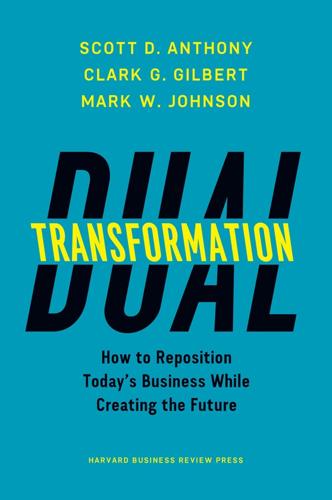
Dual Transformation: How to Reposition Today's Business While Creating the Future
by
Scott D. Anthony
and
Mark W. Johnson
Published 27 Mar 2017
Typically, pharmacists focused on behind-the-scenes tasks of processing paperwork, dealing with insurance, and dispensing drugs. With the help of Innosight and IDEO, a leading design company, Walgreens removed barriers between pharmacists and patients by creating semiprivate spaces to facilitate direct discussion. Patients received better treatment, leading to a higher number of repeat visits, and the pharmacists’ job satisfaction went up. Transformation B involved transforming Walgreens stores into the front line of defense for the beleaguered US health care industry. What does Walgreens have that few other companies have? More than eight thousand stores, where people come to fill prescriptions and buy other sundry items.

What Doctors Feel: How Emotions Affect the Practice of Medicine
by
Danielle Ofri
Published 3 Jun 2013
Some have wondered whether these quality measures actually reduce motivation to improve.19 Selecting out narrow data points to measure may work well for assembly-line type work, but it can be counterproductive for complex tasks that involve deliberation, decision-making, judgment, communication, and creativity.20 Focusing on the minutiae—even if those are individually important measurements—can undermine a person’s desire and ability to improve. (Offering more control over one’s work environment and improving overall job satisfaction seems to do a better job.) My own experience in being evaluated for “quality” left me with that same horrible feeling about being judged. Our hospital had undertaken a laudable and Herculean effort to improve the care of patients with diabetes. There was no disagreement that diabetes was one of the most complicated diseases we faced and that these patients would benefit from the best medical care possible.
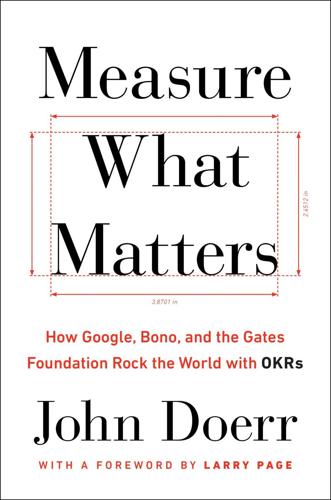
Measure What Matters: How Google, Bono, and the Gates Foundation Rock the World With OKRs
by
John Doerr
Published 23 Apr 2018
According to Deloitte, the management and leadership consulting firm, issues of “ retention and engagement have risen to No. 2 in the minds of business leaders, second only to the challenge of building global leadership.” But exactly how do you build engagement? A two-year Deloitte study found that no single factor has more impact than “ clearly defined goals that are written down and shared freely. . . . Goals create alignment, clarity, and job satisfaction.” Goal setting isn’t bulletproof: “ When people have conflicting priorities or unclear, meaningless, or arbitrarily shifting goals, they become frustrated, cynical, and demotivated.” An effective goal management system—an OKR system—links goals to a team’s broader mission. It respects targets and deadlines while adapting to circumstances.
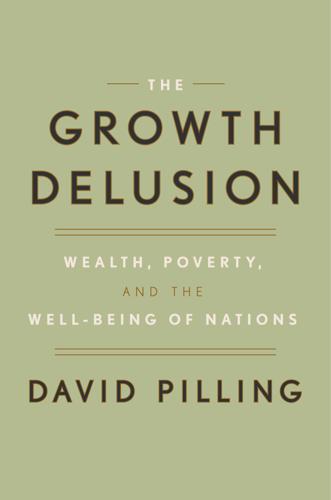
The Growth Delusion: Wealth, Poverty, and the Well-Being of Nations
by
David Pilling
Published 30 Jan 2018
Joseph Stiglitz, The Price of Inequality, W. W. Norton & Company, 2012, p. xii. 7. Sarah F. Brosnan and Frans B. M. de Waal, “Monkeys Reject Unequal Pay,” Nature, Vol. 425, September 2003. 8. David Card, Alexandre Mas, Enrico Moretti, and Emmanuel Saez, “Inequality at Work: The Effect of Peer Salaries on Job Satisfaction,” November 2011: www.princeton.edu. 9. “The Cost of Living in Jane Austen’s England”: www.janeausten.co.uk. 10. Joseph Stiglitz, Amartya Sen, and Jean-Paul Fitoussi, Mismeasuring Our Lives: Why GDP Doesn’t Add Up, The New Press, 2010, p. ix. 11. Walter Berglund, the lawyer and environmentalist in Jonathan Franzen’s novel Freedom, expresses similar ideas. 12.

In Stitches
by
Nick Edwards
Published 1 Jan 2007
People then need to realise that what is important is how well the patient is being treated and not which particular specialty the doctor seeing them works for. I hope that these changes get brought in and that I can just get on with my job–looking after sick patients who have not had to endure long waits to see me. I don’t want to have to move to Australia to get job satisfaction. I want things to change over here. P.S. Mum, if you are reading this, don’t worry, I wouldn’t really move to Australia–I’ll stay here and just rant after work instead. Sad request for a MAP The computer showed that the next patient was ‘requesting MAP’. The medical student shadowing me believed me when I told him that as we were becoming a ‘foundation hospital’, one of our hospital’s money-making mechanisms was giving out directions to lost people.
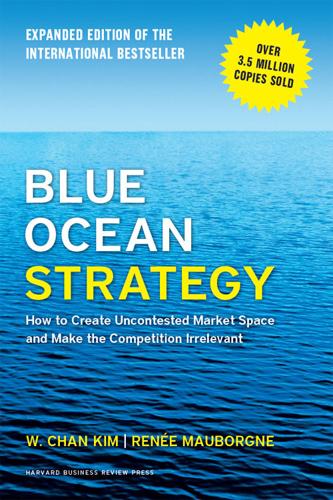
Blue Ocean Strategy, Expanded Edition: How to Create Uncontested Market Space and Make the Competition Irrelevant
by
W. Chan Kim
and
Renée A. Mauborgne
Published 20 Jan 2014
He broke out of the red ocean with a blue ocean policing strategy that revolutionized US policing as it was then known. The organization won as “profits” jumped: felony crime fell 39 percent, murders 50 percent, and theft 35 percent. “Customers” won: Gallup polls reported that public confidence in the NYPD leaped from 37 percent to 73 percent. And employees won: internal surveys showed job satisfaction in the NYPD reaching an all-time high. As one patrolman put it, “We would have marched to hell and back for that guy.” Perhaps most impressively, the changes have outlasted its leader, with crime rates continuing to fall after the leader’s departure, implying a fundamental shift in the organizational culture and strategy of the NYPD.

User Stories Applied: For Agile Software Development
by
Mike Cohn
Published 1 Mar 2004
While pair programming may sound tremendously inefficient, Alistair Cockburn and Laurie Williams (2001) have studied it and found that not to be the case. They found that for a 15% increase in total programming time, pair programming leads to: lower defect counts less code is written to solve the same problem problems being solved more quickly more people understand each piece of code an increase in developer job satisfaction Pair programming is important to XP because so many of the other XP practices require discipline. It requires a tremendous amount of discipline to refactor every time you notice poorly structured code or to always write tests before writing operational code. Without a pair it can be far too tempting to skip a refactoring or a test with the thought of “Just this once…” Sustainable Pace XP teams are encouraged to work at a sustainable pace.

Invisible Influence: The Hidden Forces that Shape Behavior
by
Jonah Berger
Published 13 Jun 2016
Weisbenner (2008), “Neighbors Matter: Causal Community Effects and Stock Market Participation,” Journal of Finance 63, 1509–31; Gerber, Alan, and Todd Rogers (2009), “Descriptive Social Norms and Motivation to Vote: Everybody’s Voting and So Should You,” Journal of Politics 71, 1–14; Frey, Bruno, and Stephan Meier (2004), “Social Comparisons and Pro-Social Behavior: Testing ‘Conditional Cooperation’ in a Field Experiment,” American Economic Review 94, 1717–22; and Card, D., A. Mas, E. Moretti, and E. Saez (2012), “Inequality at Work: The Effect of Peer Salaries on Job Satisfaction,” American Economic Review 10, 2981–3003. 2. Pronin, Emily, Jonah Berger, and Sarah Molouki (2007), “Alone in a Crowd of Sheep: Asymmetric Perceptions of Conformity and Their Roots in an Introspection Illusion,” Journal of Personality and Social Psychology 92, 585–95. 3. To control for order effects, we randomized the order of the questions.
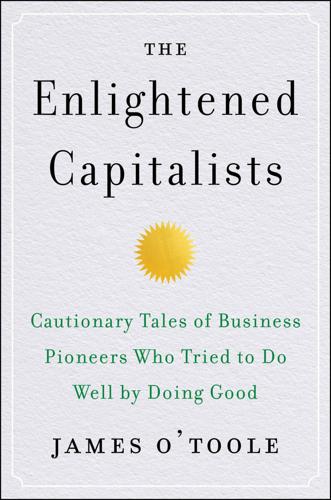
The Enlightened Capitalists
by
James O'Toole
Published 29 Dec 2018
Indeed, most research about work and life satisfaction conducted over the last half century highlights the needs people have to achieve mastery at work, to exercise initiative and creativity, and to learn and develop not only as workers but as human beings.3 Phelps hypothesizes that the observed declines in productivity and job satisfaction in America are due to “a critical loss of indigenous innovation in the established industries like traditional manufacturing and services that was not nearly offset by the innovation that flowered in a few new industries—digital, media, and financial. In the vast heartland of America, the loss of dynamism is almost palpable.”4 But not all good jobs have been, or are being, lost.
…
Union Carbide, 173 United Airlines, 290–91, 411–12 United Auto Workers, 108 United Garment Workers of America (UGWA), 181 United Kingdom (UK) bathing habits and Lever, 51, 53 Bolton, 52, 56–57, 64 Brexit, 446 “British disease,” 215 changes to economic order proposed, xv chief executive salaries in, 469 child labor in, 22, 23 chocolate makers, 84 contingent workforces and virtual workplaces in, 474–75, 477 cooperative movement, 29, 415, 417, 418 corporate capitalism and profit primacy in, 438 effect of industrialization in, 4 eighteenth century working conditions, 8 exporting cloth, 4–5 finance and banking, public concern about misbehavior in, 467 Financial Reporting Council, 462 gender pay inequity and, 469 global warming concerns and enlightened business practices, 432 history of textile mills in, 3–4 John Lewis Partnership among largest retail chains, 120 labor unrest (1960s), 129 Manchester, 5, 6, 8–10, 11, 208 Marks & Spencer as dominant retailer, 211 middle class growth in, 432 no demand for socially responsible companies, 427 old-age pensions law, 59 social entrepreneurship and, 456 socialized medicine, 212 Stewardship Code, 462 tabloids, 61 welfare-state and, 129 See also Lewis, John Spedan; Lever, William; Owen, Robert; Roddick, Anita United States contingent workforces and virtual workplaces in, 473–75, 477 corporate capitalism and profit primacy in, 438 declines in productivity and job satisfaction, 476 Dodd-Frank legislation, 462 finance and banking, public concern about misbehavior in, 467 first stock exchanges, 47 Gilded Age, 31 global warming concerns and enlightened business practices, 432 large manufacturing facilities encouraged by Hamilton, 3–4 largest retail business, 41 middle class growth in, 432 new cooperatives in, 419 no demand for socially responsible companies, 427 public disclosure of top executive compensation required, 469 rioting in 1877 against capitalist practices, 31 social entrepreneurship and, 456 tax legislation prohibiting industrial foundations, 434–35 See also specific companies Universal Pictures, 473, 474 University of California Berkeley, 194 Hass School of Business, 182 Levi Strauss scholarships, 178, 182 “unmanagement,” 298–99, 304 UPS, 409–10 Up the Organization (Townsend), 279–80, 283, 285, 286, 287 US Steel, xxx, 249, 265 utilitarianism, 21, 27 utopian communities Google Alphabet’s Quayside, 450–51 Hershey and, 79 Owen’s New Harmony, 27–28, 44 Owen’s “villages of co-operation,” 26 Penney’s Penney Farms, 44–45 See also living conditions of workers Vagelos, Roy, 334–41, 427, 428, 436, 477 accomplishments, 341 background and personal life, 335 cure for river blindness and, 335–38, 339 decision to sell vaccine patent to China, 338 legacy of, 340–41 Merck and ethical business practices, 335–39 Merck retirement, 338–39 opposition to giving away Mectizan, 337 philanthropy of, 341 Regeneron Pharmaceuticals and, 341 Vanderbuilt, Cornelius, xxxiii Vandevelde, Luc, 221 Vanguard investment fund, xiv, 461 Victoria, Queen, 20 Vogel, David, 308, 429 “Two and a Half Cheers for Conscious Capitalism,” 454, 455–56 Volkswagen, 173, 429 Waddock, Sandra, 373–74 wages ACIPCO and, 138, 139 Avis and, 281 Ben & Jerry’s and, 384 British textile mills, 5 Carnegie’s philosophy on paying the minimum, xxxiii executive-employee wage gap, 469–72 Ford’s $5 a day, xxviii, 20, 113 Herman Miller and, 228–29, 232, 234 “iron law” of, 21 J&J and, 149–50, 157 labor costs vs. total labor costs and, 290–91 Levi Strauss and, 190 Lincoln Electric, 94–95, 98, 99–101 link between compensation and perception of fairness, 471 living wages, 85, 138, 139, 150, 154, 157, 401 Nucor, average yearly, 276 Owen’s philosophy and, 20, 21 Patagonia and, 401 proven methods of equitable compensation, 472 Scanlon plan, 228–29, 234, 472 SWA and, 290–91 well-paid workers and productivity, 157, 290–91 W.
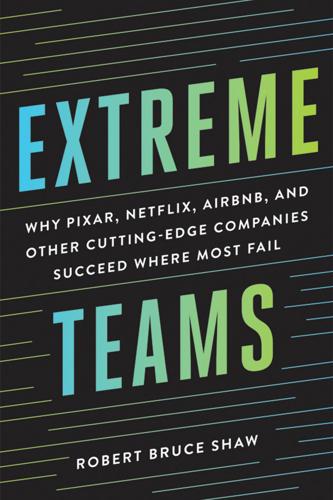
Extreme Teams: Why Pixar, Netflix, AirBnB, and Other Cutting-Edge Companies Succeed Where Most Fail
by
Robert Bruce Shaw
,
James Foster
and
Brilliance Audio
Published 14 Oct 2017
Also see Dick Richards, “At Zappos, Culture Pays,” Strategy and Business 60 (2010). 8As suggested in this chapter, fit is essential in sustaining a firm’s cultural attributes. That said, fit is also important in the satisfaction of those who work in a company or group. Research indicates an employee’s fit with a firm’s culture is a strong predictor of organizational commitment, job satisfaction, and retention. See Amy L. Kristof-Brown and Erin C. Johnson, “Consequences of Individuals’ Fit at Work: A Meta-Analysis of Person-Job, Person-Organization, Person-Group and Person-Supervisor Fit,” Personnel Psychology 58 (2005), 281–342. 9Patagonia’s founder notes, “Not everyone wants to change the world, but we want a company to feel like home for those who do.
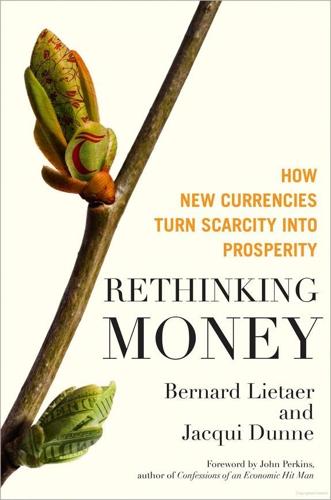
Rethinking Money: How New Currencies Turn Scarcity Into Prosperity
by
Bernard Lietaer
and
Jacqui Dunne
Published 4 Feb 2013
Graduates in the United Kingdom, for example, can anticipate 70 applications for one job opening and have been told to flip burgers rather than counting on attaining positions commensurate with their educations, leaving them with no means of addressing their liabilities.14 Nobel laureate Paul Krugman writes: “In particular, these days, workers with a college degree, but no further degrees, are less likely to get workplace health coverage than workers with only a high school degree were in 1979.”15 These days, job satisfaction means having any gainful employment. Money is the most powerful secular force. Financial issues affect all economic classes, from the rich to the poor. Empathy for the plight of those who suffer from scarcity comes easier. The damage created by poverty and want is pervasive, devastating, and easy to understand.

Going Dark: The Secret Social Lives of Extremists
by
Julia Ebner
Published 20 Feb 2020
When Kellogg’s first started putting little games as prizes into its breakfast-cereal boxes in 1910, the idea became an instant hit. By the 1950s, gamification as an employee motivator was born. The sociologist Donald F. Roy demonstrated how a daily routine game in which factory workers steal bananas leads to higher job satisfaction and productivity. A hundred years after Kellogg’s gamification of cereal purchases, few employers, marketing agencies and political organisations are not using gamification to attract and keep recruits, customers or voters. Almost everything is gamified today, and that includes terrorism.6 ISIS were among the first militant groups to gamify their propaganda: they photoshopped jihadi soldiers on to Call of Duty game ads and produced their own video games for recruitment.
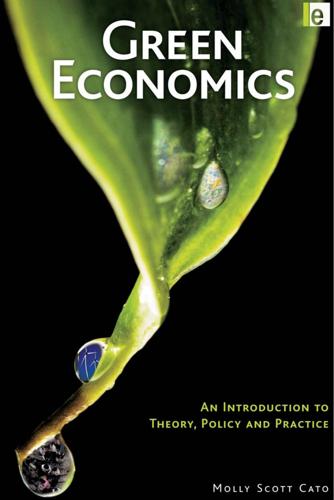
Green Economics: An Introduction to Theory, Policy and Practice
by
Molly Scott Cato
Published 16 Dec 2008
Much of the work carried out today is souldestroying and wasteful of resources, creating gadgets than can be sold to make a profit for the corporation which controls the brand they are sold under, but offering little in terms of real satisfaction to the purchaser, and equally little in terms of job satisfaction to the producer. The use of resources and energy by workers in this sort of employment is indefensible within a green economy. Some green economists seek to make a distinction between ‘work’, which is useful, sustainable and a valid investment of resources, and ‘employment’, which is undertaken within a destructive economic system driven solely by profit.9 Green parties have engaged forthrightly in the debate about work.
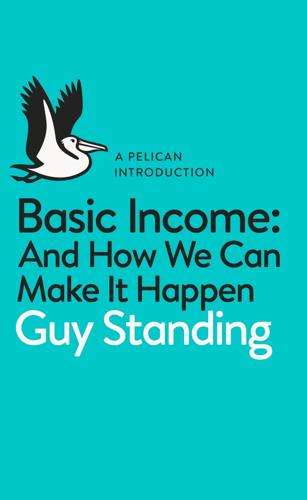
A Pelican Introduction: Basic Income
by
Guy Standing
Published 3 May 2017
And in a series of studies that asked people what they would do if they won the lottery, a clear majority said they would go on working but not necessarily in their present jobs.13 Whether they preferred to continue what they were doing depended, not surprisingly, on how much they liked their jobs independently of the money they were earning. People in the professions and the ‘salariat’ were far more likely to say they would continue in the same job or occupation than those lower down the social scale, who could be presumed to have more boring or unpleasant jobs and expressed lower job satisfaction. A poll ahead of the June 2016 referendum on basic income in Switzerland asked people if they would cease their economic activity if a basic income were in place.14 Only 2 per cent said they would, in the context of a suggested basic income of 2,500 Swiss francs per person – which most people would regard as ‘comfortable’.
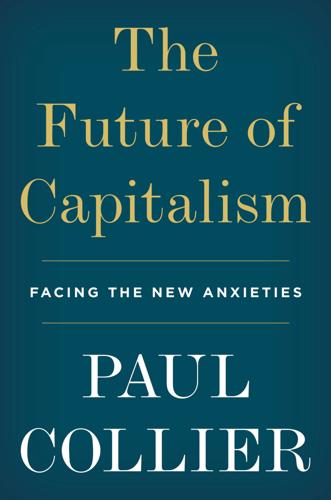
The Future of Capitalism: Facing the New Anxieties
by
Paul Collier
Published 4 Dec 2018
Even in terms of their consequences for the company, their choices ended up being disastrous. But it is an insulting delusion of many people who, like me, have cushy jobs in the public sector to imagine that workers in the private sector are driven by greed and fear. The evidence suggests that job satisfaction is actually considerably higher in the private sector; for example, people are far less likely to use illness as a reason for not going to work. So, there is nothing intrinsically dirty about capitalism. Profit is the constraint that forces discipline on a firm, rather than defining its purpose.

Busy
by
Tony Crabbe
Published 7 Jul 2015
In 2012, researchers at Michigan State University carried out a thorough review of all the studies into self-regulation.13 Using a clever statistical technique called meta-analysis, they analyzed studies involving over 25,000 people. Their interest lay in the relationship between regulatory focus and performance. What they found was that a promotion focus was strongly related to task and job performance. It was also positively related to other good things like openness, innovation, helpfulness, job satisfaction and organizational commitment. Prevention, on the other hand, was not related to job performance: in other words, trying to stop bad things from happening does not improve performance. In addition, prevention-focused people tended to be less open, less innovative, less helpful, less satisfied with their job and less committed to the organization.

Dark Matters: On the Surveillance of Blackness
by
Simone Browne
Published 1 Oct 2015
She comes to stand for something specific about working in the airport service sector: she might not be able to access the very thing that she is tasked with protecting—in the words of the TSA’s mission, vision, and core values here—“freedom of movement.”67 In a 2004 survey of TSA screeners regarding job satisfaction, 73 percent disagreed that “disciplinary actions are applied fairly to employees” and 59 percent reported that they were considering leaving the TSA.68 Of the over seventeen thousand screeners who responded to the survey, 59 percent disagreed that TSA employees are “protected from health and safety hazards on the job.”
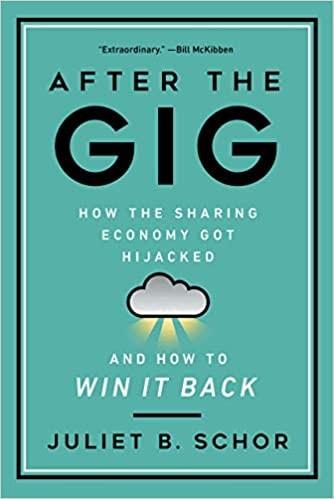
After the Gig: How the Sharing Economy Got Hijacked and How to Win It Back
by
Juliet Schor
,
William Attwood-Charles
and
Mehmet Cansoy
Published 15 Mar 2020
In the pages that follow I’ll delve into our findings, which cover earners on seven platforms. The fact that we had so many platforms is unusual among research projects and was a big part of how we discovered what we did. I’ve already noted that workers’ experiences are not uniform, with variation in pay rates, job satisfaction, and how they do the work. As we saw these differences playing out at individual companies, we realized that they are explained by how dependent the worker is on income from the platform to pay basic living expenses. The two dominant approaches to platform work—algorithmic management and the precariousness of independent contracting—have largely failed to account for this diversity of outcomes and its significance.
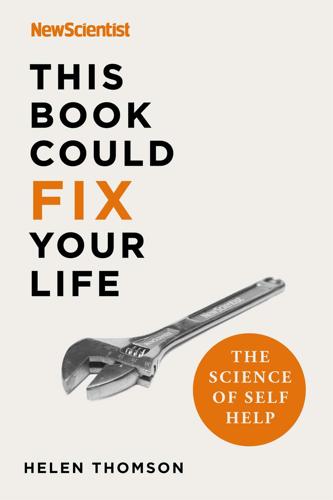
This Book Could Fix Your Life: The Science of Self Help
by
New Scientist
and
Helen Thomson
Published 7 Jan 2021
Yet again, mindfulness is another promising approach – we’ve heard rather a lot about this in various parts of this book already. In a separate study, Hülsheger randomly picked members of a group of sixty-four employees to receive mindfulness training, and monitored them all over ten days. Those who got the training reported more job satisfaction and less emotional exhaustion. The idea is that when you just see emotions as they are, as thoughts and sensations, you gain a sense of perspective and the ‘hot’ aspect of the emotion dissolves. Just like mastering any language, it takes time and practice to get to grips with our emotions, but making the effort is worth it, because the proponents of emotional intelligence were right about one thing – being emotionally fluent really does bring great benefits.
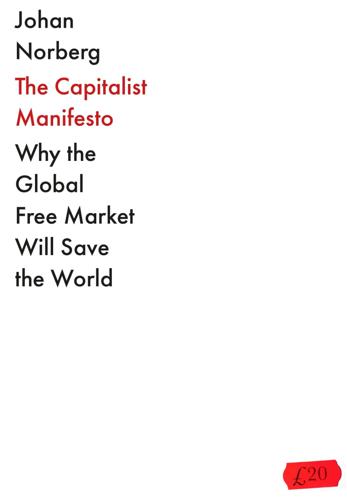
The Capitalist Manifesto
by
Johan Norberg
Published 14 Jun 2023
D., 87 Vasa (ship), 195 Veenhoven, Ruut, 279–80, 283–5 Venezuela, 43–5, 47 Verizon, 170 Vietnam, 11 Virgin Galactic, 202 Volcker, Paul, 10 Volkswagen, 153 wages see income Walmart, 147, 178 Walton, Sam, 127 wealth, 119–35, 273 capital income, 130–31 super-rich, 119, 125–35 see also inequality Weber, Max, 22, 273 Weiying Zhang, 213, 227 ‘welfare entrepreneurs’, 197 welfare state, 66, 111–14, 293 Wernberg, Joakim, 176–7 Wilson, Harold, 10 work, 83–118, 288–9 gig economy, 101–3 globalization and, 103–4, 109–10 income/wages, 22, 55, 88–96, 95 job losses, 104–7 job satisfaction, 98–100 labour market insecurity, 101 manufacturing industries, 83–7 safety, 98 stress and, 100 unemployment, 108–15, 109 working hours, 97, 97 World Bank, 17–18, 30–31, 39, 233 ‘World Database of Happiness’, 279 World Health Organization, 237 World Trade Organization (WTO), 2, 4–5, 29, 205, 209, 211 World Values Survey, 278, 283 World Wide Fund for Nature, 238, 249 Xerox, 185 Xi Jinping, 199, 205, 216–17, 222, 227–9 Xinjiang, China, 204–5 Yahoo!

The True and Only Heaven: Progress and Its Critics
by
Christopher Lasch
Published 16 Sep 1991
. * ____________________ * The growing acceptance of wage labor is only one indication of the narrowing of political debate in the twentieth century. Another indication is the narrowing of the kind of questions asked about work. In the nineteenth century, people asked whether the work was good for the worker. Today we ask whether workers are satisfied with their jobs. A high level of "job satisfaction" then serves to refute those who deplore the division of labor, the decline of craftsmanship, and the difficulty of finding work that -208- The New Labor History and the Rediscovery of the Artisan These assumptions naturally colored not only the practice of the twentieth-century labor movement but efforts to understand its earlier history.
…
The growing conservatism of the AFL-CIO discredited the assumption underlying the work of the Commons school, that trade unionism was somehow more advanced than the broad-gauged workers' ____________________ might leave workers with a sense of accomplishment. The liberal principle that everyone is the best judge of his own interests makes it impossible to ask what people need, as opposed to what they say they want. Even so, investigations of "job satisfaction" and worker "morale" are hardly encouraging. The dream of setting up in business for yourself, even if it means long hours and uncertain returns, remains almost universally appealing. -209- movements of the nineteenth century. But recent events also cast doubt on the Marxist alternative to orthodox labor history.
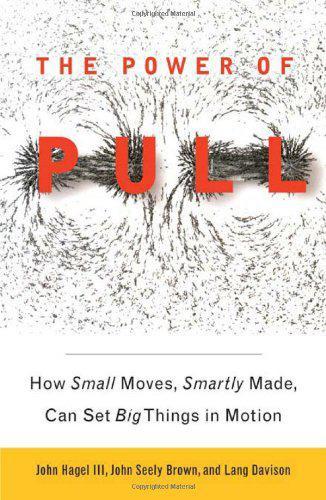
The Power of Pull: How Small Moves, Smartly Made, Can Set Big Things in Motion
by
John Hagel Iii
and
John Seely Brown
Published 12 Apr 2010
The power of pull : how small moves, smartly made, can set big things in motion/ John Hagel III, John Seely Brown, and Lang Davison. p. cm. Includes bibliographical references and index. eISBN : 978-0-465-02113-0 1. Organizational change—Social aspects. 2. Success in business. 3. Motivation (Psychology) 4. Job satisfaction. 5. Social change. I. Brown, John Seely. II. Davison, Lang. III. Title. HD58.7.H334 2010 303.4—dc22 2009047323 Table of Contents Title Page Dedication Introduction Chapter 1 - The Diminishing Power of Push WHAT IS PUSH? THE ORIGINS OF PUSH A CAUTIONARY TALE THREE WAVES OF THE BIG SHIFT Chapter 2 - Access in an Unpredictable World SCALING WHO KNOWS WHOM FROM PROGRAMS TO PLATFORMS THE LI & FUNG STORY THE PORTALPLAYER STORY BRINGING IT HOME Chapter 3 - Attracting What We Need THE SUPER-NODE THE NATURE AND IMPORTANCE OF SERENDIPITY SHAPING SERENDIPITY: ENHANCING THE PRODUCTIVITY OF ATTENTION BRINGING IT HOME Chapter 4 - Achieving Our Potential—The Highest Level of Pull A NEW IMPERATIVE BUILDING UPON PULL PLATFORMS THE NEW CREATION SPACES SECRETS OF SUCCESS IN CREATION SPACES THE POTENTIAL FOR COLLABORATION CURVES BRINGING IT HOME Chapter 5 - The Individual’s Path to Pull EMERGING ELEMENTS OF TRANSFORMATION DRIVING INDIVIDUAL TRANSFORMATION BRINGING IT HOME Chapter 6 - Pulling from the Top of Institutions PRESSURE IS MOUNTING DRIVING SUCCESSFUL INSTITUTIONAL CHANGE BRINGING IT HOME Chapter 7 - Using Pull to Change the World SHAPING THROUGH PULL ELEMENTS OF THE SHAPING JOURNEY WHO CAN SHAPE?

Peers Inc: How People and Platforms Are Inventing the Collaborative Economy and Reinventing Capitalism
by
Robin Chase
Published 14 May 2015
In the preamble of its first annual “Values & Impact” progress report, Etsy describes its values, which are similar to Paul Polman’s: “To intercept the ecological and human crises that threaten us, we must redefine the ways in which capitalism operates. We believe that businesses are uniquely poised to create a sustainable and meaningful world.”8 In its first year of focusing on these issues, Etsy made incredible strides. For its employees, Etsy increased financial transparency, job satisfaction, opportunity, and fun quotient, and was acknowledged in 2013 with an award from the Great Place to Work Institute. Etsy improved its gender balance by increasing the number of female employees by 8 percent (to 46 percent of all employees) and the number of female managers (which went from 15 percent to 40 percent)—impressive and non-trivial improvements in a company whose workforce is dominated by engineers.

Frugal Innovation: How to Do Better With Less
by
Jaideep Prabhu Navi Radjou
Published 15 Feb 2015
Simplify organisational structures As Bill Gore found, smaller, modular teams are more cohesive, more co-operative and have a greater sense of purpose, which in turn increases efficiency and creativity. Large firms need to find ways to keep teams small and tight-knit, flatten organisation and reduce internal complexity. They should try to replace pyramids with networks that link people according to their roles. Doing so will increase job satisfaction, reduce burnout and improve work performance. Empower employees A top-down management culture can be powerful in a crisis, but it will not make a company flexible and agile. Given that creative and skilled employees have increasing job options, firms must seek frugal ways to attract and retain them.
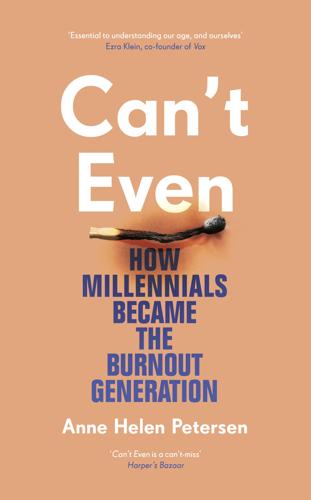
Can't Even: How Millennials Became the Burnout Generation
by
Anne Helen Petersen
Published 14 Jan 2021
“I thought a good job would be doing work that made me feel like I was creating and learning more about art, at a prestigious institution with name recognition,” she admitted. “And the prestige thing didn’t go away for a lonnnnnnnng time. It wasn’t until doing my post-PhD job search that I realized that prestige has nothing to do with job satisfaction. Luckily, I had seven years of grad school, plus all those internships, to realize what parts of the work made me happy and fulfilled.” After going on the market, she found her first permanent job with benefits. It’s not in academia, per se—but teaching history to middle school students. “It makes me really happy, pays pretty well, and leaves me feeling challenged and fulfilled every day,” says.
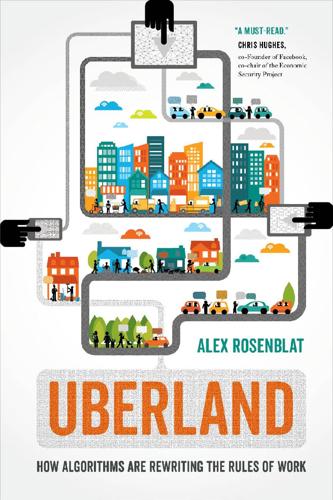
Uberland: How Algorithms Are Rewriting the Rules of Work
by
Alex Rosenblat
Published 22 Oct 2018
Uber advertises itself as a chauffeur service with slogans like “Your private driver”; drivers say that Uber passengers sit in the backseat and stare at their phones. In contrast, Lyft advertises itself as “your friend with a car” and encourages drivers to fist-bump their passengers, who are welcome to sit in the front seat and chat with the driver. Lyft drivers reported higher rates of job satisfaction in a 2018 survey conducted by blogger Harry Campbell.8 In interviews and observations, many drivers indicated that Lyft is superior because it has an in-app tipping function (which Uber took a long time to introduce), which made it a bit more expensive for passengers but more satisfying to drivers.
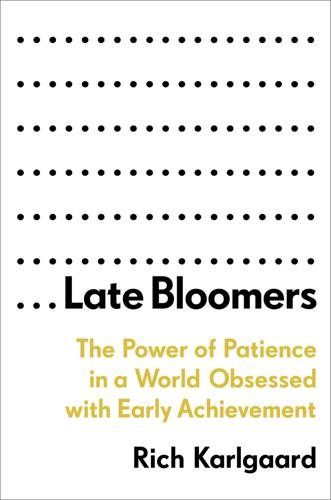
Late Bloomers: The Power of Patience in a World Obsessed With Early Achievement
by
Rich Karlgaard
Published 15 Apr 2019
High self-efficacy is good because unless we truly believe we can produce the result we want, we have little incentive to try stuff in the first place or persevere in the face of challenges. Over the past few decades, dozens of studies have examined the importance of self-efficacy in academics, occupational development, and career success. Multiple cross-sectional and longitudinal studies prove that high self-efficacy has a positive influence on salary, job satisfaction, and career success. Self-efficacy has been studied, and verified, in a variety of areas, including phobias, depression, social skills, assertiveness, smoking addiction, pain control, health, and athletic performance. Why is self-efficacy such a big deal? Virtually all of us can identify goals that we want to accomplish or habits we’d like to change.
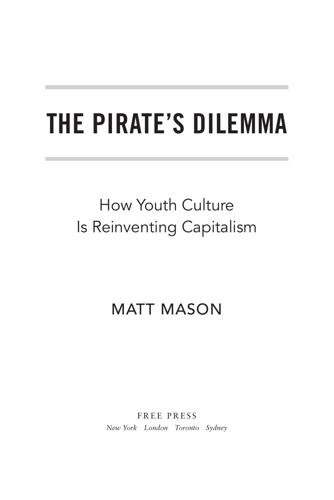
The Pirate's Dilemma: How Youth Culture Is Reinventing Capitalism
by
Matt Mason
Ninety-nine percent of aspiring MCs won't become the next 50 Cent, but they will learn something about building a brand, and they'll gain practical experience that isn't available in any classroom. These days the first thing an aspiring MC may write is a business plan.According to a 2006 survey by the Junior Achievement Worldwide organization, more than 70 percent of teenagers are interested in starting their own businesses, and 83 percent think self-employment will provide greater job satisfaction.] Successful rappers have become multinational corporations. In 2005 Jay-Z, whose current business interests include, among other things, Roc-A-Fella records, Roc-A-Wear clothing, a line of luxury watches, S. Carter sneakers, the 40/40 Club, and a stake in the New Jersey Nets basketball team, hit this particular nail on the head.

Power, for All: How It Really Works and Why It's Everyone's Business
by
Julie Battilana
and
Tiziana Casciaro
Published 30 Aug 2021
And when they do, the leaders must respond appreciatively: thanking those who speak up and destigmatizing errors by flagging them as opportunities for learning. The psychological safety these practices engender not only helps a leader keep hubris in check but also enhances the team’s innovation and effectiveness.54 When leaders express humility, the quality of team members’ contributions increases, together with their job satisfaction and retention, and their engagement and learning orientation.55 Humility—the acknowledgment of one’s limitations and the accurate perception of one’s abilities and accomplishments—increases our openness to learning and boosts our altruism, generosity, and helpfulness.56 Together, humility and empathy are thus what allows us to use power to achieve a higher purpose.
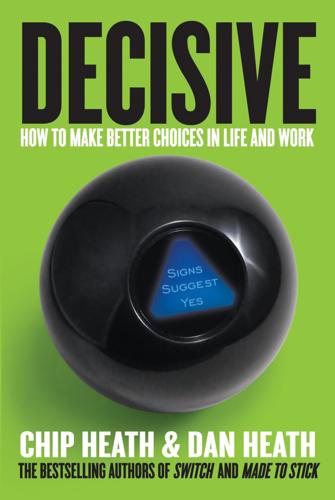
Decisive: How to Make Better Choices in Life and Work
by
Chip Heath
and
Dan Heath
Published 26 Mar 2013
This explains an otherwise puzzling fact: Realistic job previews have been shown to reduce turnover even when they are given after the employee is hired. The previews are not just helping the “wrong” people opt out of the hiring process; they’re helping all people cope better when they confront the inevitable difficulties of the role. In fact, realistic job previews not only reduce turnover but also increase job satisfaction.‖ As a manager, you could use a realistic job preview to help “vaccinate” the new hires at your organization. You might also use one yourself to prepare for decisions you’ve made. If you’ve got a product launch looming in three months, for example, wouldn’t it be worth getting a “job preview” of the launch period from someone who’s handled a similar project?
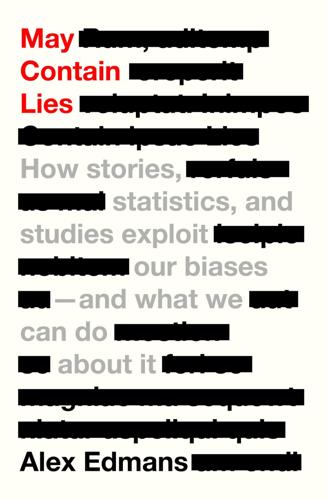
May Contain Lies: How Stories, Statistics, and Studies Exploit Our Biases—And What We Can Do About It
by
Alex Edmans
Published 13 May 2024
Deary (2006): ‘Effect of breast feeding on intelligence in children: prospective study, sibling pairs analysis, and meta-analysis’, British Medical Journal 333, 945. 5 EY (2022): ‘Press release: prioritizing emotions is the key to success for business transformation’, 28 June 2022. 6 Saïd Business School (2022): ‘Prioritising emotions is the key to success for business transformation, groundbreaking research finds’, 28 June 2022. 7 Travaglio, Marco et al. (2020): ‘Link between air pollution and Covid-19 in England’, Environmental Pollution 268, 115859. 8 Carrington, Damian (2020): ‘“Compelling” evidence air pollution worsens coronavirus – study’, Guardian, 13 July 2020. 9 Barton, Dominic, James Manyika and Sarah Keohane Williamson (2017): ‘Finally, evidence that managing for the long term pays off’, Harvard Business Review, 7 February 2017. 10 Edmans, Alex (2012): ‘The link between job satisfaction and firm value, with implications for corporate social responsibility’, Academy of Management Perspectives 26, 1–19. 11 Rambotti, Simone (2015): ‘Recalibrating the spirit level: an analysis of the interaction of income inequality and poverty and its effect on health’, Social Science & Medicine 139, 123–31. 12 Wei, Yuan et al. (2021): ‘Smoking cessation in late life is associated with increased risk of all-cause mortality amongst oldest old people: a community-based prospective cohort study’, Age and Ageing 50, 1298–1305. 7.
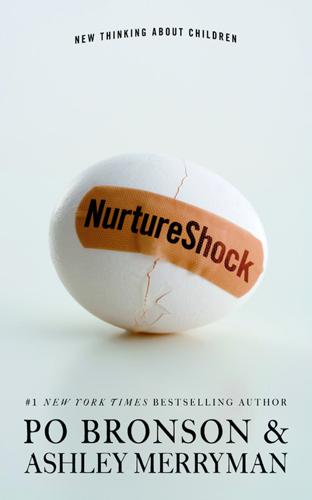
NurtureShock: New Thinking About Children
by
Po Bronson
and
Ashley Merryman
Published 2 Sep 2008
Froh, “Gender Differences in Gratitude: Examining Appraisals, Narratives, and the Willingness to Express Emotions, and Changes in Psychological Needs,” Journal of Personality, vol. 77, no. 3 (Early view) (2009). McCausland, W. D., K. Pouliakas, and I. Theodossiou, “Some Are Punished and Some Are Rewarded: A Study of the Impact of Performance Pay on Job Satisfaction,” University of Aberdeen Business School Working Paper No. 2007–06 (2007). Padilla-Walker, Laura, “Characteristics of Mother-Child Interactions Related to Adolescents’ Positive Values and Behaviors,” Journal of Marriage and Family, vol. 69, pp. 675–686 (2007). Padilla-Walker, Laura M., and Gustavo Carlo, “Personal Values as a Mediator Between Parent and Peer Expectations and Adolescent Behaviors,” Journal of Family Psychology, vol. 21, no. 3, pp. 538–541 (2007).
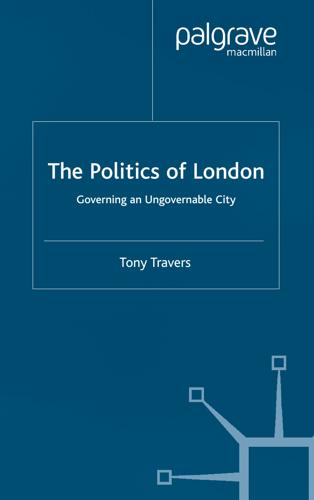
The politics of London: governing an ungovernable city
by
Tony Travers
Published 15 Dec 2004
Second, the powers that were given to the assembly have, for the most part, not been used effectively. Members evidently enjoy some aspects of their job more than others. High-profile activities such as mayor’s question time, or membership of the police and fire authorities, have offered greater job satisfaction than the often slow and painstaking business of holding inquiries and writing reports on aspects of London government. As has been stated, there was virtually no scrutiny of services such as police or fire and emergencies during the early years of the new authority. Using an analysis similar to that shown earlier for the mayor, an examination of the assembly’s press activity during the first three quarters of 2002 shows the environment as its main preoccupation (see Table 8.3).
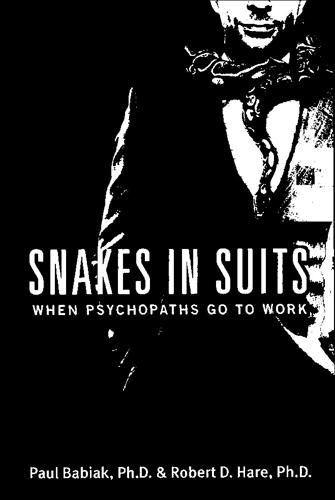
Snakes in Suits: When Psychopaths Go to Work
by
Dr. Paul Babiak
and
Dr. Robert Hare
Published 7 May 2007
The reality was not always so rosy, of course, but in general, this model of stability worked, especially during times of high demand, intense profitability, and limited competition, when manufacturing, engineering, and basic service industries were at their peak. Employee surveys collected during this period showed that job satisfaction was influenced more by the chance to interact productively with others than by money. While money was, and is, always important, it was rarely first on the list—in fact, money tended to be rated somewhere in the middle, often lower than social interaction, job security, “the chance to do meaningful work,” and “appreciation from the boss.”
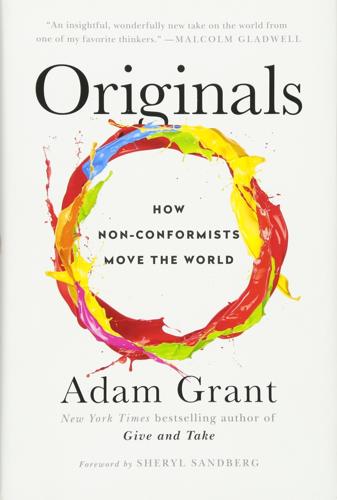
Originals: How Non-Conformists Move the World
by
Adam Grant
Published 2 Feb 2016
Chiaburu, “Quitting Before Leaving: The Mediating Effects of Psychological Attachment and Detachment on Voice,” Journal of Applied Psychology 93 (2008): 912–22. exit, voice, persistence, and neglect: Caryl E. Rusbult, Dan Farrell, Glen Rogers, and Arch G. Mainous III, “Impact of Exchange Variables on Exit, Voice, Loyalty, and Neglect: An Integrative Model of Responses to Declining Job Satisfaction,” Academy of Management Journal 31 (1988): 599–627; Michael J. Withey and William H. Cooper, “Predicting Exit, Voice, Loyalty, and Neglect,” Administrative Science Quarterly 34 (1989): 521–39. these choices are based on feelings of control and commitment: Subrahmaniam Tangirala and Rangaraj Ramanujam, “Exploring Nonlinearity in Employee Voice: The Effects of Personal Control and Organizational Identification,” Academy of Management Journal 51 (2008): 1189–1203.

Economists and the Powerful
by
Norbert Haring
,
Norbert H. Ring
and
Niall Douglas
Published 30 Sep 2012
In part one of the BBC’s 2007 documentary The Trap: What Happened to Our Dream of Freedom, in an interview Buchanan is extremely clear: he considers “the public interest” as being in fact the disguised self-interest of governing bureaucrats, and that anyone motivated by anything other than rational self-interest – such as job satisfaction, a sense of public duty, or faith in God – is a zealot and to be feared as destabilizing and dangerous to society. In The Logic of Collective Action, Mancur Olson opposes any theory that works with the assumption that groups work together to further the group’s interests. While earlier theorists had deemed such behavior among group members rational, Olson insisted that it was the opposite.
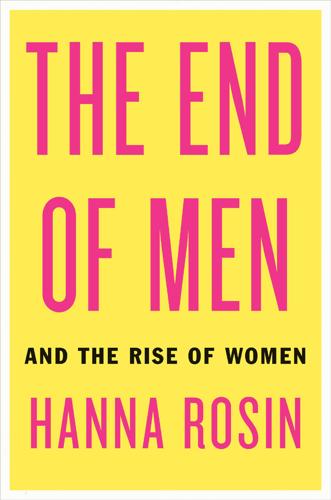
The End of Men: And the Rise of Women
by
Hanna Rosin
Published 31 Aug 2012
Farrell often tells the story of how he was in such a hurry to get through his studies and assume his breadwinning role that he failed some of his PhD exams. This experience taught him that men need to be liberated from their constricted sense of manhood. Some aspects of his visions have already come to pass: The younger generation of men does in fact aim for some job satisfaction and decent balance in their lives. Our expectation of fatherhood has changed dramatically since the seventies. There may not be all that many stay-at-home dads, but a father who is never home for family dinner or bedtime is out of tune with the times. Still, men have not yet fully embraced the message.
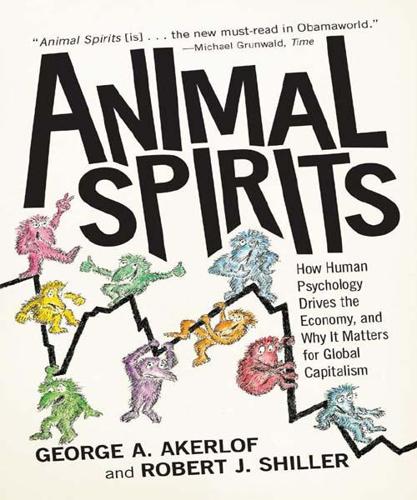
Animal Spirits: How Human Psychology Drives the Economy, and Why It Matters for Global Capitalism
by
George A. Akerlof
and
Robert J. Shiller
Published 1 Jan 2009
“Looting: The Economic Underworld of Bankruptcy for Profit.” Brookings Papers on Economic Activity 2:1–74. Akerlof, George A., and Janet L. Yellen. 1990. “The Fair Wage-Effort Hypothesis and Unemployment.” Quarterly Journal of Economics 105(2):255–83. Akerlof, George A., Andrew K. Rose, and Janet L. Yellen. 1988. “Job Switching and Job Satisfaction in the U.S. Labor Market.” Brookings Papers on Economic Activity 2:495–582. Akerlof, George A., William T. Dickens, and George L. Perry. 1996. “The Macroeconomics of Low Inflation.” Brookings Papers on Economic Activity 1:1–59. ———. 2000. “Near-Rational Wage and Price Setting and the Long-Run Phillips Curve.”
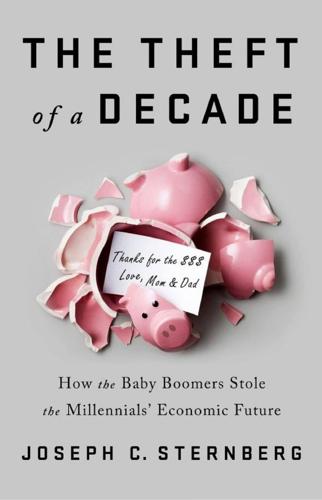
The Theft of a Decade: How the Baby Boomers Stole the Millennials' Economic Future
by
Joseph C. Sternberg
Published 13 May 2019
There was a notable increase in 1099 issuance after 2008.47 The gig economy could encompass a whopping 43 percent of American workers by 2020, according to an estimate by Intuit CEO Brad Smith in 2017.†48 Certainly there are different kinds of gig work that allow different levels of skill development and provide different levels of job satisfaction. The problem is that the gig economy seems to be taking over large sections of the labor market, and Millennials will live with the consequences for the rest of their lives. The most important benefit Millennials are missing out on as they get locked out of traditional employment is an employer’s investment in their training and skills.

Free Money for All: A Basic Income Guarantee Solution for the Twenty-First Century
by
Mark Walker
Published 29 Nov 2015
It should be apparent that this argument holds only on two assumptions: first, that those who are most likely to drop out of the work force work in occupations that 192 FREE MONEY FOR ALL might be automated, and second, that there is not a lot of withdrawal from the labor market by robotic developers or others that might be instrumental in increasing automation. So, for example, it would be a terrible outcome if BIG induced only those with PhDs in robotics to drop out and surf all day long. Much better for a robotic future is if fast-food workers are more likely to drop out. Given the pay differential and the difference in job satisfaction between roboticists and fast-food workers, it is safe to assume that any decline in the workforce participation rate is more likely to come from the ranks of the latter. The Rawlsian view that threatens the perennial Malibu surfer is badly mistaken. Perennial surfers ought to be celebrated as heroes of the nation.
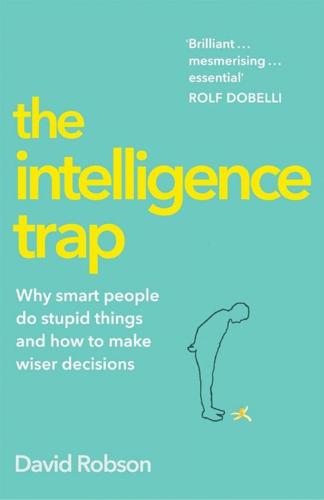
The Intelligence Trap: Revolutionise Your Thinking and Make Wiser Decisions
by
David Robson
Published 7 Mar 2019
In each case, the questions test people’s ability to prioritise tasks and weigh up the value of different options, to recognise the consequences of their actions and pre-empt potential challenges, and to persuade colleagues of pragmatic compromises that are necessary to keep a project moving without a stalemate. Crucially, Sternberg has found that these tests predicted measures of success such as yearly profits, the chances of winning a professional award, and overall job satisfaction. In the military, meanwhile, Sternberg examined various measures of leadership performance among platoon commanders, company commanders and battalion commanders. They were asked how to deal with soldier insubordination, for instance – or the best way to communicate the goals of a mission. Again, practical intelligence – and tacit knowledge, in particular – predicted their leadership ability better than traditional measures of general intelligence.55 Sternberg’s measures may lack the elegance of a one-size-fits-all IQ score, but they are a step closer to measuring the kind of thinking that allowed Jess Oppenheimer and Shelley Smith Mydans to succeed where other Termites failed.56 ‘Sternberg’s on the right track,’ Flynn told me.

With the End in Mind
by
Kathryn Mannix
Published 29 Dec 2017
They are filled with admiration and awe for this almost-woman, this great-hearted human, who has lived and loved so fully in a lifetime cut short, whose cup is half full – no, in fact, so full it is running over. Lullaby Offering a palliative care service to strangers is an intellectually stimulating challenge, filled with job satisfaction. It’s very different to be walking a palliative care route alongside our own dear friends and family, especially when the disease is stripping away the delights of childhood from a much-loved baby. This story is about the wonderful resilience of families in the most heartbreaking of circumstances, and a legacy that preserves a beloved child’s name as a word associated with comfort and care.

Also Human: The Inner Lives of Doctors
by
Caroline Elton
Published 1 Mar 2018
On reflection, she wondered whether she needed a less demanding line of work. Building on her recent master’s, Zoe told me that she wanted to find work as a medico-legal adviser helping doctors who were on the receiving end of a patient complaint or who were facing disciplinary action. She no longer thought her job satisfaction was dependent on treating patients, and she was interested in the complex legal and ethical problems that medico-legal advisers encountered. Zoe duly applied for a medico-legal job but wasn’t appointed. Feedback from the panel was that her heart was still in medicine. Zoe was disappointed, but as she had been told that her chances next time would be greater if she finished her training, with great reluctance she decided to continue with oncology.
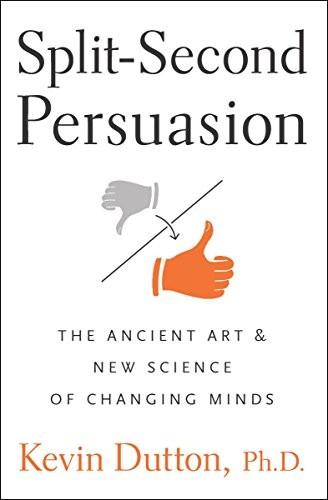
Split-Second Persuasion: The Ancient Art and New Science of Changing Minds
by
Kevin Dutton
Published 3 Feb 2011
The students, in the absence of any other justification for their behaviour, were forced to internalise the attitude they were induced to express – and came, in so doing, genuinely to believe that the tasks they had performed were enjoyable. On the other hand, those in the $20 group had reason to believe there was external justification for their behaviour – they were in it for the money. No confusion there over job satisfaction. Why We Love The Things We Hate (Especially If We Can’t Get A Refund) The perils of cognitive dissonance should feature uppermost in the mind of any prospective persuader. Especially in situations where there’s a lot at stake and the person whom one is persuading has much to lose. Festinger’s study – these days considered a classic – provided, for the very first time, concrete evidence of something that we now take for granted: powerful gravitational forces deep within our brains keep the orbits of both belief and behaviour in close psychological alignment.

A Year of Living Danishly: My Twelve Months Unearthing the Secrets of the World's Happiest Country
by
Helen Russell
Published 14 Sep 2015
I ask whether Peter counts himself among the happy Danes I’m researching and he tells me that he’s very happy indeed: ‘I think people in Denmark generally are, although we do like to moan – we’re spoilt! Personally, I’d say I’m a nine out of ten. Maybe ten out of ten professionally.’ And there you have it. Even a man who spends his days defending giraffe deaths and getting hate mail comparing him to Hitler is happy in Denmark. Now that’s job satisfaction. Still bemused by all I’ve seen and heard over the past few days but determined to get my own animal behaving a bit more Danishly, I come home intent on finding a canine camp to teach him some manners. ‘You’re going to school,’ I tell him. ‘yeowungggggg,’ he protests. ‘It’s not just me who has to give this living Danishly thing a go.

The Coming of Neo-Feudalism: A Warning to the Global Middle Class
by
Joel Kotkin
Published 11 May 2020
New York Times, October 14, 2017, https://www.nytimes.com/2017/10/14/opinion/sunday/millennials-freedom-fear.html. 52 Ronald Brownstein, “Millennials to pass baby boomers as largest voter-eligible age group and what it means,” CNN, July 25, 2017, https://www.cnn.com/2017/07/25/politics/brownstein-millennials-largest-voter-group-baby-boomers/index.html. 53 Li Sun, Rural Urban Migration and Policy Intervention in China (Singapore: Palgrave, 2019), 133; Zhiming Cheng, Haining Wang, and Russell Smyth, “Happiness and job satisfaction in urban China: A comparative study of two generations of migrants and urban locals,” Urban Studies, vol. 51:10 (November 2013), 2160–84. 54 Rob Schmitz, “In China, The Communist Party’s Latest, Unlikely Target: Young Marxists,” NPR, November 21, 2018, https://www.npr.org/2018/11/21/669509554/in-china-the-communist-partys-latest-unlikely-target-young-marxists?

Reaper Force: The Inside Story of Britain’s Drone Wars
by
Dr Peter Lee
Published 14 Jul 2019
Despite that moving around, things went well for me, career-wise. I ended up in a primary school teaching job that I loved. Ed had a setback with a medical downgrading that meant he could not fly in fast jets any more. So he started looking for other flying possibilities that would allow him the same kind of job satisfaction. Flying the Reaper as an SO became a possibility: cutting edge, the way of the future, and a real, front-line challenge. But I would have to leave my dream teaching job. Then one day Ed arrived home, waving an official piece of paper and a bottle of champagne… ‘We’re going to Vegas, baby.’ ‘What?’

Predictive Analytics: The Power to Predict Who Will Click, Buy, Lie, or Die
by
Eric Siegel
Published 19 Feb 2013
For example: Your purchases relate to your shopping history, online behavior, and preferred payment method, and to the actions of your social contacts. Data reveals how to predict consumer behavior from these elements. Your health relates to your life choices and environment, and therefore data captures connections predictive of health based on type of neighborhood and household characteristics. Your job satisfaction relates to your salary, evaluations, and promotions, and data mirrors this reality. Financial behavior and human emotions are connected, so, as we’ll reveal later in this chapter, data may reflect that relationship as well. Data always speaks. It always has a story to tell, and there’s always something to learn from it.

Big Dead Place: Inside the Strange and Menacing World of Antarctica
by
Nicholas Johnson
Published 31 May 2005
I met him again while loading half-ton triwalls of food waste into a milvan with the pickle. Two triwalls barely fit side-by-side in a milvan, so a maladjusted pallet can require fancy work to avoid splitting one of them open. I had been loading waste for a few hours and thus was in the Zone, where speed and quality of physical labor unite in job satisfaction. Inside the pickle, and in the winter dark, you are essentially blind and deaf to the rear. Because the pickles are old, everything in the cab rattles, adding to the loud engine noise. I rolled backwards from the milvan, barely seeing a red-coated figure in the dark walking around. Workers know not to fuck around near machines without making eye contact with the operator.
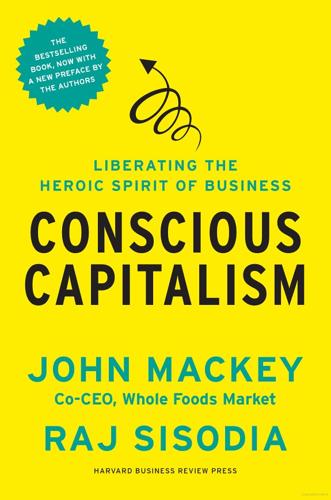
Conscious Capitalism, With a New Preface by the Authors: Liberating the Heroic Spirit of Business
by
John Mackey
,
Rajendra Sisodia
and
Bill George
Published 7 Jan 2014
According to Jeanne Meister and Karie Willyerd, “Millennials view work as a key part of life, not a separate activity that needs to be ‘balanced’ by it … They want work to afford them the opportunity to make new friends, learn new skills, and connect to a larger purpose. That sense of purpose is a key factor in their job satisfaction; according to our research, they’re the most socially conscious generation since the 1960s.”2 A Shared Dream Our dream for the Conscious Capitalism movement is simple: One day, virtually every business will operate with a sense of higher purpose, integrate the interests of all stakeholders, develop and elevate conscious leaders, and build a culture of trust, accountability, and caring.
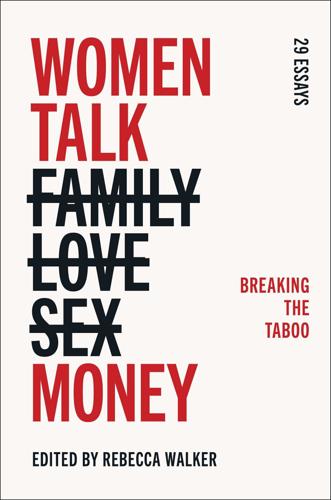
Women Talk Money: Breaking the Taboo
by
Rebecca Walker
Published 15 Mar 2022
We wanted to create transformative experiences for travelers and transform the travel industry by helping local experts and aficionados of food, art, and culture create and sell their own activities and tours in their cities. In some ways, I don’t think I was wrong to seek fulfillment and personal growth by building my own business. I felt more job satisfaction, I felt more attuned to my natural abilities, I was able to exercise my strengths, and I satiated my curious nature. But what I failed to understand is that my existential angst and material longing were in fact disguised, deep spiritual yearnings that no form of entrepreneurship, business, or creative project was ever going to satisfy.

Broke: How to Survive the Middle Class Crisis
by
David Boyle
Published 15 Jan 2014
The shopkeepers became increasingly middle-class, and they were joined by a whole range of middle-class professions: solicitors, vicars, stockbrokers, bankers, local government officials, teachers, magistrates and many more. This was the world that I was born into in 1958. You could go to university and aspire to be one of these professionals, and be paid enough for a comfortable life and live out your days with status and job satisfaction. It didn’t matter if you lived hundreds of miles from London SW1 or EC1, there were all around you middle-class professionals living relatively comfortable lives, having reached as far as they could go in their career. My godmother’s husband was a stockbroker in Bristol in the 1950s. Paul Woolley, the City thinker we met in chapter 4, was a stockbroker in Birmingham in the 1960s.

Brotopia: Breaking Up the Boys' Club of Silicon Valley
by
Emily Chang
Published 6 Feb 2018
Research shows that companies: Susan Sorenson, “How Employee Engagement Drives Growth,” Gallup, June 20, 2013, http://news.gallup.com/businessjournal/163130/employee-engagement-drives-growth.aspx. Higher morale and a more: Eric G. Lambert, Nancy Lynne Hogan, and Shannon M. Barton, “The Impact of Job Satisfaction on Turnover Intent: A Test of a Structural Measurement Model Using a National Sample of Workers,” Social Science Journal 38, no. 2 (Summer 2001): 233–50, https://doi.org/10.1016/S0362-3319(01)00110-0. Another way to look at this: Michael Kimmel, “Why Gender Equality Is Good for Everyone—Men Included,” TED talk, May 2015, https://www.ted.com/talks/michael_kimmel_why_gender_equality_is_good_for_everyone_men_included.

Don't Be Evil: How Big Tech Betrayed Its Founding Principles--And All of US
by
Rana Foroohar
Published 5 Nov 2019
Green is, for example, concerned about the potential mass displacement of drivers in the United States (which represents the largest single category of work for men with a high school degree or less) by autonomous vehicles. Drivers themselves have reported being able to make more money on Lyft relative to Uber, and have higher levels of job satisfaction. (Lyft was first to allow tipping to drivers.)11 Unfortunately, these things fall at the margins. At the end of the day, the business models of the two companies are almost exactly identical; both create tremendously asymmetrical relationships between companies and workers in ways that make the latter ever more insecure.

The AI Economy: Work, Wealth and Welfare in the Robot Age
by
Roger Bootle
Published 4 Sep 2019
Admittedly, the firm says that in the US economy only 4 percent of work activities require creativity. But for “sensing emotion” the figure is 29 percent. These figures suggest that there is great scope for jobs for humans to be transformed in a way that majors in skills that humans uniquely possess, and in the process to create more job satisfaction.20 This word “creativity” needs interpretation. We are not talking only about the ability to do what Beethoven or Van Gogh did. At the most mundane level, all humans exhibit creativity in their everyday lives. Children exhibit this in abundance in the way they play. It includes the ability to innovate, and to develop new ways of doing old things.

Pour Your Heart Into It: How Starbucks Built a Company One Cup at a Time
by
Howard Schultz
and
Dori Jones Yang
Their overall findings confirmed my belief that we have managed to maintain an extraordinary culture that truly values people: 88 percent were satisfied with their jobs, 85 percent thought Starbucks showed concern for its employees, 89 percent were proud to work at Starbucks, and 100 percent thought “working for a company that you respect” was an important factor in job satisfaction. The professionals at ARC, who survey many companies, told us that these marks were extraordinarily high. The poll also revealed that a high percentage of our baristas were in their late teens or early twenties, and many saw working at Starbucks as an acceptable “way station” on the road to a meaningful career.
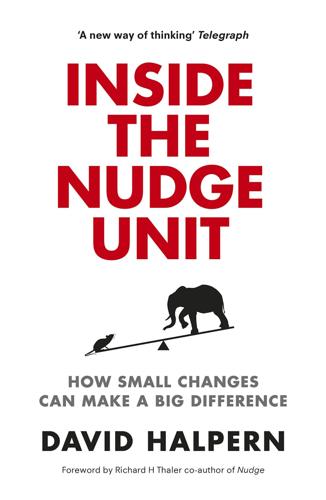
Inside the Nudge Unit: How Small Changes Can Make a Big Difference
by
David Halpern
Published 26 Aug 2015
For example, managers tend to focus too much on extrinsic rewards, notably money, and much less on all the other factors that tend to motivate people to take up a job or to work hard. Itself illustrating a behavioural effect, managers tend to think of themselves as being motivated by a wide range of factors, such as job satisfaction, but when thinking of others they tend to neglect these intrinsic factors and instead focus overly on pay and rewards. Often they would be better off walking the floor and saying thank you than worrying about the annual bonuses. Like other nudges, ‘attract!’ will be most effective where you are prompting or reminding someone to do something that they know they should probably do anyway, such as slowing down as they approach a school or paying an overdue fine.

Roads to Berlin
by
Cees Nooteboom
and
Laura Watkinson
Published 2 Jan 1990
There was, as far as I could tell, no way that anything could ever occur between those two walls, not in that place, certainly nothing initiated by me. So what was the point of watching? Did he spend hours of unutterable boredom in the tower? Or was it pure conviction? Did heading off to that tower every morning give him a sense of job satisfaction? What I really wanted to do was go up into the tower and have a chat with him, but there was no chance of that happening. The Wall at Lübars, West Berlin, April 1989 Maybe I even had a proper look at him yesterday, without realizing that it was him. Yesterday was May Day, and I watched East German television in the evening, as I often do.
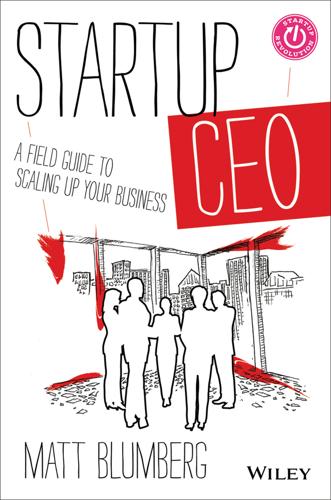
Startup CEO: A Field Guide to Scaling Up Your Business, + Website
by
Matt Blumberg
Published 13 Aug 2013
Add meaning to your endeavor by making it about more than money. Be sure you can describe how your business will make your clients or customers and potentially the world better off. Research makes it clear that individuals who find their work meaningful beyond financial rewards report higher job satisfaction, higher job performance, less job stress and longer tenure. This includes the CEO! While not a psychologist or social scientist, perhaps Teddy Roosevelt said it best. It is not the critic who counts: not the man who points out how the strong man stumbles or where the doer of deeds could have done better.
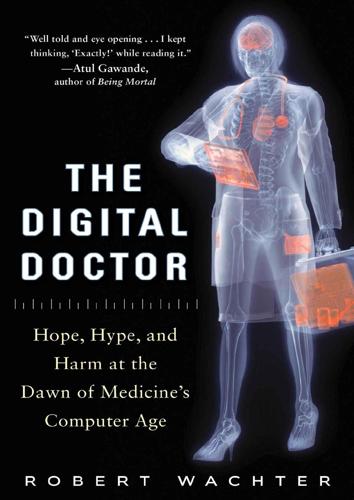
The Digital Doctor: Hope, Hype, and Harm at the Dawn of Medicine’s Computer Age
by
Robert Wachter
Published 7 Apr 2015
Except, you hear this from everybody, so they’re evidently not talking about it with each other.” The survey results weren’t all bad news for electronic health record boosters: 61 percent of physicians felt their EHR improved the quality of care they delivered to patients. But only one in three felt it had improved their job satisfaction, and one in five said they would go back to paper if they could. Tellingly, the more advanced the EHR (for example, systems that offered reminders, alerts, and messaging capability), the greater the unhappiness. Many physicians pointed to data entry as the greatest source of heartburn. A separate 2013 survey reported that, since going digital, 85 percent of office-based doctors felt they were now spending more time on documentation, and two-thirds of them were seeing fewer patients.

What’s Your Type?
by
Merve Emre
Published 16 Aug 2018
Freud, 38–39 and Hitler, 101–2 Katharine, correspondence with, 46, 48, 49, 76, 77, 82–83, 84–85, 90, 102–3, 162–63 and Murray and Morgan, 91–95, 98–99, 100–102 Psychological Types, xiii, 34–37, 40, 42, 46, 56, 74, 94, 103, 129, 230 on purpose of self-knowledge, xix, 38 on type of extravert, 39–40, 43–44, 215 on type of feeling, 41 on type of introvert, 39, 44, 215 on type of intuitive, 40–41, 44, 46, 48 type theory of, xiii–xiv, xvii, 33, 35–36, 37–38, 43–44, 131, 135, 168–69 unprofessional behavior of, 84, 101–2 U.S. visit of, 89, 91, 101–4 Jung, Emma, 95, 102 Jungian analysts, 73–74, 83–85, 90–91, 94–101 Jungle Book, The (Kipling), 12, 22 Kantor, MacKinlay, 191, 193 Kaplan, Bob, 259 Keirsey, David, 260 Kennedy, John F., 204 Khrushchev, Nikita, 187 Kipling, Rudyard, 11–12 Knapp, Robert, 192 Kraepelin, Emil, 122 Kroeger, Otto, 252–56 Küsnacht, Switzerland, 48, 89, 94, 98 labor, see workers Ladies’ Home Journal, 18, 57 Laird, Donald A., 9–10 Lawrence, Lawrence Shubert, Jr., 65 lawyers, personality testing and, 249–50 Leary, Timothy, 179, 188 Levinson, Daniel, 156 Life, 57 “living-in assessment” at IPAR, 178, 182–87 Los Angeles Times, 246 MacKinnon, Donald, 223 and ETS, 201, 202, 203–4, 208 and IPAR “house-party” tests, 177–80, 181, 182–87, 190, 194–95, 197, 201, 241 at Station S, 142, 150, 153–55, 176, 180–81 Mailer, Norman, 190, 193 Maker’s Cosmic Laboratory, 74, 81, 85, 90 Maltese Falcon, The (Hammett), 65 management, effective, 120, 124, 165–66, 264 Man from Zurich, The (Briggs), 50, 90 Man in the Gray Flannel Suit, The (Wilson), 171 Mann, Kristine, 73 marketing, of MBTI, 245, 251, 252, 257, 260 marriage: Isabel’s use of types for, 104, 118, 129, 132, 136–37, 207, 235–36 Katharine’s application of Jung’s theory to, 67–69, 104, 118 MBTI’s use of types for, 247, 255–56 as origin for ideas about type, 25, 28–30, 51, 66–69, 104, 118–19, 132–33 Mayo, Elton, 124 MBTI, see Myers-Briggs Type Indicator (MBTI) McCaulley, Mary Hawley: background of, 227–30 CPP publishing connection by, 241–44 Isabel and, 230–37, 242–44 MBTI and, 232–37, 241–44, 257, 269 McClure publishing prize, 61–63 McClure’s Magazine, 16 medical schools, MBTI and, 174–75, 181 “Meet Yourself: How to Use the Personality Paint Box” (Briggs), 43–46, 47, 95–96, 219 Melville, Herman, 94, 95, 109 Memphis, Tenn., 28, 29, 30, 59, 119 Michigan, 1, 4, 5, 30 Michigan Agricultural College, 1, 2, 4, 16, 40 Milgram, Stanley, 155 military, personality testing in, xvi, 142, 150, 253 Mill, John Stuart, 9 millennials, 258–59 Mills College, 197 Minima Moralia: Reflections on a Damaged Life (Adorno), 155 Moby-Dick (Melville), 94, 109 modernity, xvi, xx, 75, 105, 126, 156 see also industrial modernity moral code, disregard for, 84, 95, 101, 105, 117 Morgan, Christiana: Jung and, 98–99 Murray and, 94–96, 98–99, 101 picture cards by, 99 Moses, Barbara, 254 motherhood: grief in, 5–6, 41, 57, 100, 237–39 Helson, Ravenna and, 194, 196–97 Isabel and, 57–59, 64, 66–67, 69, 70, 118, 123, 129, 211, 237–39 Jung’s view of, 95, 98–99 and Katharine as Isabel’s critic, 56, 60, 132–33 and Katharine as Isabel’s guide, 51, 63–64, 67–69, 118–19, 124–25, 127, 132 and Katharine’s diary of child-rearing, 5, 7, 11, 13, 15, 16, 18, 62 Katharine’s parenting advice columns on, 16–18 and Katharine with Isabel as young adult, 18–19, 20, 21–25, 26–27, 28, 32–33, 42 as “profession” for Katharine, 6–7, 8–9, 10–13, 11, 14–18, 67–69 thinking vs. feeling types in, 41 see also family, as origin of MBTI Mumford, Lewis, 92, 98, 106, 107 “Murder Mystery” game, 153–54 Murder Yet to Come (Myers), 59–63, 64, 69, 81 Murphy, Gardner, 203 Murray, Henry: “Analysis of the Personality of Adolph [sic] Hitler, An,” 107, 111, 113 and ETS, 201, 202, 203 Explorations in Personality, 96 goals of, 92, 93, 94, 96, 106 on Hitler, 105–6, 107–11, 111–15 as Isabel’s first client, 139 as Jung’s friend and skeptic, 91–95, 101–2 Katharine, in comparison to, 92–93, 94, 95–96, 97–98, 100, 105–6 methodologies of, 97–101, 142, 144–45, 149–50, 152–55 on nuclear weapons, 116 and personology, 96–97, 98, 112–13, 115, 156 on predictions, 111–13, 143–44 spies, selection of, 140, 142–45, 149–50, 152–55 and TAT, 100–101, 107, 184, 201, 229 Myers, Ann: death of, 237–39 family life of, 57, 62, 221 typing of, 57, 129, 130–31, 133, 239 Myers, Clarence Gates “Chief”: as actor, 65–66 as father, 129, 238, 244 Isabel, conflict with, 129, 132, 137 Isabel, description of, 26–27 Isabel, love and marriage with, 20, 21, 22–23, 24, 26–32, 51, 61, 137 Isabel, support for, 61, 65–66, 174, 211, 240 on Isabel’s type indicator, 129, 132 Katharine, conflict with, 21, 22, 23–25, 26–27, 28, 31 political beliefs of, 26, 31–32, 115 work of, 28, 30, 31, 32, 62, 68 Myers, Isabel Briggs: overview of, xii, xiii, xvii, xix as amateur counselor, 165–66, 235 archives of, xii, xv, 262, 265 cancer and death of, 239, 240, 244 charm of, 30, 54 Chief, love and marriage with, 21, 22–23, 24, 26–27 Chief, wife of, 28–32, 51–52, 65–69, 70, 118, 123, 129, 137, 174 as child, 5–6, 10–11, 11, 14–16, 17–19, 100 college as freedom for, 20–21, 23, 25–26 descriptions of, 24, 26–27, 66, 205, 206, 222, 232, 234 ETS, work with, see ETS (Educational Testing Service) family losses of, 220–21, 227, 237–39 as Hay’s employee, 121, 122–25, 159 income and investments of, 62–63, 122, 159–60, 210, 221, 222, 233–34 and IPAR testing at “house party,” 180, 186, 194, 199–200 Jung, approach to, see Myers-Briggs Type Indicator (MBTI), Jung’s theories as basis for Jung, meeting with, 102–3 Katharine as critic of, 56, 60, 132–33 Katharine as guide for, 51, 63–64, 67–69, 118–19, 124–25, 127, 132 literary education of, 22 McCaulley and, 230–37, 242–44 as mother, 57–59, 64, 66–67, 69, 70, 118, 123, 129, 237–39 motivations of, 31–32, 34, 93, 117–19, 124, 142, 232 paranoia of, 211, 212 political positions of, 25–26, 31–32, 125 publishing award of, 61–64 questionnaires by, xiii, 7, 43, 93, 128–32, 135–36, 214 self-doubts of, 64–65, 69, 117, 160, 219, 221 type business, building, see business, growth of MBTI in type indicator, developing, 117–19, 127–34 type indicator, pitching, 134–35, 206–7 type of, 49, 57, 129, 132, 230, 239 types in fiction of, 56, 60–61 typing, origin of, see family, as origin of MBTI vision of, 79 as writer, 51–52, 56–57, 58–65, 69–70, 118 Myers, Isabel Briggs, writings of: Death Calls for Margin, 65–66 “Diary of an Introvert Determined to Extravert, Write, & Have a Lot of Children,” 51–52, 53, 56, 118 Gifts Differing, 29 Give Me Death, 69–70, 118, 134 Murder Yet to Come, 59–63, 64, 69, 81 Type as the Index to Personality, 137 Myers, Jonathan Briggs, 223–24 Myers, Kathy (wife of Peter), 243, 252, 257–58 Myers, Peter: adulthood, 163, 221, 243, 244, 252 childhood, 57, 62, 79, 81, 122 typing of, 57, 129, 130–31, 133 Myers & Briggs Foundation, 262 Myers-Briggs Type Indicator (MBTI): overview of, xii, xiii–xiv, xvii, xix–xx attraction of, xvi, xvii–xviii, xix, 45 business growth of, see business, growth of MBTI in certification programs for, xii–xv, 252, 262–67, 268 cheating on, 170–73 in corporations, see corporations CPP as publisher for, xv, 186, 241–44, 248–49, 252, 257 critiques of, 149, 161, 172–73, 210, 214–19, 267–68 development of, 117–19, 127–34 dilution of, 242, 256–60 ETS as publisher for, see ETS (Educational Testing Service) and executives, 164–65, 253, 254 global influence of, xvi, xviii, 256 grids of types for, 46, 47, 138 Hay and Associates as publisher for, 134–35, 137, 159, 163–64, 166, 228 index cards, use of, 127, 207, 213, 214 initials, origin of use in, 131, 138, 205 and intelligence differences, 167 and IPAR “house party” testing, 180, 181, 184, 185, 186, 194, 199–200 ironic view of, 256–60 job satisfaction and, 124–25, 135–36, 160–62, 166–67, 264 Jung’s theories and, see Myers-Briggs Type Indicator (MBTI), Jung’s theories as basis for knock-off versions of, 259–60 as language, xii–xv, xviii marketing of, 245, 251, 252, 257, 260 and McCaulley, 232–37, 241–44, 257, 269 name of, 119, 204 origins of, see family, as origin of MBTI pricing of, 137, 164, 262 publishers of, see publishers, of MBTI racialized interpretation of, 169–70, 233 rationale for, 124, 125, 134–35, 205–7, 219–20 as religion substitute, xvi, xviii, 44, 133 results, immutability of, xiv–xv, xxi–xxii, 45, 149, 263–64 results, inconsistency of, 168–70, 241–42, 248–49, 263–64 scoring of, 135, 195, 208, 210–11, 213, 232–33, 243 self-scoring version of, 243 and “speaking type,” xiii–xv, 56, 263 for spy selection in World War II, 142, 147, 149, 150 vs.
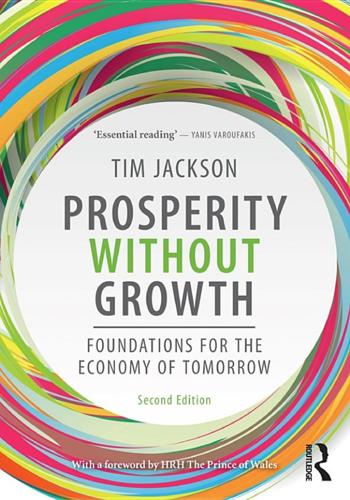
Prosperity Without Growth: Foundations for the Economy of Tomorrow
by
Tim Jackson
Published 8 Dec 2016
Online at www.carbontracker.org/wp-content/uploads/2014/09/Unburnable-Carbon-2-Web-Version.pdf (accessed 23 July 2016). Carbon Trust 2006. The Carbon Emissions in All That We Consume. London: Carbon Trust. Castel, D., C. Lemoine and A. Durand-Delvigne 2011. ‘Working in cooperatives and Social Economy: Effects on Job Satisfaction and the Meaning of Work’. Perspectives interdisciplinaires sur le travail et la santé 13(2). Online at http://pistes.revues.org/2635. Chambers, Robert and Gordon Conway 1992. ‘Sustainable rural livelihoods: practical concepts for the 21st century’. IDS Discussion Paper 296PASSAGE Working Paper 14-03.
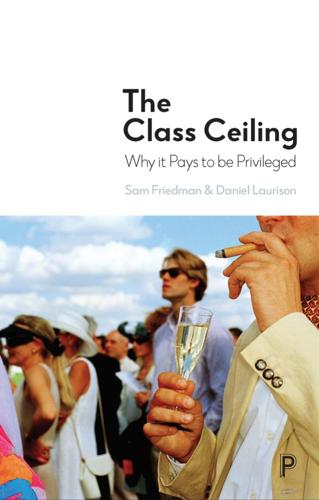
The Class Ceiling: Why It Pays to Be Privileged
by
Sam Friedman
and
Daniel Laurison
Published 28 Jan 2019
Jonsson, J.O., Grusky, D.B., Di Carlo, M., Pollak, R. and Brinton, M.C. (2009) ‘Microclass mobility: Social reproduction in four countries’, American Journal of Sociology, 114(4), 9771036 (https://doi.org/10.1086/592200). Judge, T.A. and Bono, J.E. (2001) ‘Relationship of core selfevaluations traits – self-esteem, generalized self-efficacy, locus of control, and emotional stability – with job satisfaction and job performance: A meta-analysis’, Journal of Applied Psychology, 86(1), 80-92 (https://doi.org/http://dx.doi. org/10.1037/0021-9010.86.1.80). Kant, I. ([1790] 1987) Critique of judgment, UK: Hackett Publishing Co. Kanter, R.M. (1993) Men and women of the corporation (2nd edn), New York: Basic Books.
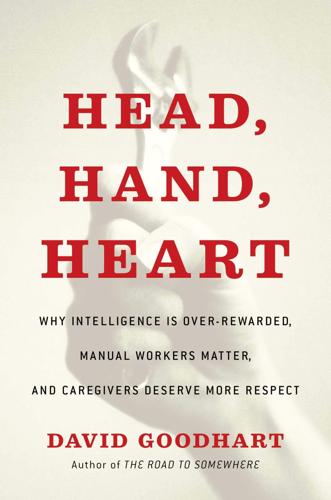
Head, Hand, Heart: Why Intelligence Is Over-Rewarded, Manual Workers Matter, and Caregivers Deserve More Respect
by
David Goodhart
Published 7 Sep 2020
And in the countryside, as conventional farming is increasingly replaced by organic farming, with its more labor-intensive concern for nature and animal welfare, new agricultural Heart jobs will be created. Public policy, so far as possible, should have a bias toward work that produces high job satisfaction. That often means working in a team solving problems together against a common adversary. Many of the craft jobs that disappeared over the course of the twentieth century, such as stonemason or thatcher, are now making a comeback. Beautiful old buildings require a skilled workforce to keep them standing.

Think Like a Rocket Scientist: Simple Strategies You Can Use to Make Giant Leaps in Work and Life
by
Ozan Varol
Published 13 Apr 2020
With help from the ground, astronauts figured out a way—using tube socks and duct tape, among other random objects—to fit a square peg into a round hole.83 There are important lessons here for us all. When we face uncertainty, we often manufacture excuses for not getting started. I’m not qualified. I don’t feel ready. I don’t have the right contacts. I don’t have enough time. We don’t start walking until we find an approach that’s guaranteed to work (and preferably one that comes with job satisfaction and a six-figure salary). But absolute certainty is a mirage. In life, we’re required to base our opinions on imperfect information and make a call with sketchy data. “We didn’t know what we were doing when we landed” on Mars, Squyres admits. “How can you know what you’re doing when no one has done it before?”

Men Who Hate Women: From Incels to Pickup Artists, the Truth About Extreme Misogyny and How It Affects Us All
by
Laura Bates
Published 2 Sep 2020
Treating female spouses and children as vulnerable secondary dependents, extensions of the self or property, instead of equal partners and sources of support. Prioritising strength, physical prowess and sexual triumph over intellect, emotional intelligence and friendship. Secretive self-flagellation and self-medication over admission of failure. Money and status over job satisfaction. Career over parental involvement. Society over self. All this is true. But it is too often assumed that the potential damage we highlight is only damage to women and children, when the truth is that the damage toxic masculinity causes to men and boys is also enormous. The problem, I am repeatedly told by boys, men and activists, is that, when we say ‘toxic masculinity’, people hear ‘toxic men’.

Yoga Nidra: The Art of Transformational Sleep
by
Kamini Desai
Published 7 Mar 2017
All the traditional sources of heart disease were on the list: diet, exercise, smoking, heredity, weight and stress. However, the study revealed that the greatest determining factors of one’s likelihood to die from coronary heart disease were the answer to two simple questions: “Are you happy?” and “Do you enjoy your job?” These had to do with self-happiness and job satisfaction ratings. Take a moment to ponder your response to these questions. Your answers might tell you a little bit about your thoughts and how they may be affecting your health. The point is that what we think matters. I’m certainly not suggesting we all go out and eat hamburgers, french fries and smoke cigarettes.
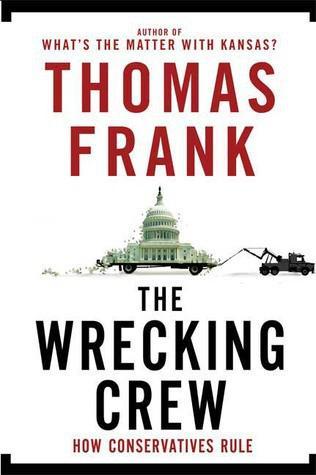
The Wrecking Crew: How Conservatives Rule
by
Thomas Frank
Published 5 Aug 2008
We might as well have piled the banknotes up in a pasture somewhere and set them afire. From first to last the New Orleans disaster was a test of Bush’s “market-based” government. To start with, we have FEMA as it was in 2000, a well-run, freestanding federal agency whose employees reported high morale and job satisfaction; candidate George W. Bush even praised the agency in one of his debates with Al Gore. President George W. Bush then put FEMA under the charge of Joe Allbaugh, a Texas winger with no disaster experience but a long history at Bush’s side; Allbaugh proceeded to fill the place with political appointees and incompetent pals like the soon-to-be-notorious Michael Brown.
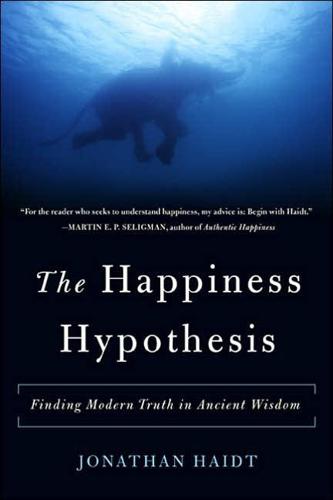
The Happiness Hypothesis: Finding Modern Truth in Ancient Wisdom
by
Jonathan Haidt
Published 26 Dec 2005
Karl Marx's criticism of capitalism23 was based in part on his justified claim that the Industrial Revolution had destroyed the historical relationship between craftsmen and I he goods they produced. Assembly-line work turned people into cogs in a giant machine, and the machine didn't care about workers' need for effectance. Later research on job satisfaction supported Marx's critique, but ndded nuance. In 1964, the sociologists Melvin Kohn and C a r m i S c h o o l e r 2 4 surveyed 3,100 American men about their jobs and found that the key to understanding which jobs were satisfying was what they called " o c c u p a - tional self direction." M e n who were closely supervised in jobs of low c o m - plexity and m u c h routine showed the highest degree of alienation (feeling powerless, dissatisfied, and separated from the work).

Coming Apart: The State of White America, 1960-2010
by
Charles Murray
Published 1 Jan 2012
Take, for example, the work satisfaction variable, which has four categories: “very dissatisfied,” “a little dissatisfied,” “moderately satisfied,” and “very satisfied.” The analysis gives you a separate number—the size of the boost—for each of the four categories. The more complicated version of multivariate analysis asks what happens when we consider how permutations interact—a happy marriage with no religion, high social trust with high job satisfaction, and so on. The problem is that the number of permutations grows exponentially with the addition of variables. It is easily possible to calculate analyses that contain every permutation of several variables—the computer doesn’t get tired—but the great majority of the numbers associated with the interaction terms are not only going to be statistically nonsignificant, they are going to be so small that they have no discernible effect on the probability of responding “very happy.”
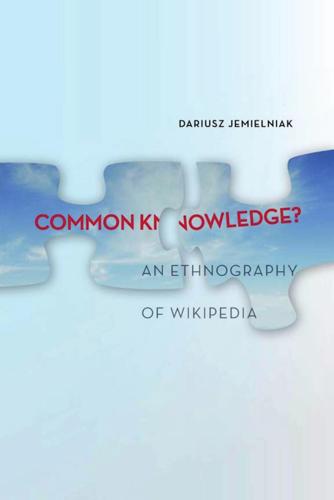
Common Knowledge?: An Ethnography of Wikipedia
by
Dariusz Jemielniak
Published 13 May 2014
Kerr, J. L. (2004). The limits of organizational democracy. The Academy of Management Executive, 18(3), 81–95. Kiel: Difference between revisions. (n.d.). Wikipedia. Retrieved from http://en.wikipedia .org/w/index.php?title=Kiel&diff=2839601&oldid=2838532 Kim, S. (2002). Participative management and job satisfaction: Lessons for management leadership. Public Administration Review, 62(2), 231–241. Kittur, A., & Kraut, R. E. (2008). Harnessing the wisdom of crowds in Wikipedia: Quality through coordination. In CSCW ’08: Proceedings of the 2008 ACM Conference on Computer Supported Cooperative Work (pp. 37–46).

The Future of Technology
by
Tom Standage
Published 31 Aug 2005
The 302 ENERGY use of natural daylight in office buildings, for example, as well as reducing energy costs, seems to make workers more productive. Studies conducted by Rachel and Stephen Kaplan, environmental psychologists at the University of Michigan, found that employees with views of a natural landscape report greater job satisfaction, less stress and fewer illnesses. Lockheed Martin, an aerospace firm, found that absenteeism fell by 15% after it moved 2,500 employees into a new green building in Sunnyvale, California. The increase in productivity paid for the building’s higher construction costs within a year. Similarly, the use of daylight in shopping complexes appears to increase sales.
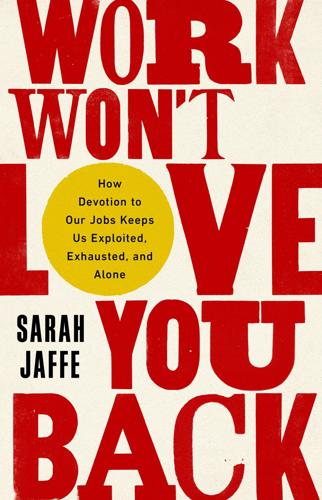
Work Won't Love You Back: How Devotion to Our Jobs Keeps Us Exploited, Exhausted, and Alone
by
Sarah Jaffe
Published 26 Jan 2021
Title: Work won’t love you back : how devotion to our jobs keeps us exploited, exhausted, and alone / Sarah Jaffe. Description: First edition. | New York, NY : Bold Type Books, [2021]| Includes bibliographical references and index. Identifiers: LCCN 2020031919 | ISBN 9781568589398 (hardcover) | ISBN 9781568589381 (ebook) Subjects: LCSH: Quality of work-life. | Job satisfaction.| Work-life balance.| Work—Psychological aspects. | Labor. Classification: LCC HD6955 .J34 2021 | DDC 331.2—dc23 LC record available at https://lccn.loc.gov/2020031919 ISBNs: 978-1-56858-939-8 (hardcover), 978-1-56858-938-1 (e-book) E3-20201217-JV-NF-ORI CONTENTS Cover Title Page Copyright Dedication Introduction.

Click Here to Kill Everybody: Security and Survival in a Hyper-Connected World
by
Bruce Schneier
Published 3 Sep 2018
(ISC)² (accessed 24 Apr 2018), “(ISC)² information security certifications,” https://www.isc2.org/Certifications. 140The International Organization for Standardization (ISO): International Organization for Standardization (accessed 24 Apr 2018), “ISO/IEC 27000 family: Information security management systems,” http://www.iso.org/iso/home/standards/management-standards/iso27001.htm. 141Various reports forecast 1.5 million: Julie Peeler and Angela Messer (17 Apr 2015), “(ISC)² study: Workforce shortfall due to hiring difficulties despite rising salaries, increased budgets and high job satisfaction rate,” (ISC)² Blog, http://blog.isc2.org/isc2_blog/2015/04/isc-study-workforce-shortfall-due-to-hiring-difficulties-despite-rising-salaries-increased-budgets-a.html. Jeff Kauflin (16 Mar 2017), “The fast-growing job with a huge skills gap: Cyber security,” Forbes, https://www.forbes.com/sites/jeffkauflin/2017/03/16/the-fast-growing-job-with-a-huge-skills-gap-cyber-security.

Up and Down Stairs: The History of the Country House Servant
by
Jeremy Musson
Published 12 Nov 2009
Looking back on those pre-war days, Mrs Birkbeck feels that in many ways she was ‘brought up by the servants’ and stresses her personal view of them: ‘they were wonderful people – my grateful memories of their friendship, loyalty and love know no bounds.’120 Sir Peregrine Worsthorne, former editor of the Telegraph, recalled in his recent memoirs the butler who served his mother and his grandmother, James Burton: ‘James embodied job satisfaction long before it was invented . . . Having him as a member of our family brought us many advantages over and above the advantages of what he did as a butler so well. If we broadened his horizons, he certainly broadened ours.’121 Sir Peregrine also recalled how James, a First World War veteran of the trenches, became as butler: ‘an expert on the care and maintenance of beautiful furniture, pictures silver, objets d’art as well as wines – notably champagnes.’

Hedgehogging
by
Barton Biggs
Published 3 Jan 2005
Being an institutional salesman is an occupation that makes some unusual demands on one’s psyche and soul, and Jud drank at least one martini at lunch, two on the train going home while he played cards in the bar car, and at least two more at home with the “old lady” (as he called her) to “dull the pain.” He never defined to me what particular pain he was trying to assuage, but I’m pretty sure it stemmed from his uphill struggle to survive and a nagging lack of what the industrial psychologists call job satisfaction. Jud had been in institutional sales for a long time. For Hudson, he covered 30 of the big New York and Boston institutional accounts, and he dispensed the buzzwords like robust and granular while throwing in fulsome indiscriminately so it was obvious he really didn’t know what the word meant.
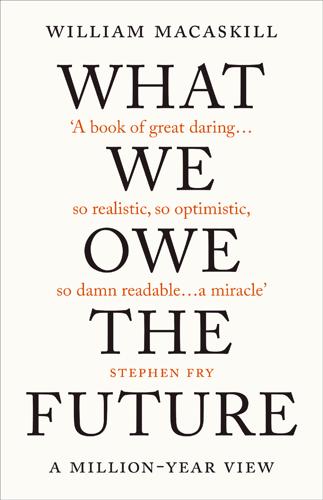
What We Owe the Future: A Million-Year View
by
William MacAskill
Published 31 Aug 2022
If you can be in the top 10 percent of performers in a role rather than in the top 50 percent, this could have a disproportionate effect on your output. Being particularly successful in a role also gives you more connections, credentials, and credibility, increasing your career capital and leverage. Personal fit is, in addition, one of the main ingredients of job satisfaction. People often associate altruism with self-sacrifice, but I think that for the most part, that is the wrong way to think about it. For me personally, since I started trying to do the most good with my life, I feel that my life is more meaningful, authentic, and autonomous. I am part of a growing community of people trying to make the world a better place, and many of these people are now among my closest friends.
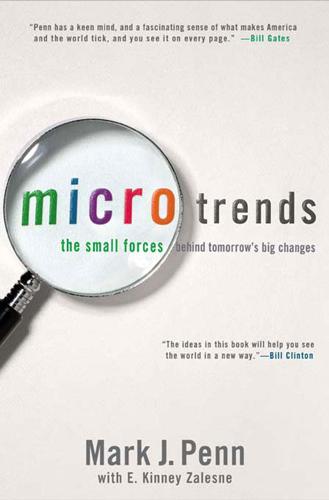
Microtrends: The Small Forces Behind Tomorrow's Big Changes
by
Mark Penn
and
E. Kinney Zalesne
Published 5 Sep 2007
Apart from the control and flexibility that the entrepreneurs have, the 35 percent of home-based workers who don’t run their own business, but are employed by other companies or organizations, also report a lot of joy. According to a study by the American Business Collaboration, 76 percent of full-time telecommuters report high job satisfaction, compared with only 56 percent of on-site workers. And it’s not because they’re taking it easy. People who work from home full-time put in an average of 44.6 hours per week, compared with just 42.2 hours contributed by full-time on-site workers. Employers are happy not just about all that extra work, but also about the tax credits they get for reducing employees’ smog emissions, and increased savings in office space.

Use of Weapons
by
Iain M. Banks
Published 14 Jan 2011
He took the little gun from he footboard and put it into a pocket of his pantaloons. The man stood slowly. The Ethnarch's heart still pounded, but in his eyes there were tears. The young man leant down, picked up some clothes and threw them at the Ethnarch, who grabbed at them, held them to his chest. 'My offer stands,' the Ethnarch Kerian said. 'I can give you -' 'Job satisfaction,' the young man sighed, staring at one set of fingernails. 'That's all you can give me, Ethnarch. I'm not interested in anything else. Get dressed; you're leaving.' The Ethnarch started to pull on his shirt. 'Are you sure? I believe I have invented some new vices even the old Empire didn't know about.

Flow: The Psychology of Optimal Experience
by
Mihaly Csikszentmihalyi
Published 1 Jul 2008
The generalizations about people being dissatisfied with work and with leisure time are based on our studies with the Experience Sampling Method (e.g., Csikszentmihalyi & Graef 1979, 1980; Graef, Csikszentmihalyi, & Gianinno, 1983; Csikszentmihalyi & LeFevre 1987, 1989; and LeFevre 1988). The conclusions are based on the momentary responses adult workers wrote down whenever they were paged at random times on their jobs. When workers respond to large-scale surveys, however, they often tend to give much more favorable global responses. A compilation of 15 studies of job satisfaction carried out between 1972 and 1978 concluded that 3 percent of U.S. workers are “very dissatisfied” with their jobs, 9 percent are “somewhat dissatisfied,” 36 percent are “somewhat satisfied,” and 52 percent are “very satisfied” (Argyle 1987, pp. 31–63). A more recent national survey conducted by Robert Half International and reported in the Chicago Tribune (Oct. 18, 1987, sect. 8) arrives at much less rosy results.

Traders, Guns & Money: Knowns and Unknowns in the Dazzling World of Derivatives
by
Satyajit Das
Published 15 Nov 2006
Marvin is equipped with a massively powerful computer and GPP (genuine people personalities). He is constantly depressed by the trivial activities that humans want him to undertake. Permanently bored, he constantly bemoans his fate in a dull monotone to anyone in earshot: ‘Here I am brain the size of a planet and they ask me to take you down to the bridge. Call that job satisfaction?’3 Quants given tasks they consider trivial behave identically. Grand oprey Option pricing is the Holy Grail of derivative pricing. Black, Scholes and Merton solved the problem and garnered the attendant recognition. The solu- DAS_C07.QXP 8/7/06 190 4:45 PM Page 190 Tr a d e r s , G u n s & M o n e y tion is breathtaking in its elegance, the derivative equivalent of Michelangelo’s David.

What Should I Do With My Life?
by
Po Bronson
Published 2 Jan 2001
If you think starting a business is like winning the Lotto, something that you gamble on and luck into, and whoopee, then Lotto odds are about your odds. But if you develop the character—then yeah, the odds are pretty darn good you’ll succeed.” On our next break, I asked him how important renewable energy was to him. Was that a big part of his job satisfaction? He said that it was, but probably just as important was that the product of his labor was up on people’s roofs, for all to see. In the public eye. “Electricians don’t normally get that kind of visibility. Our work is hidden. You only think about it if it’s broke. This is different, and it’s a kind of pride I didn’t anticipate.
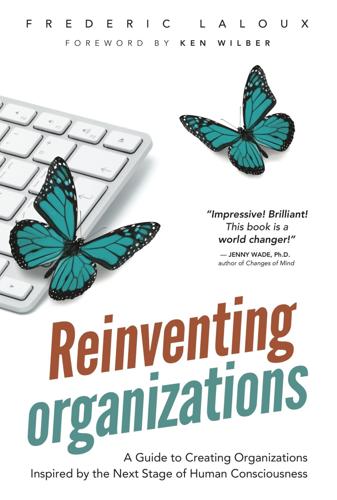
Reinventing Organizations: A Guide to Creating Organizations Inspired by the Next Stage of Human Consciousness
by
Frederic Laloux
and
Ken Wilber
Published 9 Feb 2014
Trying to put numbers on this would be arbitrary and ultimately meaningless. It would be equally pointless to try to peg a dollar value to the sense of vocation that has been restored to nurses. A common phrase heard within Buurtzorg teams is, “I have my job back.” Some numbers do testify to the level of job satisfaction: absenteeism for sickness is 60 percent lower at Buurtzorg and turnover 33 percent lower than in traditional (Orange) nursing organizations. Nurses at traditional organizations are leaving in droves to join Buurtzorg, which has gone from a start-up with 10 nurses in late 2006 to a point in 2013 at which it employs two-thirds of all neighborhood nurses in the Netherlands.
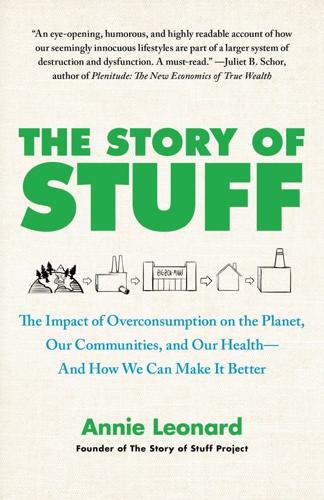
The Story of Stuff: The Impact of Overconsumption on the Planet, Our Communities, and Our Health-And How We Can Make It Better
by
Annie Leonard
Published 22 Feb 2011
Immediately the root cause of the problem (faulty machine, sick worker, bad design) would be investigated and fixed; this kind of troubleshooting is way more cost-effective than waiting until an inspector at the tail end of the assembly line finds flaws in the finished products. This innovation is credited for giving workers a greater sense of responsibility and job satisfaction, although it led to some workers accusing one another of “speeding up the line” and negated many of the pro-worker concessions that the labor movement had won in prior generations’ struggles.3 Over the years, lean manufacturing has gotten uglier. Manufacturers analyzed assembly line production ad nauseam to figure out every possible way to cut any expense that didn’t add value to the end product.

The Streets Were Paved With Gold
by
Ken Auletta
Published 14 Jul 1980
They don’t want to go into the field. People spend the day here and go home to the suburbs. There’s no identification with the city, no sense of mission.” This affliction, and others, are not unique to New York. But New York helps crystallize many of the questions confronting America. Can we inspire worker job satisfaction for routine jobs? How do we win consent for long-term decisions which violate the short-term interests of constituent groups? Do we know how to cope with economic decline? With resources that expand more slowly than our expectations? Will waste and inefficiency rob government of its public support?

Eloquent JavaScript: A Modern Introduction to Programming
by
Marijn Haverbeke
Published 15 Nov 2018
Even writing simple programs required much cleverness and discipline. Complex ones were nearly inconceivable. Of course, manually entering these arcane patterns of bits (the ones and zeros) did give the programmer a profound sense of being a mighty wizard. And that has to be worth something in terms of job satisfaction. Each line of the previous program contains a single instruction. It could be written in English like this: Store the number 0 in memory location 0. Store the number 1 in memory location 1. Store the value of memory location 1 in memory location 2. Subtract the number 11 from the value in memory location 2.
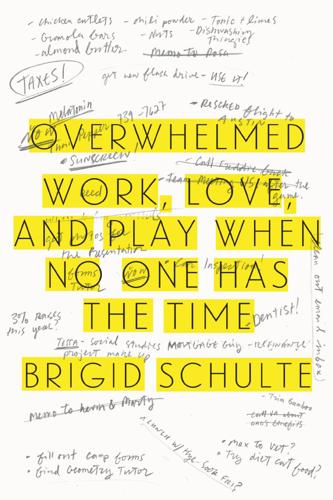
Overwhelmed: Work, Love, and Play When No One Has the Time
by
Brigid Schulte
Published 11 Mar 2014
The other group worked forty hours, took full vacations, and coordinated time off and after-hours on-call time so clients’ needs could be covered but people could regularly, predictably, and without guilt totally unplug from the office. Which group produced better work? The team with time off, not surprisingly, reported higher job satisfaction and better work-life balance. But they also increased learning, improved communication with their team, worked more efficiently, and were ultimately more productive than their ideal worker colleagues.57 Other studies have found that employees who take full vacations are not only more likely to stay with the firm but also receive higher performance reviews,58 and that workers are not only more creative but that turning off the constant barrage of e-mails and the ideal worker requirement to respond to them immediately enables people to concentrate and get more done with less stress.59 * * * So given the weight of evidence against the ideal worker, that he isn’t, in fact, the best worker, why is he so hard to shake?

Masters of Management: How the Business Gurus and Their Ideas Have Changed the World—for Better and for Worse
by
Adrian Wooldridge
Published 29 Nov 2011
In “the assembly-line mentality,” he said, “the more efficient a worker is, the more machine-like and the less human he is.”10 Drucker charged that the monotony of assembly-line production actually made it an inefficient process—partly because the line had to adjust to the speed of the slowest member and partly because workers never got any job satisfaction from seeing the finished product. This enthusiasm for self-management was ahead of its time. Nowadays, team-manufacturing techniques are commonplace, and many companies are handing more power to their workers. When Japanese carmakers set up shop in Britain in the 1980s and told Geordie factory workers that they were supposed to think as well as rivet, weld, and hammer, many of Britain’s car bosses scoffed at the foreigners’ naïveté.

The Lonely Century: How Isolation Imperils Our Future
by
Noreena Hertz
Published 13 May 2020
Joel Wong et al., ‘Meta-Analyses of the Relationship Between Conformity to Masculine Norms and Mental Health-Related Outcomes’, Journal of Counseling Psychology 64, no. 1 (2017), 80–93, http://dx.doi.org/10.1037/cou0000176; Mark Rubin et al., ‘A confirmatory study of the relations between workplace sexism, sense of belonging, mental health, and job satisfaction among women in male-dominated industries’, Journal of Applied Social Psychology 49, no. 5 (2019), 267–282, https://doi.org/10.1111/jasp.12577. 43 See for example on declining attendance to religious service: Lydia Saad, ‘Catholics’ Church Attendance Resumes Downward Slide’, Gallup News, 9 April 2018, https://news.gallup.com/poll/232226/church-attendance-among-catholics-resumes-downward-slide.aspx; ‘In U.S., Decline of Christianity Continues at Rapid Pace’, Pew Research Center, 17 October 2019, https://www.pewforum.org/2019/10/17/in-u-s-decline-of-christianity-continues-at-rapid-pace/; The Church of England Research and Statistics, ‘Statistics for Mission 2018’, Research and Statistics 2019, https://www.churchofengland.org/sites/default/files/2019-10/2018StatisticsForMission.pdf; for other European countries, see Philip S.
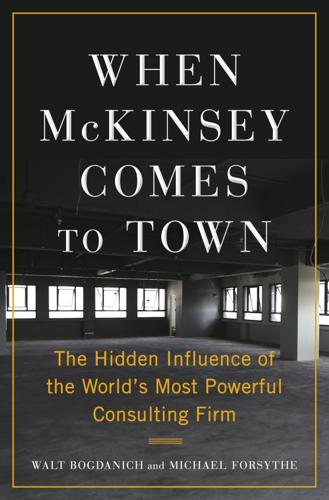
When McKinsey Comes to Town: The Hidden Influence of the World's Most Powerful Consulting Firm
by
Walt Bogdanich
and
Michael Forsythe
Published 3 Oct 2022
He made the point of saying that he was a registered Democrat and “wondered if this [ICE] was an agency I wanted to serve.” Back in the Obama administration, he said, McKinsey had been hired by ICE to help improve a deeply demoralized institution that consistently ranked near the bottom in a survey ranking job satisfaction in federal agencies. Barriball and his colleagues were exploring ways for ICE to recruit better people and to stop being “absolutely gouged by their vendors,” especially the private prison companies that housed so many detainees. McKinsey had never advocated for lower-quality food for detainees, he claimed.

European Spring: Why Our Economies and Politics Are in a Mess - and How to Put Them Right
by
Philippe Legrain
Published 22 Apr 2014
Now, many more are in a funk; some have sunk into despair or resignation. People assume that computers and the Chinese will take their jobs. Most Europeans expect the next generation to have a worse life in nearly every respect: less time with their families, less comfortable housing, less job security, less job satisfaction and less secure pensions. To paraphrase Hobbes, they think their children’s lives will be “solitary, poor, nasty, brutish” (and long). A mere 16 per cent of Spaniards, 11 per cent of French and 7 per cent of Italians think young Europeans will have more opportunities than their parents’ generation to earn a high salary; Britons (24 per cent) and Germans (26 per cent) are scarcely more optimistic.763 This negativity is so deeply ingrained that people scarcely notice it any more.

SuperBetter: The Power of Living Gamefully
by
Jane McGonigal
Published 14 Sep 2015
Hayes et al., “Acceptance and Commitment Therapy: Model, Processes and Outcomes,” Behaviour Research and Therapy 44, no. 1 (2006): 1–25; Neharika Chawla and Brian Ostafin, “Experiential Avoidance as a Functional Dimensional Approach to Psychopathology: An Empirical Review,” Journal of Clinical Psychology 63, no. 9 (2007): 871–90; Frank W. Bond and David Bunce, “The Role of Acceptance and Job Control in Mental Health, Job Satisfaction, and Work Performance,” Journal of Applied Psychology 88, no. 6 (2003): 1057; and Jodie Butler and Joseph Ciarrochi, “Psychological Acceptance and Quality of Life in the Elderly,” Quality of Life Research 16, no. 4 (2007): 607–15. 6. Martine Fledderus, Ernst T. Bohlmeijer, and Marcel E. Pieterse, “Does Experiential Avoidance Mediate the Effects of Maladaptive Coping Styles on Psychopathology and Mental Health?

Politics on the Edge: The Instant #1 Sunday Times Bestseller From the Host of Hit Podcast the Rest Is Politics
by
Rory Stewart
Published 13 Sep 2023
At any rate, it was never his job to listen to the kind of challenge I was posing or to determine whether what we were doing in Afghanistan was right or wrong. Part Two 6. District Commissioner for Cumbria (2010–2012) ‘Forget the MPs, and spend your time in Cumbria,’ said my father who had served in government for thirty-five years. ‘Parliament is a talking shop, darling, full of windbags. The constituency is where you’ll get the job satisfaction. Get things done. Be the district commissioner for Cumbria and bugger the whips.’ I was tempted to agree. The more inert, depressing and shallow Parliament and government seemed, the more I was drawn to the truth and potential of local communities. The level of community involvement in Cumbria was staggering – almost every single person in my local village of Bampton was involved in the theatre and village-hall committees, or the half-marathon, or the library, or the church.

WTF?: What's the Future and Why It's Up to Us
by
Tim O'Reilly
Published 9 Oct 2017
This complexity, and its dismissal based on economic theory, came to mind last year in a conversation I had with Uber’s economists. I was arguing that just as Google’s search algorithm takes many factors into account in producing the “best” results, Uber would benefit if its algorithms took drivers’ wages, job satisfaction, and turnover into account, and not just passenger pickup time, which it currently uses as its fitness function. (Uber aims to have enough drivers on the road in a given location that the average pickup time is no more than three minutes.) The economists explained to me that Uber’s wages were, by definition, optimal, because they simply represent the equilibrium point between supply and demand, one of the most basic ideas of free market economics.

Inside British Intelligence
by
Gordon Thomas
Did she have ethical views (i.e., moral objections to the job)? Did she have any views on trade unions? Would she refuse to join one or take part in any strike action? She had answered truthfully: She did have an interest in politics; she was not a member of any union; salary was not a prime consideration, it was job satisfaction that mattered; she had no ethical views; she had never met anyone with links to Communism, nor had she been approached by any foreign intelligence agent. Finally the questions stopped. She had looked at the interviewer. “Could you tell me who I would be working for?” The woman had reached for a document on the desk.

Peggy Seeger
by
Jean R. Freedman
“I'd die if I was not in this work,” said one laborer. “I still prefer the muck and the dirt and the grease and everything to being inside in a factory.”15 However, positive comments were far from universal. Many of the workers interviewed did not choose the work because of personal preference or job satisfaction; they chose it because nothing else was available. Unemployment throughout the British Isles, in many parts of Europe, and as far away as India brought together a multinational, polyglot workforce that worked until the job was finished and lived together in hostels and dormitories. Living away from home was one of the chief causes of complaint from the workers.

Site Reliability Engineering: How Google Runs Production Systems
by
Betsy Beyer
,
Chris Jones
,
Jennifer Petoff
and
Niall Richard Murphy
Published 15 Apr 2016
On the flip side, individual SREs, as well as the broader SRE organization, also benefit from SRE-driven software development. Fully fledged software development projects within SRE provide career development opportunities for SREs, as well as an outlet for engineers who don’t want their coding skills to get rusty. Long-term project work provides much-needed balance to interrupts and on-call work, and can provide job satisfaction for engineers who want their careers to maintain a balance between software engineering and systems engineering. Beyond the design of automation tools and other efforts to reduce the workload for engineers in SRE, software development projects can further benefit the SRE organization by attracting and helping to retain engineers with a broad variety of skills.
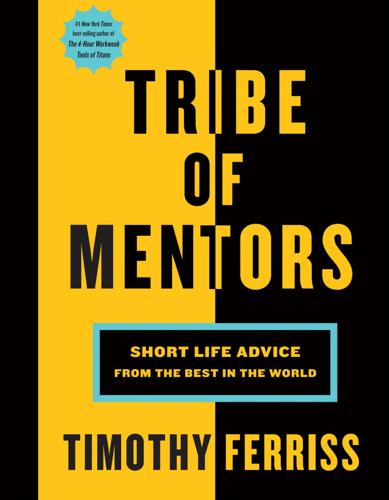
Tribe of Mentors: Short Life Advice From the Best in the World
by
Timothy Ferriss
Published 14 Jun 2017
Job A is more prestigious and higher-paying, but Job B has a more supportive culture and you’ll have more freedom to choose your projects. What you should ask yourself is, “Is there some way for me to get additional information that would settle this question?” Maybe you could talk to people at the respective companies about their job satisfaction, or you could look at what former employees of A and B go on to do. But maybe you’ve done stuff like that already, and the answers didn’t help settle it for you. If that’s the case—if there’s no additional information you could easily get that would make the “right choice” clear—then you should relax and just pick one without worrying anymore.
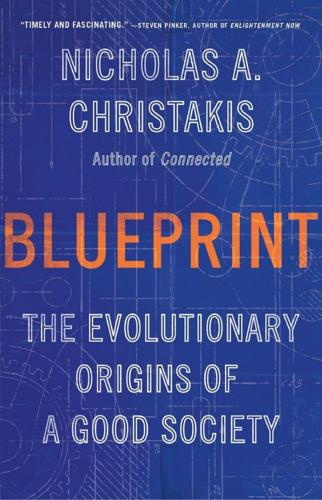
Blueprint: The Evolutionary Origins of a Good Society
by
Nicholas A. Christakis
Published 26 Mar 2019
In a different study of winter-over crews, when they were still all-male (1967, 1968, and 1969), altercations involving “strong verbal disagreements, an exchange of threats, or the exchange of physical blows” occurred every year, often between beakers and trades. K. Natani, J. T. Shurley, and A. T. Joern, “Inter-Personal Relationships, Job Satisfaction, and Subjective Feelings of Competence: Their Influence upon Adaptation to Antarctic Isolation,” in O. G. Edholm and E. K. E. Gunderson, eds., Polar Human Biology, (Chichester UK: William Heinemann, 1973), pp. 384–400. 115. Palinkas, “Going to Extremes.” 116. One study of ninety-three people from New Zealand who had wintered over during one of five years in the late 1960s found that 40 percent spontaneously noted the importance of “singing and games.”

Not a Good Day to Die: The Untold Story of Operation Anaconda
by
Sean Naylor
Published 1 Mar 2005
Unlike McClellan, where he had worked in a large headquarters, in Germany he was assigned as the supply clerk for a mechanized infantry company, a job that entailed a much faster pace than he was accustomed to. “I wasn’t really used to getting up early in the morning and doing PT,” he said. “I wasn’t used to going to the field.” But he decided he liked the more soldierly approach of what he termed “the go-go-go Army.” A tour in Bosnia opened Perez’s eyes to the possibility that greater job satisfaction could be found in the Army, but outside the supply corps. His company was undermanned, so he was pressed into service on raids as a makeshift infantryman. He noticed the sergeants in a combat unit had a responsibility he had never experienced in his “soft skill” job, and the infantry platoons had a cohesiveness missing from the noncombat organizations he had observed.
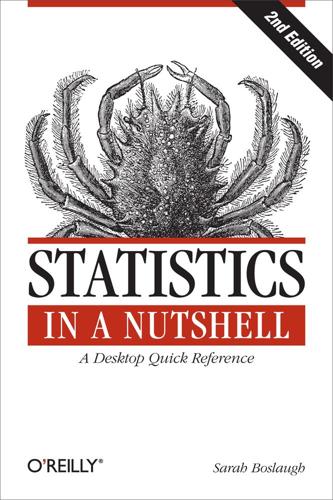
Statistics in a Nutshell
by
Sarah Boslaugh
Published 10 Nov 2012
The value of McNemar’s chi-square is 2.00, which is not above the critical value for chi-square with one degree of freedom, at alpha = 0.05, so we do not have evidence sufficient to reject the null hypothesis that the political affiliations of spouses are independent of the affiliation of the other spouse. Figure 5-53. Calculating McNemar’s test Problem Which of Kendall’s tau statistics would be appropriate for the data in Figure 5-54? Figure 5-54. Educational level and job satisfaction Solution Kendall’s tau-c should be used because the table is not square (it has four rows and three columns). Problem What is the argument against analyzing Likert and similar attitude scales as interval data? Solution There is no natural metric for constructs such as attitudes and opinions.

The Simple Living Guide
by
Janet Luhrs
Published 1 Apr 2014
“This way an employee’s own performance is tied directly to the profit of the company, and the bonus system is funded by those profits,” Jim explains. With OBM, companies not only become more profitable, but morale is improved as well. Why? Because every person in the company has a say in the business. They all are empowered to make suggestions and take steps to implement their ideas. They enjoy greater job satisfaction by becoming educated and trusted with the finances of the company. All of the books, except individual salaries, are open to all. Because employees share in the increased profit, they earn more money for putting in the same number of hours. Getting Paid Many people confuse simple living with living in poverty.

The Defence of the Realm
by
Christopher Andrew
Published 2 Aug 2010
In April 2000 a ‘Staff Opinion Survey’, conducted for the first time by an external consultant, produced ‘some of the highest scores we have seen in the ten years we have been involved with staff surveys and this applies to both the public and private sector . . .’63 In recent years only the romantic publisher Mills and Boon had registered even higher job satisfaction ratings in surveys carried out by the consultant.64 Collaboration with SIS was closer than at any time since Cumming and Kell sat in the same office in the Drew detective agency in 1909. In the spring of 2001 the Security Service carried out an ‘audit’ of relations with SIS among its nineteen section heads.
…
The aloof management style of a number of the director generals selected by ministers and Whitehall committees during the Cold War did little to diminish the sociability of the Service as a whole. Despite the dip in morale produced by the post-Cold War cutbacks, twenty-firstcentury Staff Opinion Surveys recorded some of the highest job-satisfaction ratings in either the public or the private sector. During its first century the Security Service had to reorient itself repeatedly to new threats to national security which, in most cases, were difficult, if not impossible, to foresee. For eighty years its changing priorities were largely determined by unprecedented upheavals in the political systems of the two largest continental powers, Germany and Russia.

Tools of Titans: The Tactics, Routines, and Habits of Billionaires, Icons, and World-Class Performers
by
Timothy Ferriss
Published 6 Dec 2016
Derek wrote a book called Reasons and Persons, which Will considers one of the most important books written in the 20th century. “Follow Your Passion” Is Terrible Advice “I think it misconstrues the nature of finding a satisfying career and satisfying job, where the biggest predictor of job satisfaction is mentally engaging work. It’s the nature of the job itself. It’s not got that much to do with you. . . . It’s whether the job provides a lot of variety, gives you good feedback, allows you to exercise autonomy, contributes to the wider world—Is it actually meaningful? Is it making the world better?

Collapse
by
Jared Diamond
Published 25 Apr 2011
The hardrock mining industry is the prime example of a business whose short-term favoring of its own interests over those of the public proved in the long term self-defeating and have been driving the industry into extinction. This sad outcome is initially surprising. Like the oil industry, the hardrock mining industry too stands to benefit from clean environmental policies, through lower labor costs (less turnover and absenteeism) resulting from higher job satisfaction, lower health costs, cheaper bank loans and insurance policies, community acceptance, less risk of the public blocking projects, and the relative cheapness of installing state-of-the-art clean technology at a project's outset as compared to having to retrofit old technology as environmental standards become more stringent.

The Singularity Is Near: When Humans Transcend Biology
by
Ray Kurzweil
Published 14 Jul 2005
Not every caller is satisfied with the ability of these virtual agents to get the job done, but most systems provide a means to get a human on the line. Companies using these systems report that they reduce the need for human service agents up to 80 percent. Aside from the money saved, reducing the size of call centers has a management benefit. Call-center jobs have very high turnover rates because of low job satisfaction. It's said that men are loath to ask others for directions, but car vendors are betting that both male and female drivers will be willing to ask their own car for help in getting to their destination. In 2005 the Acura RL and Honda Odyssey will be offering a system from IBM that allows users to converse with their cars.208 Driving directions will include street names (for example, "turn left on Main Street, then right on Second Avenue").

The Meritocracy Trap: How America's Foundational Myth Feeds Inequality, Dismantles the Middle Class, and Devours the Elite
by
Daniel Markovits
Published 14 Sep 2019
Rhode, “Balanced Lives for Lawyers,” Fordham Law Review 70 (2002): 2212, citing Family and Work Institute, National Study of the Changing Workplace, a study involving some twenty-eight hundred workers that found that workplace flexibility and family support was the second-most-significant factor in job satisfaction, after job quality. Nearly two-thirds of all workers would reduce their workweek by an average of ten hours. Steven Ginsberg, “Raising Corporate Profits by Reaching Out to Families,” Washington Post, April 19, 1998, H7; Sue Shellenbarger, “Study of U.S. Workers Finds Sharp Rise Since 1992 in Desire to Reduce Hours,” Wall Street Journal, April 15, 1998, A10.
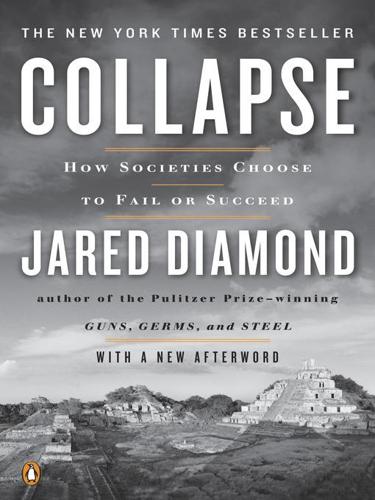
Collapse: How Societies Choose to Fail or Succeed
by
Jared Diamond
Published 2 Jan 2008
The hardrock mining industry is the prime example of a business whose short-term favoring of its own interests over those of the public proved in the long term self-defeating and have been driving the industry into extinction. This sad outcome is initially surprising. Like the oil industry, the hardrock mining industry too stands to benefit from clean environmental policies, through lower labor costs (less turnover and absenteeism) resulting from higher job satisfaction, lower health costs, cheaper bank loans and insurance policies, community acceptance, less risk of the public blocking projects, and the relative cheapness of installing state-of-the-art clean technology at a project’s outset as compared to having to retrofit old technology as environmental standards become more stringent.
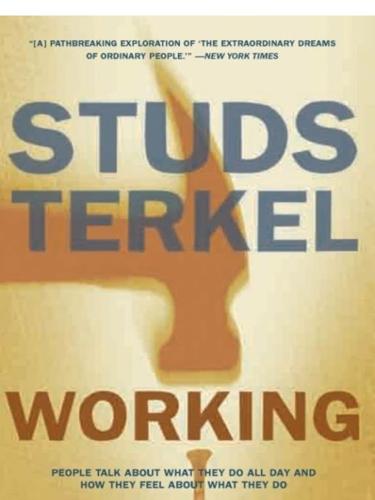
Working: People Talk About What They Do All Day and How They Feel About What They Do
by
Studs Terkel
Published 1 Jan 1974
Terkel found, work was a search, sometimes successful, sometimes not, “for daily meaning as well as daily bread.” The oral histories in Working are wistful dispatches from a distant era. The early. 1970s were the waning days of the old economy, when modern management practices and computers were just beginning to transform the American workplace. In the last thirty years, productivity has soared, but job satisfaction has plummeted. It is hard to read Working without thinking about what has gone wrong in the workplace. Mr. Terkel’s ragtag collection of little-guy monologues was a runaway bestseller. Part of its appeal was the unusual, occasionally illicit glimpses it offered into the ways of the world. “If you work nights and it’s real quiet, I don’t think there’s an operator who hasn’t listened in on calls,” a switchboard operator says.

Debt of Honor
by
Tom Clancy
Published 2 Jan 1994
Can I call you guys now?" "Honey, we're fine, but there's a problem here." How the hell to explain this? he wondered. Rachel Oreza Chandler was a prosecuting attorney in Boston, actually looking forward to leaving government service and becoming a criminal lawyer in private practice, where the job satisfaction was rarer, but the pay and hours were far better. Approaching thirty, she was now at the stage where she worried about her parents in much the same way they'd once worried about her. There was no sense in worrying Rachel now, he decided. "Could you get a phone number for me?" "Sure, what number?"